Silicon Valley startup
description: a new business venture based in Silicon Valley, often in the tech or digital sector, aiming for rapid growth and, frequently, a lucrative exit strategy
324 results
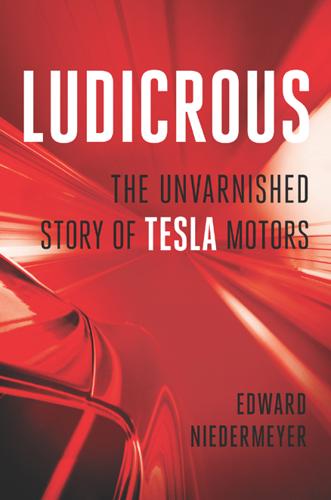
Ludicrous: The Unvarnished Story of Tesla Motors
by
Edward Niedermeyer
Published 14 Sep 2019
Though the worst—2008’s “carmageddon”—was still ahead, America’s increasingly ambivalent attitude toward its once-mighty automakers fueled the hope that Silicon Valley’s startup ethos might make for a more innovative, environmentally friendly, and ultimately successful car company. The Roadster did prove that a high-tech startup could identify new opportunities that the established automakers were largely ignoring, develop new intellectual property, and design a cutting-edge car. To most of the public, who relate to cars entirely as consumer goods, that was enough to make Silicon Valley’s first automotive startup look like a potential world-beater. But behind the scenes, Tesla was proving that high-tech startup culture was an extremely poor match for the kinds of work that actually determine success and failure in the car business.
…
It was a vibrant and unpretentious environment, whose layout and youthful staff spoke to the flat structure and creative collaboration of a software startup. Compared to the aging, hermetically sealed executive suite at the top of Ford’s “glass house” headquarters, or GM’s imposing C-Suite offices high above downtown Detroit, Tesla’s headquarters were as different as a Model S was from an F-150. But as alluring as the idea of a Silicon Valley startup automaker was, I had learned the hard way that the freshest and most intellectually appealing approaches to the car business are often the most troubled when it came to fundamentals. Earlier in my career, I had become fascinated by an Israeli startup called Project Better Place, which had the most daring and unique strategy I had ever heard.
…
To live up to its ambition of selling affordable, mass-market electric cars, Tesla would have to find a way to balance its well-known strengths with these very different and often-overlooked challenges. These challenges have persisted even in the present day. First, at its heart, Tesla is driven by innovation and design, like so many Silicon Valley startups. But the automotive business is, at its core, a low-margin, manufacturing-based industry. From the start, Tesla rejected the values that are needed to succeed in this sort of enterprise, and it shows no signs of changing, even now. A disciplined, process-driven culture, not more creativity and innovation, is the key to overcoming this challenge.
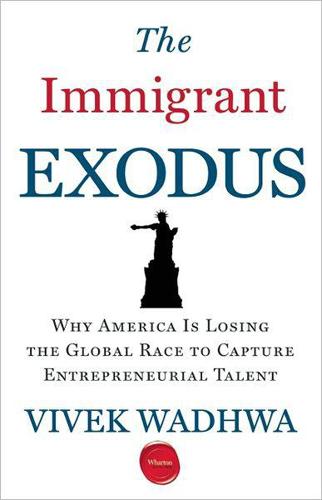
The Immigrant Exodus: Why America Is Losing the Global Race to Capture Entrepreneurial Talent
by
Vivek Wadhwa
Published 1 Oct 2012
The findings from our 2007 report “America’s New Immigrant Entrepreneurs,” showed a rapid rise in the number of immigrant entrepreneurs even over the previous decade.21 In our survey, more than half (52.4%) of Silicon Valley startups had one or more immigrants as a key founder, compared with the California average of 38.8%. A comparison with Saxenian’s 1999 findings showed that the percentage of firms with Indian or Chinese founders had increased from 24% to 28%—despite the overall pie getting bigger, with there being far more tech startups. Indian immigrants outpaced their Chinese counterparts as founders of engineering and technology companies in Silicon Valley. Saxenian reported that 17% of Silicon Valley startups from 1980 to 1998 had a Chinese founder and 7% had an Indian founder.
…
Saxenian reported that 17% of Silicon Valley startups from 1980 to 1998 had a Chinese founder and 7% had an Indian founder. We found that from 1995 to 2005, Indians were key founders of 13.4% of all Silicon Valley startups, and immigrants from China and Taiwan were key founders in 12.8%. The outsized impact of Indian founders was logical. Between 1990 and 2000, the population of Indian scientists and engineers (S&E) in Silicon Valley grew by 646% (while the total foreign-born S&E workforce grew by 246% and the region’s total population of S&E, both native and foreign-born, grew by only 103%). The overall percentage of immigrant-founded companies in Silicon Valley almost perfectly matched the population at large.
…
Silicon Valley is what everyone has tried to re-create, but this did not spring forth from tax breaks or targeted incentives to industry. Rather, Silicon Valley evolved because a critical mass of maverick thinkers and tinkerers came together from all over the world. It is this diversity and people-to-people Silicon Valley magic that Start-up Chile has tried to create. Thus far, Start-Up Chile has surpassed expectations. Our biggest concern was that few entrepreneurs, other than those from similar or even poorer Latin American countries, would agree to relocate their companies so distant from the existing nexuses of innovation to a remote place like Chile.

The Startup Way: Making Entrepreneurship a Fundamental Discipline of Every Enterprise
by
Eric Ries
Published 15 Mar 2017
Most large companies are missing this fundamental piece of the corporate innovation puzzle. Neglect his advice at your peril.” —Thales S. Teixeira, Harvard Business School “People tend to associate the term ‘startup’ with a uniqueness that assumes a culture of creativity, innovation, and continuous learning. But as Eric Ries shows, you don’t have to fit the mold of a typical Silicon Valley startup to prioritize learning over perfection and create a culture where making mistakes is not just accepted, but encouraged. The Startup Way presents a new vision for what a modern company can, and should, look like.” —Reshma Saujani, founder of Girls Who Code “In The Startup Way, Eric Ries applies the secrets of Silicon Valley to established companies in every industry.
…
If it hurts, you’re not doing it wrong, you’re doing it right.”3 In this part of the book, we’ll talk about what it means to become a modern company, and the entrepreneurial structure required to survive and embody a long-term vision for the future. Implementing that vision takes patience and dedication—transformation is never a quick fix—but organizations that operate this way have the greatest chance at continued expansion. We’ll walk through the elements of startup culture and work that have made Silicon Valley and other startup hubs such dynamic places, as well as the lessons and theories from the past that form the foundation on which to build a new way of thinking about management. Finally, we’ll synthesize these ideas into the Startup Way. CHAPTER 1 RESPECT THE PAST, INVENT THE FUTURE: CREATING THE MODERN COMPANY When I first began working with GE years ago, I sat down for a conversation with CEO Jeff Immelt.
…
Not only that, but the entrepreneurs who lead these startups require a distinct career path with its own performance development standards of best practices and metrics for success, including mentorship in the high-impact techniques that accelerate growth. Figuring this out has been part of the secret sauce of Silicon Valley.1 Integrate Startups into the Parent Organization The second responsibility of the entrepreneurial function is to manage the problem of success. Although I acknowledge the fact that most startups fail, the hardest part for most organizations is knowing what to do when they succeed. A startup within an established organization that is limping along is only moderately threatening to the established order.
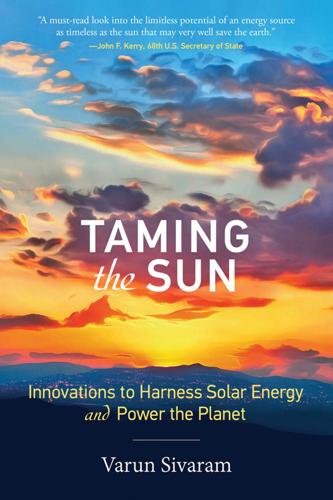
Taming the Sun: Innovations to Harness Solar Energy and Power the Planet
by
Varun Sivaram
Published 2 Mar 2018
But it is alive and well for memory chips, as I’ve learned from my father—the technology chief at a major chipmaker—who recently unveiled a new flash memory chip design that is actually beating Moore’s Law and is already in your iPhone.)2 Recognizing the value of different perspectives, I’ve eagerly sought out more over the last decade. In addition to my time in academia and in Los Angeles, I’ve worked at two Silicon Valley start-ups, consulted for large energy companies, advised U.S. federal and state officials, and visited burgeoning markets for solar power all over the world. There, too, I’ve found contradictions. Scientists despair that commercial solar technology is stagnating, whereas the industry trumpets its progress.
…
Green, “Don’t Link Carbon Markets,” Nature 543, no. 7646, (March 21, 2017), http://www.nature.com/news/don-t-link-carbon-markets-1.21663. Chapter 2 Coming of Age In the fall of 2007, I was torn between two offers I couldn’t pass up. One was to attend Stanford University, my dream school as far back as I could remember. The other offer was to stay on as a process engineer at a Silicon Valley start-up called Nanosolar that was going to change the world. The chief executive officer, a visionary entrepreneur from Germany named Martin Roscheisen, put his arm around me and told me in his booming voice, “Varun, it’ll be just like Xerox PARC.” He was referring to the legendary Palo Alto research park where the modern computer was invented.
…
Then, as Japan and Germany took the lead from the United States in supporting their domestic solar industries, solar PV started to gain traction in the early years of the twenty-first century. China’s solar industry had modest beginnings, but when it finally got going, its competitors stood no chance. Even though the solar industry is finally in the ascendant, it lost a vital element when Silicon Valley’s start-ups failed. The surviving firms harbor no illusion that solar technology might change fundamentally. Rather, in each segment of the industry, all the way from upstream manufacturing to downstream deployment, firms are laser-focused on cutting costs rather than disrupting the current order. This approach looks set to fuel continued growth in the coming years, but it is not at all conducive to the innovation the industry needs to pursue to brighten solar’s long-term prospects.
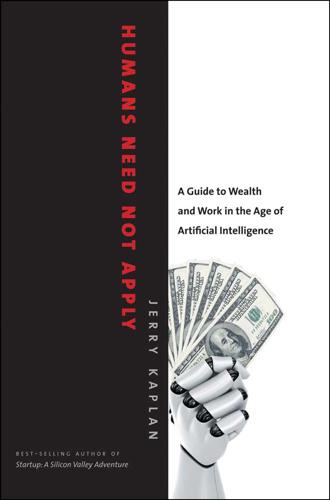
Humans Need Not Apply: A Guide to Wealth and Work in the Age of Artificial Intelligence
by
Jerry Kaplan
Published 3 Aug 2015
I doubt that’s much comfort to Elvia Lopez, a kindly thirty-one-year-old Mexican immigrant who picks strawberries in Santa Maria, California (who was profiled in the Los Angeles Times).22 Agrobot isn’t alone in tackling this opportunity. A Japanese competitor claims that its technology can reduce strawberry picking time by 40 percent.23 Blue River Technologies, a Silicon Valley venture-funded startup headed by a Stanford graduate, is developing robots that can weed. To quote from their marketing materials: “We are creating systems that can distinguish crops from weeds in order to kill the weeds without harming the crops or the environment. Our systems use cameras, computer vision, and machine learning algorithms.”24 Note that the coming army of mechanical farmworkers doesn’t have to be faster than the workers they replace because, like autonomous vehicles, they can work in the dark and so aren’t limited to operating in daylight.
…
Beyond the picking and packing of orders, as I’ve described above, there’s the loading and unloading of packages. This is done by human workers now because it takes human judgment to decide how to grasp and stack randomly shaped boxes in delivery vehicles and shipping containers. But another Silicon Valley startup, Industrial Perception, Inc., is changing all that. Its robots can peer into a truck, select an item, then pick it up. As it quipped on its website (before the site went dark after the company was acquired by Google in 2013), Industrial Perception is “providing robots with the skills they’ll need to succeed in the economy of tomorrow.”25 Sex workers.
…
Rather than wait for someone to get a job before starting a Social Security account, the government could offer to add high-PBI stocks and bonds to the portfolio of people who volunteer for public-service work such as caring for the elderly, cleaning up parks, counseling troubled teens, distributing health education pamphlets, and the like. This could apply to retirees as well as those idled through unemployment or those who simply have some free time to spare. To encourage commitment and continuity, the government could take a page out of the Silicon Valley startup playbook: restricted stock vesting. You sign up for some public-service activity and are granted a pool of shares that you don’t actually own yet. As you work, these shares become yours (vest) over time. This way, you are always cognizant of the consequences of quitting prematurely, and you have a goal and scorecard with which to monitor your progress.

Coders: The Making of a New Tribe and the Remaking of the World
by
Clive Thompson
Published 26 Mar 2019
to focus while coding: Rhett Jones, “Lawsuit: VR Company Had a ‘Kink Room,’ Pressured Female Employees to ‘Microdose,’ ” Gizmodo, May 15, 2017, accessed August 19, 2018, https://gizmodo.com/lawsuit-vr-company-had-a-kink-room-pressured-female-e-1795243868. The lawsuit was later settled out of court: Marisa Kendall, “Silicon Valley Virtual Reality Startup Settles ‘Kink Room’ Lawsuit,” The Mercury News, September 7, 2017, accessed October 7, 2018, https://gizmodo.com/lawsuit-vr-company-had-a-kink-room-pressured-female-e-1795243868. The lawsuit was later settled out of court: Marisa Kendall, “Silicon Valley Virtual Reality Startup Settles ‘Kink Room’ Lawsuit,” The Mercury News, September 7, 2017, accessed October 7, 2018, https://www.mercurynews.com/2017/09/07/san-francisco-virtual-reality-startup-settles-kink-room-lawsuit/.
…
The odds are high the “problem” they’ll decide needs most urgently to be solved is the re-creation of the conveniences of dorm and home-life—where everyone prepared their meals, cleaned up after them, and ferried them around in vehicles. As my friend Clara Jeffery, the editor in chief of Mother Jones noted in a tweet, “So many Silicon Valley startups are about dudes wanting to replicate mom.” It’s also a symptom of how coding has evolved. To be sure, some of these services are popular outside the coterie of coddled recent grads. Many people—the ones wealthy enough to pay for it, certainly—are happy to pay to have the pain-in-the-ass parts of life abstracted away.
…
But even Torvalds decided, at long last, that his behavior was a problem for the Linux community: In September 2018, he temporarily stepped down as benevolent dictator to “get some assistance on how to understand people’s emotions and respond appropriately,” as he wrote. One could reply, as some coders do, that the low proportion of women and minorities in projects like this—or at Silicon Valley startups like the early stage PayPal—is also just a function of meritocracy. Maybe women are just inherently less good at the discipline. The short answer to that is no. The longer answer is something I take up in the next chapter, “The ENIAC Girls Vanish.” Coders and techies, certainly in the US, have a reputation for leaning libertarian—which we could define here very loosely as believing that each person is responsible for their own fate, that government regulations generally stifle liberty, and that society is best served by letting the best rise by their own efforts.

Frugal Innovation: How to Do Better With Less
by
Jaideep Prabhu Navi Radjou
Published 15 Feb 2015
Properly programming thermostats can save up to 20% in heating and cooling costs, yet over 85% of us never do so. This is often because we are intimidated by their complicated interfaces, some of which seem to need a PhD to crack. The electric thermostat was invented by Warren Johnson of Wisconsin in 1883, but its design has not changed much since. Until, that is, 2011 when Nest Labs, a Silicon Valley start-up, launched its “learning thermostat”. This Wi-Fi-enabled device learns and monitors the user’s habits, schedules and temperature preferences. With this information and real-time data from its integrated sensors, which track humidity, activity and light, the Nest device adjusts itself, for instance by reducing heating when the sun is out or turning off the cooling when no one is at home.
…
The cost-effectiveness of the approach was comparable to traditional energy conservation programmes, with annual savings of $300 million. DIY health care In coming decades, health-care costs in the West are poised to rocket because of ageing populations and the explosion of lifestyle-related and chronic diseases. To defuse this ticking time bomb, forward-thinking health providers – ranging from Silicon Valley start-ups to health maintenance organisations (HMOs) and health insurance companies – are collaborating with governments and employers to usher in the “consumerisation” of health care. This new trend aims to give individuals a more active role in managing their own health care, from seeking out providers to choosing treatments.
…
This only happens if the new model might significantly improve the bottom line. Changing a business model also requires investment, which must come with an attractive return. This analogy can help frugal producers convince customers to change their personal business model by showing them the relevant return on investment. For example, gThrive, a Silicon Valley start-up, offers precision agriculture services to farmers in drought-prone California. It sells gStakes, maintenance-free wireless sensors designed like a lightweight plastic ruler, which, when inserted in various parts of a field, frequently measure and track soil and environmental conditions (moisture, air temperature, sunlight).
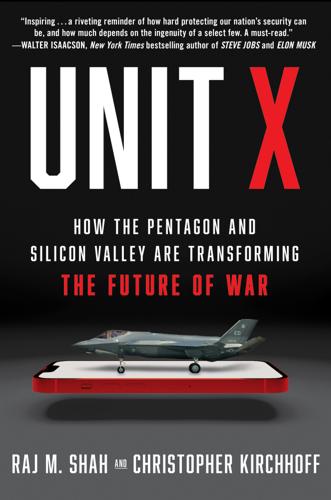
Unit X: How the Pentagon and Silicon Valley Are Transforming the Future of War
by
Raj M. Shah
and
Christopher Kirchhoff
Published 8 Jul 2024
“As the single buyer, it ordinarily has the power in the market relationship.” The economic term for this is monopsony, when a buyer controls all the demand. As with a monopoly, ordinary rules of a free market don’t apply. The buyer gets to call the shots. While this holds in defense markets, it’s the opposite in technology markets. When you look at Silicon Valley, startups are chasing the $25 trillion global market for consumer and enterprise technology. The Pentagon’s $200 billion acquisition budget is a rounding error in their business plans, and an unattractive one at that. Not only do FAR-based contracts take eons to negotiate, but they impose obligations small firms can’t support.
…
Brown would be the first person in decades with a Silicon Valley background to oversee the Pentagon’s $200 billion procurement spend, the last being Secretary of Defense William Perry, who stepped down in 1997, and earlier, David Packard, cofounder of Hewlett-Packard. Brown’s job would essentially be to remake the entire Pentagon acquisition apparatus to work at DIU speed. The emphasis would be on open architectures and rapid iteration, and helping Silicon Valley startups compete on an equal footing with the defense primes. “When I was tapped for the assignment, I was over the moon,” Brown recalls. “The vetting process was ridiculous. Everything about your background, your character, your finances, whether my classic rock band had played songs with lyrics that could be embarrassing to the president.
…
Let’s do this. I’ll anchor your fund. Just make it work.” Securing an “anchor” investment from L3Harris, the fifth-largest prime defense contractor, with $17 billion in annual revenues, created great tailwinds. On its face the deal might seem counterintuitive. The primes were the companies that Silicon Valley startups were supposed to disrupt, right? But Kubasik understood the Silicon Valley maxim that it’s better to disrupt yourself than to let others do it for you. Investing funds into Shield Capital gave L3Harris a way to reap a return from the defense tech boom. But more important, it would help L3Harris stay on top of the latest innovations from the Valley and spot promising ways to collaborate with startups.

Power Play: Tesla, Elon Musk, and the Bet of the Century
by
Tim Higgins
Published 2 Aug 2021
But creating a car company was hard to pull off, to put it mildly. Eberhard was receiving similar pushback as he and his partners looked for money. Laurie Yoler, a friend and colleague at Packet Design who was well connected in the investor world, was setting them up with meetings around Silicon Valley. A startup typically began with some seed money—maybe from the founder’s own pocket or scraped together from friends and family, to show that the company had strong early support—before raising increasingly large rounds of funding. At each round, the founder gave up some ownership stake of the company as others bought in, and current investors either had to up their investment or else face dilution.
…
Personal electronics companies, such as Apple Inc., were recalling devices with lithium-ion batteries out of concern they could overheat and catch fire. In 2004 and 2005, Apple recalled more than 150,000 laptops—with batteries made by LG Chem. When LG Chem realized it had sold a large number of its batteries to a Silicon Valley startup that planned to use all of them for a single device—a car, as it happened—its legal department sent a letter demanding the cells be returned. The battery maker didn’t want to be associated with a potentially fiery experiment. Eberhard ignored the request. He had little choice. His bet that Tesla would be able to find a ready battery supplier was proving harder to cover than expected.
…
Eberhard cautioned Musk against being too definitive; issues with finding a battery supplier and uncertainty around the transmission had caused their former estimates of $80,000 to feel understated. He suggested being vague, for instance suggesting a price tag between $85,000 and $120,000. “I am nervous about $85k,” Eberhard told Musk, emphasizing the point. * * * — For the past three years, Tesla had been in “stealth mode,” a rite of passage for Silicon Valley startups as founders try to get their feet on the ground—raising initial money and hoping to avoid the harsh spotlight that magnifies the mistakes inevitably made during the early days of being a company. Coming out of stealth mode tends to have a familiar playbook, aimed at maximizing exposure, whether the end goal is raising more money or gaining customers.
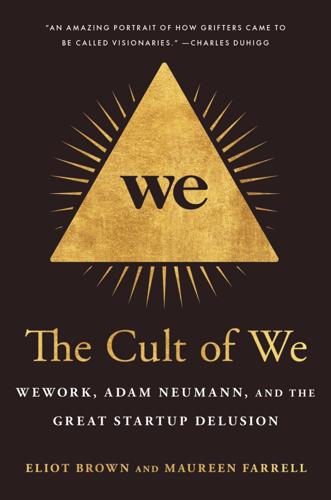
The Cult of We: WeWork, Adam Neumann, and the Great Startup Delusion
by
Eliot Brown
and
Maureen Farrell
Published 19 Jul 2021
It was a tantalizing prospect to join the Benchmark portfolio, an elite club of Silicon Valley tech startups. A hundred million dollars meant that Benchmark saw big things in WeWork. Neumann was getting the recognition—and the first taste of riches—that he had always craved. He took the deal. CHAPTER 7 Activate the Space Benchmark’s imprimatur—and the $15 million that accompanied it—imbued WeWork with a new swagger. The stamp of approval from the vaunted Silicon Valley moneymen infused the company with a sense of invincibility and the aura of a booming Silicon Valley–style startup. Employees at WeWork believed the concept of the workplace was about to be revolutionized, and WeWork was leading the way.
…
The same venture capital and mutual fund machine that had agreed to label WeWork a $10 billion tech enterprise rather than a modest-sized real estate firm was showering money across a legion of young Silicon Valley companies. These startups pledged to disrupt everything from mattresses to coffee, inflating valuations as red ink piled up. That monsoon of money trickled through everyday life in San Francisco, the new capital of Silicon Valley startups. The city quickly became a terrarium of money-losing startups that turned former jewelry and rug storage spots into buzzy offices with Ping-Pong tables and macchiato stations.
…
After nearly a decade in business, the company wasn’t profitable—or anywhere close. It was losing more than $3,000 a minute, on average, and had lost more than $1.6 billion the prior year. But Uber, Airbnb, and the mattress website Casper were all unprofitable. Losses were par for the course for buzzy Silicon Valley companies. Startups didn’t always grow and spend like this. But a decade-long deluge of money into Silicon Valley had established new cultural norms. Excess was in. For investors, it was the cost of doing business. The world was changing; entrepreneurs with giant vision needed room to grow and express themselves, they said.

The Start-Up of You: Adapt to the Future, Invest in Yourself, and Transform Your Career
by
Reid Hoffman
and
Ben Casnocha
Published 14 Feb 2012
For example, Joi Ito, a friend and head of the MIT Media Lab, was born in Japan but raised in Michigan. In his mid-twenties he moved back to Japan and set up one of the first commercial Internet service providers there. He also kept developing connections in the United States, investing in Silicon Valley start-ups like Flickr and Twitter, establishing the Japanese subsidiary for the early American blogging company Six Apart, and more recently helping to establish LinkedIn Japan. Is Joi the only person with start-up experience who does angel investing in the Valley? No. Is he the only person with roots in both the United States and Japan?
…
If you’d like to be promoted from analyst to associate, it may mean a first step of building a relationship with a key partner, or taking a night course to pick up advanced financial management skills before taking that step of marching into the boss’s office and asking for that promotion. Sometimes the first step toward a goal is rather simple. A question people sometimes ask us is, “What’s the best way to get into Silicon Valley start-ups?” Well, there are various ways, but the first step is this: move here! If you’re unsure what your first, or even your second, step should be, pick a first step with high option value, meaning that it could lead to a broad range of options. Management consulting is a classic example of a career move that maximizes “optionality” because the skills and experiences of consulting can be helpful in and applied toward many other next steps, even if you’re not sure what those steps are yet.
…
“We contemplated pulling the plug.”11 But the resilient team partnered with other Internet radio companies and marshaled a massive lobbying effort in Washington to extend the period during which they could negotiate with labels. Westergren’s users flooded Congress with emails and phone calls; he estimates about one million emails or phone calls fighting the increase in costs were sent to legislators in total. In 2009, long after Pandora had been relegated to the “dead pool” of Silicon Valley start-ups, the artists and record labels struck a significant revenue-sharing deal with online broadcasters like Pandora, resolving the royalty dispute. Shortly thereafter, Greylock’s David Sze led a new investment in the company and joined the board. By the end of 2010, Pandora offered more than 700,000 songs in its library and had earned $100 million in revenue.

Futureproof: 9 Rules for Humans in the Age of Automation
by
Kevin Roose
Published 9 Mar 2021
—Norbert Wiener The lights dimmed, a guitar lick boomed over the speakers, and a screen behind the stage lit up with the names of robots. Infosec Auditor Bot—Accenture Turbo Extractor Bot—Kraft Heinz Web Monitor Bot—Infosys It was April 2019, and I was in a hotel ballroom in Manhattan, watching a Silicon Valley start-up called Automation Anywhere show off its latest products to a few hundred corporate executives. These weren’t the physical, beep-boop robots you see in sci-fi movies. They were all software bots, made of bytes and pixels, that had been programmed to take the place of human workers. Automation Anywhere’s pitch to these executives was simple: Our bots make better office grunts than your humans.
…
On-demand platforms like Uber and Lyft have dispensed with the idea of human supervision altogether, putting decisions like pay, dispatching, and dispute resolution in the hands of algorithms. Algorithmic management has become a lucrative industry. In addition to Cogito, there are also retail-oriented AI companies like Percolata, a Silicon Valley start-up that counts Uniqlo and 7-Eleven among its clients, which uses in-store sensors to calculate a “true productivity” score for each worker. Another AI start-up, Beqom, automates the process of calculating worker pay and year-end bonuses. And Nexus AI, a “workforce management” system, allows managers to sort workers into teams based on calculated attributes like “high performers” and “good chemistry.”
…
Amazon uses complex algorithms to track the productivity Colin Lecher, “How Amazon Automatically Tracks and Fires Warehouse Workers for ‘Productivity,’ ” The Verge, April 25, 2019. IBM has used Watson, its AI platform Tristan Greene, “IBM Is Using Its AI to Predict How Employees Will Perform,” TheNextWeb, July 10, 2018. Percolata, a Silicon Valley start-up Hazel Sheffield, “The Great Data Leap: How AI Will Transform Recruitment and HR,” Financial Times, November 4, 2019. The company, whose clients include Sweetgreen and OfferUp Daisuke Wakabayashi, “Firm Led by Google Veterans Uses AI to ‘Nudge’ Workers Toward Happiness,” New York Times, December 31, 2018.
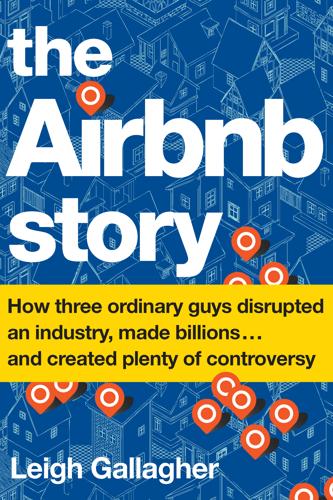
The Airbnb Story: How Three Ordinary Guys Disrupted an Industry, Made Billions...and Created Plenty of Controversy
by
Leigh Gallagher
Published 14 Feb 2017
Airbnb had found an audience, and it had started to grow; they had liftoff. In Silicon Valley start-up terms, Chesky, Gebbia, and Blecharczyk had achieved what’s known as “product/market fit,” a holy grail, proof-of-life milestone that a start-up hits when its concept has both found a good market—one with lots of real, potential customers—and demonstrated that it has created a product that can satisfy that market. Popularization of the term is often credited to Marc Andreessen, the celebrated technology entrepreneur–turned–venture capitalist–turned–philosopher-guru to legions of start-up founders in Silicon Valley. Thousands of start-ups fail trying to get to this point.
…
After what Chesky would later refer to as an “intervention,” Blecharczyk finally agreed to relocate to San Francisco for three months and moved back into the Rausch Street apartment. The band was back together. They had been given another chance. “What Are You Still Doing Here?” Founded in 2005 by Paul Graham and three copartners, Y Combinator very quickly became one of the most prestigious launchpads in Silicon Valley, a “quasi startup factory, university, and venture capital fund rolled into one,” as Fortune called it. It wasn’t easy to get in, but start-ups it deemed worthy got seed funding of $5,000 plus another $5,000 per founder and a priceless wealth of knowledge, connections, operational assistance, and more offered by Graham and his copartners.
…
Chesky loves peppering his discourses with quotes from history’s great thinkers, often paraphrasing one from George Bernard Shaw: “The reasonable man adapts himself to the environment. The unreasonable man adapts the environment to him. Therefore, all progress depends on the unreasonable man.” It’s a much-cited reference in Silicon Valley, where legions of start-up founders pride themselves on being unreasonable enough to get gobs of funding and then get the laws changed in their favor. For this reason, Chesky is not surprised that Airbnb has generated so much pushback. “When we started this business, I knew that if it would become successful, it would be somewhat controversial,” he tells me in a moment of reflection in the President’s Room at Airbnb’s headquarters, a wood-paneled replica of a 1917 executive quarters in the company’s offices in 2015.

Rule of the Robots: How Artificial Intelligence Will Transform Everything
by
Martin Ford
Published 13 Sep 2021
There was an immediate backlash against the specter of the tech giant having access to NHS patient data despite the fact that Google claimed strict privacy policies were in place and the data was carefully anonymized.51 All this illustrates, once again, how factors beyond the capability of the technology itself—in this case, perceived privacy concerns—can act to significantly slow the deployment of artificial intelligence in the healthcare arena. Some of the most surprising successes with artificial intelligence in healthcare are occurring in the mental health arena. Woebot Labs, a Silicon Valley startup founded in 2017, has developed a chatbot powered by natural language processing technology similar to what is used in Alexa and Siri, combined with carefully scripted conversational elements developed by psychologists. Woebot’s approach is essentially to automate cognitive behavioral therapy, or CBT, a proven technique for helping people with depression or anxiety.
…
In the aftermath of the coronavirus pandemic, there may also be far more emphasis placed on properly cleaning and sanitizing vehicles on a frequent basis. This, again, is something that is currently the responsibility of drivers. I think it will be fascinating to watch the evolution of self-driving cars over the coming years in terms of both the technology and the business models that ultimately emerge. There are a large number of Silicon Valley startups focused on developing and licensing self-driving technology, as well as varying degrees of investment by virtually every major automotive manufacturer. A disruptive breakthrough could emerge from any of these initiatives, but I think one of the most interesting narratives will center on the widening gap between the strategies pursued by Waymo and Tesla, and how competition between these two companies plays out over time.
…
By one account, as of April 2020, there were at least 230 startup companies focused on using AI to find new pharmaceuticals.75 Daphne Koller, a professor at Stanford and the co-founder of the online education company Coursera, is one of the world’s top experts on applying machine learning to biology and biochemistry. Koller is also the founder and CEO of insitro, a Silicon Valley startup, founded in 2018, that has raised over $100 million to pursue new medicines using machine learning. The broad-based slowdown in technological innovation that plagues the American economy as a whole is especially evident in the pharmaceutical industry. Koller told me that: The problem is that it is becoming consistently more challenging to develop new drugs: clinical trial success rates are around the mid-single-digit range; the pre-tax R&D cost to develop a new drug (once failures are incorporated) is estimated to be greater than $2.5 [billion].

The New New Thing: A Silicon Valley Story
by
Michael Lewis
Published 29 Sep 1999
By 1996 nearly half of the 55,000 temporary visas issued by the U.S. government to high-tech workers went to Indians. In early 1999 a Berkeley sociologist named AnnaLee Saxenian discovered that nearly half of all Silicon Valley companies were founded by Indian entrepreneurs. The definitive smell inside a Silicon Valley start-up was of curry. So one day when Jim Clark had finished writing his code for the boat, he picked up the phone and called Pavan Nigam and told him about his idea for making him rich. When Pavan asked for a business plan, Clark simply revealed the Magic Diamond with Healthscape at the center. Pavan was at first very excited; then he was very nervous.
…
Pavan and Kittu had finished in the top one-hundredth of one percent on the test taken by bright young Indians who probably were already in the top one-hundredth of one percent on the national brainpower scale. Yet about twice a week Pavan found a way to remind Kittu that he had finished 250 places behind him. To Kittu the suggestion that he was too smart to take risks was "total bullshit." In the first place, how much risk was there in working for a Silicon Valley start-up? The worst thing that happened is that the startup failed, and you went back to your old job and your $80,000 a year. Page 121 Silicon Graphics or any other big company would have hired them back the instant they applied. In the second place, his life had been nothing but risk: the risk of growing up in a Third World hellhole, the risk that he wouldn't get into a decent school that might catapult him out of the hellhole, the risk that he wouldn't find work in the United States, the risk that ITV, the highest-profile engineering project in Silicon Valley, would flop.
…
The VCs had been to business school, they spoke the jargon, they wore the suits, or at least owned them. The VCs kept their neckties on hooks on the back of their office doors, so they could go either way. They were pleasantly free of the odor of a man on a suicide mission. One VC in particular had a gift for persuading mainstream CEOs that the only place to be was a Silicon Valley start-up: John Page 156 Doerr. Doerr was the only VC whom Clark favored with something akin to respect. He asked Doerr to join Healtheon's board and to help him recruit a CEO. Doerr, who had told a lot of people that Healtheon might one day be the biggest company Kleiner Perkins ever backed, then set out to find the Serious American Executive who could make the Magic Diamond plausible to the wider world.
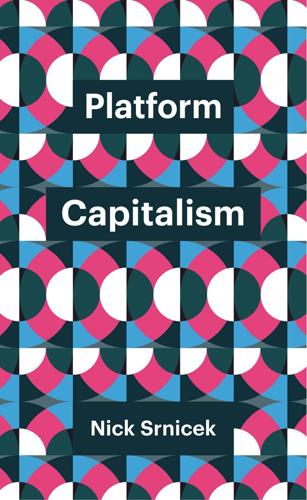
Platform Capitalism
by
Nick Srnicek
Published 22 Dec 2016
The Telegraph, 15 February. http://www.telegraph.co.uk/finance/economics/12149894/Mapped-Why-negative-interest-rates-herald-new-danger-for-the-world.html (accessed 22 May 2016). Kim, Eugene. 2016. ‘Dropbox Cut a Bunch of Perks and Told Employees to Save More as Silicon Valley Startups Brace for the Cold’. Business Insider. 7 May. http://uk.businessinsider.com/cost-cutting-at-dropbox-and-silicon-valley-startups-2016-5 (accessed 22 May 2016). Klein, Matthew. 2016. ‘The US Tech Sector Is Really Small’. Financial Times, 8 January. http://ftalphaville.ft.com/2016/01/08/2149557/the-ustech-sector-is-really-small (accessed 30 June 2016). Knight, Sam. 2016.
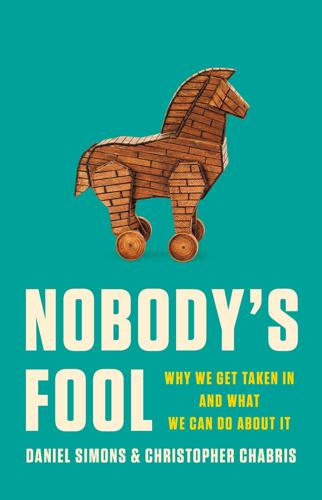
Nobody's Fool: Why We Get Taken in and What We Can Do About It
by
Daniel Simons
and
Christopher Chabris
Published 10 Jul 2023
In 2014, Low had an associate open a bank account in Singapore in the name of “Aabar,” not coincidentally part of the name of Abu Dhabi sovereign wealth fund Aabar Investments, for the purpose of stealing over $100 million.12 Chris and some college friends tried a sort of familiarity gambit when they attempted to start a technology business in the mid-1980s. In the era before Silicon Valley startups founded by teenagers routinely went on to billion-dollar valuations, a company run by a bunch of nineteen-year-olds lacked credibility. So they chose a name that created the illusion of being a well-established firm: “Consolidated Electronics.” After all, a company that was “consolidated” must have been formed from several preexisting companies, like the energy company Consolidated Edison.
…
The following two podcasts devoted to the Theranos story and the criminal trial of Elizabeth Holmes include extensive quotations from depositions and trial testimony on the aspects of the case that we discuss in this book: The Dropout (ABC News, 2021–2022) [https://abcaudio.com/podcasts/the-dropout/] and Bad Blood: The Final Chapter (John Carreyrou, 2021–2022) [https://podcasts.apple.com/us/podcast/bad-blood-the-final-chapter/id1575738174]. The story is narrated in J. Carreyrou, Bad Blood: Secrets and Lies in a Silicon Valley Startup (New York: Knopf, 2018). At the end of her fifteen-week trial in early 2022, Theranos founder Elizabeth Holmes was found guilty on four charges related to defrauding investors [https://www.justice.gov/usao-ndca/pr/theranos-founder-elizabeth-holmes-found-guilty-investor-fraud], and she was sentenced to 135 months in prison [https://www.justice.gov/usao-ndca/pr/elizabeth-holmes-sentenced-more-11-years-defrauding-theranos-investors-hundreds].
…
Among the many reporting failures identified by the panel, the final report concluded that CBS had “failed to obtain clear authentication of any of the Killian documents,” had not adequately scrutinized the background of its source, Bill Burkett, and had failed to corroborate the claims. See S. Kiehl and D. Zurawik, “CBS Fires 4 Executives, Producers over Bush–National Guard Report,” Baltimore Sun, January 11, 2005 [https://www.baltimoresun.com/entertainment/tv/bal-te.to.cbs11jan11-story.html]. 5. J. Carreyrou, Bad Blood: Secrets and Lies in a Silicon Valley Startup (New York: Knopf, 2018). Carreyrou reports that he wanted to publish the story as soon as possible after he filed it, but his editor “cautioned patience,” explaining that the “story was a bombshell and we needed to make sure it was bulletproof when we went to press with it” (see pp. 265–273 for these quotations and the timeline between his filing the story and its ultimate publication). 6.
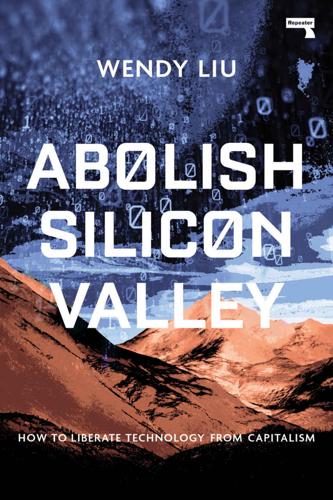
Abolish Silicon Valley: How to Liberate Technology From Capitalism
by
Wendy Liu
Published 22 Mar 2020
My only responsibility was to my technology, my investors, the higher notion of progress; the human beings at the short end of the stick were inconveniences to be automated away, necessary sacrifices at the altar of efficiency. But I was not running that startup, so this employee got to keep her job, and the cost of my quinoa bowl went partly towards allowing her to pay her bills as opposed to being funnelled entirely to some Silicon Valley startup making a return for its investors. The engines of progress were stalled, and instead I would have to settle for the subpar status quo where people who weren’t engineers were able to survive under capitalism. OK, so “food robots” was apparently fraught with all sorts of thorny ethical issues, who knew?
…
Thiel’s affiliation with Y Combinator ended soon after that under unclear circumstances, as reported by Ryan Mac for Buzzfeed News on November 17, 2017: “Y Combinator Cuts Ties With Peter Thiel After Ending Part-Time Partner Program”, at https://www.buzzfeednews.com/article/ryanmac/y-combinator-cuts-ties-with-peter-thiel-ends-part-time. 5 For a brief overview of incidents in this vein, see “The Ugly Unethical Underside of Silicon Valley” by Erin Griffith for Fortune, published December 28, 2016, at https://fortune.com/longform/silicon-valley-startups-fraud-venture-capital/. 6 See, for example, “Uber Drivers Speak Out: We’re Making A Lot Less Money Than Uber Is Telling People” by Maya Kosoff for Business Insider, published October 29, 2014, at https://www.businessinsider.com/uber-drivers-say-theyre-making-less-than-minimum-wage-2014-10. 7 See, for example, “Inside an Amazon Warehouse, the Relentless Need to ‘“Make Rate’”” by Hamilton Nolan for Gawker, published June 6, 2016, at https://gawker.com/inside-an-amazon-warehouse-the-relentless-need-to-mak-1780800336. 8 See, for example, “Foxconn Working Conditions Slammed bBy Workers Rights Group” by Steven Musil for CNET, published May 30, 2012, at https://www.cnet.com/news/foxconn-working-conditions-slammed-by-workers-rights-group/. 9 Several tech billionaires have signed “The Giving Pledge”, a movement led by Bill Gates and Warren Buffet.
…
See Anand Giridharadas’ book Winners Take All: The Elite Charade of Changing the World (Allen Lane, 2018) for a critique of this sort of philanthropy. 10 Verso, 2011. 11 For coverage of this incident, see “Why GitHub’s CEO Ditched Its Divisive ‘Meritocracy’ Rug” by Lauren Orsini for ReadWrite, published January 24, 2014, at https://readwrite.com/2014/01/24/github-meritocracy-rug/. 12 For a different but related take on this topic, see this interview with French economist Thomas Piketty for the International Inequalities Institute in July 2015, about his book Capital in the Twenty-First Century (you could also read the book, but it’s a lot longer): https://medium.com/@LSEInequalities/an-interview-with-thomas-piketty-a972015438e0. 13 For coverage of this incident, see, for example, “Why Nancy Pelosi’s Comments About Capitalism Disappointed Progressives” by Daniel Marans for Huffington Post, published February 1, 2017, at https://www.huffpost.com/entry/nancy-pelosi-town-hall-capitalism_n_58925a53e4b070cf8b807e28. 14 For example, Coca-Cola spent $4 billion on advertising in 2015, according to the FAQs page of their website, https://www.coca-colacompany.com/contact-us/faqs [URL inactive]. Nine: Profile Before You Optimise 1 As reported in John Carreyrou’s book, Bad Blood: Secrets and Lies in a Silicon Valley Startup (Knopf, 2018). 2 For coverage of this fairly widespread phenomenon, see, for example, “Delivery Workers Are Being Cheated Out of Tips by Their Own Companies. This Isn’t New.” by Rebecca Jennings for Vox, published July 22, 2019, at https://www.vox.com/the-goods/2019/7/22/20703636/doordash-instacart-tip-policy. 3 For an excellent primer on UBI, see “The False Promise of Universal Basic Income” by Alyssa Battistoni for Dissent Magazine’s Spring 2017 issue, at https://www.dissentmagazine.org/article/false-promise-universal-basic-income-andy-stern-ruger-bregman. 4 For a critical analysis of the gig economy, see The Gig Economy: A Critical Introduction by Jamie Graham Woodcock and Mark Graham (Polity, 2019). 5 For details on what it’s like to work for a gig economy platform in the UK, see Callum Cant’s book Riding for Deliveroo: Resistance in the New Economy (Polity, 2019). 6 The World Transformed, which began as a fringe festival for the UK Labour Party’s annual convention, alternates between Brighton and Liverpool. 7 “Any industry that still has unions has potential energy that could be released by startups.”

The People vs Tech: How the Internet Is Killing Democracy (And How We Save It)
by
Jamie Bartlett
Published 4 Apr 2018
We were the first campaign in the UK to put almost all our money into digital communication then have it partly controlled by people whose normal work was subjects like quantum information . . . If you want to make big improvements in communication, my advice is – hire physicists, not communications people from normal companies. * * * • • • Just like Brad, Cummings set up Vote Leave like a Silicon Valley start-up, with physicists, data, innovation and constant testing of ads or messages. One especially smart move involved inviting people to guess the results of all 51 matches in the Euro 2016 football tournament with the chance of winning £50 million, in exchange for their phone number, email, home address and a score of 1–5 in respect of how likely they were to vote for staying in the EU.14 This, of course, fed into the models.
…
Science fiction is fast becoming science fact, as rapidly improving artificial intelligence starts to impact our economy. However, rather than speculation about a ‘jobless future’, we should be worrying about growing inequality and whether the coming tech revolution will wipe out the middle class. LIKE MANY SILICON VALLEY start-ups, Starsky Robotics was founded by two twenty-somethings who regard sleep as optional. Any successful new tech firm needs someone who understands technology and someone who understands business, and these two distinct skills are rarely found in one individual. At Starsky, Kartik Tiwari is the ‘tech guy’ who specialises in artificial intelligence, and Stefan Seltz-Axmacher is the ‘serial entrepreneur’ guy, who mostly specialises in starting-up start-ups.
…
No one wants to live in a world comprising a handful of trillionaires and hordes of unemployed or extremely poorly paid people – not even the trillionaires. A growing number of people are proposing a bold new idea to deal with this. In 2017 I interviewed Sam Altman, the president of Y Combinator, the most important fund in Silicon Valley for tech start-ups. Thousands of businesses apply every year to access Y Combinator’s funding and guidance, in exchange for a small slice of their company. Sam is a Princeton dropout and frequently wears a hoodie, yet when I met him, he was only 31 years old and already a multi-millionaire. He is often described as ‘the man who invents the future’.
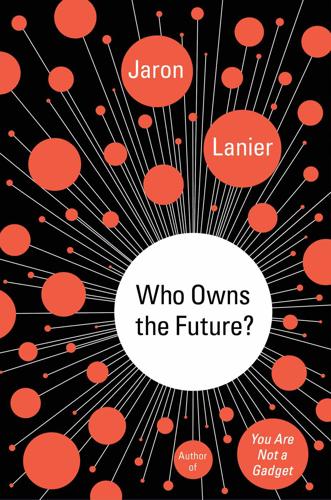
Who Owns the Future?
by
Jaron Lanier
Published 6 May 2013
Two huge streams of culture and argument that continue to underlie many of today’s conversations were incubated by robot anxiety: the “left” and science fiction. We find a hatching of the left in the early writings of Karl Marx, who as early as the 1840s was obsessed with the Luddite dilemma. Marx was one of the first technology writers. This realization came to me in a flash many years ago when I was driving in Silicon Valley and some Internet startup was on the radio trumpeting the latest scheme to take over the world. There was a lot of the usual filler about innovation breaking through traditional market boundaries, the globalization of technical talent, and so on. I was just about to turn the radio off, muttering something about how I couldn’t take even one more pitch from one of these companies, when the announcer intoned, “This has been an anniversary reading of Das Kapital.”
…
One journalist found that 40 percent of the tasks on offer are to create spam.4 CHAPTER 15 Story Found The First Act Is Autocatalytic A newly launched Siren Server is like a tiny baby creature in a hostile ecosystem that must grow fast enough to survive in a world of predators. The most common means to survival is to route enough data fast enough so that by the time predators notice you at all, they won’t find it worthwhile to go after your niche. There are a variety of Siren Servers, ranging from consumer-facing Silicon Valley startups tempting people with “free” bait, to financial servers that skim the cream off the economy in relative obscurity, to providers of infrastructure who realize that they can also play the big data game, to governments and other entities yet to be discussed. In all cases, there has to be some way for a particular Siren Server to gain enough initial momentum to become the beneficiary of network effects.
…
Even the slightest expense or risk might slow the initial growth spurt, so every possible effort is made to pretend there are no costs, risks, or even delayed gratifications. This can never really be true. Yet it feels true as you sign up for a social network or an app store for the first time. Since You Asked Here’s typical advice I’d give to someone who wants to try the Silicon Valley startup game: Obviously you have to get someone else to do something on your server. This can start out as a petty activity. eBay started out as a trading site for people who collected Pez candy dispensers. The key is that it’s your server. If you’re getting a lot of traffic through someone else’s server, then you’re not really playing the game.

The Alliance: Managing Talent in the Networked Age
by
Reid Hoffman
,
Ben Casnocha
and
Chris Yeh
Published 15 Jan 2014
Foundational tours provide continuity by helping companies retain employees who focus on the long term. Your senior management team should consist of Foundational employees. The optimal blend of Rotational, Transformation, and Foundational tours depends on the specific market conditions of your company. Silicon Valley companies, including start-ups, rely primarily (roughly 80 percent) on Transformational tours, with a small number of Foundational and Rotational employees. This allows them to field a high-performance, highly adaptable workforce. In contrast, a manufacturing company with a stable market and a quasi-monopoly would probably rely far more on Rotational tours (for routine, lower-value work) and Foundational tours (for tapping legacy knowledge).
…
Since Transformational tours represent the greatest departure from most companies’ management practices, this book focuses on defining and implementing this type of tour. Thus, whenever we refer to a tour of duty or tour, you can assume that we’re referring to a Transformational tour. A Broadly Applicable Framework No company could be more the antithesis of a Silicon Valley start-up than fast food giant McDonald’s. The company is big, it’s old, and it makes most of its money by serving the same hamburgers, fries, and shakes it served over half a century ago. Yet despite these differences, McDonald’s actually illustrates the spirit behind tours of duty. Len Jillard, chief people officer for McDonald’s Canada, said, “Whether you’re with us for one year or if you’re here for more, we will help you meet your future.
…
When he thought about how he wanted to build his career coming out of college, Hahn took inspiration from Theodore Roosevelt’s famous dictum, “Far and away the best prize that life has to offer is the chance to work hard at work worth doing.”5 To Hahn, that meant finding a way to have a positive impact on the world, and to do so at the largest scale possible. He started his career in Washington DC, thinking that he would achieve this aspiration through politics and policy, but realized the pace of change wasn’t fast enough to satisfy him. He decided Silicon Valley’s start-up ecosystem offered a better alternative. He set two initial aspirations: to learn from great leaders who had already built successful companies at scale, and to work for a company with a mission grander than just achieving its financial goals. Hahn executed a plan that would let him make progress toward both of his goals.
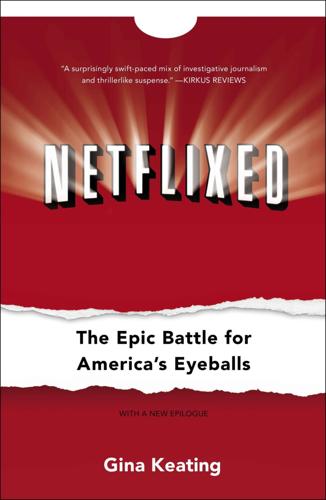
Netflixed: The Epic Battle for America's Eyeballs
by
Gina Keating
Published 10 Oct 2012
Start-ups bloomed for a year or so, watered by plentiful venture capital dollars, and were quickly swallowed up by private investors or large, rich companies fishing for the next big innovation in software, biomedical engineering, telecoms, or the ever-evolving Internet. It was the new gold rush, and venture capital investors would pour more than $70 billion into Silicon Valley start-ups before the decade was out. Things moved so quickly and money was so plentiful that most entrepreneurs had no chance, or any need, to turn a profit, or even run to their companies for long. The pace was grueling, and everyone was expected to bring his or her top game each day for months of sixteen-hour days, until it was clear whether a fledgling business would fly or crash.
…
What came next—ruthless optimization and relentless growth—were not his strong suits. Netflix badly needed a large cash infusion and some hard decisions made about its direction, and Hastings could handle both tasks better. Although the venture capital community poured a then record $5.4 billion into Silicon Valley start-ups in 1998, and interest in dot-coms was still climbing, investors were becoming wary of companies with no clear path to solvency and profit. Nevertheless, when Hastings started making the rounds of the venture capital community he found checkbooks opening for him based on his success with Pure Atria.
…
Hasting liked to be photographed with a fan of DVDs or behind a conveyor belt in the nearby distribution center. He stuck to company-related settings as a safeguard against the embarrassment he had felt after posing on the hood of his Porsche for a photo accompanying a 1995 USA Today article about Silicon Valley start-ups entitled “Boom! You’re a Millionaire.” Hastings proved an adept and interested student of mass media, and held up well most of the time as Netflix’s public persona. Occasionally Hastings’s engineer brain would trump his CEO manners. At a 2010 event at the Churchill Club, hosted by former Walt Disney chairman and chief executive Michael Eisner, Hastings ended his ninety-minute appearance, rose, and walked off the stage before the moderator had finished a rather meandering concluding speech—eliciting an audible gasp from the audience.

The End of College: Creating the Future of Learning and the University of Everywhere
by
Kevin Carey
Published 3 Mar 2015
Quizlet, which was created by a high school student in his bedroom, had millions of users creating and sharing flash cards and learning games—all for free. Textbooks, study rooms, coaching, fund-raising, learning aids, and much more—what I saw was the steady unbundling of the hybrid university into pieces that can be reassembled into the University of Everywhere. It was a virtual hive of Silicon Valley start-ups, each working to specialize in providing a specific kind of service that students have traditionally been forced to buy all at once from colleges, whether they needed or wanted them or not. Each start-up was taking advantage of the enormous economies of scale now available to software businesses by serving huge numbers of students at prices that were radically different from what undergraduates were indenturing themselves to pay.
…
Gap Year students spend three months living together in San Francisco, taking seminars and workshops; three months living in a foreign country where they don’t speak the native language; three months in an internship; and three months working on an independent project. The first class of students enrolled in fall 2013 and hundreds of students applied for spots in the subsequent winter and spring. — IN DEV BOOTCAMP and UnCollege Gap Year, I saw two more examples of Silicon Valley start-up companies picking the hybrid university to pieces by serving discrete parts of the higher-education market. In Minerva, I saw a university with the financial, technological, and intellectual resources to exploit the weakness of the hybrid model and the various inefficiencies and absurdities that universities have allowed to fester within their cocoon of wealth and privilege.
…
A few months after Udacity was loosed upon the world, John Doerr of Kleiner Perkins Caufield & Byers, one of the original investors in Google, announced that he would be joining the board of a new company, backed by KPCB and led by Ng and a colleague from the Stanford computer science department named Daphne Koller. The company was called Coursera. And while Udacity was busy building a bunch of new courses from scratch, Coursera had a different plan. It was going to try and build the digital higher-education platform to rule them all. — LIKE ANY SUBCULTURE, the Silicon Valley start-up world operates within a tightly defined set of aesthetic guidelines. People speak to one another in code—20X!—wear the same clothes, buy the same smartphones and computers, and work in offices that look remarkably alike. So I was a little surprised upon arriving with Michael Staton at Coursera’s offices to see that it was not located inside a converted industrial space and did not involve taking a freight elevator to a reception area/fixie bicycle storage space.
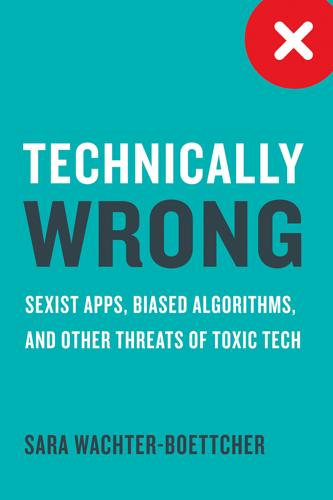
Technically Wrong: Sexist Apps, Biased Algorithms, and Other Threats of Toxic Tech
by
Sara Wachter-Boettcher
Published 9 Oct 2017
Fatima’s story is over the top: her company ignored her input, made sexist assumptions, and launched a product that failed. But this mind-set—where someone assumes they have all the answers about a product, and leaves out anyone with a different perspective—isn’t rare. Scratch the surface at all kinds of companies—from Silicon Valley’s “unicorns” (startups with valuations of more than a billion dollars) to tech firms in cities around the world—and you’ll find a culture that routinely excludes anyone who’s not young, white, and male. One designer working on digital products in the Midwest told me she sat down with her company’s owners to talk about maternity leave and found out they didn’t even know whether they had a maternity policy.
…
“Scrappy unknowns with a suitcase and a dream are the exceptions, not the rule.” 3 As Sharon Vosmek, CEO of the venture accelerator Astia, put it, “They call it pattern recognition, but in other industries they call it profiling or stereotyping.” 4 Meanwhile, women hardly get funded at all: only 10 percent of the 187 Silicon Valley startups that received Series A funding in 2016 were woman-led, up a meager 2 percent from the year before.5 Yet much of the tech industry still clings to meritocracy like a tattered baby blanket. Sequoia Capital partner Greg McAdoo insisted, “This business is a meritocracy by and large.” 6 David Sacks, an early executive at PayPal, claimed that “if meritocracy exists anywhere on earth, it is in Silicon Valley.” 7 Until 2014, code-hosting platform GitHub even put a rug emblazoned with “United Meritocracy of GitHub” in the center of its Oval Office–replica waiting room.8 In the fall of 2016, the Atlantic sent out its annual “pulse of the technology industry” survey to influential executives, founders, and thinkers—and found that “men were three times as likely as women to say Silicon Valley is a meritocracy.” 9 It’s not just tech that wants desperately to believe in a meritocracy, of course.
…
Hall’s now-deleted article in Forbes, “There Is No Diversity Crisis in Tech,” which he reposted at Medium.com on October 7, 2015: https://medium.com/@brianshall/the-article-on-diversity-in-tech-that-forbes-took-down-15cfd28d5639#.sp3ogqmuw. 2. Michael Young, “Down with Meritocracy,” Guardian, June 28, 2001, https://www.theguardian.com/politics/2001/jun/29/comment. 3. Sarah McBride, “Insight: In Silicon Valley Start-up World, Pedigree Counts,” Reuters, September 12, 2013, http://www.reuters.com/article/us-usa-startup-connections-insight-idUSBRE98B15U20130912. 4. Vivek Wadhwa, “Silicon Valley: You and Some of Your VC’s Have a Gender Problem,” TechCrunch, February 7, 2010, https://techcrunch.com/2010/02/07/silicon-valley-you%E2%80%99ve-got-a-gender-problem-and-some-of-your-vc%E2%80%99s-still-live-in-the-past. 5.
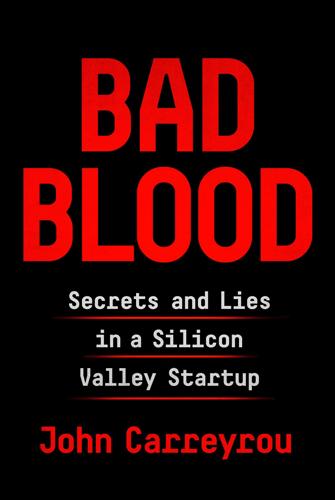
Bad Blood: Secrets and Lies in a Silicon Valley Startup
by
John Carreyrou
Published 20 May 2018
Knopf, a division of Penguin Random House LLC, New York, and distributed in Canada by Random House of Canada, a division of Penguin Random House Canada Limited, Toronto. www.aaknopf.com Knopf, Borzoi Books, and the colophon are registered trademarks of Penguin Random House LLC. Library of Congress Cataloging-in-Publication Data Names: Carreyrou, John, author. Title: Bad blood : secrets and lies in a Silicon Valley startup / John Carreyrou. Description: First Edition. | New York : Knopf, 2018. Identifiers: LCCN 2018000263 | ISBN 9781524731656 (hardback) | ISBN 9781524731663 (ebook) Subjects: LCSH: Theranos (Firm)—History. | Hematologic equipment industry—United States. | Fraud—United States. | BISAC: BUSINESS & ECONOMICS / Entrepreneurship. | BUSINESS & ECONOMICS / Finance. | TECHNOLOGY & ENGINEERING / Biomedical.
…
That made him a friend of the Journal’s famously conservative editorial page, to which he occasionally contributed op-eds. During a visit to the paper’s Midtown Manhattan headquarters to discuss climate change with its editorial board in 2012, Shultz had dropped mention of a secretive and reclusive Silicon Valley startup founder who he felt certain was going to revolutionize medicine with her technology. Intrigued, the Journal’s long-serving editorial page editor, Paul Gigot, had offered to send one of his writers to interview the mysterious wunderkind when she felt ready to break her silence and introduce her invention to the world.
…
If what Alan was saying was true, this added a new twist: Silicon Valley’s first female billionaire tech founder was sleeping with her number-two executive, who was nearly twenty years her senior. It was sloppy corporate governance, but then again this was a private company. There were no rules against that sort of thing in Silicon Valley’s private startup world. What I found more interesting was the fact that Holmes seemed to be hiding the relationship from her board. Why else would the New Yorker article have portrayed her as single, with Henry Kissinger telling the magazine that he and his wife had tried to fix her up on dates? If Holmes wasn’t forthright with her board about her relationship with Balwani, then what else might she be keeping from it?
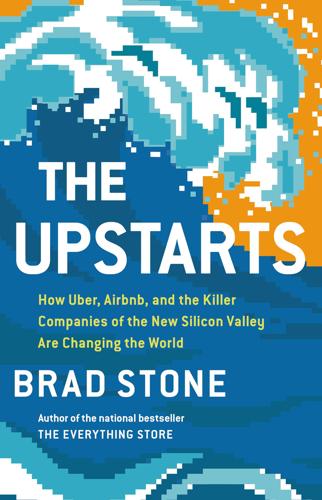
The Upstarts: How Uber, Airbnb, and the Killer Companies of the New Silicon Valley Are Changing the World
by
Brad Stone
Published 30 Jan 2017
As the very first guest of this new service, Surve had been included in the presentation. His stay hadn’t even begun yet and here he was, grafted into chapter 1 of what his hosts were clearly hoping would be a very long story. “It was very strange,” Surve says years later. Surve was happy just to have a comfortable place to sleep, but he ended up getting an education in the Silicon Valley startup scene as well. He spent lots of time that week on the couch with Gebbia and Chesky, talking about design and examining Apple’s new device, the very first iPhone. Surve hadn’t even heard of Steve Jobs, let alone the iPhone, and he was totally unfamiliar with the litany of motivational Jobs sayings that Gebbia and Chesky frequently quoted, such as “We’re here to put a dent in the universe.”
…
News and World Report13 and the Chicago Sun-Times.14 About two hundred new hosts signed up every week in August, and Airbnb collected a commission of around twelve dollars for each hundred-dollar-per-night booking. But then, after the conventions, things quieted down, the number of new reservations booked each week dwindled below ten, and once again Chesky was waking up early, staring at the ceiling, and marinating in dread over his unfulfilled potential. Silicon Valley’s startup scientists have a name for this phase in a company’s gestation; they call it the Trough of Sorrow, when the novelty of a new business idea wears off and the founders are left trying to jump-start an actual business. Gebbia and Chesky experienced a deep trough that would have swamped most founders.
…
Airbnb, she says, responded with a rotating series of explanations of why that was too complex or how it exposed the company to legal liability. (The site was still not adequately warning New York customers a year later, according to a review by Gawker.)16 Krueger, a lifelong New York Democrat with a dry wit and a dim view of Silicon Valley startups seeking to play by their own rules, figured there was a simpler explanation: Airbnb didn’t want to curtail its fast-growing business in the city. And she laughed at the ridiculousness of the neighborhood hotline and the idea that the California company might be able to respond meaningfully when complaints came in during the middle of the night or weekends.
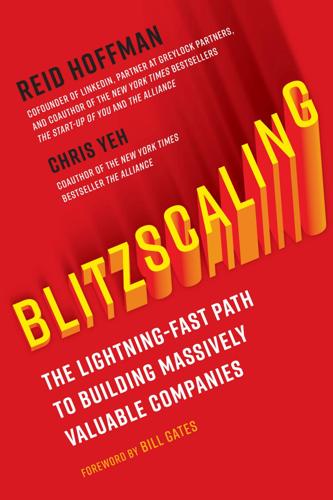
Blitzscaling: The Lightning-Fast Path to Building Massively Valuable Companies
by
Reid Hoffman
and
Chris Yeh
Published 14 Apr 2018
After dropping out of college, he or she gathers a small team who are happy to work for equity, sets up shop in a humble garage, plays foosball, raises money from sage venture capitalists, and proceeds to change the world—after which, of course, the founders and early employees live happily ever after, using the wealth they’ve amassed to fund both a new generation of entrepreneurs and a set of eponymous buildings for Stanford University’s Computer Science Department. It’s an exciting and inspiring story. We get the appeal. There’s only one problem. It’s incomplete and deceptive in several important ways. First, while “Silicon Valley” and “start-ups” are used almost synonymously these days, only a tiny fraction of the world’s start-ups actually originate in Silicon Valley, and this fraction has been getting smaller as start-up knowledge spreads around the globe. Thanks to the Internet, entrepreneurs everywhere have access to the same information.
…
This is where an emphasis on speed also plays an important role. Because Silicon Valley’s entrepreneurs focus on designing business models that can get big fast, they are more likely to incorporate network effects. And because the fierce local competition forces start-ups to grow so aggressively (i.e., blitzscale), Silicon Valley start-ups are more likely to reach the tipping point of network effects before start-ups from less aggressive geographies. One of the motivations for this book is to help entrepreneurs from around the world emulate these successes by teaching them how to systematically design their businesses for blitzscaling.
…
At this phase, you should try to make your opponents defend every bit of their territories, because, if you succeed, they will be stretched too thin to ward off the attacks you actually consider important. Just remember to save a few ships to fend off attacks from those pesky pirates! From Captain to Admiral At the time of the writing of this book, the ridesharing company Uber was Silicon Valley’s most valuable start-up (and second globally to its frenemy, China’s Didi Chuxing), despite having spent most of 2017 in the news for a number of serious problems and scandals. Some of these issues were due to clearly unethical behavior, including internal problems, such as the sexual harassment reported by the former Uber engineer Susan Fowler, and various external attempts to subvert free competition, regulation, and the press, such as creating fake accounts to poach drivers from its rival Lyft (as reported by The Verge), developing software (Greyball) to prevent law enforcement and regulators from accessing the service, and then-COO Emil Michael suggesting that the company spend money to hire opposition researchers to intimidate journalists.

AI Superpowers: China, Silicon Valley, and the New World Order
by
Kai-Fu Lee
Published 14 Sep 2018
An explosion of these services pushed Chinese companies to roll up their sleeves and do the grunt work of running an operations-heavy business in the real world. In my view, that willingness to get one’s hands dirty in the real world separates Chinese technology companies from their Silicon Valley peers. American startups like to stick to what they know: building clean digital platforms that facilitate information exchanges. Those platforms can be used by vendors who do the legwork, but the tech companies tend to stay distant and aloof from these logistical details. They aspire to the mythology satirized in the HBO series Silicon Valley, that of a skeleton crew of hackers building a billion-dollar business without ever leaving their San Francisco loft.
…
When looking to disrupt a new industry, American internet companies tend to take a “light” approach. They generally believe the internet’s fundamental power is sharing information, closing knowledge gaps, and connecting people digitally. As internet-driven companies, they try to stick to this core strength. Silicon Valley startups will build the information platform but then let brick-and-mortar businesses handle the on-the-ground logistics. They want to win by outsmarting opponents, by coming up with novel and elegant code-based solutions to information problems. In China, companies tend to go “heavy.” They don’t want to just build the platform—they want to recruit each seller, handle the goods, run the delivery team, supply the scooters, repair those scooters, and control the payment.
…
These chips are central to everything from facial recognition to self-driving cars, and that has set off a race to build the next-generation AI chip. Google and Microsoft—companies that had long avoided building their own chips—have jumped into the fray, alongside Intel, Qualcomm, and a batch of well-funded Silicon Valley chip startups. Facebook has partnered with Intel to test-drive its first foray into AI-specific chips. But for the first time, much of the action in this space is taking place in China. The Chinese government has for many years—decades, even—tried to build up indigenous chip capabilities. But constructing a high-performance chip is an extremely complex and expertise-intensive process, one that has so far remained impervious to several government-sponsored projects.
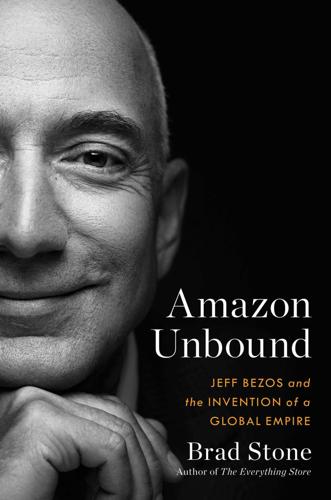
Amazon Unbound: Jeff Bezos and the Invention of a Global Empire
by
Brad Stone
Published 10 May 2021
“But wouldn’t it be incredibly annoying if we can’t be the leader in creating this?” Life inside the Prime building, and in the gradually increasing number of offices around South Lake Union inhabited by the Alexa team, became even busier. Many of the new features would be rushed out the door, so that Amazon could start gathering customer feedback. Silicon Valley startups call this style of product development “minimum viable product,” or MVP. At Amazon, Jeff Wilke had popularized the idea of calling it “minimum lovable product,” or MLP, asking, “What would we be proud to take to the market?” It didn’t seem to matter that many Alexa features, such as the voice calling, were initially half-baked and rarely used.
…
When engineers inside corporations and governments wanted to run their computing experiments via AWS, they often quietly routed around their organizations’ stringent procurement processes. Like many other technology revolutions, cloud computing was first the provenance of geeks, and then spread outward. The first companies to embrace AWS became its beta testers and evangelists. Silicon Valley startups like Uber, Airbnb, Dropbox, and the photo-sharing site SmugMug ran their operations on AWS and could quickly order up more servers as their businesses grew at unprecedented rates. It was one of the greatest enablers of the post-recession technology boom—arguably more important than even the iPhone, though outsiders understood very little about it.
…
Is @WaPo a registered lobbyist? * * * Predictably, Bezos took the most interest in the Post’s products and technology. He forged a partnership with CIO Shailesh Prakash, a graduate of the Indian Institute of Technology in Bombay, and boasted that the newspaper had better engineers than many Silicon Valley startups. He obsessed over shaving milliseconds from the time it took web pages and complex graphics to load. He also asked for customized metrics that could measure the reader’s true interest in stories, and whether an article was truly “riveting.” When Bezos acquired the paper, Prakash had been developing a content system for the Post, called Arc Publishing, to manage functions like online publishing, blogging, podcasting, and advertising.

The Buddha and the Badass: The Secret Spiritual Art of Succeeding at Work
by
Vishen Lakhiani
Published 14 Sep 2020
But before we do that work, since there are so many misconceptions around core values, let me clear up the muck. Your Values Point to New Visions for the World Most entrepreneurs get core values wrong. In Mindvalley’s early days, I certainly did. In 2008 when I assembled my team to do a values exercise, I was imitating Silicon Valley start-ups. We went through a democratic voting process to choose the company values. Every member of my team has an equal vote, and our forty-person team identified some three hundred different attributes of Mindvalley. We clustered them and came up with a ten-point list of our supposed “values.”
…
Malaysia was seen as a career dead end. Friends asked: “Why the hell are you back? There are no good jobs here.” At least in Malaysia we had the comfort and support of my immediate family. My mom and dad still lived in Kuala Lumpur. The question was: Could I achieve my dreams of building a Silicon Valley–style start-up catering to the US market in a country on the other side of the planet with a severe shortage of talent? I had four suitcases and the love of my wife and parents. And I was now moving back into my parents’ home at the age of twenty-eight. They also believed in me and gave me the space to be foolishly stubborn.
…
Now, here is a big secret: The bigger your vision, the easier it gets. When you live this way, you may find that the vision is not coming from you. Instead the Universe is choosing to go through you to realize what the world needs. IN 2003, AT THE age of twenty-seven, I quit my job as vice president of a promising Silicon Valley start-up so I could dedicate my life to a career that gave me great meaning. I had decided to teach and promote meditation. My very first site made me a decent living teaching meditation classes around the world. But I quickly realized that teaching meditation was nowhere as lucrative as my previous job.
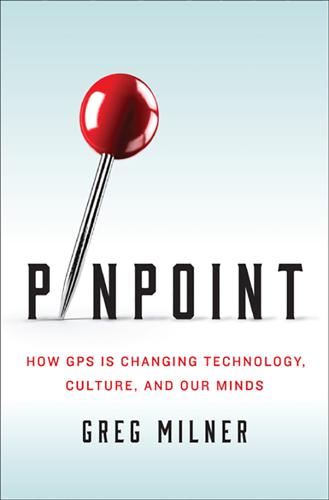
Pinpoint: How GPS Is Changing Our World
by
Greg Milner
Published 4 May 2016
French, “Historical Overview of Automobile Navigation Technology,” Proceedings of the Thirty-Sixth IEEE Vehicular Technology Conference (Institute of Electrical and Electronics Engineers, 1986), 350–8. 121 Nolan Bushnell: Alexis C. Madrigal, “Chuck E. Cheese’s, Silicon Valley Startup: The Origins of the Best Pizza Chain Ever,” Atlantic, July 17, 2013, http://www.theatlantic.com/technology/archive/2013/07/chuck-e-cheeses-silicon-valley-startup-the-origins-of-the-best-pizza-chain-ever/277869/; Ian Bogost, “Persuasion and Gamespace,” in Space Time Play: Computer Games, Architecture and Urbanism: The Next Level, edited by Friedrich von Boories, Steffen P.
…
The plan to make civilian GPS worse was led by Mel Birnbaum, the Air Force software engineer who had worked so hard to make GPS perfect, and dropped the faux bombs in the 1977 test that demonstrated it was. Implementing the idea would require a new generation of satellites, still a few years away. Launched in 1938 to market audio oscillators, Hewlett-Packard was a kind of Platonic ideal of a Silicon Valley startup, right down to its origins in a Palo Alto garage. Within the tech industry, HP became known as much for its innovative products as for its adherence to an oddball (now familiar) corporate culture it dubbed the “HP way”: egalitarian ideals, empowerment of employees, a reverence for individual ingenuity.

The Paypal Wars: Battles With Ebay, the Media, the Mafia, and the Rest of Planet Earth
by
Eric M. Jackson
Published 15 Jan 2004
When PayPal’s online payment service debuted toward the end of the dot-com boom, it set in motion a chain of events that would ultimately pit the company’s talented entrepreneurs, revolutionary technology, and bold vision for global currency change against one of the fiercest series of challenges ever endured by a Silicon Valley startup. At the risk of giving away the ending, PayPal managed to survive the onslaught—but just barely. After several years of erratic ups and downs, the venture reached profitability, registered 40 million users, became the first Internet company to stage an IPO following the 9/11 terrorist attacks, and eventually sold out to a much bigger firm.
…
Marty Hellman, the inventor of public key cryptography, joined the company’s advisory board, and Bill Melton, the founder of VeriFone, provided his backing, as well. Of course a startup with no revenue, much less a working product, needs more than talent. Attracting investments is critical, and selling private equity through a round of venture financing is how most Silicon Valley startups receive cash infusions. At a hyped press conference in July, 1999, a year after Peter and Max first met, representatives from Nokia Ventures and Deutsche Bank used a Palm Pilot to “beam” $3 million in venture funding to Peter in front of a gaggle of media onlookers. It was a public relations hit.
…
Andersen rigidly adhered to hierarchy to the point where title meant more than skills or experience. A total lack of ownership and frequent bouts of inactivity frustrated the entrepreneurial members of the young staff, and that frustration manifested itself in the form of constant cynicism. It was little wonder then that many of them over the past year had headed south to work for Silicon Valley startups. The thought had certainly crossed my mind more than once, especially on days such as this when I idly sat by waiting for something to do. This early-November lull proved fateful. Cranky and dejected, I decided to waste some of the long day by catching up on personal correspondence. It was when I opened the inbox of my personal e-mail account that I came across an unusual message.
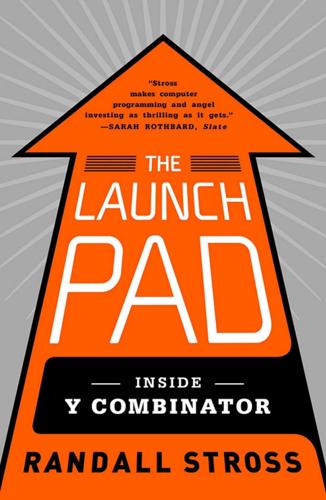
The Launch Pad: Inside Y Combinator, Silicon Valley's Most Exclusive School for Startups
by
Randall Stross
Published 4 Sep 2013
Graham has consistently argued that few people are well suited for starting a startup but that the only effective way of determining who does excel is by having lots of people try: “As long as you’re at a point in your life when you can bear the risk of failure, the best way to find out if you’re suited to running a startup is to try it.”11 • In Graham’s view, there is only one best place to start a startup: among countries, it is America, and within America, it is Silicon Valley. It is a view that comes naturally to someone who works and lives at the epicenter of Silicon Valley’s startup ecosystem. But this view of the world does not take into account the way that software has outgrown its original boundaries, as a subindustry within the computer industry. It has become a pervasive presence in virtually all industries: Software is eating the world. No economic force of such size can be commandeered by coders in a single place.
…
If any member of YC’s summer 2011 batch were to enjoy Reddit-scale success on a similar timeline, it would not be evident until the year 2019. By then, the original founders may have left long before—this was the case with Reddit—and set off on new startup adventures. The attraction of starting afresh is powerful, even to those who are already working on startups. No narrative that centers on Silicon Valley startups can end with a proper ending. Where a conclusion is expected are always new beginnings. Randall Stross April 29, 2013 ACKNOWLEDGMENTS To begin, I thank Paul Graham and Jessica Livingston. Their willingness to let me observe unimpeded the workings of Y Combinator is what made this book possible.
…
Dan Primack, “Exclusive: SV Angel’s Investment Portfolio,” Fortune, November 22, 2011, http://finance.fortune.cnn.com/2011/11/22/exclusive-sv-angels-investment-portfolio/. For a portrait of Conway during the dot-com boom of the late 1990s, see Gary Rivlin, The Godfather of Silicon Valley: Ron Conway and the Fall of the Dot-coms (New York: AtRandom, 2001); for a contemporary portrait, see Miguel Helft, “Ron Conway Is a Silicon Valley Startup’s Best Friend,” Fortune, February 10, 2012, http://tech.fortune.cnn.com/2012/02/10/ron-conway-sv-angel/. 4. Dave McClure interview, “9th Founder Showcase—Alexia Tsotsis of TechCrunch Interviews Dave McClure of 500 Startups,” http://vimeo.com/35399949; Anthony Ha, “Dave McClure Isn’t Worried About the ‘Series A Crunch,’” TC, January 21, 2012, http://techcrunch.com/2012/01/21/dave-mcclure-series-a-crunch/.

Microchip: An Idea, Its Genesis, and the Revolution It Created
by
Jeffrey Zygmont
Published 15 Mar 2003
MOS chips gave them a few strong incentives to eliminate all the sources diligently. The field-effect transistors in MOS circuits were smaller, simpler, easier to manufacture, and they Adding Contenders 97 burned less electricity than layered, bipolar transistors. When the Cal Tech project was just beginning in late 1965, the Silicon Valley start-up General Micro-electronics was already making chips with field-effect transistors just five percent the size of conventional bipolars. Therefore General Micro could pack a lot more of the tiny dynamos into an integrated circuit, providing more transistors per chip to accomplish more complex logic.
…
Thus on July 18, 1968, the two former employees of Fairchild Semiconductor incorporated as Intel Corporation. The name came from a clever combination of the words integrated and electronics. Robert Noyce started as president and chief executive officer. Gordon Moore was executive vice president. The money behind the group came from venture capitalist Arthur Rock, who grew into a Silicon Valley icon for the start-ups he bankrolled. The new company's business plan was uncomplicated. It would make densely integrated microchips—that is, chips containing a lot of transistors—and it would make them in designs that it could sell to a lot of different customers. That way, the founders hoped, the ICs would sell in vast quantities.
…
.; Jay Lathrup, interviewed by telephone on October 24, 2001. page 96 The biggest obstacle fell in 1962 . ..; the account of Frank Wan- lass' innovations is retold in We Were Burning: Japanese Entrepreneurs and the Forging of the Electronic Age by Bob Johnstone, published by Basic Books in 1999. page 97 ... the Silicon Valley start-up General Micro-electronics ...; information on the products and the business positions of both General Micro-electronics and General Instrument come from the article "The Expanding Market" by Jerome Eimbinder, Electronics, October 4, 1965. page 97 Another big advantage . ..; this discussion regarding the technical advantages of MOS microchips comes from the article "MOS Integrated Circuits Save Space and Money" by Donald E.
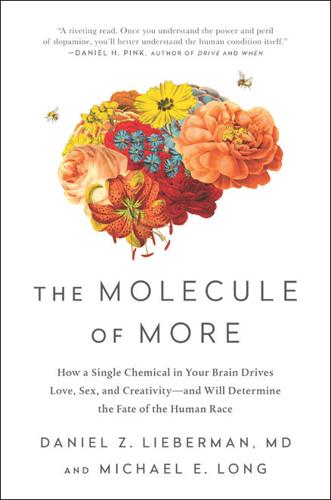
The Molecule of More: How a Single Chemical in Your Brain Drives Love, Sex, and Creativityand Will Det Ermine the Fate of the Human Race
by
Daniel Z. Lieberman
and
Michael E. Long
Published 13 Aug 2018
The connection between dopamine and liberalism is further demonstrated by looking at specific groups of people. Dopaminergic people tend to be creative. They also work well with abstract concepts. They like to pursue novelty and have a general dissatisfaction with the status quo. Is there any evidence that this type of person is likely to be politically liberal? Silicon Valley start-up companies attract exactly this type of person: creative, idealistic, skilled in abstract fields such as engineering, mathematics, and design. They are rebels, driven to pursue change, even at the risk of going broke. Silicon Valley entrepreneurs, and the people who work for them, tend to be quite dopaminergic.
…
Silicon Valley entrepreneurs, and the people who work for them, tend to be quite dopaminergic. They are tough-minded, risk-taking, sensation-seeking, and practical—personality features associated with liberals in the corrected version of the American Journal of Political Science article. What do we know about the politics of Silicon Valley? A survey of startup founders revealed that 83 percent held the progressive view that education can solve all or most of the problems in society. Among the general public, only 44 percent believe this is true. Startup founders were more likely than the general public to believe that government should encourage smart personal decisions.
…
The United States continues to attract immigrants from all over the world, and the immigrant population continues to include a high proportion of extraordinary individuals. Some of the most important companies of the new economy were founded by immigrants, including Google, Intel, PayPal, eBay, and Snapchat. As of 2005, 52 percent of Silicon Valley start-ups had been founded by immigrant entrepreneurs, a remarkable figure in light of the fact that immigrants make up only 13 percent of the U.S. population. The country that provides America with the greatest number of technology entrepreneurs is India. In the book Exceptional People: How Migration Shaped Our World and Will Define Our Future, the authors report that in 2006, foreign nationals living in the United States were listed as inventors or co-inventors on 40 percent of all international patent applications filed by the U.S. government.

The Everything Store: Jeff Bezos and the Age of Amazon
by
Brad Stone
Published 14 Oct 2013
Jeff Holden, who worked for Bezos first at D. E. Shaw & Co. and later at Amazon, says he was “the most introspective guy I ever met. He was very methodical about everything in his life.” D. E. Shaw had none of the gratuitous formalities of other Wall Street firms; in outward temperament, at least, it was closer to a Silicon Valley startup. Employees wore jeans or khakis, not suits and ties, and the hierarchy was flat (though key information about trading formulas was tightly held). Bezos seemed to love the idea of the nonstop workday; he kept a rolled-up sleeping bag in his office and some egg-crate foam on his windowsill in case he needed to bunk down for the night.
…
Amazon licensed the patent to Apple in 2000 for an undisclosed sum and tried to use it, ineffectively, to gain some leverage over a rising and worrisome rival that first showed up on Amazon’s radar in mid-1998: eBay. Jeff Blackburn, the former Dartmouth football player who later would become Amazon’s chief of business development, saw eBay coming before almost anyone else at Amazon. The Silicon Valley startup, founded in 1995 as a site called AuctionWeb, made $5.7 million in 1997, $47.4 million in 1998, and $224.7 million in 1999. Blackburn realized that it was growing rapidly, and, even more unsettling—and unlike Amazon—it was profitable. The company had the perfect business model: it took a commission on each sale but had none of the costs of storing inventory and mailing packages.
…
Almost all figured that Amazon’s best days were behind it. The company reached incredible levels of attrition in 2002 and 2003. “The number of employees at that point other than Jeff who thought he could turn it into an eighty-billion-dollar company—that’s a short list,” says Doug Boake, who departed for the Silicon Valley startup OpenTable. “He just never stopped believing. He never blinked once.” They all had their reasons. David Risher left to teach at the University of Washington’s business school. Joel Spiegel wanted to spend more time with his three teenage kids before they left home. Mark Britto wanted to get back to the Bay Area.
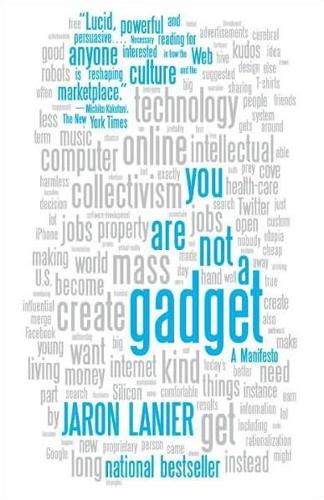
You Are Not a Gadget
by
Jaron Lanier
Published 12 Jan 2010
The Turing Test Cuts Both Ways Whatever the motivation, Turing authored the first trope to support the idea that bits can be alive on their own, independent of human observers. This idea has since appeared in a thousand guises, from artificial intelligence to the hive mind, not to mention many overhyped Silicon Valley start-ups. It seems to me, however, that the Turing test has been poorly interpreted by generations of technologists. It is usually presented to support the idea that machines can attain whatever quality it is that gives people consciousness. After all, if a machine fooled you into believing it was conscious, it would be bigoted for you to still claim it was not.
…
The real customer is the advertiser of the future, but this creature has yet to appear in any significant way as this is being written. The whole artifice, the whole idea of fake friendship, is just bait laid by the lords of the clouds to lure hypothetical advertisers—we might call them messianic advertisers—who could someday show up. The hope of a thousand Silicon Valley start-ups is that firms like Face-book are capturing extremely valuable information called the “social graph.” Using this information, an advertiser might hypothetically be able to target all the members of a peer group just as they are forming their opinions about brands, habits, and so on. Peer pressure is the great power behind adolescent behavior, goes the reasoning, and adolescent choices become life choices.

To Pixar and Beyond
by
Lawrence Levy
“Steve was on board when we negotiated with Disney to make a feature film. He was a big help in making it happen. But he still gets frustrated at having to keep funding the rest of Pixar.” “How much has he invested in the company?” I asked. “Close to fifty million,” Ed said. Fifty million! That was a huge number by Silicon Valley start-up standards. No wonder Steve griped when he had to put in more. I enjoyed talking to Ed. He wasn’t pulling any punches with me on our first meeting, even though what he was saying wasn’t making me feel great about this opportunity. Pixar felt like a company that had meandered from here to there but never found its way.
…
I thought to myself. So began a collaboration that would take Efi and me all over the world making deals with the titans of the office automation industry, companies like Canon, Xerox, Ricoh, and Kodak. Developing fair arrangements with these enormous companies was no small task for tiny Silicon Valley start-ups. In fact, my entire law practice was built around doing this. The habit of corporate giants like these was to try to tie up the start-ups every which way they could, often blocking their freedom to become independent, thriving companies. The large corporations often had impenetrable walls of bureaucracy that were stifling to the far nimbler start-ups.
…
If there was one person I could turn to for that, it was my old boss and mentor, Larry Sonsini. 10 On Board Larry Sonsini was the managing partner at my old law firm, Wilson, Sonsini, Goodrich & Rosati. He was a legend in Silicon Valley, and with good reason. Larry was Silicon Valley’s resident guru on start-ups and IPOs; he had built the firm advising many if not most of Silicon Valley’s most famous start-ups, guiding them and advising them through their initial public offerings and beyond. He was chief legal adviser to Silicon Valley’s most prominent CEOs and boards of directors. If Silicon Valley had a consigliere, it was Larry. Within the law firm, Larry inspired a combination of admiration and awe.
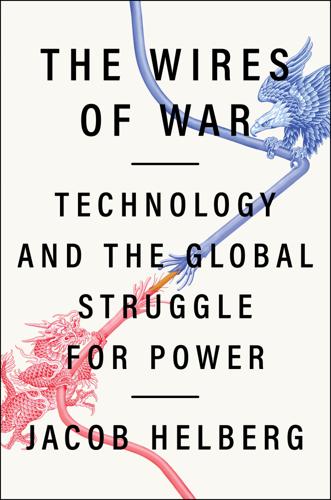
The Wires of War: Technology and the Global Struggle for Power
by
Jacob Helberg
Published 11 Oct 2021
That morning, fortified by several cups of coffee, I left my house in San Francisco’s Glen Park neighborhood and hopped on the Google bus to Mountain View. At around 6:00, I walked into the storied Googleplex, the sprawling campus of low-slung glass-and-brick buildings that make up the company’s main headquarters. Google was the quintessential Silicon Valley start-up. Stanford PhD students Larry Page and Sergey Brin had incorporated the company in 1998, after working out of the garage of Susan Wojcicki (now YouTube’s CEO). By the time I joined, nearly two decades later, Google had grown into one of the most iconic companies on the planet. There were more than 60,000 Googlers working around the world, on everything from perfecting search engines to testing self-driving cars.1 Those products and services brought in an astonishing $90 billion in annual revenue.2 Within a year Google would briefly dethrone Apple as the most valuable brand in the world.3 Google had become the kind of company every scrappy start-up sought to unseat.
…
This was the rationale behind more than a dozen manufacturing hubs the Obama administration established, in cities from Detroit, Michigan35 to Knoxville, Tennessee.36 Future efforts should continue to focus on building hubs in the industrial Midwest—for instance in my father’s native Ohio—which has been hardest hit by deindustrialization but retains deep manufacturing expertise. A number of notable efforts—including Mark Kvamme and Chris Olsen’s Drive Capital, former AOL CEO Steve Case’s Rise of the Rest fund, and J. D. Vance’s Narya, a venture capital firm, Naryafund—have begun to incubate a Silicon Valley start-up culture in struggling midwestern communities, defying the narrative that says only Silicon Valley can reap the gains of the tech revolution. While the vast majority of tech growth remains concentrated in a handful of big cities,37 tech investment in middle America has tripled to more than $20 billion over the past decade,38 leading to talk of a “Silicon Prairie.”
…
sh=7c5a86af9857. 9 Harrison Weber, “Airbnb officially closes its $475 million megaround,” VentureBeat, August 1, 2014, https://venturebeat.com/2014/08/01/airbnb-officially-closes-its-475-million-mega-round/. 10 Josh Ong, “Uber announces UberPool, a carpooling experiment with 40% lower prices than UberX,” The Next Web News, August 6, 2014, https://thenextweb.com/insider/2014/08/06/uber-announces-uberpool-carpooling-experiment-40-lower-prices-uberx/. 11 Ananya Bhattacharya, “Fitbit is now worth $4.1 billion after IPO,” CNN Money, June 25, 2015, https://money.cnn.com/2015/06/17/investing/fitbit-ipo/index.html. 12 Quentin Hardy, “Palantir, a Silicon Valley Start-Up, Raises Another $880 Million,” New York Times Business, Innovation, Technology, Society, December 23, 2015, https://bits.blogs.nytimes.com/2015/12/23/palantir-a-silicon-valley-start-up-raises-another-880-million/. 13 Katie Benner, “The ‘Unicorn’ Club, Now Admitting New Members,” New York Times, August 23, 2015, https://www.nytimes.com/2015/08/24/technology/the-unicorn-club-now-admitting-new-members.html. 14 Maeve Duggan, “Mobile Messaging and Social Media 2015,” Pew Research Center, August 19, 2015, https://www.pewresearch.org/internet/2015/08/19/mobile-messaging-and-social-media-2015/. 15 Jonathan Allen and Amie Parnes, HRC: State Secrets and the Rebirth of Hillary Clinton (New York: Random House, 2014). 16 Veronica Toney, “Complete guest list for the state dinner in honor of Chinese President Xi Jinping,” Washington Post, September 25, 2015, https://www.washingtonpost.com/news/reliable-source/wp/2015/09/25/complete-guest-list-for-the-state-dinner-in-honor-of-chinese-president-xi-jinping/. 17 Robinson Meyer, “The Secret Startup That Saved the Worst Website in America,” The Atlantic, July 9, 2015, https://www.theatlantic.com/technology/archive/2015/07/the-secret-startup-saved-healthcare-gov-the-worst-website-in-america/397784/. 18 David Dayen, “The Android Administration,” The Intercept, April 22, 2016, https://theintercept.com/2016/04/22/googles-remarkably-close-relationship-with-the-obama-white-house-in-two-charts/; Brody Mullins, “Google Makes Most of Close Ties to White House,” Wall Street Journal, March 24, 2015, https://www.wsj.com/articles/google-makes-most-of-close-ties-to-white-house-1427242076. 19 Andrew Orlowski, “Revealed: The revolving door between Google and the US govt—in pictures,” The Register, April 29, 2016, https://www.theregister.com/2016/04/29/google_transparency_project/; “Our Offices,” Google, https://about.google/intl/en_us/locations/?

The Optimist: Sam Altman, OpenAI, and the Race to Invent the Future
by
Keach Hagey
Published 19 May 2025
So we thought that if we spun it out, we could raise money with people who could help us, and we could hire a team that was native to the business.” In 2011, Condé Nast’s parent company, Advance Publications, turned Reddit into an independent subsidiary, and recruited PayPal and Facebook veteran Yishan Wong to lead it as CEO. The new structure would allow Wong to raise money for Reddit like it was any other Silicon Valley startup. That prompted him to make a visit to YC. In the spring of 2014, Wong pulled into YC’s Mountain View parking lot in a blue Tesla, at the same time Altman was stepping out of his own blue Tesla, according to Christine Lagorio-Chafkin’s book on Reddit, We Are the Nerds. The two men hit it off.
…
It was because of these odd rules that Altman chose to forgo taking any equity in the company he co-founded and was about to formally run—a situation virtually without precedent in the history of American business. At the time, it seemed that he was simply forgoing money for power, as there is nothing more important in a Silicon Valley startup—right up to and including the product itself—than being able to manage the terms of one’s deals with investors, and how one’s employees will be paid out their equity. These are the gas and brakes of the race car. Without them, the steering wheel is irrelevant. With the new structure came a new, bigger board, which included Tasha McCauley, Reid Hoffman, Adam D’Angelo (the CEO of Quora), and Shivon Zilis (an executive at Musk’s Neuralink).
…
CHAPTER 9“A RIDE ON A ROCKET” 1.Max Chafkin, The Contrarian: Peter Thiel and Silicon Valley’s Pursuit of Power (New York: Penguin Press, 2021), 170–72. 2.David Brooks, “The Creative Monopoly,” The New York Times, April 23, 2012. 3.Blake Masters, “CS183: Startup—Peter Thiel Class 1 Notes Essay,” April 3, 2012. 4.Blake Masters, “CS183: Startup—Peter Thiel Class 15 Notes Essay,” May 31, 2012. 5.Bruce Gibney, “What Happened to the Future,” Founders Fund website, updated January 2017. 6.Elizabeth Weil, “Sam Altman Is the Oppenheimer of Our Age,” New York, September 25, 2023. 7.Stross, The Launch Pad, 196. 8.Sophie Bearman, “OpenAI’s Sam Altman: The Human Behind the Machine,” Life in Seven Songs podcast, The San Francisco Standard, September 24, 2024. 9.Peter Thiel, “The New Atomic Age We Need,” The New York Times, November 27, 2015. 10.Kyle Russel, “Y Combinator and Mithril Invest in Helion, a Nuclear Fusion Startup,” TechCrunch, August 1, 2014. 11.David Perell, “I Interviewed the Man Behind ChatGPT: Sam Altman,” YouTube video, 21:24, uploaded November 27, 2024. 12.Stross, Launchpad, 28. 13.Steven Levy, “YC Has Gone Supernova,” Wired, June 28, 2017. 14.Nathaniel Rich, “Silicon Valley’s Start-up Machine,” The New York Times Magazine, May 2, 2013. 15.Eliezer S. Yudkowsky, “The Low Beyond,” 1996. 16.Ed Regis, “Meet the Extropians,” Wired, October 1, 1994. 17.Jon Evans, “Extropia’s Children, Chapter 1: The Wunderkind,” Gradient Ascent, October 17, 2022. 18.Sabine Atkins, “Introducing Another Atkins (was Re: just me),” ExI Mailing List, September 14, 2000. 19.LessWrong, “Rationalist Movement,” accessed November 29, 2024. 20.Eliezer Yudkowsky, “Coherent Extrapolated Volition,” The Singularity Institute, San Francisco, 2004. 21.

Design for Hackers: Reverse Engineering Beauty
by
David Kadavy
Published 5 Sep 2011
A catalogue record for this book is available from the British Library. 978-1-119-99895-2 Set in 11pt Adobe Garamond Pro by Wiley Composition Services Printed in the United States by CJ Krehbiel About the Author David Kadavy is president of Kadavy, Inc., a user interface design consultancy with clients including oDesk, PBworks, and UserVoice, and mentor at the 500 Startups seed fund. Previously, David led the design departments of two Silicon Valley startups and an architecture firm, taught a college course in typography, and studied ancient typography in Rome while earning his BFA in graphic design at Iowa State University. David’s design work has been featured in Communication Arts magazine, and he has spoken at the South by Southwest (SXSW) Interactive conference.
…
I studied the very origins of modern typography in the ruins of the ancient Roman Empire. I’ve even discussed the hidden meaning of something as simple as a brick or a piece of wood, while working at an architecture firm. Finally, I’ve implemented the fruits of all this practice and analysis in the fast-paced environment of Silicon Valley startups. Design and visual communication is so deeply embedded in my brain that I’m hardly aware of its presence. My handwriting still sucks, though. Design as Literacy One evening, I was “moworking” in a cafe with my friend Ziad, coding some design tweaks to the WordPress template for my blog.
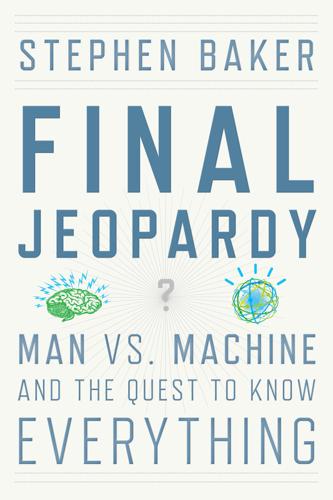
Final Jeopardy: Man vs. Machine and the Quest to Know Everything
by
Stephen Baker
Published 17 Feb 2011
New machines, after all, are in the business of replacing people—not something that often generates a warm welcome. The third issue involved competition. Assuming that natural-language, data-snarfing, hypothesis-spouting machines made it into offices and laboratories, who was to say that they’d be the kin of a Jeopardy contraption? Other companies, from Google to Silicon Valley startups, were sure to be competing in the same market. The potential for these digital oracles was nearly limitless. But in each industry they faced obstacles, some of them considerable. Medicine was one of the most promising areas but also among the toughest to crack. The natural job for Watson would be as a diagnostic aid, taking down the symptoms in cases like Ferrucci’s and producing lists of possible conditions, along with recommended treatments.
…
Such analyses could save lives, Jasinski said. ”We kill a hundred thousand people a year from preventable medical errors.” In fact, the potential for next-generation computers in medicine stretches much further. Within a decade, it should cost less than $100 to have an individual’s entire genome sequenced. Some people will volunteer to have this done. (Already, companies like 23andMe, a Silicon Valley startup, charge people $429 for a basic decoding.) Others, perhaps, will find themselves pressed, or even compelled, by governments or insurers, to submit their saliva samples. In either case, computers will be studying, correlating, and answering questions about growing collections of this biological information.
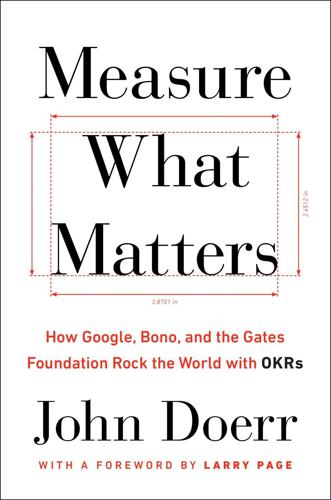
Measure What Matters: How Google, Bono, and the Gates Foundation Rock the World With OKRs
by
John Doerr
Published 23 Apr 2018
And we failed because I was arrogant. We spent lots of time meeting potential investors and working up intricate website schematics, and no time learning about teachers’ problems. We weren’t yet focused on what counted. Down to a few hundred dollars, our company cheated death by getting into Imagine K12, the Silicon Valley start-up accelerator for the education market. Our mission statement went something like: “Remind101: A safe way for teachers to message students and parents. We’re building the most powerful communication platform in education and using SMS as the ‘hook.’ Think Twitter, for education.” There were millions of children with learning issues like mine, and countless teachers struggling to help them.
…
OKRs furnished the pathway for Coursera’s mission. They enabled teams to articulate their goals and to align with the company’s objectives—and with its broader values, as well. Years later, the company’s friendly, inclusive culture remains a welcome contrast to the blustery, combative personality of many Silicon Valley start-ups. Coursera team with former president and COO Lila Ibrahim (left), cofounder Daphne Kohler (to the left of John Doerr), and cofounder Andrew Ng (far right), 2012. As Rick Levin, Coursera’s former CEO, said, “I can’t imagine where we would be without OKRs. The discipline forces us to look back every quarter and hold ourselves accountable, and to look ahead every quarter to imagine how we can better live our values

Reinventing Capitalism in the Age of Big Data
by
Viktor Mayer-Schönberger
and
Thomas Ramge
Published 27 Feb 2018
Outside investment increases a company’s flexibility, and it also conveys further information—about the prowess of the company as well as the trust that an investor has in it. Sometimes, the informational dimension of an outside investment may be more valuable than the capital inflow itself. When a highly respected venture capital (VC) firm such as Sequoia Capital invests in a Silicon Valley start-up, it’s akin to conferring a peerage in nineteenth-century England: the recipient gets immediate name recognition and often gains additional market value as a result. As markets embrace diverse information streams, these two functions of capital—information and value—are no longer necessarily intertwined.
…
In general, more money is becoming available for capital investments as investors are trying to identify opportunities that offer higher returns than the rock-bottom interest rates available through conventional and conservative investment mechanisms. Attracting capital, especially for start-ups in the right location, is far easier today than it was in earlier decades. One CEO of a Silicon Valley start-up commented that the company, absent an urgent need, raised money simply because it could. At the same time, fewer investment options exist on conventional stock markets. In the United States, the number of listed companies is down from more than 9,000 in the late 1990s to fewer than 6,000 in 2016.
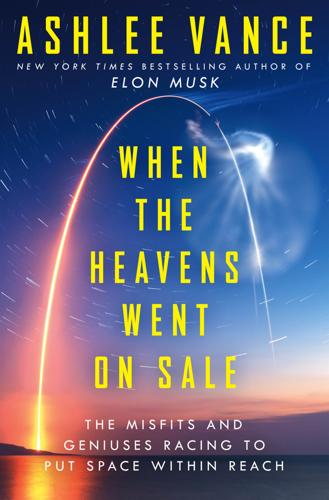
When the Heavens Went on Sale: The Misfits and Geniuses Racing to Put Space Within Reach
by
Ashlee Vance
Published 8 May 2023
Both men had experience working on the Strategic Defense Initiative (SDI) during the Ronald Reagan years. Dubbed “Star Wars,” SDI proposed to fill space with a variety of futuristic weapons designed to take down enemy missiles before they could reach the United States. Like Worden, Griffin had a fondness for doing weird stuff in space and an appreciation of the Silicon Valley start-up ethos. Griffin began to think that perhaps Worden could shake up Ames and bring some New Space, tech-friendly vibes to the place, so he tapped him as Ames director in May 2006. “Mike said, ‘I want you to come and work for me, but you can’t keep making those statements about NASA out loud,’” Worden said.
…
Schingler had a gift for dealing with the more practical business matters, such as setting and executing a strategy and hiring, and would focus on nurturing relationships between Planet and its customers. A handful of people from Ames also agreed to risk the stability of their NASA jobs and go on the start-up adventure, including Vincent Beukelaers, Matthew Ferraro, Ben Howard, James Mason, and Mike Safyan. Like any good Silicon Valley start-up, Planet Labs sprang to life in a garage. The team would discuss their concepts in the comfort of the Rainbow Mansion and then head to their garage to try and turn their ideas into working hardware. The basic concept was to build the smallest, cheapest satellite capable of taking decent pictures of Earth.
…
New Zealand, he said, was a country with no predators; as a result, some of the birds did not even fly because historically they had had nothing to flee. And although the Māori had a word for space, they didn’t have one for a rocket. Beck had now changed the country’s relationship with the skies and the heavens. Aotearoa had put something into space for the first time. Chapter Thirteen The Military Is Not So Bad In Silicon Valley, technology start-ups often try to raise more money after they’ve hit certain milestones. You scrape by for a while on your initial funding, build a product that proves that you know what you’re doing, then encourage rich people to marvel at that product, dream about what could come next, and cut you a fresh batch of much larger checks.

Palo Alto: A History of California, Capitalism, and the World
by
Malcolm Harris
Published 14 Feb 2023
It also acquired Perot’s contracts, including one in Japan with the NSA, where Perot employee Ed Snowden was connecting the agency’s information systems with the ones at the CIA. x In 2015, Business Insider published a Mother’s Day list of Silicon Valley start-ups organized by which childish complaints (e.g., “Mom, what’s for dinner?” and “Mom, I don’t want to clean my room!”) they served to answer. As I write seven years later, such firms absorb a shockingly large portion of American investment. Biz Carson, “Silicon Valley Start-ups Are Obsessed with Developing Tech to Replace Their Moms,” Business Insider, May 10, 2015. xi Though Google’s buses were the most prominent, to the point of synecdoche, other South Bay firms followed their example.
…
When the irascible comp sci boss, Les Earnest, found out his employees were sneakily redirecting Stanford resources into their private start-up, going so far as to sell boards that were made on campus, he forced their resignations. For a while, the conventional wisdom about the creation of cisco Systems—all lowercase to start, as in the last part of San Francisco—was that Lerner and Bosack were inventor-entrepreneurs, icons of a new wave of Silicon Valley start-ups and founders of the fastest-growing company in American history. The couple in charge was portrayed as naive even, getting pushed out of their own company by conniving venture capitalists, a cautionary tale for the inventors who followed. But after Bosack’s and Lougheed’s former boss on the router project, Tom Rindfleisch, published his revisionist account in 1999, Yeager and the broader Stanford network got more credit.2 The cisco team, on the other hand, gets credit for pursuing an ask-forgiveness-later strategy to wild success.
…
“You are empowering people, whether they live in the barrios or a mansion, and allowing them to take control of their health care,” the future president told the media, symbolically lending Holmes and her fraud the White House seal.7 But as Carreyrou documented in his reporting for the Wall Street Journal and in his book Bad Blood: Secrets and Lies in a Silicon Valley Startup, Theranos moved fast and broke things (and people) to no useful end. When it rushed its blood tests into drugstores, they yielded false results. And when rumors threatened to topple the pyramid scheme, Theranos brought on feared litigator David Boies in exchange for stock. With Boies personally signing documents, whistleblower lawyers were hesitant to go after the company.

The Facebook era: tapping online social networks to build better products, reach new audiences, and sell more stuff
by
Clara Shih
Published 30 Apr 2009
Part II: Transforming the Way We Do Business • Chapter 4,“Social Sales,” speaks to the power of the online social graph for a sales cycle, from prospecting and the first call through to customer references, navigating customer organizations, and enabling sales teams to more easily collaborate. It features a case study on how Silicon Valley start-up Aster Data Systems has used employees’ collective MySpace, Facebook, and LinkedIn networks to source leads and build personal relationships with customers. • Chapter 5,“Social Network Marketing,” talks about the breakthrough new marketing techniques made possible by online social networks, including hypertargeting, enhanced ability to capture passive interest and conduct rapid testing and iteration on campaigns, social community engagement, and automated word-of-mouth marketing.
…
Figure 7.5 A request for referral sent to me from a LinkedIn connection. LinkedIn allows recruiters to tap extended networks not only for interested applicants but also for referrals of interested applicants, which has a multiplying effect on how many people within the trusted network they are able to reach. Silicon Valley start-up company Appirio has taken this concept to Facebook with Jobs4MyFriends, an application it developed that allows businesses to easily tap employees’ Facebook networks to source job candidates. Given the high costs of recruiting and From the Library of Kerri Ross 132 Pa r t I I Edited by Foxit Reader Copyright(C) by Foxit Software Company,2005-2008 Tra n s fo r m i n g t h e Way We D o B u s i n e s s For Evaluation Only.

Ask Your Developer: How to Harness the Power of Software Developers and Win in the 21st Century
by
Jeff Lawson
Published 12 Jan 2021
Eventually, they’ll have those expectations of every company, no matter what the industry. What that means is that every organization that hopes not just to survive but to succeed needs to understand how to innovate by building software, and how to hire and manage the people who build it. I’ve spent the last decade helping all kinds of companies, from Silicon Valley startups to Fortune 50 industrial behemoths, increase their chances of building game-changing innovations by adopting the principles outlined in my book The Lean Startup. As a result, I’ve often found myself trying to explain the semiconductor revolution to leaders who don’t understand software. Many still believe that this tsunami of disruption will somehow bypass their business.
…
In twenty minutes, an entrepreneur can form a Delaware C-Corp, open a bank account, get set up to receive credit card payments online, and even get startup credits for popular startup services like Amazon Web Services and Google Cloud. Would Patio11, the consummate independent developer, have joined a big company if they asked him to grind out code? Not likely. But Collison shared a big, giant, hairy problem and asked him to solve it, while providing him with the resources of a well-funded Silicon Valley startup and the support of its founders. For a developer like Patio11, that’s an exciting challenge. Call for Startups Paul Graham cofounded Y Combinator, one of the most successful Silicon Valley incubators and early-stage investors. Since its founding in 2005, Y Combinator has funded more than two thousand startups, including Airbnb, Stripe, DoorDash, and Dropbox.
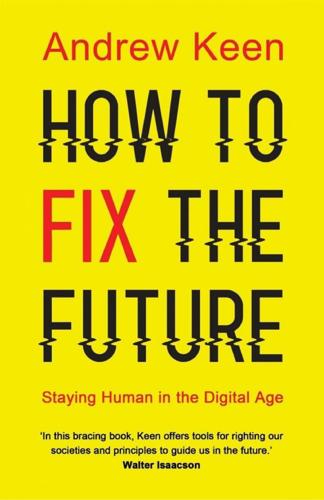
How to Fix the Future: Staying Human in the Digital Age
by
Andrew Keen
Published 1 Mar 2018
And Kapor Capital is a seed-stage investor in both for-profit and nonprofit tech start-ups; between 2015 and 2017, it has already invested $40 million in education that focuses on improving access for minorities. Forty-four of these seventy-nine investments (59 percent) have a founder who is a woman or a person of color; 42 percent of their first-time investments have a female founder; and 28 percent have a founder who is a member of a racial minority. In contrast with all too many Silicon Valley start-ups that have no clear benefit to the broader community, all of Kapor Capital’s investments have a social purpose. There’s Pigeonly, for example, founded by the formerly incarcerated Frederick Hutson, which helps inmates make calls from prison. There’s Phat Startup, a company focused on helping young inner-city people who identify with urban culture succeed in developing technology careers.
…
Indeed, a July 2017 report about the gig economy by the British MP Frank Field alleges that some self-employed UK drivers are earning only £2.50 an hour working for sharing economy companies like Parcelforce and webuyanycar.com.30 “In reality, there is no utopia at companies like Uber, Lyft, Instacart and Handy, whose workers are often manipulated into working long hours for low wages while continually chasing the next ride or task,” that 2017 New York Times editorial argues.31 Or, as the New Yorker staff writer Jia Tolentino bluntly put it, commenting on the cult of work celebrated by on-demand companies such as the freelance marketplace Fiverr, “The gig economy celebrates working yourself to death.”32 My own experience as a heavy Uber user chimes with these conclusions. On my travels around the world to research this book, I’ve discussed the value of Uber with many of my drivers. Very few had anything good to say about the Silicon Valley start-up, and most admitted that they were looking for alternative ways to make extra money. There was, for example, the Singaporean retiree, a former marketing executive at Singapore Airlines, who had been pushed into driving an Uber vehicle because his son wanted him out of the house. He worked sixty hours a week and made 500 Singapore dollars (around $350)—“less than a cleaner,” he told me disgustedly about his less-than-six-dollars-an-hour rate.

Death Glitch: How Techno-Solutionism Fails Us in This Life and Beyond
by
Tamara Kneese
Published 14 Aug 2023
If technology would just change fast enough, their theory speculates, we might turn away from work and instead focus on more creative pursuits. There is an obvious incommensurability between companies that promise to organize your digital belongings for eternity and Silicon Valley’s pacing. Contemporary technoculture conjures the pristine whiteness of the Apple store and monochromatic wardrobes. For Silicon Valley startup culture, dealing with death raises some concerns about future projections and risk. Instead of trusting religious entities with their immortal souls, users should put their faith in the tech industry. Rather than employing established institutions or kinship networks to manage digital belongings, ordinary users are expected to outsource that labor to a host of relatively new web-based companies that might very well dissolve within a decade.
…
For instance, Prudential’s logo, an image of the limestone Rock of Gibraltar, tells customers that Prudential, as a corporate entity, will outlast their individual human life spans, associating it with the natural world (and imperialism). Death care startups are fundamentally intertwined with Silicon Valley technoculture. International networks and a globalized sense of entrepreneurship inform the region’s moral vision, while Silicon Valley–style startups exist across the United States and around the world.33 The valley’s exclusionary logics are embodied in social media platforms, which have a massive global reach.34 Startups attempt to “disrupt” industries they view as obsolete or clunky. Or, as one of my interview subjects put it, “Investors say the most boring industries are the most lucrative.”
…
It would not be a kitchen computer, a la Honeywell/Neiman Marcus—but a ‘family room’ game room, study computer.”63 The Computer History Museum has one of the original Honeywell Kitchen Computers in its collection, so Bell and his associates clearly think it represents an important chapter in the history of computing. As a founding board member of the Computer History Museum, Bell takes a pragmatic approach to digital immortality. He knows from his time in Silicon Valley how quickly startups and even corporate giants can fade. And yet, despite these setbacks, there is part of him that wants to preserve his communicative traces for future generations so that a piece of him can live on. This is one way of being a good ancestor. The Transhuman Dream House Religious transhumanism highlights the role that social and sexual reproduction play in long-term digital legacy, whether this is acknowledged or not.
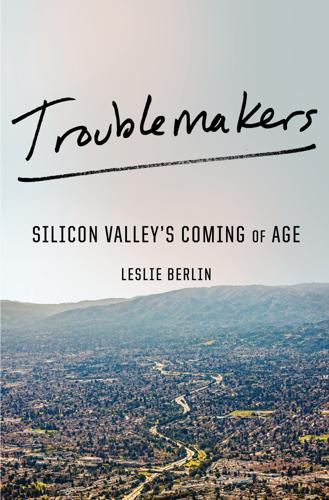
Troublemakers: Silicon Valley's Coming of Age
by
Leslie Berlin
Published 7 Nov 2017
Individual companies had begun to attract outside interest—Intel would have a successful IPO in 1971, for example—but three years would pass before any major national publication wrote about the Peninsula as a distinct, technology-based regional economy.2 Years would pass before the name “Silicon Valley” gained widespread use.III In the early 1970s, Silicon Valley startup companies were largely deemed irrelevant to the real business of the United States, which was concentrated in East Coast financial centers and cities such as Detroit, Pittsburgh, and Chicago that had manufacturing at their core. The nation’s new minicomputer companies, Digital Equipment Corporation (DEC) most prominent among them, were clustered near MIT and Harvard, along Boston’s Route 128.
…
Bristow concurs: “The thinking moved from ‘We don’t know what we can do, so let’s give it a try’ to ‘You need to prove why you need to do this new product.’ ” Decades later, Alcorn still cannot understand why, at a time when Atari’s revenues were so high that it would have made no discernible difference to the bottom line if the Cosmos hologram system failed, Kassar was unwilling to risk its release. Kassar and the rest of the Warner executive team, in Alcorn’s estimation, were paralyzed by “the fear of failure”: “They weren’t Silicon Valley, they weren’t start-up guys, they were not risk takers—so nothing came out!”55 Even more important than Kassar’s East Coast roots, however, was his lack of technical background. He was a marketing expert who believed, correctly, that much of the success of the VCS had come from the marketing push behind it.
…
An experienced salesman, he had met Kurtzig when he had come to California to see if she wanted to sell ASK to the giant computer-leasing conglomerate Itel Corporation, his then employer. After spending the day with Lavey, Kurtzig declared, “I don’t want to be bought by Itel, but I want to buy you. How much do you cost?” Kurtzig was on the cusp of recognizing that ASK, a small business started at her kitchen table, might be a high-tech Silicon Valley startup. Certainly Paul Ely, a computing executive at Hewlett-Packard, saw ASK that way. When Kurtzig asked him to suggest potential board members—she, her father, and Arie were the ASK board at that point—he recommended men enmeshed in Silicon Valley’s financial and entrepreneurial networks.VI One of those men was Burt McMurtry, now sitting across the restaurant table from Kurtzig.

The Powerhouse: Inside the Invention of a Battery to Save the World
by
Steve Levine
Published 5 Feb 2015
At the time, it appeared that, in the automotive world, only Kumar and Sinkula were aware of Argonne’s NMC formulation. They alone seemed to conclude that, if you were thinking of profit-making applications, NMC 2.0 was the most promising battery material available. Kumar had identified its properties at the Silicon Valley start-up company where he and Sinkula previously worked. The start-up, NanoeXa, sought to develop batteries for power tools, and Kumar, its chief engineer, had stumbled on the NMC after a months-long hunt for an edge over incumbent companies. He had examined hundreds of patents and academic papers on lithium-ion.
…
Both he and Kumar said they favored cashing out—whenever it was in their interest. But to turn one of the interested car giants into an actual buyer, they needed to advance their technology a bit more. They could also take a greater risk and go to the equity market. They could offer shares in an initial public offering—an IPO, the traditional aim of Silicon Valley start-ups seeking to monetize their years of toil. They had a firm idea of what an IPO should raise. A billion dollars, Kumar said. That was Kumar’s and Kapadia’s personal goal—a $1 billion payout. Late one night, Chamberlain called Kumar’s founding partner, Sinkula. “Look, I am about to put my reputation on the line by pulling the string on this,” he said, meaning to stir up American interest in Envia.

WTF?: What's the Future and Why It's Up to Us
by
Tim O'Reilly
Published 9 Oct 2017
It has become a leader in online entertainment of all kinds, rivaling Netflix as the next-generation movie and television studio. And with the Amazon Echo, it has become a force in bringing intelligent agents and AI into the consumer realm. But arguably the most important thing that Amazon did was to turn its e-commerce application into a cloud computing platform on which the bulk of Silicon Valley startups operate; as the cloud model has matured, large, established enterprises have migrated to it as well. The lessons of this business transformation alone could fill a book (and will be the subject of a later chapter in this one). Apple led the generational shift from the personal computer to the smartphone, and from the web to mobile apps.
…
The experiment was so successful that they decided to build out a short-term room, apartment, and home rental service for the upcoming SXSW technology conference in Austin, Texas, because they knew that every hotel room in the city would be sold out. They followed that up by doing the same thing for the 2008 Democratic National Convention, held in Denver, Colorado. In 2009, they were accepted into Y Combinator, the prestigious Silicon Valley startup incubator, and then received funding from one of Silicon Valley’s top venture firms, Sequoia Capital. But despite a promising start, they were still struggling with acquiring users fast enough. The breakthrough came when they realized that hosts were taking lousy photographs of their properties, leading to lower trust and thus lower interest by possible renters.
…
Meanwhile, the advantages accruing to firms from new technology are deeply wrapped up in their ability to train their workforce and change their workflows to accommodate it. This retraining was central, for example, to former IBM CIO Jeff Smith’s attempt to transform IBM’s internal software development culture to one that mirrors the agile, user-centered, data-driven, and cross-functional approach that characterizes today’s Silicon Valley startups. Except that instead of doing it at a startup, he was doing it for a software development team of 20,000 people, in support of a company with more than 400,000 employees. Laura Baldwin, president and COO at O’Reilly Media, tells our customers, “You have to go to war with the army you have.”
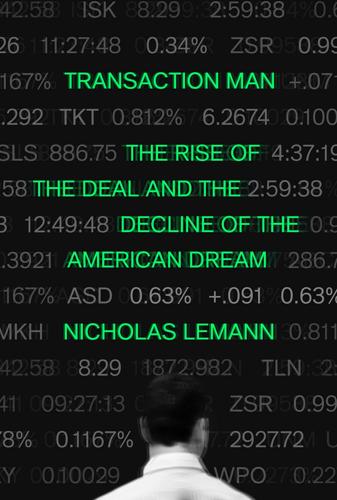
Transaction Man: The Rise of the Deal and the Decline of the American Dream
by
Nicholas Lemann
Published 9 Sep 2019
And Facebook had thought it wise to acquire even newer potential rivals, for prices like $1 billion for Instagram, when it had thirteen employees, and $19 billion for WhatsApp, when it had fifty-five employees, when both were years away from being profitable or even from producing significant revenues. Successes like these were exceedingly rare. One study of Silicon Valley start-ups found that almost three-quarters of company founders who got funding from venture capital firms—and these were the lucky ones, representing a small minority of those who pitched to the venture firms—wound up making nothing. The common wisdom in Silicon Valley had it that one start-up a year, of perhaps thirty thousand, would wind up being as valuable as all the others combined, and that the ten most successful would account for more than 95 percent of the value of all of them.
…
NETWORK MAN you might well wind up in Silicon Valley: General background and history about Silicon Valley comes from author’s interviews with Arthur Rock, Hal Varian, Laszlo Bock, AnnaLee Saxenian, Bob Metcalfe, Ben Rosen, Reid Hoffman, Thomas Perkins, John Doerr, John Lilly, David Sze, David Hahn, Michael Mandel, Joe Kraus, Josh Kopelman, Nancy Lublin, Joi Ito, Peter Thiel, Simon Rothman, George Arison, David Sanford, Mark Pincus, Jeff Weiner, Premal Shah, James Manyika, Evan Williams, Allen Blue, Ann Miurako, John Etchemendy, Mike Maples, Roy Bahat, Terry Winograd, Ian McCarthy, Jen Pahlka, Tim O’Reilly, Linda Rottenberg, Ben Casnocha, and Dan Portillo. Arthur Rock, by now retired: Author’s interviews with Arthur Rock. One study of Silicon Valley start-ups: Susan E. Woodward and Robert E. Hall, “Benchmarking the Returns to Venture,” NBER Working Paper Number w10202 (January 2004). Reid Hoffman’s association with Silicon Valley: Reid Hoffman’s story comes from author’s interviews with Hoffman. “At PayPal, we broke the rules”: Reid Hoffman, Blitzscaling, Currency, 2018, 180.
…
commissions, fixed Committee to Restore Dealer Rights Commodity Futures Modernization Act; process behind Commodity Futures Trading Commission (CFTC) communism; failure of; rejection of community organizing; see also interest groups Community Reinvestment Act Comptroller of the Currency computers; in investment banking; see also Silicon Valley Concept of the Corporation (Drucker) conformity conglomerates; see also leveraged buyouts; mergers and acquisitions Congregationalist church Congress: auto dealers and; bailout authorized by; banking regulated by; campaign contributions to; confirmation hearings by; corporate oversight by; deregulation by; housing regulated by; lobbying of consumers; corporations held accountable by; deregulation for; manipulation of Coordination, Control, and the Management of Organizations (class) Corporation in Modern Society, The (Mason) corporations; advertising used by; as autocratic; big government as counter to; as black box; boards of; conservative critiques of; converted to pure market entities; debt of; executives of, see executives; finance vs.; founders of; jobs lost at; liberal acceptance of; liberal critiques of; lifetime employees of; regulation of; research labs of; shareholders of, see shareholders; in Silicon Valley; as social institutions; start-ups vs.; trustbusting as counter to; as unforeseen by founders of U.S.; in web of related institutions; see also General Motors; institutions; Organization Man corruption Council of Economic Advisers countervailing power Countrywide Cowles, Alfred Cowles Commission for Research in Economics crime; white collar Croly, Herbert Cruz, Zoe Cuba Daley, Bill D’Andrea, Amy D’Andrea, Nick Darvish, Tamara Davis Polk Debreu, Gerard Debs, Eugene debt: in auto industry; corporate; derivatives and; foreign; hedge funds and; interest rates and; of investment banks; junk bonds and; in leveraged buyouts; risk magnified by; see also mortgages democracy; threats to Democratic Party: in Chicago; databases of; deregulation by; Silicon Valley and; Wall Street donors to Department of Labor deposits, insurance of deregulation; by Democrats; globalization and; interest rates and; of mortgages; in 1970s; skeptics of derivatives; fight to keep unregulated; regulated by EU; risks of; skepticism about; volume of; see also specific financial instruments D.
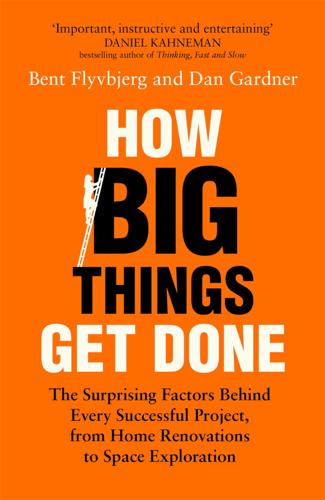
How Big Things Get Done: The Surprising Factors Behind Every Successful Project, From Home Renovations to Space Exploration
by
Bent Flyvbjerg
and
Dan Gardner
Published 16 Feb 2023
Sophia Kunthara, “A Closer Look at Theranos’ Big-Name Investors, Partners, and Board as Elizabeth Holmes’ Criminal Trial Begins,” Crunchbase News, September 14, 2021, https://news.crunchbase.com/news/theranos-elizabeth-holmes-trial-investors-board/. 23. John Carreyrou, Bad Blood: Secrets and Lies in a Silicon Valley Startup (New York: Alfred A. Knopf, 2018), 299; U.S. v. Elizabeth Holmes, et al., https://www.justice.gov/usao-ndca/us-v-elizabeth-holmes-et-al. 24. Leonid Rozenblit and Frank Keil, “The Misunderstood Limits of Folk Science: An Illusion of Explanatory Depth,” Cognitive Science 26, no. 5 (2002): 521–62; Rebecca Lawson, “The Science of Cycology: Failures to Understand How Everyday Objects Work,” Memory & Cognition 34, no. 8 (2006): 1667–75. 25.
…
Cantarelli, Chantal C., Eric J. E. Molin, Bert van Wee, and Bent Flyvbjerg. 2012. “Characteristics of Cost Overruns for Dutch Transport Infrastructure Projects and the Importance of the Decision to Build and Project Phases.” Transport Policy 22: 49–56. Carreyrou, John. 2018. Bad Blood: Secrets and Lies in a Silicon Valley Startup. New York: Alfred A. Knopf. Caro, Robert. 1975. The Power Broker: Robert Moses and the Fall of New York. New York: Vintage. Caro, Robert A. 2019. Working: Researching, Interviewing, Writing. New York: Vintage. Carson, Thomas L. 2006. “The Definition of Lying.” Noûs 40 (2): 284–306. Catmull, Ed. 2014.

Startup Communities: Building an Entrepreneurial Ecosystem in Your City
by
Brad Feld
Published 8 Oct 2012
In some cases, the TTO is tightly integrated into the fabric of the university; in others it is a separate organization with a clear mission to generate as much revenue as possible through the capture and licensing of IP. I encourage all universities to look west toward the leadership of Stanford as an example, and the corresponding impact on the Silicon Valley startup community. I’m often asked how universities can better engage with the startup community. As a feeder, the university can be a great convener of entrepreneurial activities. Universities have great spaces to work, large conference and auditorium facilities, and lots of students and faculty interested in entrepreneurship.
…
It is cargo-cult startup-community creation, not unlike the post–World War II stories of island cultures in the Pacific that created fake runways in hopes those air force aviators would return with money and trade. This blind mimicry of Silicon Valley confuses the resources of that particular community with the causes of startup community creation, growth, and renewal. Much of what makes Silicon Valley or any startup community work has to do with things that happen below the surface. It has to do with the permeability of organizational boundaries, dictating whether people can move freely and bring their talents with them. It is driven by the continuous collision of young entrepreneurs in a dense urban environment who are coming, going, or simply milling about.
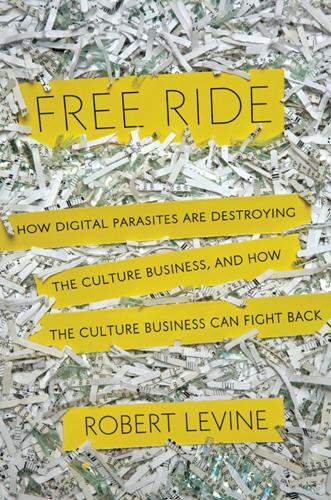
Free Ride
by
Robert Levine
Published 25 Oct 2011
Record labels were even more involved, and they pushed for legislation that would require “Webcasters” to pay for recordings they played online, even though traditional radio stations only paid songwriters.15 Lehman laid out his agenda for online copyright regulation in July 1994 with A Preliminary Draft of the Report of the Working Group on Intellectual Property Rights, unofficially known as the Green Paper. The proposed anticircumvention policy caused a stir in the Silicon Valley start-up scene, which reacted as though the new guy from the corporate office confused his computer’s CD-ROM tray with a cup holder: Don’t these guys know that information wants to be free? But the Green Paper got much more attention in Washington for the way it began to define what would legally count as a copy.
…
At the end of May 2000, about a month after Metallica delivered its boxes, Hummer Winblad Venture Partners invested $13 million in return for 20 percent of Napster and installed one of its partners, Hank Barry, as interim chief executive, a position he ended up keeping for a year and a half. An intellectual property lawyer who had done work for A&M Records as well as numerous Silicon Valley start-ups, Barry understood both businesses and had an easy time talking with label executives, many of whom shared his professional background. Within a week of starting at Napster, he met with the Universal Music digital executives Albhy Galuten and Lawrence Kenswil at the Palo Alto office of Wilson Sonsini Goodrich & Rosati, the law firm where he worked before going to Hummer.

The Industries of the Future
by
Alec Ross
Published 2 Feb 2016
“What I’ve noticed,” he says, “is that good cybersecurity comes from smart researchers, and smart researchers tend to agglomerate with one another in small groups and start-ups.” Eventually, Bronk thinks, a big company or a big defense firm bulking up their respective cyberdefenses could buy up or invest in these smart researchers. “Basically cybersecurity is going to be very similar to Silicon Valley start-up and acquisition patterns,” says Bronk. When a Silicon Valley company wants innovation, they either do the work in house or contract it out. “But getting companies to think differently about what they do and radically undercut their current way of business in some area and do something radically different to make much more money, that isn’t really in the culture of a lot of companies,” he adds.
…
The answer is probably no. And I’ll give you the simplest reason, which is what every regulator has told me: they are uncomfortable with a bank that grows more than 20 percent year over year. The number one historical indicator of a bank that is about to go belly-up is one that has a lot of growth. But a good Silicon Valley start-up grows 20 percent month over month.” Regardless, Zac made an effort. The room for improvement was too enticing for him to give up. Faced with regulatory hurdles to make a go of it as a bank in the United States, Zac’s company applied to become an independent bank in the United Kingdom, describing itself as a “technology-first wholesale bank.”

Dragnet Nation: A Quest for Privacy, Security, and Freedom in a World of Relentless Surveillance
by
Julia Angwin
Published 25 Feb 2014
“There is not really a market for consumer privacy software,” Marlinspike told me. He and other privacy-oriented cell phone developers—such as the Guardian Project—are funded largely through grants. Marlinspike said he has been trying to attract talented programmers who might otherwise go to work at Silicon Valley start-ups. He used his latest grant to fly a team of developers to Hawaii for a week of programming at the beach. But Marlinspike is working on a small scale. His apps—RedPhone and TextSecure—work only on Android and most of my friends are on iPhone, so I can’t encrypt our communications with his apps.
…
On a section of its website called “How we’re different,” PeopleSmart listed its “free and easy opt-out” as the top difference between itself and other people-search websites where it claimed, “Some don’t fully remove personal information, even when requested.” A bit of Web sleuthing led me to the surprising conclusion that this company was actually a hot Silicon Valley start-up called Inflection. Its website describes the company as a “Big Data start-up” and advertises employee perks like sailing trips, meditation, yoga, and hiking retreats. I fired off an angry e-mail demanding an explanation. To his credit, the company’s CEO, Matthew Monahan, replied almost immediately, promising to look into it.

Rise of the Robots: Technology and the Threat of a Jobless Future
by
Martin Ford
Published 4 May 2015
.* The sluggishness, however, results almost entirely from the staggering complexity of the computation required to perform this seemingly simple task. If there is one thing the history of information technology teaches, it is that this robot is going to very soon get a major speed upgrade. Indeed, engineers at Industrial Perception, Inc., the Silicon Valley start-up company that designed and built the robot, believe the machine will ultimately be able to move a box every second. That compares with a human worker’s maximum rate of a box roughly every six seconds.1 Needless to say, the robot can work continuously; it will never get tired or suffer a back injury—and it will certainly never file a worker’s compensation claim.
…
At the Rethink Robotics booth, Baxter had received Halloween training and was grasping small boxes of candy and then dropping them into pumpkin-shaped trick-or-treat buckets. There were also companies marketing components like motors, sensors, vision systems, electronic controllers, and the specialized software used to construct robots. Silicon Valley start-up Grabit Inc. demonstrated an innovative electroadhesion-powered gripper that allows robots to pick up, carry, and place nearly anything simply by employing a controlled electrostatic charge. To round things out, a global law firm with a specialized robotics practice was on hand to help employers navigate the complexities of labor, employment, and safety regulations when robots are brought in to replace, or work in close proximity to, people.
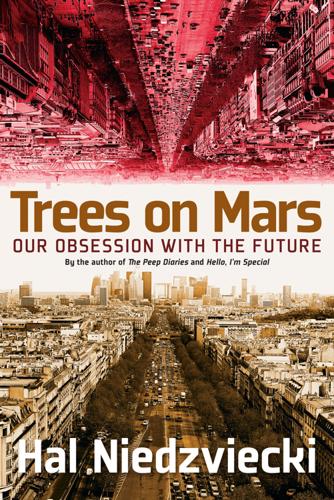
Trees on Mars: Our Obsession With the Future
by
Hal Niedzviecki
Published 15 Mar 2015
The look of the space—wide open, chaotic, customizable—is familiar to me from my visits to high-tech firms across North America. Everything from the cords dangling from the exposed ceiling to the translucent conference areas oozes innovation. Only, this isn’t the already too-cramped offices of a Silicon Valley start-up. This is the temporary home of Cornell Tech, university of the future. Cornell Tech is, in many ways, the brainchild of former New York City mayor Michael Bloomberg. Bloomberg held a competition for proposals for a new educational facility on Manhattan’s Roosevelt Island. The contest was part of an initiative called Applied Sciences NYC launched by Mayor Bloomberg in 2011.
…
The global financial data firm Bloomberg “logs every keystroke of every employee, along with their comings and goings in the office.”32 Over in Vegas, Harrah’s casino “tracks the smiles of the card dealers and waitstaff on the floor (its analytics team has quantified the impact of smiling on customer satisfaction).”33 More and more companies are not just storing but also analyzing e-mail, looking for “insights about our productivity, our treatment of co-workers, our willingness to collaborate or lend a hand, our patterns of written language, and what those patterns reveal about our intelligence, social skills, and behavior.”34 The trend with much of this “indoor logistics” is to generate data to predict the future. For instance, there’s Knack, a clever Silicon Valley start-up that makes games for mobile devices. The games include Dungeon Scrawl, in which players have to move through quest-themed mazes and puzzles, and Wasabi Waiter, which, as you might imagine, is a game in which players have to match up sushi to an ever-growing number of customers. But here’s the rub.
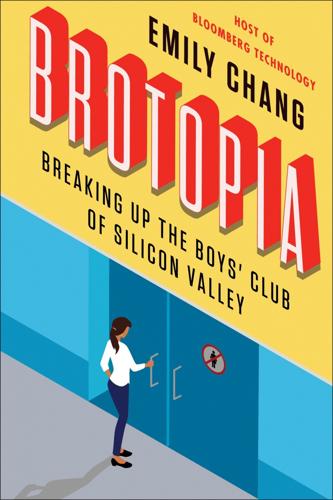
Brotopia: Breaking Up the Boys' Club of Silicon Valley
by
Emily Chang
Published 6 Feb 2018
“At some point, the alcohol culture led to grabby hands at parties, that sort of thing,” Rubenstein recalls. “If someone says no and it keeps happening, that’s a problem.” A woman who worked at the company told me that Slide felt like a frat house, with an undercurrent of sexism and rumored hookups. Given that many Silicon Valley start-ups are founded and staffed by young men straight out of college, drinking at the office is common. There’s beer on tap at most big tech companies, including Google, Facebook, and Twitter, and you’ll often find beer in the refrigerator at small start-ups, to juice those late nights of coding with your buddies.
…
As Holmes recounted this story, there were a few gasps from the women in the living room and then silence. This wasn’t some sick joke, Holmes went on; this man was angry. Fear overtook her. “I immediately burst into tears,” Holmes remembered. A bystander intervened, and the man’s grip was broken. Holmes never told anyone else at the company about it. As is common among Silicon Valley start-ups, Holmes said Cooliris did not have a human resources department. Instead, she buried that moment and went back to work the next day. It was the most dramatic, but far from the only offensive, incident to occur during her internship. Sexist behavior often comes from the top, and in Holmes’s telling that was the case at Cooliris, where the young CEO, Soujanya Bhumkar, gave the entire staff copies of the Kama Sutra, an illustrated guide to sexual positions.

Genius Makers: The Mavericks Who Brought A. I. To Google, Facebook, and the World
by
Cade Metz
Published 15 Mar 2021
For every 1 million people, there are only eleven ophthalmologists, and in rural areas, the ratio is even smaller. Most people never receive the screening they need. But in 2015, a Google engineer named Varun Gulshan hoped to change that. Born in India and educated at Oxford before joining a Silicon Valley start-up that was acquired by Google, he officially worked on a virtual-reality gadget called Google Cardboard. But in his “20 percent time,” he started exploring diabetic retinopathy. His idea was to build a deep learning system that could automatically screen people for the condition, without help from a doctor, and so identify far more people that needed care than doctors ever could on their own.
…
AT MICROSOFT CHRIS BROCKETT, the former professor of linguistics who became a Microsoft AI researcher. LI DENG, the researcher who brought Geoff Hinton’s ideas to Microsoft. PETER LEE, head of research. SATYA NADELLA, CEO. AT OPENAI SAM ALTMAN, the president of Silicon Valley start-up incubator Y Combinator who became OpenAI’s CEO. GREG BROCKMAN, the former chief technology officer of fintech start-up Stripe who helped build OpenAI. ELON MUSK, the CEO of electric car maker Tesla and rocket company SpaceX who helped create OpenAI. ILYA SUTSKEVER, the Geoff Hinton protégé who left Google Brain to join OpenAI, the San Francisco AI lab created in response to DeepMind.
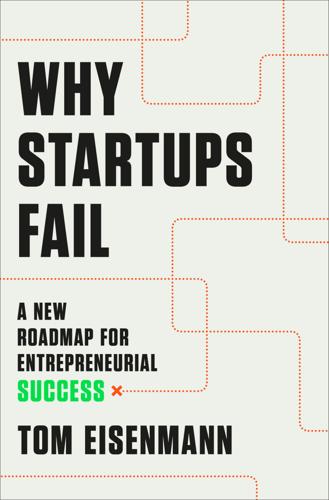
Why Startups Fail: A New Roadmap for Entrepreneurial Success
by
Tom Eisenmann
Published 29 Mar 2021
The past month has been a torrent of emotions, a series of lows, each lower than the last as I retreated into a shell, neglected my health and came to terms with our only chance at a strategic acquihire [i.e., an acquirer that only wants to hire the venture’s team] ending with a shitty Skype chat where we were told we just weren’t good enough to work with the successful Silicon Valley startup in our space.” But despite all the factors that encourage an early-stage founder to delay a shutdown, there are also countervailing forces at work. In particular, investors may push for an early shutdown if they’ve concluded that a turnaround is unlikely. They’d rather dissolve the venture before it has consumed all of its capital, so they can get some of their money back.
…
Ozbek, “The Right People in the Wrong Places: The Paradox of Entrepreneurial Entry and Successful Opportunity Realization,” Academy of Management Review 41, no. 1 (2016): 109–129, argues that overconfident and narcissistic individuals are more likely to be drawn to bold, novel opportunities because they will overestimate success odds (due to overconfidence) and will crave the attention that comes with doing something big and new (due to narcissism). Navis and Ozbek also argue that overconfidence and narcissism inhibit learning in ways that reduce success odds with novel ventures. Elizabeth Holmes is an example: John Carreyrou, Bad Blood: Secrets and Lies in a Silicon Valley Startup (New York: Knopf, 2018), p. 43. To confront this problem: Blumberg, Startup CEO, Ch. 37. For additional guidance on best practices for managing a board, see the references for the section “Board Priorities” in Ch. 6. Federal Express did: Frock, Changing How the World Does Business.

Uncanny Valley: A Memoir
by
Anna Wiener
Published 14 Jan 2020
Copyright infringement is against the law. If you believe the copy of this e-book you are reading infringes on the author’s copyright, please notify the publisher at: us.macmillanusa.com/piracy. INCENTIVES Depending on whom you ask, it was either the apex, the inflection point, or the beginning of the end for Silicon Valley’s startup scene—what cynics called a bubble, optimists called the future, and my future coworkers, high on the fumes of world-historical potential, breathlessly called the ecosystem. A social network everyone said they hated but no one could stop logging in to went public at a valuation of one-hundred-odd billion dollars, its grinning founder ringing the opening bell over video chat, a death knell for affordable rent in San Francisco.
…
Thank you to Dan Wiener and Ellen Freudenheim, for their enthusiasm and guidance. I am grateful to Ian Sherman for his love, for his steady support of my writing, and for always asking the right questions. A NOTE ABOUT THE AUTHOR Anna Wiener is a contributing writer to The New Yorker, where she writes about Silicon Valley, startup culture, and technology. She lives in San Francisco. Uncanny Valley is her first book. You can sign up for email updates here. Thank you for buying this Farrar, Straus and Giroux ebook. To receive special offers, bonus content, and info on new releases and other great reads, sign up for our newsletters.
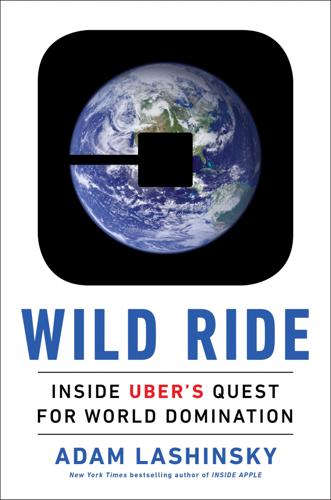
Wild Ride: Inside Uber's Quest for World Domination
by
Adam Lashinsky
Published 31 Mar 2017
Six long years later he sold that company to Akamai, the dominant software competitor in its field, for just enough money for Kalanick to join the club of San Francisco entrepreneurs who had achieved an “exit,” a financing event that put some cash in his pocket. During our first chat Kalanick also told me how Uber got started. It was an after-the-fact creation myth, which nearly every successful Silicon Valley start-up has, about how he and a friend named Garrett Camp had an epiphany when they couldn’t catch a cab during a blizzard in Paris in late 2008. If only there were a way to turn one’s phone into a taxi dispatcher. “The germ of the idea was Garrett’s,” Kalanick said. “Mine was the business architecture.”
…
It was not the last time Kalanick would hang back from a fledgling start-up while he considered his options; he would do it again a decade later as Uber took flight. Scour was a perfect example of what would later be described as an ideal product-market fit, an almost totemic term among Silicon Valley entrepreneurs. Some start-ups make a nifty product that nobody wants. Others go after a massive market but have nothing to offer. Scour was a simple-to-use Web site that identified and listed music files available on a network, which greatly appealed to a market of college students who wanted to discover new music but could afford to buy only so many CDs.
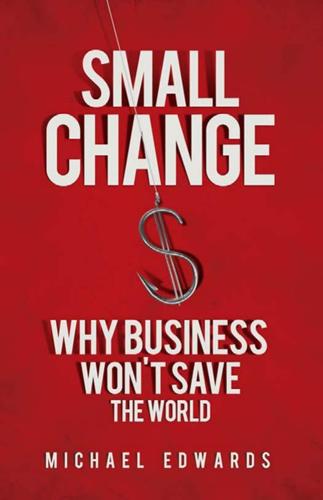
Small Change: Why Business Won't Save the World
by
Michael Edwards
Published 4 Jan 2010
The essence of this movement is blended value, a process first described by Jed Emerson that creates hybrid institutions by combining elements from two different worlds — the social (meaning beyond the market or the individual), and the enterprise (meaning from business and the market).4 Venture philanthropists use business thinking to advance the social mission of foundations and other forms of giving. The hallmarks of venture philanthropy are “an entrepreneurial resultsoriented framework, leverage, personal engagement, and impatience.”5 As befits an approach that emerged from the world of venture capital and Silicon Valley start-ups, “engagement” means direct intervention in, and a high measure of control over, the activities of the organizations that each foundation supports; effectiveness is measured using business metrics to monitor performance; strategy is dominated by aggressive revenue-generation efforts to promote financial sustainability and rapid “scaling up”; and “leverage” comes from pulling in resources from government and others and investing in a wider range of vehicles to achieve social goals — such as pre-purchasing new vaccines in order to lower prices while maintaining the profit margins that are required to cover the costs of R&D.
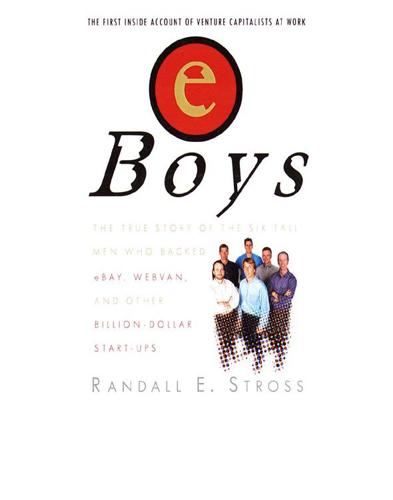
eBoys
by
Randall E. Stross
Published 30 Oct 2008
After eight weeks of courtship, Henry Paulson, Jr., Goldman Sachs’s CEO who had seemed so ready to commit to founding with Benchmark an entirely new online banking service for high-net-worth individuals, balked in the end. “What if there were to be another Meg Whitman?” he asked Dunlevie. What would happen, that is, if the head of this new Goldman Sachs entity, which would be structured like a Silicon Valley start-up, and its CEO, given an equity stake similar to that given to other Valley CEOs, was very successful, went public, and its CEO—like eBay’s Whitman—became extraordinarily wealthy? Wouldn’t the other Goldman Sachs partners become envious and demoralized? Dunlevie did not try to argue that that would not be the case.
…
An avid skier and climber, he got along well with the Benchmark partners when he came down from Seattle to visit, and he declared that Nordstrom had chosen Benchmark not only for its e-commerce expertise but also for help in developing a corporate culture at Nordstrom “just as dynamic and hard-driven as a Silicon Valley start-up.” At the onset, Toys had said all the right things, too, but in Nordstrom’s case the details agreed upon between the two partners had remained intact, free of CFO and attorney meddling on the part of the larger partner. The new subsidiary would have its own management team and its own board of directors, and the sourcing arrangements with the parent were clean, without any surprise gotchas.
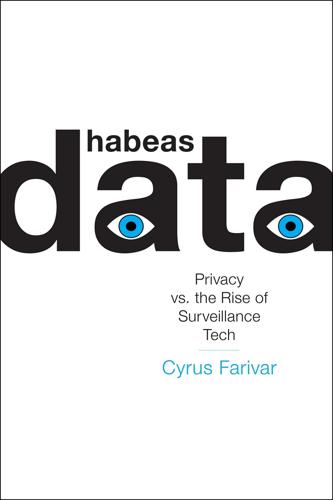
Habeas Data: Privacy vs. The Rise of Surveillance Tech
by
Cyrus Farivar
Published 7 May 2018
In Orlando, Florida, non-evidentiary body-camera videos are kept for 90 days, while in Oakland, California, those same videos are kept for two years. Just like with other consumer technology, which is getting faster, cheaper, and smaller all the time, law enforcement surveillance technology is as well. Even now, a Silicon Valley startup, Visual Labs, is selling body-camera software that runs on existing Android phones—eliminating the need for another dedicated piece of hardware on an officer’s body. The small, central California town of Dos Palos (population 5,000) in Merced County is one of a handful of law enforcement agencies testing out this system, and is paying considerably less than it would with one of Visual Labs’ larger competitors, like VIEVU or Axon (the company formerly known as Taser)
…
Available at: http://www.cnn.com/2017/06/20/us/michael-brown-settlement-ferguson/index.html. But like LPRs: Elizabeth Atkins, “#Blacklivesrecorded,” Unpublished Thesis, Thomas Jefferson School of Law, 2016. Available at: https://www.documentcloud.org/documents/3894162-SSRN-id2803588.html#document/p12/a362822. Even now, a Silicon Valley startup: Cyrus Farivar, “Meet Visual Labs, A Body Camera Startup That Doesn’t Sell Body Cameras,” Ars Technica, September 3, 2016. Available at: https://arstechnica.com/tech-policy/2016/09/meet-visual-labs-a-body-camera-startup-that-doesnt-sell-body-cameras/. However, facial recognition doesn’t: Cyrus Farivar, “Boston Police Chief: Facial Recognition Tech Didn’t Help Find Bombing Suspects,” Ars Technica, April 21, 2013.
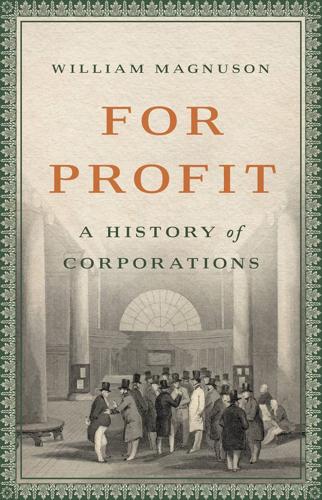
For Profit: A History of Corporations
by
William Magnuson
Published 8 Nov 2022
At what cost did venture capitalists provide capital to speculative new companies? Given the choice, would a meerkat stay a meerkat, or would it transform into a lion? THE IDEA THAT A NINETEEN-YEAR-OLD COLLEGE STUDENT COULD found a billion-dollar company may not sound strange to readers today. We are used to seeing Silicon Valley start-ups turn into billion-dollar unicorns. The start-up ethos favors the young and the geeky. To many of us, it seems completely natural that anyone with a great idea and a talent with computers can create something world-changing. But this is certainly a novelty in the sweep of corporate history.
…
Joint stock companies in seventeenth-century England raised money from the unsuspecting public for palpably infeasible projects, knowing that the promoters would get rich before anyone got wise. Railroad companies in the nineteenth century took out massive amounts of debt that they knew would likely never be repaid. And today, technology companies launch products that create big risks without thinking through the consequences. No place better embodies this than the Silicon Valley start-up culture, which views failure as having no consequences (and indeed, often thinks of it as a badge of honor). Few arenas demonstrate the tremendous power of corporations to shape our lives more clearly than the internet. We search on Google, shop on Amazon, connect on Facebook, and do all of these things on our iPhones.

The Power Law: Venture Capital and the Making of the New Future
by
Sebastian Mallaby
Published 1 Feb 2022
This was all so novel that in the first part of 1999 Chinese American entrepreneurs were struggling to translate “stock option” into Chinese and to understand how these things functioned.[33] On a trip to Silicon Valley shortly before Goldman’s investment, Jack Ma dined with John Wu, a Chinese-born, American-trained coder who was the lead engineer at Yahoo. Wu remembers Ma grilling him about how Silicon Valley startups recruited staff, prompting Wu to deliver a tutorial on the mechanics of stock-based compensation.[34] Once he took Goldman’s money and acquired the Cayman structure, Ma was in a position to put this tutorial into practice. His first coup was to hire Joe Tsai, his ex-Yale, ex–Sullivan & Cromwell investor, who waved goodbye to the $700,000 salary that went with his Hong Kong finance job.
…
See Michael Moritz, “Investment Banks Are Losing Their Grip on IPOs,” Financial Times, Aug. 18, 2019, ft.com/content/7985bb78-bdbf-11e9-9381-78bab8a70848. BACK TO NOTE REFERENCE 84 CHAPTER FOURTEEN: UNICORN POKER John Carreyrou, Bad Blood: Secrets and Lies in a Silicon Valley Startup (New York: Knopf, 2018), 208–9. BACK TO NOTE REFERENCE 1 For an example of the sea change in popular opinion toward venture-backed startups, see Erin Griffith, “The Ugly Unethical Underside of Silicon Valley,” Fortune, Dec. 28, 2016. In the view of some especially insistent critics, the tech giants had banished private contemplation and autonomous thought.
…
In this mock-mobster photo, from left to right, top to bottom: Jawed Karim, cofounder of YouTube; Jeremy Stoppelman, cofounder of Yelp; Andrew McCormack, a member of the founding team at Thiel’s hedge fund, Clarium Capital; Premal Shah, cofounder of Kiva; Luke Nosek and Ken Howery, early partners at Thiel’s venture firm, Founders Fund; David Sacks, founder of Yammer; Thiel; Keith Rabois, a senior executive at LinkedIn and Square and later a venture capitalist; Reid Hoffman, cofounder of LinkedIn; Max Levchin, cofounder of Affirm; Roelof Botha, a top investor at Sequoia; and Russel Simmons, Stoppelman’s cofounder at Yelp. Musk is conspicuous by his absence. For all the winning bets it made on Silicon Valley startups, Sequoia’s most successful play was to recruit Neil Shen, who established Sequoia China as the dominant venture firm in the country. For three straight years, Shen was the world’s top venture capitalist. Paul Graham (right) and Jessica Livingston (center) founded Y Combinator, revolutionizing the business of angel investing.
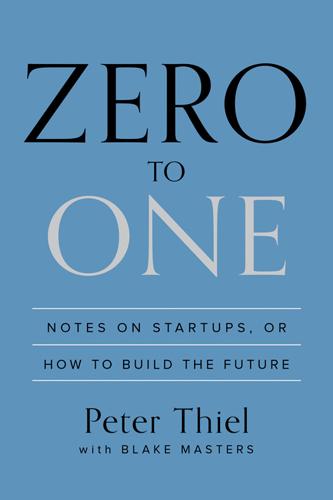
Zero to One: Notes on Startups, or How to Build the Future
by
Peter Thiel
and
Blake Masters
Published 15 Sep 2014
We can invent faster ways to travel from place to place over the surface of the planet; we can even learn how to escape it entirely and settle new frontiers. But we will never learn any of these secrets unless we demand to know them and force ourselves to look. The same is true of business. Great companies can be built on open but unsuspected secrets about how the world works. Consider the Silicon Valley startups that have harnessed the spare capacity that is all around us but often ignored. Before Airbnb, travelers had little choice but to pay high prices for a hotel room, and property owners couldn’t easily and reliably rent out their unoccupied space. Airbnb saw untapped supply and unaddressed demand where others saw nothing at all.
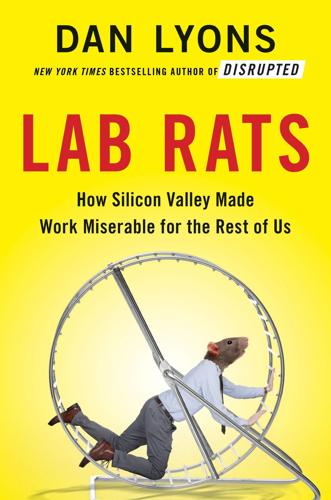
Lab Rats: How Silicon Valley Made Work Miserable for the Rest of Us
by
Dan Lyons
Published 22 Oct 2018
Julia arrived carrying a big canvas bag filled with Legos, and they’re now scattered out on the table. As we’re making small talk, she plays with the pieces, idly snapping and unsnapping them. Soon, between sips of my caffè Americano and bites of a remarkably good almond croissant, I start tinkering with the Legos, too. A few years earlier I briefly worked at a Silicon Valley–style start-up in Boston, a disastrous experience I chronicled in my last book, before getting a job as a writer on the HBO comedy Silicon Valley. Today, I have returned to the setting of that show—which, while a real place, is also a state of mind—not for fun, but for research. For the last two years, I have made it my mission to speak to as many people as I can to better understand the modern workplace and why work today seems to make so many people unhappy.
…
VCs claim that they make decisions based entirely on the strength of the company’s ideas, and without any regard for race or gender. But can you guess where the members of the White Man Club tend to put their money? “I can be tricked by anyone who looks like Mark Zuckerberg” is how Paul Graham, the founder of Y Combinator, a top Silicon Valley start-up incubator, once famously put it. Graham later claimed he was joking, but a glance through the roster of Y Combinator portfolio companies turns up an awful lot of nerdy young Zuckerberg clones. As for why there are so few women in venture capital, Michael Moritz, a partner at Sequoia Ventures, once said that it’s not because of gender bias but that “What we’re not prepared to do is to lower our standards.”

Dawn of the New Everything: Encounters With Reality and Virtual Reality
by
Jaron Lanier
Published 21 Nov 2017
That’s probably the biggest difference between then and now. VPL had to create its own production line. We started up a little factory in Redwood City to make headsets, gloves, and the rest. We did things that seem inconceivable today. We hired local people and trained them. Blue-collar local jobs! From a Silicon Valley startup! It happened! But it wasn’t perfect. There were ready consultants for every other aspect of being a startup, but manufacturing was still considered part of the parental, big-company world; part of the old economy Back East rather than the new Wild West. No one supported tiny-scale manufacturing in Silicon Valley.
…
Once it’s solved, then that will be true. * * * Thirty-fourth VR Definition: Instrumentation that might just enable telecommunications with honest signals someday. * * * Back to Palo Alto in the 1980s. 16. The VPL Experience In-Spiral This is around the time when a normal memoir of a Silicon Valley startup would kick into gossip mode. Next would come juicy stories of intrigues on the board, struggles over stock, people yelling and quitting, backstabbings and betrayals. VPL had all of that, and such stuff might make a good story, and yet it’s not the story I’m telling. Here are a few reasons why.
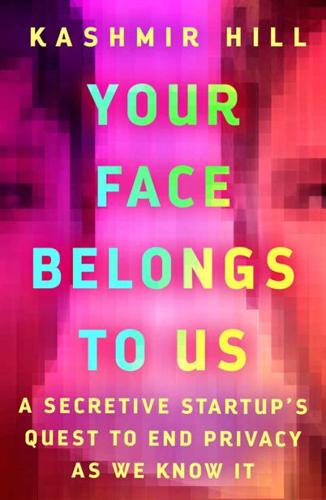
Your Face Belongs to Us: A Secretive Startup's Quest to End Privacy as We Know It
by
Kashmir Hill
Published 19 Sep 2023
She worried that the government might utilize facial recognition as a tool of intimidation. Though police use of mug shots and driver’s license photos had long concerned the ACLU, there had at least been some rules and democratic control over the use of those databases. Clearview was a whole different beast. “Here was the Silicon Valley startup approach to this technology,” Wessler said. “ ‘Let’s build a thing that no one else has wanted to build yet because it seems troubling and let’s throw it out there and see where it sticks and where we can make money.’ ” A conversation about Clearview started within the ACLU as soon as the company’s existence became public.
…
GO TO NOTE REFERENCE IN TEXT aren’t quite there yet: The blood-testing company Theranos has become the canonical example of this. The startup claimed it could perform hundreds of tests on a single drop of blood, which was not remotely true. John Carreyrou, Bad Blood: Secrets and Lies in a Silicon Valley Startup (New York: Alfred A. Knopf, 2018). GO TO NOTE REFERENCE IN TEXT The company’s online presence: Clearview.ai, December 5, 2019, via Wayback Machine. GO TO NOTE REFERENCE IN TEXT Business filings: Certificate of Incorporation of Smartchecker Corp, Inc., August 3, 2017; Certificate of Amendment of Certificate of Incorporation of Smartchecker Corp, Inc., June 15, 2018; State of Delaware annual franchise tax report for Clearview AI, Inc., March 26, 2019.
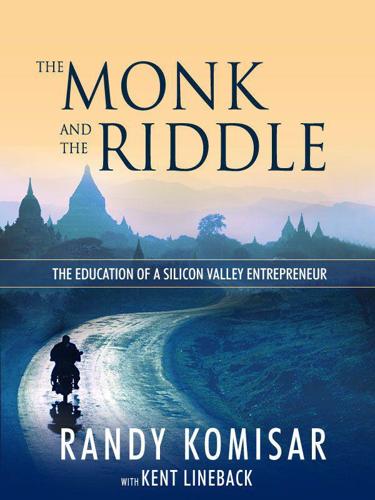
The Monk and the Riddle: The Education of a Silicon Valley Entrepreneur
by
Randy Komisar
Published 15 Mar 2000
We take them pretty much for granted out here now, but they are still endeavors that require very different skills from the ones needed in established companies. Like tourists on safari, senior executives from some of America's largest corporations come to the Valley to study the exotic ways of the natives. Arriving from Chicago or New York or Dallas, they think they need to be more like Silicon Valley startups, but they usually end up scratching their heads. I recently met with some senior managers from a world-class package goods company who had been up and down the Valley. "We thought we could take a crash course in the Valley way and apply the lessons to our business. But this place is extremely foreign to us.

The Obstacle Is the Way: The Timeless Art of Turning Trials Into Triumph
by
Ryan Holiday
Published 30 Apr 2014
When people ask where we are, what we’re doing, how that “situation” is coming along, the answer should be clear: We’re working on it. We’re getting closer. When setbacks come, we respond by working twice as hard. ITERATE What is defeat? Nothing but education; nothing but the first steps to something better. —WENDELL PHILLIPS In Silicon Valley, start-ups don’t launch with polished, finished businesses. Instead, they release their “Minimum Viable Product” (MVP)—the most basic version of their core idea with only one or two essential features. The point is to immediately see how customers respond. And, if that response is poor, to be able to fail cheaply and quickly.
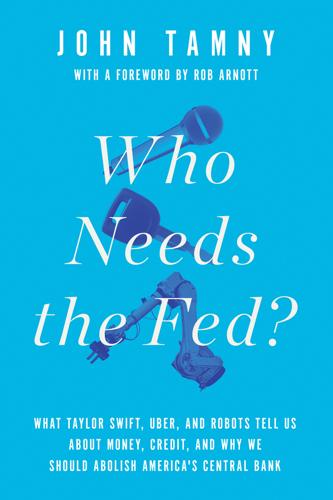
Who Needs the Fed?: What Taylor Swift, Uber, and Robots Tell Us About Money, Credit, and Why We Should Abolish America's Central Bank
by
John Tamny
Published 30 Apr 2016
—Venture capitalist Arthur Rock FOR SEVERAL YEARS, FailCon was a popular annual event in San Francisco. Attendees were technologists who would get together to talk—you guessed it—about their stupendous failures. While Hollywood film directors run as fast as they can from their mistakes—Alan Smithee is the pseudonym directors use to erase their participation in the truly lousy—in Silicon Valley a failed start-up amounts to a badge of honor. Indeed, the frequency of company-crushing errors led to the discontinuation of FailCon in 2014. The confab was cancelled not because it was hurting the ability of technologists to attract venture funding but because, as FailCon founder Cassandra Phillipps observed, discussion of one’s mistakes in the tech sector is superfluous.
…
As she stated in a 2014 interview: “It’s in the lexicon that you’re going to fail.”1 All of this raises a fairly basic question: Why do box-office disasters in the film industry place those attached to them in credit purgatory, while technologists proudly tout their errors to colleagues and potential investors? More specifically, why does the proverbial credit window shut so quickly for money-losing directors yet remain open for entrepreneurs who preside over imploding start-ups? At a first glance, the obvious answer is that Silicon Valley start-ups generally don’t have $85-million budgets to lose. Assuming Town & Country had cost $10 million, it’s fair to say that Warren Beatty’s reputation in the eyes of film financiers wouldn’t have suffered so much. Second, and of much greater importance, tech has a higher upside than film does.
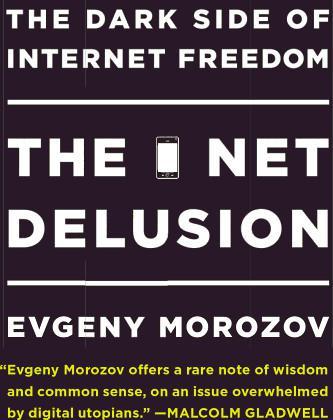
The Net Delusion: The Dark Side of Internet Freedom
by
Evgeny Morozov
Published 16 Nov 2010
It looks like a safe bet: Even if the Internet won’t bring democracy to China or Iran, it can still make the Obama administration appear to have the most technologically savvy foreign policy team in history. The best and the brightest are now also the geekiest. The Google Doctrine—the enthusiastic belief in the liberating power of technology accompanied by the irresistible urge to enlist Silicon Valley start-ups in the global fight for freedom—is of growing appeal to many policymakers. In fact, many of them are as upbeat about the revolutionary potential of the Internet as their colleagues in the corporate sector were in the late 1990s. What could possibly go wrong here? As it turns out, quite a lot.
…
A Revolution in Search of Revolutionaries Of course, American diplomats had no idea how the Iranian protests would turn out; it would be unfair to blame them for the apparent inability of the Green Movement to unseat Ahmadinejad. When the future of Iranian democracy depended on the benevolence of a Silicon Valley start-up that seemed oblivious to the geopolitical problems besetting the world, what other choice did they have but to intervene? Given what was at stake, isn’t it preposterous to quibble about angry editorials in Moldovan newspapers that may have appeared even if the State Department stayed on the sidelines?

Makers and Takers: The Rise of Finance and the Fall of American Business
by
Rana Foroohar
Published 16 May 2016
Sometimes, as in the case of GM’s ignition switch crisis, employees are so well trained to stay in their boxes that they simply don’t raise the alarm. Other times they just can’t swim against the tide of profit. The decline of the once-great technology firm Hewlett-Packard is a good example of a culture of innovation destroyed by bean counters. HP was the original Silicon Valley start-up, founded in a garage by two Stanford engineering students. Originally its culture, like Google’s today, was focused on engineering and innovation and was very entrepreneurial. Its structure was flat rather than hierarchical. Workers were given great freedom and good benefits; layoffs, even in down times, were mostly used as a last resort.
…
Travel & Leisure magazine is complementary to the travel business…in that it gives customers travel ideas which the company hopes will lead to ticket purchases and other travel arrangements through American Express Travel Services.” Such plain-vanilla examples helped make legislators comfortable with the idea of granting exemptions for commercial activities. But the truth is that banks didn’t want to be in the magazine publishing business—they wanted to be in hot Silicon Valley start-ups and, later, in the oil, gas, electricity, and minerals business. And indeed, between 2000 and 2012, all but one of the “complementary” activities that firms would seek to engage in via the loophole in the law had to do with commodities ownership and trading.51 Referring to Goldman’s purchase of metal warehouse space, Nick Madden, chief supply chain officer for the giant aluminum maker Novelis, says, “It had all the appearance of being part of an engineered market squeeze.

Elon Musk: Tesla, SpaceX, and the Quest for a Fantastic Future
by
Ashlee Vance
Published 18 May 2015
And, in a nod to Musk’s obsession with safety, the rocket was said to be able to complete its missions even if three of the five engines failed, which was a level of added reliability that had not been seen in the market in decades. The only way to keep up with all of this work was to do what SpaceX had promised from the beginning: operate in the spirit of a Silicon Valley start-up. Musk was always looking for brainy engineers who had not just done well at school but had done something exceptional with their talents. When he found someone good, Musk was relentless in courting him or her to come to SpaceX. Bryan Gardner, for example, first met Musk at a space rave in the hangars at the Mojave airport and a short while later started talking about a job.
…
The sum total of the company’s automotive expertise was that a couple of the guys at Tesla really liked cars and another one had created a series of science fair projects based on technology that the automotive industry considered ridiculous. What’s more, the founding team had no intention of turning to Detroit for advice on how to build a car company. No, Tesla would do what every other Silicon Valley start-up had done before it, which was hire a bunch of young, hungry engineers and figure things out as they went along. Never mind that the Bay Area had no real history of this model ever having worked for something like a car and that building a complex, physical object had little in common with writing a software application.
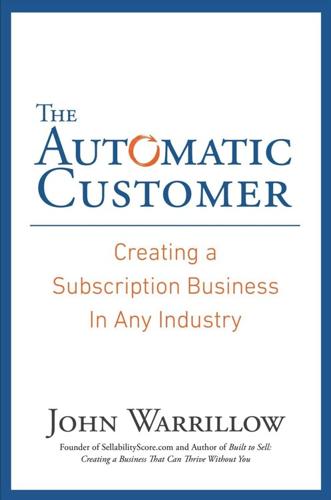
The Automatic Customer: Creating a Subscription Business in Any Industry
by
John Warrillow
Published 5 Feb 2015
Then we’ll turn to financing the growth of your subscription business and explore whether you want to raise venture-capital funding, as WhatsApp and Dollar Shave Club did, or self-fund your growth, like FreshBooks and Mosquito Squad. Part Three ends with a discussion on scaling your subscription business. Let’s get started. PART ONE Subscribers Are Better than Customers Why are Amazon, Apple, and many of the most promising Silicon Valley start-ups leveraging a subscription business model? In Part One we’ll look at how automatic customers make your company more valuable . . . and a whole lot more enjoyable to run. CHAPTER 1 Who Wins in the Subscription Economy? Amazon has come a long way since its days of just hawking cheap books online.

Intertwingled: Information Changes Everything
by
Peter Morville
Published 14 May 2014
Galileo was found “gravely suspect of heresy” for confirming the Copernican re-classification of the universe, Joan of Arc was burned to death for “dressing as a man” and Nelson Mandela was categorized as a domestic terrorist by South Africa and the United States for defying the taxonomy – black, white, coloured, Indian – of apartheid. Mostly what we do isn’t quite so heavy. But it’s unwise to ask certain questions before understanding politics and culture. In all organizations, from libraries, nonprofits, and government agencies to Fortune 500s and Silicon Valley startups, visible categories are built on invisible fault lines. So speak softly and carry some Silly String, because the dark paths that wander betwixt taxonomies and org charts are riddled with tripwire. xxxii Organizing for Users Of course, since users are the center of our universe, it’s our duty to take risks on their behalf.
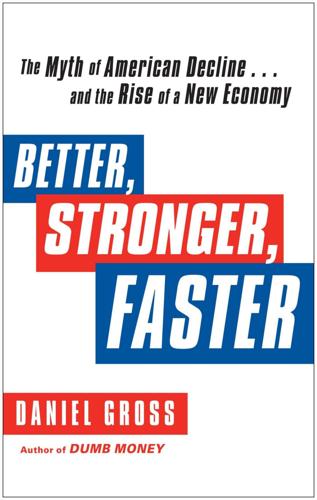
Better, Stronger, Faster: The Myth of American Decline . . . And the Rise of a New Economy
by
Daniel Gross
Published 7 May 2012
An Italian accounting firm, a Swedish conglomerate, Turkish Airlines, and the People’s Daily of China have all checked in, paying significantly higher rents. “We’re now doing leases at the base of the building that average $49 to $50, and at the top we’re getting into the $60s,” said Malkin. In May 2011 the Empire State Building scored its biggest coup: LinkedIn, the Silicon Valley networking startup, whose growth demonstrates the ability of the U.S. economy to develop highly valuable, global companies at warp speed, took the entire twenty-fifth floor at a “high $40-per-square-foot range.” “Five years ago, I never would have believed we would have had a tenant like this,” Malkin told Crain’s New York Business.
…
Rather than dismantle production capacity vacated by General Motors, new users have taken it over, with different cost structures and with different types of vehicles in mind. In April 2010 a large factory in Fremont, California, belonging to NUMMI, a joint venture of GM and Toyota, was closed, putting 4,500 people out of work. But Tesla, the Silicon Valley start-up that makes high-end electric sports cars, took it over in May 2010. In July 2009 GM closed the Boxwood Road plant in Newport, Delaware, where it had been making vehicles since 1947. In June 2010, armed with a $528.7 million loan from the U.S. government and $175 million of its own money, Fisker Automotive, an electric vehicle manufacturer based in Anaheim and founded by two former BMW executives, bought the plant for $10 million.
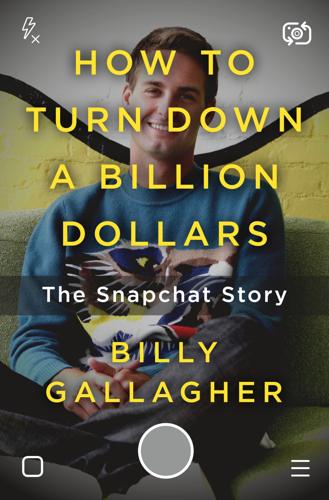
How to Turn Down a Billion Dollars: The Snapchat Story
by
Billy Gallagher
Published 13 Feb 2018
All told, close to sixty people and institutions invested a sum of $30 million in Clinkle before the company even told the world what they were doing. The company had at this point been in “stealth mode,” a sexy term meaning they weren’t telling anyone what they were working on. Stanford has been intertwined with Silicon Valley for more than a century. In 1909, a Stanford graduate founded one of the earliest big Silicon Valley startups, Federal Telegraph. David Starr Jordan, Stanford’s first president, was an angel investor. But Clinkle made students, faculty, and alumni uneasy. Should the university president be advising a company that is recruiting students to drop out of school? Should professors be investing in their students’ companies?
…
Miami (Michael Salzhauer) Samsung Sandberg, Sheryl Sanders, Bernie Saturday Night Live Sawyer, Diane Scan (QR code app) Schiffer, Eric Schmidt, Eric Sculley, John Secret (app) Sehn, Tim selfies Academy Awards (2014) selfie with Ellen DeGeneres first photographic self-portrait history of Sequoia Capital sexting Shark Tank (television program) Shonduras (Shaun McBride) Shontell, Alyson Sierra Ventures Silicon Valley (television sitcom) Slingshot (Facebook app) Smith, Daniel Smith, Kevin Snapchat Android app Arsenic Bitstrips purchased by brand advertising Brown lawsuit captions celebrities and Snapchat stars content management system (CMS) Council (employee gatherings) demographics of users Discover DJ Khaled and and Electric Daisy Carnival (Las Vegas) email leaks founding date of funding and investment geofilters Ghostface Chillah logo Good Luck America (election show) hacking and security Instant Articles IPO (initial public offering) Lenses Literally Can’t Even (original programming) Live Stories media coverage of Memories monetization original programming origins of Our Story Picaboo publishing and journalism Rio Summer Olympics (2016) coverage S-1 (SEC filing) Safety Center Scan purchased by Snap Channel Snap Lab Snapcash Snapcode “Snappy New Year” promotion Spectacles Stories Vergence Labs purchased by workforce and human resources Social Network, The (film) Sony Entertainment Sorrell, Martin SpaceX Spiegel, Evan Brown lawsuit and childhood education Forbes’s “30 Under 30” issue Future Freshman girlfriend at Stanford (Lily) interest in journalism internship at Red Bull and Kappa Sigma Market Street headquarters parents of proposal to Miranda Kerr at $SNAP IPO Snapchat’s origins at Stanford Stanford Women in Business conference keynote address worldview and corporate culture of Snapchat See also Snapchat Spielberg, Sasha Spotify Square Square Cash Stanford University commencement (2012) Donner (dorm) founding of Kappa Sigma Sigma Nu Silicon Valley and Startup Hau5 (Picaboo headquarters) stealth mode Stith, Mackenzie Stone, Josh Streep, Meryl Sun Microsystems Swift, Taylor Swisher, Kara Systrom, Kevin Taco Bell Tam, Donna Taneja, Hemant TechCrunch (tech blog) Disrupt conference Tencent Teo, Jon Tesla ThankYouX (Ryan Wilson) That White Bitch (blog) therealdrmiami.
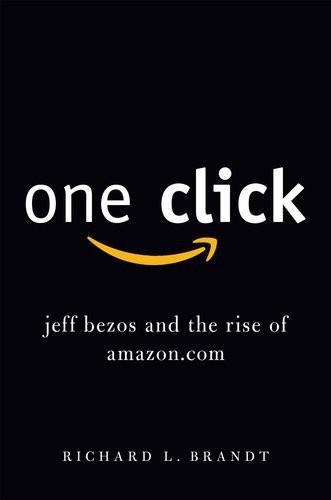
One Click: Jeff Bezos and the Rise of Amazon.com
by
Richard L. Brandt
Published 27 Oct 2011
Neither Kaphan nor Davis had much experience creating the kind of retailing or business software that Amazon.com needed, but Jeff’s philosophy was to hire people with the most talent rather than the most experience. After all, they were trying to do something new, and experience with legacy software could be more of a hindrance than a help. It’s a philosophy promoted by Silicon Valley start-ups that the best people are those who don’t know that something “can’t be done,” and therefore will figure out how to do it. Bezos is a strong believer in this philosophy. He and these two men developed the core software that launched Amazon.com, programs that ran the company for years. The third employee of the company was Jeff’s wife, MacKenzie.
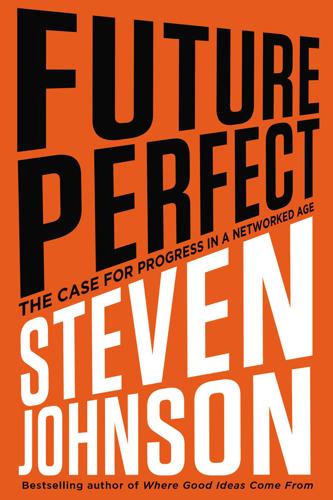
Future Perfect: The Case for Progress in a Networked Age
by
Steven Johnson
Published 14 Jul 2012
While most Americans are significantly healthier than they were a generation ago, childhood obesity has emerged as a meaningful problem, particularly in lower-income communities. An interesting divide separates these two macro-trends. On the one hand, there is a series of societal trends that are heavily dependent on non-market forces. The progress made in preventing drunk driving or teen pregnancy or juvenile crime isn’t coming from new gadgets or Silicon Valley start-ups or massive corporations; the progress, instead, is coming from a network of forces largely outside the marketplace: from government intervention, public service announcements, demographic changes, and the wisdom of life experience shared across generations. Capitalism didn’t reduce the number of teen smokers; in fact, certain corporations did just about everything they could to keep those kids smoking (remember Joe Camel?).

Slack: Getting Past Burnout, Busywork, and the Myth of Total Efficiency
by
Tom Demarco
Published 15 Nov 2001
Box these gifted people in tightly enough, and none of their magic will be able to happen. 19 Vision MY FRIEND Sheila Brady was regaling us one night over dinner at her Woodside, California, home. The rain was coming down in sheets and wind was whipping through the eucalypts and the wine was flowing freely: a perfect time for let-your-hair-down storytelling. Many of the stories were of Sheila’s days at Apple, where she was a star project manager. But then the tales turned to Silicon Valley start-ups of more recent vintage, and she opened the floor to the subject of vision. Others around the table (they were employees of half a dozen Valley start-ups) leaped in. They began to talk about vision, mostly observed by its absence. The most common sign of absent vision was the sense of not knowing “who we are.”

Becoming Steve Jobs: The Evolution of a Reckless Upstart Into a Visionary Leader
by
Brent Schlender
and
Rick Tetzeli
Published 24 Mar 2015
In the Entrepreneurs video, he repeatedly urged his staff to conserve resources, to the point of complaining about the hotel room rates they were getting. Despite having seen him throw money around at Apple, Barnes was initially hopeful that Steve might change his ways. “I thought he’d be better when it was his own money,” she remembers. “Boy, was I wrong.” Most great Silicon Valley startups start out lean and simple. The advantage they have over established companies is the focus they can bring to a single product or idea. Unencumbered by bureaucracy or a heritage of products to protect, a small group of talented folks is free to attack a concept with speed and smarts. Eagerly working hundred-hour weeks, the employees want little more from the “company” than that it pay the bills and get out of their way.
…
To find a shortcut to developing a more advanced version of the Macintosh OS, Amelio looked for companies that had built a working version of Unix that ran on familiar microprocessors. Sun and several other companies, including IBM, Apollo (by now part of Digital Equipment Corporation), NeXT, and an obscure Silicon Valley startup called Be Inc., all had developed their own implementations of BSD Unix—a version developed by Sun cofounder Bill Joy—and had managed to “port” them to machines employing chips from the very same family of microprocessors that Apple used in its Lisa and Macintosh. The pure software companies were most interesting because they were cheap enough to buy outright, and small enough to absorb.

I'm Feeling Lucky: The Confessions of Google Employee Number 59
by
Douglas Edwards
Published 11 Jul 2011
Two decades in marketing had taught me many practical things, from how to build consensus across divisions to how to write a CYA memo when I wanted to color outside the lines. I viewed that experience as an important asset but was beginning to suspect that within the walls of the Googleplex,* it might be valued differently. I had wanted to live the Silicon Valley startup life, with its complete lack of longstanding rules. Now, poised on the precipice of realizing that dream, I asked myself, "My God. What have I done?" Chapter 2 In the Beginning HEY, WANT TO see something cool?" Jay asked me, standing in the micro-kitchen eating from a cup of yogurt, barefoot and sporting pajama pants, a well-loved sweatshirt, and a graying ponytail.
…
Not once have they wavered in their commitment to our happiness or hesitated to sacrifice to bring it about. When they could ill afford it, they helped fund my dreams and then gave me the confidence to pursue them. I can never repay the debt I owe them for their guidance, their patience, and their understanding. My wife Kristen experienced all the pressures and insanity of a Silicon Valley startup without the compensating perks that I enjoyed. She didn't divorce me. For more than twenty-five years she has encouraged me, supported me, engaged me, and endured me. She is a ruthless editor and a stickler for facts. She has, on occasion, been the only reason I've remained sane. She is my best friend.

We Are the Nerds: The Birth and Tumultuous Life of Reddit, the Internet's Culture Laboratory
by
Christine Lagorio-Chafkin
Published 1 Oct 2018
They’d taught him about open-sourcing a site’s code, and he’d taught them about maintaining quarterly goals. But in 2011, Newhouse decided it was time to try something new for Reddit. Bob Sauerberg, Condé’s president, was on board. He and Newhouse figured that if Reddit was allowed to raise venture capital funding and behave more like other Silicon Valley startups, the company would have a chance at competing with the likes of Facebook and Twitter. Reddit would also have more flexibility to hire new employees, to pay them competitively, and to offer stock options. Plus, given investors’ enthusiasm for heavily trafficked money-losing websites, an independent Reddit would almost certainly be worth a lot more to the market than it was to Condé Nast.
…
If Wong’s vision of growing and evolving Reddit as a “city-state” and trying to appease the community was rough going, his other objective, to move the company toward profitability, was tougher. By this point in 2014 it seemed too far-fetched to even put a timeline on. Instead, Wong decided to consider switching mind-sets—and possibly change the goal altogether. He could envision treating Reddit as a typical Silicon Valley startup. To that end, he had gone back to the place Reddit started, back to Y Combinator. Wong and Altman stepped away from their nearly matching cars and walked together into Y Combinator. Wong took in the space, all clean lines and stark design. This office, like Paul Graham’s original Cambridge one, had been built out by Graham’s architect friend Kate Courteau.

The Network Imperative: How to Survive and Grow in the Age of Digital Business Models
by
Barry Libert
and
Megan Beck
Published 6 Jun 2016
For example, when embarking on the self-driving car project, the team brought on Sebastian Thrun, who previously sent an autonomous car through a seven-mile obstacle course in the Mojave Desert. The external network. Google leverages external experts to support its projects. It has partnered with at least sixteen other companies so far, ranging from Silicon Valley start-ups to established chip manufacturers. All these criteria—separation, low investment, the right talent, and the external network—make for an open space in which teams can be innovative and almost instantly responsive to market feedback. All are necessary for creating a new, networked business within asset builder, service provider, and technology creator companies.

The Age of AI: And Our Human Future
by
Henry A Kissinger
,
Eric Schmidt
and
Daniel Huttenlocher
Published 2 Nov 2021
He received the Nobel Peace Prize in 1973, the Presidential Medal of Freedom in 1977, and the Medal of Liberty in 1986. Presently, he is chairman of Kissinger Associates, an international consulting firm. ERIC SCHMIDT is a technologist, entrepreneur, and philanthropist. He joined Google in 2001, helping the company grow from a Silicon Valley start-up to a global technological leader. He served as Chief Executive Officer and chairman from 2001 to 2011, and as executive chairman and technical advisor thereafter. Under his leadership, Google dramatically scaled its infrastructure and diversified its product offerings while maintaining a culture of innovation.
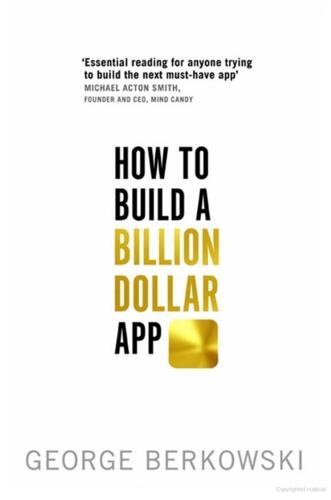
How to Build a Billion Dollar App: Discover the Secrets of the Most Successful Entrepreneurs of Our Time
by
George Berkowski
Published 3 Sep 2014
According to the Angel Capital Association, the median pre-money valuation (the valuation of your company before an investor puts in their money) of companies that are not yet generating revenue was $2.75 million in 2012. This was an increase over 2011, when it was $2.1 million, and an even larger increase over 2010, when it was $1.7 million.1 This means the valuation of a typical Silicon Valley startup – at the angel or seed stage – is $2.75 million. On average, these companies raise about $750,000.2 That means that, after that cash is added to their bank account, they are worth $3.5 million on average, and the investors own 21.42 per cent. So, while raising money this way costs you quite a bit of ownership of your company, there really isn’t another way to raise that amount to grow your company so quickly.
…
Throughout this stage of the journey we’ll focus on how best to use your seed financing to achieve these goals and set the foundations for a solid app company – and put you in a great place to seduce some serious professional investors to allow you to expand your team and accelerate growth. How to Deliver Wow Paul Graham – one of the founders of Y Combinator, Silicon Valley’s top startup incubator – offers a great morsel of advice after decades of experience delivering software: ‘Don’t build something clever, build what people want.’ The nature of technology – and software companies in particular – has evolved quickly over the last decade. Open-source software – along with easily accessible services such as payment, mapping, messaging (and many others) in the form of APIs (application programming interfaces) – allows any developer to build powerful programs.
…
Fresh off the back of a major funding round in 2013, Snapchat picked up a pretty seasoned COO, Emily White.3 Previously she was the executive who was leading Facebook’s Instagram advertising programme and before that she worked at Google.4 It would be a safe assumption to think she might have been brought on board to think about how to scale the business and get on the path of revenue generation. While it is very tough to land them, big hitters require a big salary and have high expectations. They can deliver game-changing opportunities to your company. That’s probably why it is common in Silicon Valley for top startups to steal great people from each other. Francoise Brougher, former vice president of SMB (small and medium-sized businesses) global sales and operations at Google, joined Square as its business lead to help drive the company’s growth. Bob Lee, chief technology officer at Square, also came from Google.
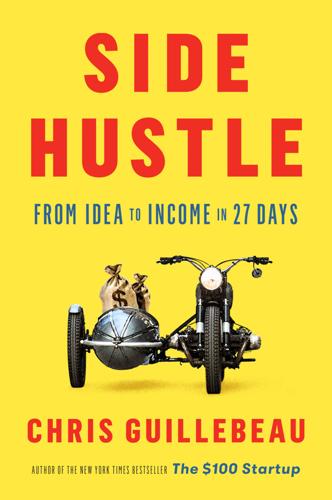
Side Hustle: From Idea to Income in 27 Days
by
Chris Guillebeau
Published 18 Sep 2017
There’s a school of thought that advises you to focus on making money only from one revenue source or only on offers that are fully aligned with your core business. This conventional “wisdom” is commonly taught in business school, business books, and executive coaching. But the side hustler’s mindset is different, or at least it should be. After all, it’s something you’re doing on the side. You aren’t trying to build a Silicon Valley startup and make money for a million investors; you’re doing this to make money for yourself. Consider the Million Dollar Homepage, started by a college student, that I mentioned on Day 21. The traditional business perspective would argue that such a thing is a gimmick, and a distraction from some “real” business that he could have been building.

The Purpose Economy: How Your Desire for Impact, Personal Growth and Community Is Changing the World
by
Aaron Hurst
Published 31 Aug 2013
They are trying to disrupt the status quo and have a strong sense that their work matters. They have a sense of impact greater than themselves, are growing quickly, and are part of a vibrant tribe. Those are the three core ingredients; there is, in fact, no real purpose void. When I was working for early-stage Silicon Valley start-ups, I had a deep sense of purpose. The first place I worked, HomeShark.com, was working to revolutionize the mortgage industry by taking the power out of institutional banking and putting it in the hands of consumers, so they could make better decisions about financing their homes. After a couple of months writing online tutorials on home buying, I was moved into a product management position.

Essentialism: The Disciplined Pursuit of Less
by
Greg McKeown
Published 14 Apr 2014
APPENDIX Leadership Essentials NEVER DOUBT THAT A SMALL GROUP OF THOUGHTFUL, COMMITTED CITIZENS CAN CHANGE THE WORLD; INDEED, IT’S THE ONLY THING THAT EVER HAS. —Margaret Mead LinkedIn CEO Jeff Weiner sees “fewer things done better” as the most powerful mechanism for leadership. When he took the reins of the company he could easily have adopted the standard operating procedure of most Silicon Valley start-ups and tried to pursue everything. Instead, he said no to really good opportunities in order to pursue only the very best ones. He uses the acronym FCS (a.k.a. FOCUS) to teach his philosophy to his employees. The letters stand for “Fewer things done better,” “Communicating the right information to the right people at the right time,” and “Speed and quality of decision making.”
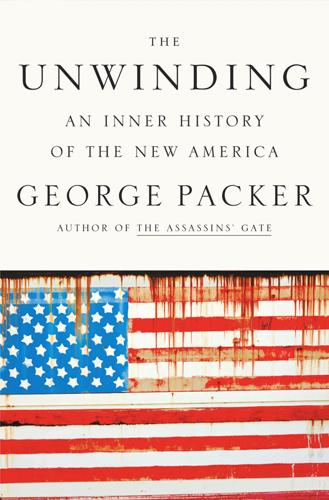
The Unwinding: An Inner History of the New America
by
George Packer
Published 4 Mar 2014
What came to be called the PayPal mafia went on to found a lot of successful companies: YouTube, LinkedIn, Tesla Motors, SpaceX, Yelp, Yammer, Slide … Thiel moved out of his one-bedroom apartment in Palo Alto to a condo in the Four Seasons Hotel in San Francisco. Within a week of leaving PayPal, he started a new fund called Clarium Capital Management. The end of his career as the CEO of a Silicon Valley start-up marked the start of his life as a technology mogul. 1999 WILD RIDE TO THE TURN OF THE CENTURY … ELOQUENT CLINTON ALLY CHOSEN TO GIVE CLOSING ARGUMENT … when you hear somebody say, “This is not about sex,” it’s about … Bill and Hillary Clinton are experimenting with a trial separation, the DRUDGE REPORT has learned.… Party like it’s 1999.
…
Holed up in the Trump Hotel with his lawyer and crew playing guts, a three-card game that rewarded self-possession. Vowed never to lose his shit again and later copped a plea, getting away with probation. He became a corporate rapper, an outlaw entrepreneur, wearing sneakers to the boardroom like in a Silicon Valley start-up, working in the legit world while living the hustler’s dream. He retired from rapping in 2003 at Madison Square Garden (but that didn’t last long) and became a music executive, president of Def Jam, the biggest label in hip-hop. He cut his old partner at Roc-A-Fella loose, taking the name with him—“It’s just business,” Jay-Z told Damon Dash, sounding like another screen mobster.
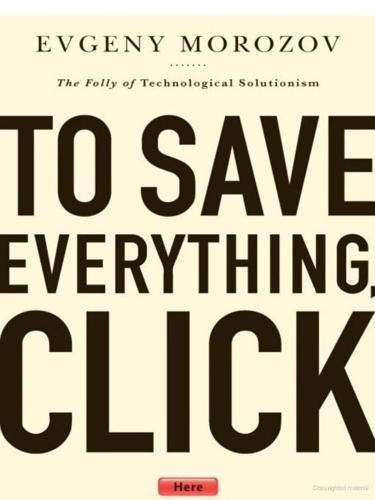
To Save Everything, Click Here: The Folly of Technological Solutionism
by
Evgeny Morozov
Published 15 Nov 2013
According to Jarvis, Gutenberg, “possibly the world’s first technology entrepreneur,” should be seen as “the patron saint of Silicon Valley, for he used technology to create an industry—perhaps the genesis of industrialization itself—and to improve his world.” There’s more: “Gutenberg—just like a modern-day startup—depended on exploiting new efficiencies, achieving scale, reusing assets, dividing specialized labor, and setting standards.” In fact, “the parallels between his enterprise and those of Silicon Valley startups today is [sic] striking. He faced similar challenges and grappled with apparently timeless business dynamics. He, too, operated in a climate of disruption and, like his entrepreneurial descendants, caused profound change of his own.” Navigating the bogs of contemporary Internet hype, one has to be careful not to assume that such hype is itself unique to “the Internet.”
…
The problem with Silicon Valley’s quest to organize the world’s information (Google is only one of the many culprits here) is that it tends to succumb to the worst excesses of “information reductionism”—a tendency to view all knowledge through the prism of information that sociologist Nikolas Tsoukas faults for assuming that “a set of indices” can “adequately describe, to represent, the phenomenon at hand.” The quest to organize the world’s knowledge cannot proceed without doing at least some violence to the knowledge it seeks to organize; making knowledge “legible,” to borrow James Scott’s phrase, is tricky regardless of whether a totalitarian government or a Silicon Valley start-up does it. According to Tsoukas, information reductionism thrives whenever humans start thinking of ideas as autonomous objects that can be exchanged between the sender and the recipient in their original form, without any distortion that might be introduced by the communications channel or the nodes doing the sending and the receiving.
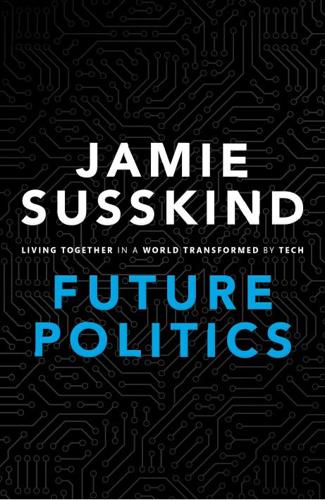
Future Politics: Living Together in a World Transformed by Tech
by
Jamie Susskind
Published 3 Sep 2018
Forster portrayed a world in which humans were subordinated to The Machine, a global technological system that monitored and controlled every aspect of human existence.27 Some writers have tried to pin down what they see as the ideology of our own time. Evgeny Morozov, for instance, has written of the ‘Google Doctrine’ (‘the enthusiastic belief in the liberating power of technology accompanied by the irresistible urge to enlist Silicon Valley start-ups in the global fight for freedom’);28 ‘cyber-utopianism’ (‘a naive belief in the emancipatory nature of online communication that rests on a stubborn refusal to acknowledge its downside’);29 and ‘solutionism’ (‘Recasting all complex social situations either as neatly defined problems with definite, computable solutions or as transparent and self-evident processes that can be easily optimized—if only the right algorithms are in place’).30 My own view is that the technologies in question are too young for us to know what lasting imprint they will leave on our political thought.
…
32 OUP CORRECTED PROOF – FINAL, 28/05/18, SPi РЕЛИЗ ПОДГОТОВИЛА ГРУППА "What's News" VK.COM/WSNWS Index Jie, Ke 32 job applicants 266–7, 268 Jobs, Steve 314 Johnson, Bobby 399 Johnson, Steve 427 Jones, Steve 388 Jøsang, Audun 423 Jouppi, Norm 375 judicial system 102 Jury Theorem 224 justice algorithmic injustice 279–94 civil 259 concept 74–5, 76 conceptual analysis 81 criminal 259 as desert 260–1 as dessert 261, 262 distributive 257–70, 274, 278 and equality, difference between 259 fairness principle 353 property 313–41 in recognition 260, 271–8 social see social justice technological unemployment 295–312 Justinian, Emperor 202 Kahane, Guy 434 Kant, Immanuel 186, 272, 406 Karrahalios, Karrie 433 Kasparov, Garry 31, 36, 373 Kassarnig,Valentin 372 Keen, Andrew 376 Kelion, Leo 413 Kellmereit, Daniel 380 Kelly, Kevin 20, 21, 370, 373, 374, 375, 430 Kelly, Rick 384, 385 Kelly III, John E. 386, 388 Kelsen, Hans 103, 392 Kennedy, John F. 164, 188, 347 Kennedy, Robert F. 256 Keurig 116 Khatchadourian, Raffi 52, 382 503 Khomami, Nadia 397 Al-Khwār izmī, Abd’Abdallah Muhammad ibn Mūsā 94 Kim, Mark 376 King, Martin Luther 6, 180, 257, 360, 404 Kirchner, Lauren 403 Kirobo Mini 55 Kitchin, Rob 376, 377, 380, 381, 387, 388, 391, 404 Klaas, Brian 408 Kleinman, Zoe 383 Knockel, Jeffrey 399 Koch brothers 230 Kolhatkar, Sheelah 367, 423 Kollanyi, Bence 413 Korea 20 Kotler, Steven 374, 435 Krasodomski-Jones, Alex 412 Kurzweil, Ray 38, 366, 374, 436 Kymlicka, Will 418 labour market 303 Lai, Richard 386 Lampos,Vasileios 393 Landemore, Hélène 408, 411, 416 Laney, Doug 431 Langbort, Cedric 433 language importance to politics 16–17, 19 limits of 10–11 political concepts 76–80 public and private power 157 Lanier, Jaron 367, 374, 384, 400, 416, 419, 428, 431, 435 Data Deal 338 human enhancement 363 network effect 321 Silicon Valley startups 6–7 Wiki Democracy 246 Lant, Karla 376 Laouris,Yiannis 435 Large Hadron Collider 65 Larkin,Yelena 427 Larson, Jeff 403, 422 Larson, Selena 370, 421 OUP CORRECTED PROOF – FINAL, 28/05/18, SPi РЕЛИЗ ПОДГОТОВИЛА ГРУППА "What's News" VK.COM/WSNWS 504 Index law adaptive 107–10 AI Democracy 253 AI systems 31 code-ified 110–12, 245 digital 100–14 dissent 179–80 enforcement 101–7 intellectual property 332 justice in recognition 274–5 oral cultures 111–12 rule of 115 self-enforcing 101–3 supercharged state 171–2 wise restraints 185–6 written 111, 112 Lawrence, Neil 374, 388, 427 Leftwich, Adrian 389 Lenin,Vladimir Ilyich 21, 153, 370 Leonardo Da Vinci 28 Lessig, Lawrence 391, 392, 394, 420, 433 code as law 96 cyberspace as a place 97 free software 359 law enforcement through force 104, 105 privatization of force 100, 117 Leta Jones, Meg 138, 397, 432 Levellers 215–16 Levy, Steven 404 Lewis, Michael 428 liberal democracy 216–17, 246, 254 liberal-democratic principle of legitimacy 350 liberalism 77, 350 liberty 3, 10, 23, 346 concept 74–5, 76 conceptual analysis 81 contextual analysis 84 Deliberative Democracy 234 and democracy 207–8, 222, 225, 249 digital 205–7 digital dissent 179–84 digital liberation 168–71 harm principle 195–205 human enhancement 363 nature of politics 74 price mechanism 270 and private power 189–94 supercharged state 171–9 and the tech firm 188–208 transparency regulation 355 types 164–8 wise restraints 184–6 see also freedom Library of Congress 56 life-logs 63 Lincoln, Abraham 89, 210, 231, 323 Linn, Allison 398 Linux 243–4, 245, 333 Lipińska,Veronika 435 lip-reading 30 liquid democracy 242 Lively, J. 409 Livingston, James 425 Livy 216 loans, and distributive justice 267, 268 Locke, John 216, 246, 301, 323, 429 loomio.org 234 Lopatto, Elizabeth 434 lottery, work distribution via 304 Loveluck, Benjamin 378 Luca, Michael 423 luck egalitarianism 262, 307 Luddites 13 Lukes, Steven 390–1, 395, 398 Luxemburg, Rosa 348, 432 Lynch, Jack 384 Machiavelli, Niccolò 188, 217, 406, 409 machine learning 34–7, 266 algorithmic injustice 293 commons 332 data-based injustice 282 Data Democracy 248 data’s economic importance 317 distributive justice 267 future of code 98 group membership fallacy 284 OUP CORRECTED PROOF – FINAL, 28/05/18, SPi РЕЛИЗ ПОДГОТОВИЛА ГРУППА "What's News" VK.COM/WSNWS Index increasingly quantified society 61 liberty and private power 191 political campaigning 220 predictions 139, 173, 175 productive technologies 316 rule-based injustice 284 MacKinnon, Rebecca 396 Madison, James 216, 241, 369, 415 MagicLeap 59 Maistre, Joseph de 101 make-work 304 manipulation 93, 122 code 96, 97 digital liberation 170–1 harm principle 200 Mannheim, Karl 78, 390 Manyika, James 424 Mao, Huina 416 Marconi, Guglielmo 21 marginalization 273 Margretts, Helen 410 market system, and distributive justice 264–5 Markoff, John 400, 413 Martinez, Peter 413 Marx, Karl 367, 390, 398, 415, 417, 424, 425, 429, 434, 436 Communist Manifesto 326–7, 362 Direct Democracy 240–1 future of political ideas 86 justice 258 perception-control 144 on philosophers 7 political concepts 78 property 324, 326–7 sorcerer 366 workers 295, 298, 301, 307 Mason, Paul 374 Massachusetts Institute of Technology see MIT Mattu, Surya 403 Maxim, Hiram 20 Mayer-Schönberger,Viktor 387, 388, 395, 397, 427, 433 data 62, 65 forgetting versus remembering 137 505 Mayr, Otto 14, 368 McAfee, Andrew 374, 382, 390, 393, 427, 431 capital 315, 316, 334 McChesney, Robert W. 400, 427 McDermott, Daniel 390 McGinnis, John O. 416 McKinsey 295, 299 Mearian, Lucas 386 MedEthEx 108 medicine 3D printing 56–7 AI systems 31, 32, 108–9, 113 digital law 112–13 increasingly integrated technology 51, 54, 56–7 ransomware 182 robotics 54 technological unemployment 300 Medium 183 memory 136–8 Merchant, Brian 430 merit, and distributive justice 261 Mesthene, Emmanuel G. 368 metadata 63 Metcalfe’s Law 320 Metz, Cade 372, 373, 374, 375, 380 Metz, Rachel 407 Michaely, Roni 427 Microsoft acquisitions 318 chips 40 commons 332 concentration of tech industry 318, 320 Global Internet Forum to Counter Terrorism 191 HoloLens 59 patents 315 speech-recognition AI system 30 Tay 37, 346 might is right 349 military AI systems 31 brain–computer interfaces 48 sensors 50 OUP CORRECTED PROOF – FINAL, 28/05/18, SPi РЕЛИЗ ПОДГОТОВИЛА ГРУППА "What's News" VK.COM/WSNWS 506 Index Mill, James 195 Mill, John Stuart 367, 403, 406–7, 411, 414, 415 change, need for 3 Deliberative Democracy 234 democracy 223 freedom of speech, constraints on 237 harm principle 196, 198, 199, 203 liberty 195–6, 201, 203 liquid democracy 242 normative analysis 83 predictions 173 upbringing 195 Miller, David 435 Mills, Laurence 418 Milton, John 124, 167, 395 minstrel accounts 232 Mirani, Leo 396 Miremadi, Mehdi 424 Misra, Tanvi 377 MIT affective computing 53 bomb-detecting spinach 50–1 Senseable City Lab 50 Technology Review Custom 427 temporary tattoos for smartphone control 51 Mitchell, Margaret 403 Mitchell, William J. 183, 376, 405 Mizokami, Kyle 379 Moley 407 Momentum Machines 299 Montesquieu, Charles de Secondat, Baron de 358, 433 Moore, Gordon 39, 374 Moore’s Law 39–40, 41 morality AI Democracy 253 automation of 176–7 Data Democracy 249–50 Direct Democracy 240 fragmented 204, 231 harm principle 200–5 justice in distribution 261 see also ethics Moravec’s paradox 54, 382 More, Max 402, 434 Morgan, J.
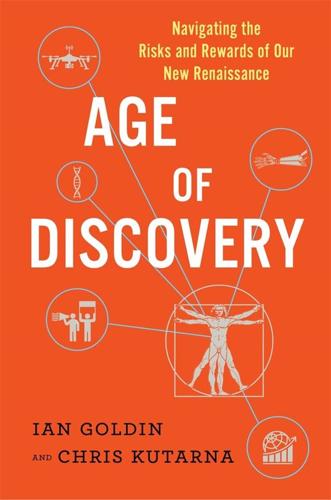
Age of Discovery: Navigating the Risks and Rewards of Our New Renaissance
by
Ian Goldin
and
Chris Kutarna
Published 23 May 2016
They carry with them their culture, language and ideas, and they connect their host country to useful networks back home. Plus, they bring to their work the same courage and ingenuity they demonstrated by moving to a new country. The founders of Google (Alphabet), Intel, PayPal and Tesla were all immigrants. In 2005, immigrants headed up 52 percent of all Silicon Valley startups and 25 percent of all US technology and engineering firms founded in the previous 10 years. Immigrant-American Nobel laureates, National Academy of Science members and Oscar-winning directors outnumber their native-born peers three to one.61 Some economists figure that returning to a pre–World War I immigration regime (when labor moved freely about the world) would contribute $40 trillion—2.6 times present-day US GDP—to the global economy over the next 25 years, and more or less end poverty at the same time.62 “All foreigners have the unrestricted right of entrance and residence,” Britain’s Secretary of State, Lord Granville, pronounced—in 1872.
…
In the US, 11 million undocumented immigrants are trapped in an American half-life—able, in 7 out of 10 cases, to find low-skilled work,49 but unable to access public services or pay the taxes that would make them full members of their host communities.50 High-skilled immigrants are also being turned away. In 2004, the annual visa quota for skilled temporary workers in the US was slashed from 195,000 to 85,000, making it much harder for foreign students to linger in the country past graduation.51** This dampened innovation almost immediately. In the decade 1995–2005, 52 percent of Silicon Valley tech startups were founded or co-founded by immigrants. Since then, that figure has fallen to 42 percent.52 Would-be entrepreneurs still come to America to fill their heads with ideas (more than half of the 150,000 students who each year earn advanced math, science and engineering degrees from US universities are foreign-born), but more and more are returning home to set up their companies (and create the associated jobs and wealth).53 Even if the intention behind tighter immigration controls is to help citizens during a time of economic distress, the overall results are the opposite.

Masters of Scale: Surprising Truths From the World's Most Successful Entrepreneurs
by
Reid Hoffman
,
June Cohen
and
Deron Triff
Published 14 Oct 2021
“The unhelpful no” If you’re the kind of person who might get easily discouraged or talked out of your idea, you need to keep your idea away from people whose opinions you have an emotional investment in. 2 Do Things That Don’t Scale The meeting definitely did not go as he expected. In 2009, Brian Chesky, a young entrepreneur with a big idea, was meeting with Paul Graham, co-founder of Y Combinator, the renowned Silicon Valley startup accelerator. Brian’s company, Airbnb, was partway through the Y Combinator program, and he was ready to wow Paul with his vision of a bright future for an unconventional new business that enabled people to rent out their spare rooms or sofa beds to total strangers. Airbnb was already up and running, but at this early stage not many people seemed to know about it.
…
And it gave new momentum to the format that changed the rules of audio forever—allowing anyone to record and distribute their own content, unbeholden to radio’s broadcast rules or gatekeepers. The shows weren’t just for iPods; you could listen to them on any computer. But the catchy new name for the relatively new medium created a swell of interest among early adopters and audiophiles. Ev Williams had a plan to ride that wave. Ev had already made a name for himself in Silicon Valley with a startup called Blogger, a trailblazing service that enabled users to easily set up their own blogs. Blogger captured the cultural zeitgeist but had a bumpy run as a business; in Blogger’s last year as an independent company, Ev worked on the site alone, without staff or salary. He eventually sold to Google.

A More Beautiful Question: The Power of Inquiry to Spark Breakthrough Ideas
by
Warren Berger
Published 4 Mar 2014
What if we could create this same experience in every major city? Here is where the two dreamers ran headfirst into conventional wisdom. Initially, no one, outside of Chesky, Gebbia, and a third partner they brought on, thought this was an idea that made business sense or was worth supporting. Paul Graham, a renowned angel investor in Silicon Valley who runs the start-up incubator firm Y Combinator, believed quite simply, “No one would want to stay in23 someone else’s bed.” The idea that would eventually become Airbnb was challenging a basic assumption: that you needed established, reputable hotels to provide accommodation for out-of-town visitors.
…
What if we were to compete against ourselves?16 In 2007, the 150-year-old Atlantic Monthly was suffering along with many other advertising-starved magazines. Publisher David G. Bradley brought in new editorial and business teams and, the New York Times reports, they brainstormed as if they were launching a Silicon Valley startup whose mission was to attack the magazine, asking: What would we do if the goal was to aggressively cannibalize ourselves? Answer: they’d launch an assault on the digital front. Knowing that news aggregation was killing magazines, they started their own “killers,” TheAtlantic Wire.com, TheAtlanticCities.com, and Quartz.
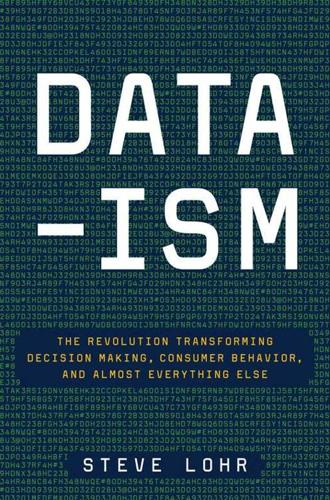
Data-Ism: The Revolution Transforming Decision Making, Consumer Behavior, and Almost Everything Else
by
Steve Lohr
Published 10 Mar 2015
The founders’ pitch was that Nest had a historic opportunity to transform the conventional thermostat from a dumb switch into a clever digital assistant that would save home owners money, reduce energy consumption, and curb pollution. A few industrial companies sold programmable thermostats, but they proved to be so hard to program that few people did. The Silicon Valley start-up would make a digital device that didn’t ask users to program it. Nest was producing “the world’s first learning thermostat—a thermostat for the iPhone generation,” as Fadell told me in the fall of 2011, when Nest was about to introduce its first product. In Fadell’s telling, Nest was a new take on Silicon Valley’s favorite story line: change the world and make a bundle.

The Creative Curve: How to Develop the Right Idea, at the Right Time
by
Allen Gannett
Published 11 Jun 2018
The gift shop at the hotel where I was staying sold both Ben & Jerry’s ice cream and Vermont maple syrup. I saw electric cars everywhere on the city streets. In Ben & Jerry’s parking lot there was even a Ben & Jerry’s–branded Tesla. The office was designed back in 1996, yet it has the feel of a Silicon Valley start-up. Long before Google and Facebook, Ben & Jerry’s built an iconoclastic culture. Dogs are welcome in the office (my visit was punctuated by periodic barks), and a massive red slide by the main entrance transports employees from the second-floor conference room down to the first. In addition, there’s a huge gym (which helps to counteract the “Ben 10”), a yoga room, and a private nursing room named the Milky Way.
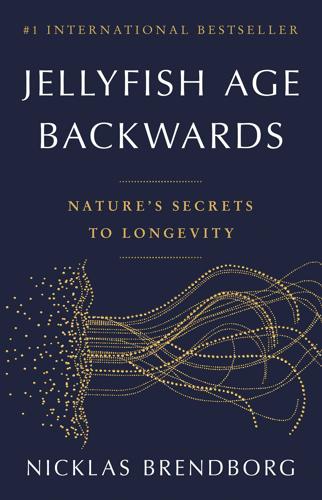
Jellyfish Age Backwards: Nature's Secrets to Longevity
by
Nicklas Brendborg
Published 17 Jan 2023
And of course, if you ever see that, I’d suggest you run really fast to get there first. Not surprisingly, this sidewalk race already has many contestants. Several companies backed by billionaires and big-name scientists have launched within a couple of years in the pursuit of cellular reprogramming in humans. Of particular note is the Silicon Valley start-up Altos Labs, which is potentially the biggest shot at fighting ageing anyone has ever taken. Investors have put $3 billion into the company, though exactly who is behind the money is unknown. Several of the richest people in the world, among them Jeff Bezos, are rumoured to be involved. As a result, the employee roll at Altos Labs is hard to distinguish from the literature list in the back of this book.

The Driving Machine: A Design History of the Car
by
Witold Rybczynski
Published 8 Oct 2024
On top of its limited range, the Leaf cost $10,000 more than a Prius. THE LEAF AND THE PRIUS were answers, or partial answers, to the problem of emissions, but they were not particularly appealing cars, either in terms of performance or design. That changed thanks to the Tesla Roadster. Tesla Motors was a Silicon Valley startup established in 2003 by Martin Eberhard (b. 1960), an elec trical engineer, and Marc Tarpenning (b. 1964), a computer scientist. Although neither had automotive experience, they set out to manufacture an electric car. Their largest investor was the South African–born billionaire entrepreneur Elon Musk (b. 1971), who had made his fortune with PayPal, an online payment system, and had recently founded SpaceX, a spacecraft manufacturer.

Zucked: Waking Up to the Facebook Catastrophe
by
Roger McNamee
Published 1 Jan 2019
On its own terms, Facebook’s human resources strategy worked exceptionally well. The company exceeded its goals year after year, creating massive wealth for its shareholders, but especially for Zuck. The success of Facebook’s strategy had a profound impact on the human resources culture of Silicon Valley startups. In the early days of Silicon Valley, software engineers generally came from the computer science and electrical engineering programs at MIT, Caltech, and Carnegie Mellon. By the late seventies, Berkeley and Stanford had joined the top tier. They were followed in the mid-nineties by the University of Illinois at Urbana-Champaign, the alma mater of Marc Andreessen, and other universities with strong computer science programs.
…
After On, by Rob Reid (New York: Del Rey, 2017), imagines a next-generation social network whose AI becomes sentient. This is a long but incredibly funny novel that is worth every moment you spend with it. You will understand why technologists must be forced to prepare for unintended consequences. They always happen, and their impact is increasingly harmful. HBO’s television series Silicon Valley lampoons the startup culture in a way that always rings true. The plots are exaggerated, but not by as much as you might think. The Valley culture is strange. When I first met the creative team, I asked the boss man, Mike Judge, to describe the gestalt of the show. He said, “There is a titanic struggle between the hippie culture espoused by people like Steve Jobs and the libertarian culture of Peter Thiel.”
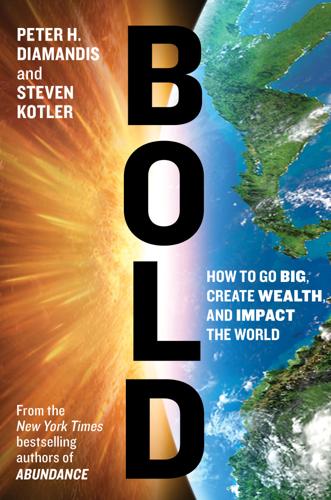
Bold: How to Go Big, Create Wealth and Impact the World
by
Peter H. Diamandis
and
Steven Kotler
Published 3 Feb 2015
How did Kodak—a hundred-year-old behemoth with 140,000 employees and a 1996 value of $28 billion—fail to take advantage of the most important photographic technology since roll film and end up in bankruptcy court? Simultaneously, how did a handful of entrepreneurs working out of the proverbial Silicon Valley garage go from start-up to a billion-dollar buyout in eighteen months, with a little more than a dozen employees? Simple: Instagram was an exponential organization. Welcome to the New Kodak Moment—the moment when an exponential force puts a linear company out of business. As we shall see over and over again, these New Kodak Moments are not aberrations.
…
Having spent the previous twenty-three years working for the Sealed Air Corporation, the inventors of Bubble Wrap, Reichental didn’t know much about additive manufacturing. But what he did understand was innovation. “Sealed Air wasn’t your standard package goods company,” says Reichental. “It was more like a Silicon Valley start-up: totally entrepreneurial, always exploring new possibilities, always trying to crack open new markets.” As a result, Reichental worked dozens of different jobs during his Sealed Air tenure—eventually becoming the company’s fourth-ranking officer and helping grow the firm from a 400-person, $100 million business (when he joined), into an 18,000-person, $5 billion behemoth (when he left).
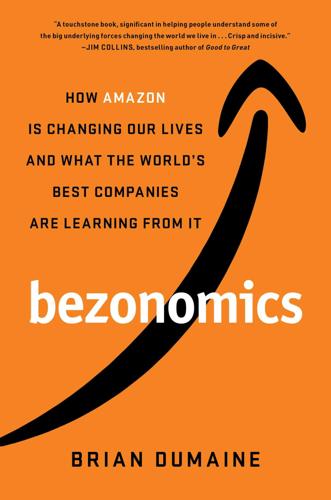
Bezonomics: How Amazon Is Changing Our Lives and What the World's Best Companies Are Learning From It
by
Brian Dumaine
Published 11 May 2020
In early 2019, Amazon led a $700 million investment round in Rivian, a Michigan company that is developing a battery-powered pickup truck and a sport utility vehicle. Ford later that year invested another $500 million in the company. Around the same time, Amazon led a $530 million investment round for Aurora, a Silicon Valley self-driving vehicle start-up founded by three stars of this emerging industry: Sterling Anderson, Drew Bagnell, and Chris Urmson. Anderson ran Tesla’s autopilot program, Bagnell headed the autonomy and perception team at Uber, and Urmson was the former head of Google’s self-driving project, which has morphed into one of the leading self-driving car companies: Waymo.
…
Also favoring delivery vans in this first-mover role is that, for the most part, they have predictable routes and therefore can more easily learn the ins and outs of complex cityscapes—reducing the chance of navigation errors and accidents. A number of innovative companies, working with big retailers, are already running pilot programs with autonomous delivery vans. On January 30, 2018, the Silicon Valley start-up Udelv made what it claims to have been the first self-driving delivery for Draeger’s Market in San Mateo, California. The brains of the vehicle were built on the Apollo software platform, created by the Chinese search engine company Baidu. Baidu is in competition with Alphabet’s Waymo and others to create an industry standard—sort of like Android for self-driving vehicles.

The Filter Bubble: What the Internet Is Hiding From You
by
Eli Pariser
Published 11 May 2011
As anthropologist Coleman points out, beyond the Jocks-and-Nerds stereotypes, there are actually many different geek cultures. There are open-software advocates, most famously embodied by Linux founder Linus Torvalds, who spend untold hours collaboratively building free software tools for the masses, and there are Silicon Valley start-up entrepreneurs. There are antispam zealots, who organize online posses to seek out and shut down Viagra purveyors. And then there’s the more antagonistic wing: spammers; “trolls,” who spend their time looking for fun ways to leverage technology at others’ expense; “phreaks,” who are animated by the challenge to break open telecommunications systems; and hackers who break into government systems to prove it can be done.

Are You Smart Enough to Work at Google?: Trick Questions, Zen-Like Riddles, Insanely Difficult Puzzles, and Other Devious Interviewing Techniques You ... Know to Get a Job Anywhere in the New Economy
by
William Poundstone
Published 4 Jan 2012
Backus described his creative process in terms much like Edison’s or Torrance’s: “You have to generate many ideas and then you have to work very hard only to discover that they don’t work. And you keep doing that over and over until you find one that does work.” In 1957, William Shockley, the most cantankerous of the three men credited with inventing the transistor, moved west to build and market electronics. His Shockley Semiconductor Laboratory, the first Silicon Valley start-up, was in Mountain View, a bike ride from where the Googleplex now stands. Shockley was so nuts about using logic puzzles in hiring interviews that he timed applicants with a stopwatch. Maybe that should have been a tip-off. Shockley was a holy terror to work for. Mere months after they were hired, eight of his brightest employees—the “Traitorous Eight”—got so fed up they resigned.

The Great Reset: How the Post-Crash Economy Will Change the Way We Live and Work
by
Richard Florida
Published 22 Apr 2010
At the same time, foreign inventors have become key players in American innovation. Foreign-born scientists currently make up 17 percent of all bachelor’s degree holders, 29 percent of master’s degree holders, 38 percent of PhDs, and nearly a quarter of all scientists and engineers in the United States. Anywhere between a third and half of all Silicon Valley start-ups during the 1990s had a foreign-born entrepreneur or scientist on their core founding team.11 In the past decade, foreign inventors have come to account for almost half of all newly patented innovations. Innovation is no longer a national game but a global one. Anything that might slow the immigration or in-flow of foreign inventors or redirect their inventions and patents, for example a backlash against foreign workers, would impede American innovation and the U.S. economy as a whole.

Whiplash: How to Survive Our Faster Future
by
Joi Ito
and
Jeff Howe
Published 6 Dec 2016
It has one of the most popular drones ever designed for the consumer market, and it’s one of the top ten patent holders in China. It was clearly benefiting from the tradecraft of the factories but also very aware of the importance of being clean (and aggressive) from an IP perspective. DJI had the feel of a Silicon Valley start-up mashed together with the work ethic and tradecraft of the factories the group had been visiting. The tour also visited a very high-end, top-tier mobile phone factory that made millions of phones. All of the parts were delivered by robots from a warehouse that was completely automated. The processes and the equipment were the top of the line and probably as sophisticated as at any factory in the world.
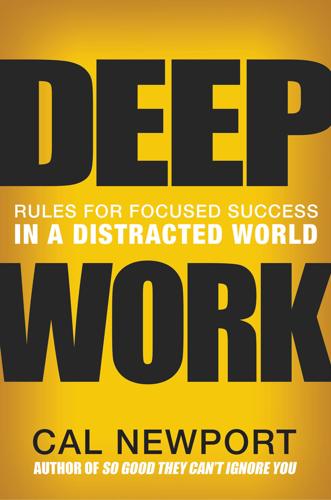
Deep Work: Rules for Focused Success in a Distracted World
by
Cal Newport
Published 5 Jan 2016
A Times article notes that this technology is no longer the “province of chatty teenagers” and is now helping companies benefit from “new productivity gains and improvements in customer response time.” A senior product manager at IBM boasts: “We send 2.5 million I.M.’s within I.B.M. each day.” One of the more successful recent entrants into the business IM space is Hall, a Silicon Valley start-up that helps employees move beyond just chat and engage in “real-time collaboration.” A San Francisco–based developer I know described to me what it was like to work in a company that uses Hall. The most “efficient” employees, he explained, set up their text editor to flash an alert on their screen when a new question or comment is posted to the company’s Hall account.
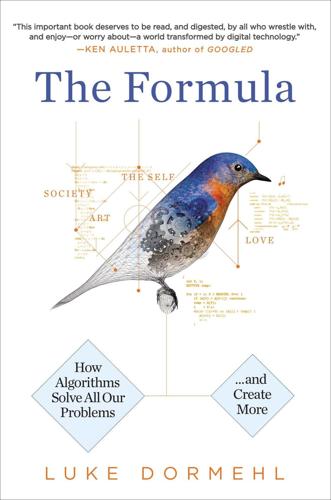
The Formula: How Algorithms Solve All Our Problems-And Create More
by
Luke Dormehl
Published 4 Nov 2014
The more fidgeting, the higher the levels of boredom.17 Even God wasn’t safe from quantification, since Galton saw no reason that the “efficacy of prayer” (the rate at which prayers were answered versus ignored) should not be a “perfectly appropriate and legitimate subject of scientific inquiry.”18 It is into this quantified space that Silicon Valley start-up Knack enters the picture. Founded by Israeli entrepreneur Guy Halfteck, Knack has a deceptively simple aim: to use a combination of gaming technology, machine-learning algorithms and the latest findings from behavioral science to come up with universal measures for terms like “quick-thinking,” “perceptiveness,” “empathy,” “insightfulness,” “spontaneity” and “creativity.”

Smart Money: How High-Stakes Financial Innovation Is Reshaping Our WorldÑFor the Better
by
Andrew Palmer
Published 13 Apr 2015
But they are also behavioral: the power of social ties means that default rates (that is, on the public commitment to keep saving even if you have already taken home the weekly pool) are very low. ROSCAs work very well in emerging markets: they are extremely common in markets where banking systems are undeveloped and cash is king. But they may have a high-tech future as well. A Silicon Valley start-up called ClearStreet wants to take the model online, with an app that allows people to join a digital savings circle in which members make the same sorts of commitments to save into a common pool. The challenge will be to replicate the power of real-world relationships in a virtual environment.
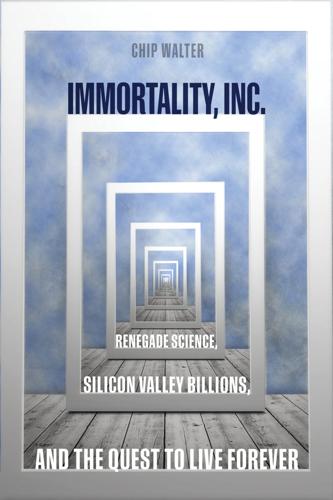
Immortality, Inc.
by
Chip Walter
Published 7 Jan 2020
Maris had surprised almost everyone in Silicon Valley with his departure from Google Ventures in 2016. He went on to create a new venture firm called Section 32, and by 2018, it had raised $350 million. The investments so far were going into life sciences, health care, and high technology. One of the largest investments ($133 million) was in a Silicon Valley start-up called Alector, which focuses on combining antibody technology and new discoveries in human genetics to develop novel therapies for Alzheimer’s disease and other forms of dementia. Peter Thiel, an Alcor board member, was busy too, having recently invested in more than 14 health and biotech companies.
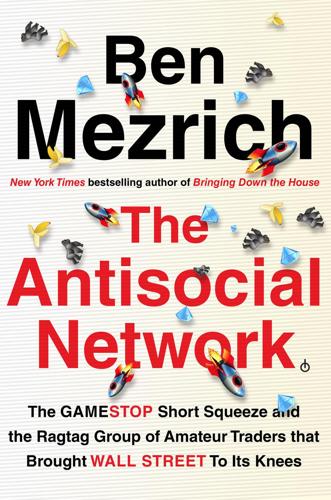
The Antisocial Network: The GameStop Short Squeeze and the Ragtag Group of Amateur Traders That Brought Wall Street to Its Knees
by
Ben Mezrich
Published 6 Sep 2021
Compared to the thousands who worked at your average investment bank in the bevy of skyscrapers sprouting from lower Manhattan, where Jim had previously been employed, or for that matter, the 77,000 who toiled in the glow of Cinderella’s Castle at the Magic Kingdom just down the highway, it was a baby step. But for a Silicon Valley start-up aimed primarily at millennials with a few thousand bucks of barely disposable income to toss at the stock market on a random Friday afternoon, it was quite impressive. No less impressive, the Lake Mary headquarters themselves; maybe not as magazine-worthy as the beachy sprawl in Menlo Park, but fresh and modern, with state-of-the-art conference rooms and offices, and of course, plenty of windows.

Who's Your City?: How the Creative Economy Is Making Where to Live the Most Important Decision of Your Life
by
Richard Florida
Published 28 Jun 2009
This trend may come at the expense of the United States, which has long depended on the innovative and entrepreneurial capabilities of Indian and Chinese immigrants. The detailed research of AnnaLee Saxenian, of the University of California-Berkeley, has shown that Indian and Chinese entrepreneurs ran roughly 25 percent of all Silicon Valley start-ups from 1980 to 1999, which generated $17 billion in annual revenue and about 58,000 jobs.9 By 2005 that percentage had increased to 30 percent. SOURCE: THE WORLD INTELLECTUAL PROPERTY ORGANIZATION; UNITED STATES PATENT AND TRADEMARK OFFICE SOURCE : THE WORLD IN INTELLECTUAL PROPERTY ORGANIZATION, UNITED STATES PATENT AND TRADEMARK OFFICE But as the map shows, there are at most two dozen places worldwide that generate significant innovation.
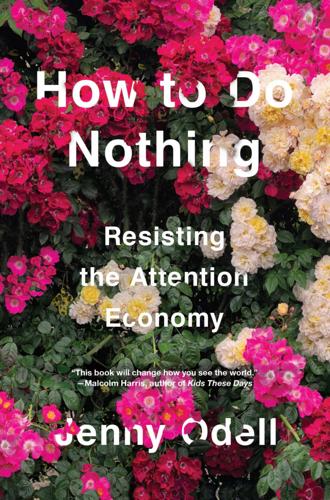
How to Do Nothing
by
Jenny Odell
Published 8 Apr 2019
Their manifesto suggests that “strong neighborhoods not only improve our property value, they improve each one of our lives.” But Joe’s biggest gripe, which is his gripe with most online platforms, has to do with advertising and scale. As of December 2017, Nextdoor was valued at $1.5 billion, and it is as committed to growth and VC funding as any other Silicon Valley startup. In 2017 it invited companies to begin advertising on its network. Now the Nextdoor daily digest email is kicked off by a sponsored post by a company, followed by real estate listings. On Nextdoor’s Ads page, which invites businesses to “connect directly with local communities,” you see the same language as that of a community network—trust, local relevance, and word of mouth—but directed toward brands: Verified identity Confirmed identities result in a brand-safe environment Local at scale Customized messaging drives authentic, relevant connections between consumers and brands Brand advocates Word of mouth from trusted sources is the most effective form of advertising.15 In startup parlance, “at scale” refers to the expansion of a software or service to larger and larger contexts—i.e., the development of a local prototype into a widely used product.
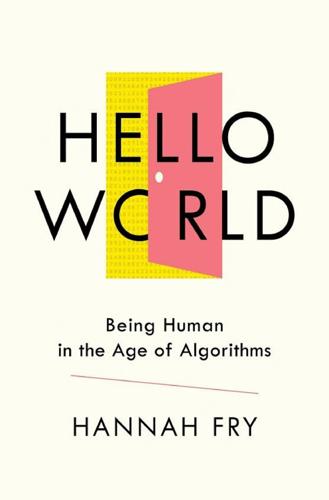
Hello World: Being Human in the Age of Algorithms
by
Hannah Fry
Published 17 Sep 2018
If that’s what you can infer from people’s shopping habits in the physical world, just imagine what you might be able to infer if you had access to more data. Imagine how much you could learn about someone if you had a record of everything they did online. The Wild West Palantir Technologies is one of the most successful Silicon Valley start-ups of all time. It was founded in 2003 by Peter Thiel (of PayPal fame), and at the last count was estimated to be worth a staggering $20 billion.8 That’s about the same market value as Twitter, although chances are you’ve never heard of it. And yet – trust me when I tell you – Palantir has most certainly heard of you.

The System: Who Owns the Internet, and How It Owns Us
by
James Ball
Published 19 Aug 2020
ICANN and its stakeholders have clearly managed to think up a new and more secure system that would fix at least some of the system’s problems, and they still host regular ceremonies to keep its certificates up to date; but nearly a decade after the system began, it’s still barely used in practice, even if the big players have signed up in theory. ‘Slow and bureaucratic’ are supposedly dead concepts, things of the past when it comes to the ‘move fast and break things’ mantras of the Silicon Valley start-ups – but when it comes to online infrastructure, the analogy seems to be more ‘move fast, grow fast, fix achingly slowly’. The struggles of working out these tensions are more obvious in what – at first at least – seems like one of ICANN’s more trivial functions: deciding what gets to be a web domain, and who gets to administer it if so.

The Broken Ladder
by
Keith Payne
Published 8 May 2017
If even everyday situations give rise to hierarchies, it’s not surprising that workplaces are even more prone to do so. In fact, when scholars have tried to study organizations that function without one, they can’t seem to find any. For example, the design firm IDEO is famous for its lack of a hierarchical structure. When it was founded in the 1990s, it had the look and feel of a Silicon Valley start-up. Almost all of its employees had the same title: engineer. Although it lacked a formal hierarchy, when scholars observed the daily routines of its employees, they saw status differences everywhere. The engineers competed during brainstorming sessions to develop creative ideas, and those who had a reputation for coming up with the best ones received more deference from others, and were paid more.

Wonder Boy: Tony Hsieh, Zappos, and the Myth of Happiness in Silicon Valley
by
Angel Au-Yeung
and
David Jeans
Published 25 Apr 2023
His story also defied what it meant to be an Asian man in America, and he eluded stereotypes placed on him by society. From an early age, Tony wanted to be seen as something more than a quiet Asian brainiac with thick glasses. In an era when Asian men were depicted in popular culture as geeks who loved mathematics and were rarely seen in the C-suites of public companies, let alone Silicon Valley startups, Tony broke through with his life story and entered the pop culture psyche—a dynamic captured time and again through his career. There’s a photo taken at Microsoft’s headquarters in Seattle, a year before Zappos was sold to Amazon. Bill Gates is standing in front of a cascade of brown boxes, flanked by six individuals, one of whom is Tony.
…
In addition to cold exposure therapy and enhanced breathing techniques, Dorsey had spoken about eating only one meal a day and fasting completely on weekends as a way to improve his tolerance of stress and optimize other aspects of his health. Others had invoked biohacking as the logic behind various experiments aimed to increase longevity. Dave Asprey, the self-described “father of biohacking” who founded the Silicon Valley supplement startup Bulletproof Nutrition, underwent an operation where a doctor harvested stem cells from his bone marrow and then injected them back into his body in the hope that it would enable him to live to 180 years old. And in the far nether regions of biohacking are people who call themselves “grinders,” those who implant computer chips under their skin in experiments to wire the brain directly to a digital output.

Future Crimes: Everything Is Connected, Everyone Is Vulnerable and What We Can Do About It
by
Marc Goodman
Published 24 Feb 2015
Today, inventors such as Scott Summit, founder of Bespoke Innovations, are using 3-D printers to create next-generation customized prosthetics that are not only perfectly fitted but beautifully designed. Digital fabrication can be used to print entire homes, concrete, electrical wiring, plumbing, and all. NASA has even purchased a 3-D printer for the International Space Station from the Silicon Valley start-up Made in Space to ensure it never has to worry about a missing part on board endangering the lives of astronauts, as was the case with Apollo 13. Bio-fabricating printers have taken things to the next level with machines that can even print human tissues and organs, such as capillaries, kidneys, ears, and hearts, potentially doing away with organ transplant lists and saving lives.
…
Despite the risks noted by Hawking and many others, research and development in the field of advanced artificial intelligence continues unabated. There are even those who believe it might be possible to use artificial intelligence to replicate the neocortex of the human brain. One such company, Vicarious, a Silicon Valley start-up, is developing AI software “based upon the computational principles of the human brain.” An AI that can learn. Tens of millions of dollars in venture capital funding have flowed to the firm, including prominent investments by Facebook’s Mark Zuckerberg and PayPal’s co-founder Peter Thiel.

Facebook: The Inside Story
by
Steven Levy
Published 25 Feb 2020
Six months earlier, the idea of delegating that task would have gone to Eduardo Saverin, the co-founder in charge of the company’s commercial aspect. But Saverin had remained on the East Coast that summer, selling ads for Thefacebook, with plans to return to Harvard to finish his degree. He’d missed the shift from an East Coast college product to an ambitious Silicon Valley start-up. Sean Parker, the louche Yoda of La Jennifer Way, thought that Saverin was a drag on the company and would often say so. As one observer puts it, “Eduardo was talking about thousands when Sean was talking about millions.” At one point, Parker asked Callahan if he could fill in for Saverin’s duties.
…
In part this was because Zuckerberg made it clear that while seeking profits was definitely something he encouraged, it was not the heart of the company. And in part it was because Saverin simply was not around. When Thefacebook moved to California, Saverin decided to remain on the East Coast that summer. Had he lived in “Casa Facebook,” maybe he would have picked up the business-model basics of a Silicon Valley start-up. As it was, Sean Parker began angling to replace him, with Zuckerberg’s tacit compliance. Late that fall, Parker tapped his former housemate Ezra Callahan to help with a business plan. Callahan’s previous experience in commerce was limited to selling ads for his college paper. No matter.

The Inequality Puzzle: European and US Leaders Discuss Rising Income Inequality
by
Roland Berger
,
David Grusky
,
Tobias Raffel
,
Geoffrey Samuels
and
Chris Wimer
Published 29 Oct 2010
“As the market becomes more global, the power of governments to lower inequality is reduced, indeed political leaders increasingly face a market rather than create it, just as managers increasingly face a market rather than create it. That may be the grand development of our time.” Jerry Yang is the co-founder of Yahoo!, the Internet indexing and portal company. In one of the most famous Silicon Valley start-up stories, Yang founded Yahoo! with David Filo while a Stanford student in 1994 as “Jerry and Dave’s Guide to the World Wide Web,” and renamed the company as Yahoo! in 1995. Initially built as a web portal indexing a range of online products and services, today the company is one of the most visited Internet brands.
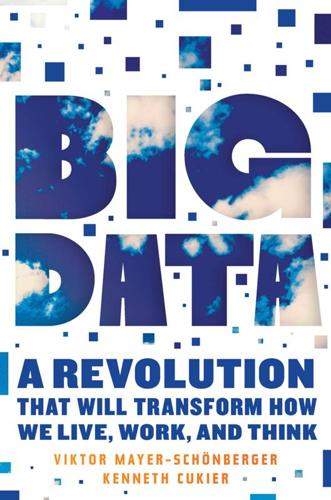
Big Data: A Revolution That Will Transform How We Live, Work, and Think
by
Viktor Mayer-Schonberger
and
Kenneth Cukier
Published 5 Mar 2013
Being a sample rather than everything, the dataset lacks a certain extensibility or malleability, whereby the same data can be reanalyzed in an entirely new way than the purpose for which it was originally collected. Consider the case of DNA analysis. The cost to sequence an individual’s genome approached a thousand dollars in 2012, moving it closer to a mass-market technique that can be performed at scale. As a result, a new industry of individual gene sequencing is cropping up. Since 2007 the Silicon Valley startup 23andMe has been analyzing people’s DNA for only a couple of hundred dollars. Its technique can reveal traits in people’s genetic codes that may make them more susceptible to certain diseases like breast cancer or heart problems. And by aggregating its customers’ DNA and health information, 23andMe hopes to learn new things that couldn’t be spotted otherwise.

Space 2.0
by
Rod Pyle
Published 2 Jan 2019
An example of how this might evolve with regard to space infrastructure would be NASA providing the rockets to get to the moon, while private industry provides the landers and surface machinery for mining and processing resources there. This is exactly what Blue Origin is proposing with its Blue Moon lander, and Silicon Valley startup Moon Express with its lunar mining robots. The eventual expansion of such partnerships could see the mining of lunar ores and construction of structures with refined lunar material, with human occupants supported by moon-mined water and oxygen. Artist’s concept of a 3-D printed structure being fabricated from lunar soil.

Big Business: A Love Letter to an American Anti-Hero
by
Tyler Cowen
Published 8 Apr 2019
In 2017, some of the critics pointed to Juicero, a $400 Wi-Fi–enabled juicer that has been called “the absurd avatar of Silicon Valley hubris.” (The company later went under.) Scott Alexander, one of my favorite bloggers (on the internet, of course), set out to rebut this charge. Here is what he found: I looked at the latest batch of 52 startups from legendary Silicon Valley startup incubator Y Combinator. Thirteen of them had an altruistic or international development focus, including Neema, an app to help poor people without access to banks gain financial services; Kangpe, online health services for people in Africa without access to doctors; Credy, a peer-to-peer lending service in India; Clear Genetics, an automated genetic counseling tool for at-risk parents; and Dost Education, helping to teach literacy skills in India via a $1/month course.

Super Founders: What Data Reveals About Billion-Dollar Startups
by
Ali Tamaseb
Published 14 Sep 2021
One big caveat, however, is that some companies moved to Silicon Valley after they were able to raise money and see initial success; raising money helped them afford the exorbitant costs of running a business and living there. Dropbox’s founders, for example, moved from Boston to San Francisco after Y Combinator. So that might account for some of Silicon Valley’s success. And it’s no doubt that Silicon Valley startups had easier access to large pools of venture capital and a dense pool of talent, further contributing to their success. Until very recently, many venture capitalists were only investing in locations to which they could drive to attend a board meeting. Things have certainly changed since then.
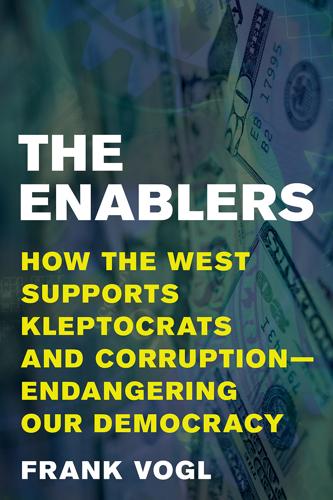
The Enablers: How the West Supports Kleptocrats and Corruption - Endangering Our Democracy
by
Frank Vogl
Published 14 Jul 2021
And they’ve pioneered an expansive approach to stealing innovation through a wide range of actors, including not just Chinese intelligence services but state-owned enterprises, ostensibly private companies, certain kinds of graduate students and researchers, and a whole variety of other actors all working on their behalf. But it’s also a diverse threat when it comes to the sectors and sizes of China’s targets here in the US. We’re talking about everything from Fortune 100 companies to Silicon Valley startups, from government and academia to high tech, and even agriculture. Even as I stand here talking with you today, the FBI has about a thousand investigations involving China’s attempted theft of US-based technology in all fifty-six of our field offices and spanning just about every industry and sector.

Road to Nowhere: What Silicon Valley Gets Wrong About the Future of Transportation
by
Paris Marx
Published 4 Jul 2022
The innovation slowdown must be solved by the private sector, where Thiel argued that companies must seek monopoly positions in their industries, even as he criticized tech giants such as Google for losing their innovative edge. Thiel explained that too many companies are “too drawn to incremental point solutions and very scared of complex operational problems,” and that only those with “a fairly inspiring long-term vision at their core” can overcome this problem —a state that he did not think defined many Silicon Valley start-ups.15 Thiel’s argument is ultimately riddled with contradictions, but there have been more logical explanations for what is considered technological deceleration. The late anthropologist David Graeber argued that the perception that innovation has slowed down is the product of a shift in how research funding was allocated and what kinds of research it is targeted toward.

The Big Score
by
Michael S. Malone
Published 20 Jul 2021
And like most men of his Silicon Valley generation, he has only recently begun to enjoy his fortune. How he will spend the rest of his life is still up in the air. He has ruled out politics, teaching (he finds public speaking very demanding), and, having scored big twice, ever again becoming the chief executive of a new Silicon Valley startup. Whatever he does decide to do from here on out—continue being the spokesman for the semiconductor industry, keep a hand in at Intel, sit on the board of a new company or two—Bob Noyce knows that he has come as close to immortality as any engineer. He played a pivotal part in the creation of the milestone invention of our time and cofounded two great companies—the first one of legend, the second among America’s greatest economic weapons.
…
No, according to Robert Schwarz, educator of entrepreneurs and founder of Tarrytown House Executive Conference Center, such a personality mix is only found elsewhere among Peace Corps volunteers. This would seem to indicate that entrepreneurs, despite their unusual collection of traits, are as much made as born, that certain environmental factors had to be in place for the Silicon Valley new startup boom to explode. Industry observers seem to agree that these ingredients include a source of venture capital, a ready market for new technology, and the unusual respect Americans have for entrepreneurship unmatched anywhere in the world. In the United States electronics industry, and particularly in Silicon Valley, each of these pieces fell into place during the 1950s and 1960s with the success of such entrepreneurial ventures as Hewlett-Packard Co. and such Fairchild spinoffs as National Semiconductor and Intel.
…
They suggested that the venture capital industry was less interested in creating new businesses than in raiding established companies, building “me too” products and propping up their new startups only long enough to take them public and cash out. “How many successful companies more than eight years old do you see in Silicon Valley?” asked one new startup executive. “Not many. That’s because the venture boys are not interested in building companies that last. Everyone points at the Japanese for stealing America’s intellectual wealth—but most of these venture capitalists are just as bad. They’re selling out American business over the long term for their own short-term gains… and yet they end up in the press looking like heroes.”
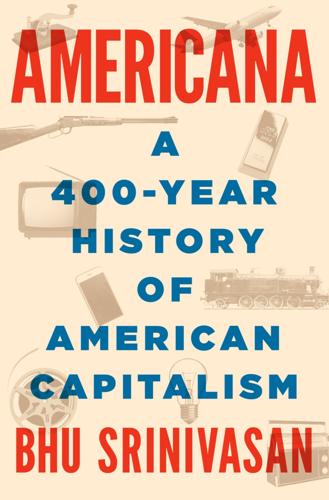
Americana: A 400-Year History of American Capitalism
by
Bhu Srinivasan
Published 25 Sep 2017
Predictably, given the Fairchild connection, their first customer was IBM, servicing the military. Before long, Fairchild exercised his option to buy all of Fairchild Semiconductor. While the eight men made substantial windfalls, the investment structure lacked the unlimited-upside element now intrinsic to the idea of the Silicon Valley start-up. In 1968 two of the original eight, Bob Noyce and Gordon Moore, looked to start another company. Given the optimism of the capital markets about anything to do with electronics and computing at the time—the same conditions that valued Ross Perot’s six-year-old EDS at over $200 million—the pair were able to forgo a corporate sponsor this time in setting up their new venture.
…
The largest profits in the computer business turned out to be in software—Microsoft made money each time a computer was sold with its operating system, which the vast majority of computers sold over the next twenty years would have—and the benefits of this natural monopoly would accrue to the man who never built computers. Yet Microsoft’s eventual rise was in many ways a stark contrast to the archetypal Silicon Valley start-up. Gates’s company was profitable from the beginning. Its headquarters moved from New Mexico not to the Bay Area, but to a Seattle suburb. Gates himself was financially conservative, preferring independence to the involvement of venture capitalists. When Microsoft finally did relent to the overtures of Silicon Valley, it raised $1 million for a meager 5 percent of the company in 1981—this at a time when the company was already on track to generate $15 million in revenues that year.

Americana
by
Bhu Srinivasan
Predictably, given the Fairchild connection, their first customer was IBM, servicing the military. Before long, Fairchild exercised his option to buy all of Fairchild Semiconductor. While the eight men made substantial windfalls, the investment structure lacked the unlimited-upside element now intrinsic to the idea of the Silicon Valley start-up. In 1968 two of the original eight, Bob Noyce and Gordon Moore, looked to start another company. Given the optimism of the capital markets about anything to do with electronics and computing at the time—the same conditions that valued Ross Perot’s six-year-old EDS at over $200 million—the pair were able to forgo a corporate sponsor this time in setting up their new venture.
…
The largest profits in the computer business turned out to be in software—Microsoft made money each time a computer was sold with its operating system, which the vast majority of computers sold over the next twenty years would have—and the benefits of this natural monopoly would accrue to the man who never built computers. Yet Microsoft’s eventual rise was in many ways a stark contrast to the archetypal Silicon Valley start-up. Gates’s company was profitable from the beginning. Its headquarters moved from New Mexico not to the Bay Area, but to a Seattle suburb. Gates himself was financially conservative, preferring independence to the involvement of venture capitalists. When Microsoft finally did relent to the overtures of Silicon Valley, it raised $1 million for a meager 5 percent of the company in 1981—this at a time when the company was already on track to generate $15 million in revenues that year.

The Friendly Orange Glow: The Untold Story of the PLATO System and the Dawn of Cyberculture
by
Brian Dear
Published 14 Jun 2017
They were still grappling with late-night paper-coding sessions at Bitzer’s dining room table and pecking away in machine language on the ILLIAC and then the 1604. The 1960 PLATO I diagram depicted what components they needed to acquire or build. One implied aspect of their stated goal would remain elusive for years: scale. Bitzer’s view was not unlike the mantra of Silicon Valley start-ups decades later: Go big or go home. In three years, his fledgling team had built and demonstrated PLATO I and II, not only showing hints of what could be done with automatic teaching, but also attracting more professors to try out the system within their respective subject areas. PLATO II’s time-sharing feat demonstrated that two terminals could be plugged into the ILLIAC and used simultaneously by two students: a necessary milestone.
…
The next big wave of microcomputers, from the Commodore 64, Radio Shack TRS-80, and IBM PC, was still months or years away. Steve Jobs had not yet made his visit to Xerox PARC—that would happen in December. Silicon Valley was ignorant of PLATO, focused instead on things PLATO users would have considered trifling. Silicon Valley start-up visionaries would not wake up to the online world for years to come. Most of the few who had seen PLATO brushed it off as an extravagant waste, a mainframe-based relic that had no relevance in the booming micro revolution that was under way. Brodie had seen the future but now he was back in the past.

The Contrarian: Peter Thiel and Silicon Valley's Pursuit of Power
by
Max Chafkin
Published 14 Sep 2021
His campaign’s social media efforts represented the first time any candidate had taken the medium seriously. They were led by one of Zuckerberg’s Harvard classmates and a Facebook cofounder, Chris Hughes—“The Kid Who Made Obama President,” Fast Company claimed. Some were calling 2008 the “Facebook Election,” and Silicon Valley’s startup elite contributed so heavily to Obama’s campaign that the Atlantic termed the campaign “the year’s hottest start-up.” Never had Thiel seemed more out of step with his peers. * * * — strangely, he didn’t seem miserable during this period; he seemed, for the first time in years, free.
…
The second, which worked in concert with the drones by creating a record to make sense of a potential target’s movements and contacts, was the Total Information Awareness program. Officially, Poindexter’s concept had been killed, but Bowden argued that the basic approach survived, helped along by Silicon Valley. “A startup called Palantir, for instance, came up with a program that elegantly accomplished what TIA had set out to do,” he wrote. “The software produced from this very unlikely source would help turn America’s special forces into deadly effective hunters.” Speaking at an all-hands meeting after Obama’s press conference, Karp was careful not to take credit—and careful not to not take credit.
…
Thiel, who’d nursed a grudge against the New York publisher for years, secretly covered Bollea’s legal fees. Thiel soaking it in during his speech in support of Donald Trump at the 2016 Republican National Convention. ACKNOWLEDGMENTS This book grew out of fifteen years of reporting on the world of Silicon Valley’s entrepreneurs, startups, and investors. Jane Berentson gave me my first opportunity in journalism, as a fact-checker at Inc., and convinced me that business writing need not be dull. She became a mentor, a friend, and, at times, a surrogate parent. I also wouldn’t be the journalist I am without Katherine Stirling (my editor at Vanity Fair) and David Lidsky (at Fast Company), who became two of my best friends in addition to teaching me how to be a better writer.

Stealing Fire: How Silicon Valley, the Navy SEALs, and Maverick Scientists Are Revolutionizing the Way We Live and Work
by
Steven Kotler
and
Jamie Wheal
Published 21 Feb 2017
Already, commercial versions of the God Helmet are available online, as are stories of DIY hackers who are reproducing its basic effects with little more than some wires and a nine-volt battery. There’s talk about developing a version for virtual reality and incorporating it in video games. Other researchers are pushing neurotech even further. Palo Alto Neuroscience,17 a Silicon Valley start-up, has developed a system that can tag the biomarkers of a nonordinary state—that is, brainwaves, heart rate variability, and galvanic skin response—and then use neurofeedback to guide you back there later. Trained meditators like Tibetan monks can put themselves into a transcendental state, and the machine will record their profile.
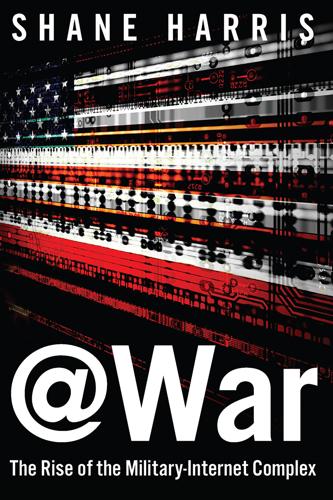
@War: The Rise of the Military-Internet Complex
by
Shane Harris
Published 14 Sep 2014
Justice Department officials were looking for information they could use to indict WikiLeaks’ founder, Julian Assange, who had posted classified military intelligence reports and State Department cables. Now the feds wanted to outsource part of their investigation, by putting Bank of America in touch with Team Themis, which drew its name from the mythological Greek Titan who represented “divine law,” as opposed to the law of men. Team Themis included Palantir Technologies, a Silicon Valley startup that had been making fast friends with such national security heavyweights as Richard Perle, former chairman of the Defense Policy Board and an influential Republican operative, as well as George Tenet, former director of the CIA, who had gone to work for Herb Allen, a Palantir investor and head of the enigmatic investment bank Allen & Company, which hosts the annual Sun Valley Conference, bringing together celebrity journalists, athletes, and business leaders.

E=mc2: A Biography of the World's Most Famous Equation
by
David Bodanis
Published 25 May 2009
It’s rare to change a lab’s research direction: all the equipment is set up for one sort of work; there are postgrads whose grants are contingent on that previous work, technicians who were trained for it, and sometimes even suppliers who’ve come to specialize in it. Economists call it the problem of sunk costs, and it’s one of the main reasons that very few top labs stay at the top for long. In a more recent era, it’s why computer industry monoliths have continually been wrong-footed by quick Silicon Valley startups. Despite her surface shyness, Meitner would have been a confident dot-com entrepreneur par excellence. 104 “The Jewess endangers our institute . . .”: For the Kurt Hess quote and associated details: Sallie Watkins’s essay in A Devotion to Their Science, p. 183; also Sime, Lise Meitner, pp. 184-85. 104 Hahn may have been slightly troubled . . . : There are many levels of culpability, and Hahn of course was never a Nazi.

The Post-American World: Release 2.0
by
Fareed Zakaria
Published 1 Jan 2008
Foreign students and immigrants account for 50 percent of the science researchers in the country and, in 2006, received 40 percent of the doctorates in science and engineering and 65 percent of the doctorates in computer science. Experts estimate that in 2010, foreign students received more than 50 percent of all Ph.D.’s awarded in every subject in the United States. In the sciences, that figure is closer to 75 percent. Half of all Silicon Valley start-ups have one founder who is an immigrant or first-generation American. America’s potential new burst of productivity, its edge in nanotechnology, biotechnology, its ability to invent the future—all rest on its immigration policies. If America can keep the people it educates in the country, the innovation will happen here.
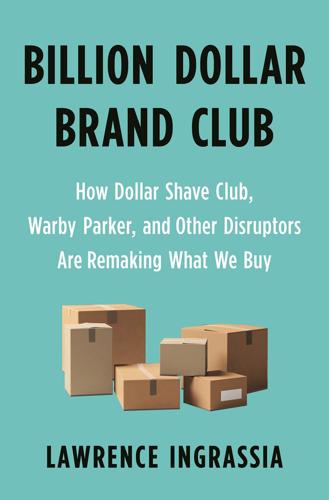
Billion Dollar Brand Club: How Dollar Shave Club, Warby Parker, and Other Disruptors Are Remaking What We Buy
by
Lawrence Ingrassia
Published 28 Jan 2020
And in part it’s because they are so expensive. Though the components cost only several hundred dollars, patients typically pay $4,500 to $7,000 for a pair of hearing aids. The hearing aids that Gormsen doesn’t need but occasionally wears are meant to solve both these issues. They are made by Eargo, the Silicon Valley start-up he runs, and are sold directly to the consumer. By cutting out the middleman, Eargo offers a pair of hearing aids for about one-third to one-half the price of comparable hearing aids made by its established rivals. Elegantly designed and packaged, the Eargo might be described as the iPhone of hearing aids.

What Algorithms Want: Imagination in the Age of Computing
by
Ed Finn
Published 10 Mar 2017
As an example, in chapter 4 I discuss Uber’s application interface, with a cartoonish map showing cars roaming the urban grid. Uber depends on abstracting away the complexities, regulations, and established conventions of hailing a cab, turning the hired car experience into a kind of videogame. That mode of abstraction has been so successful that an entire genre of Silicon Valley startups can now be categorized as “Uber for X,” where that X is actually a double abstraction. First, we adapt Uber’s simplifying, free-agent “sharing economy” business model to another economic arena. Then we make all such arenas fungible, a variable X that can stand for any corner of the marketplace where ubiquitous computing and algorithmic services have yet to disrupt the status quo.
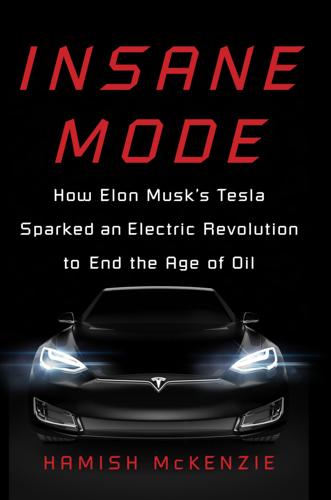
Insane Mode: How Elon Musk's Tesla Sparked an Electric Revolution to End the Age of Oil
by
Hamish McKenzie
Published 30 Sep 2017
In these pages, I strive to present a fair and clear-eyed view of what’s great about Tesla, and of the very real challenges it faces. This book, however, isn’t an insider’s tale—I will leave that work to the gossip blogs—and it’s not just about Tesla. It’s about something much bigger. It’s a story about how one determined Silicon Valley start-up changed the entire auto industry, along the way inspiring a slew of well-funded imitators from California to China. It’s a system-level view of a technological and economic transformation that will affect the lives of everyone on the planet. It is the story of a revolution that Tesla started.

Black Code: Inside the Battle for Cyberspace
by
Ronald J. Deibert
Published 13 May 2013
In one spectacular piece of gumshoe work, Droemer discovered that photographs stored on the Koobface command-and-control machines contained metadata that pinpointed the geographic location of the gang right down to its St. Petersburg, Russia, headquarters. There, five Russian men between the ages of twenty and forty-five, decked out in Nike running shoes and polyester athletic gear and surrounded by iPhones and PowerBooks, led a casual work life straight out of a Silicon Valley startup. The Koobface “gang” turned out to be a group of guys in track pants living a very comfortable life in distant Russia, driving BMWs, and playing World of Warcraft while reaping millions of dollars a year. • • • As we prepared our report for publication, we debated whether and how to proceed with notification to proper authorities.
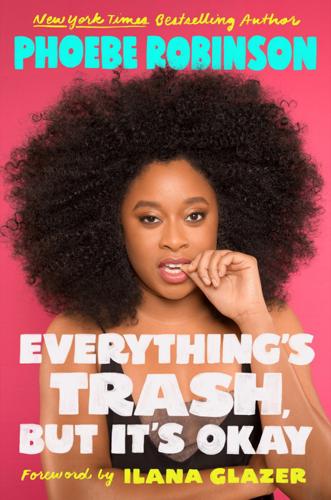
Everything's Trash, but It's Okay
by
Phoebe Robinson
Published 15 Oct 2018
The West Elm one I understand because they’ll have a 20-percent-off sale once a decade, yet the discount is immediately erased because of their astronomical shipping costs. Seriously, one time I ordered a coffee table and a couple of vases and was like, “Am I decorating my apartment, or did I unknowingly invest in a Silicon Valley start-up?” Point is, it’s easy to max out a card with Dub Elm, but Macy’s? Not so much. They practically give everything away because they have sales all. Da. Damn. Time. They’ll go, “Hey, y’all, it’s Flag Day. Do you want this Samsonite suitcase, a couple of memory foam pillows, and the entire Tommy Hilfiger department?

Late Bloomers: The Power of Patience in a World Obsessed With Early Achievement
by
Rich Karlgaard
Published 15 Apr 2019
Negroponte, “Products and Services for Computer Networks,” Scientific American 265, no. 3 (1991): 106–15. “The old brick-and-mortar economy”: Mark Penn and Andrew Stein, “Back to the Center, Democrats,” New York Times, July 6, 2017. “technology that could take”: John Carreyrou, Bad Blood: Secrets and Lies in a Silicon Valley Startup (New York: Knopf, 2018). See also John Carreyrou, “Hot Startup Theranos Has Struggled with Its Blood-Test Technology,” Wall Street Journal, October 21, 2015. “What I really want out of life”: From a letter Holmes wrote to her father at age nine. “The World’s Youngest Self-Made Female Billionaire,” CBS News, April 16, 2015.

Climate Change
by
Joseph Romm
Published 3 Dec 2015
The world’s top-selling plug-in hybrid is the General Motors Chevrolet Volt (and similar cars sold under a different brand). Total sales exceed 88,000. The Toyota Prius plug-in is the number two seller, with more than 65,000 sold. Another game changer in the recent history of electric vehicles has been the emergence of Tesla Motors. The company was founded in 2006 as a Silicon Valley startup by Elon Musk to build a high-end electric sports car with a single-charge range of over 200 miles. By 2014, Teslas had become California’s “largest auto industry employer,” according to the U.S. Department of Energy. Its market capitalization (the total value of all its stock) was more than half that of GM’s, despite having a small fraction of GM’s sales or revenues.

A World Without Email: Reimagining Work in an Age of Communication Overload
by
Cal Newport
Published 2 Mar 2021
When we shift these endeavors into the office setting, however, where retreating to a seedy hotel with a bottle of sherry would likely be frowned upon by even the most dedicated productivity hacker, the importance of the connection between focus and value begins to dissipate. Not long ago, for example, I heard from an engineer who wrote technical white papers for a Silicon Valley start-up. These papers were complicated to pull together but important for the company’s marketing efforts. As the engineer explained to me, he was having a hard time executing his job because the start-up embraced a hyperactive hive mind workflow. “If you didn’t respond quickly to a Slack message,” he said, “you were, ironically, considered to be slacking off.”

Spooked: The Trump Dossier, Black Cube, and the Rise of Private Spies
by
Barry Meier
Published 17 May 2021
At the time of this writing, one of its co-founders, who has denied any wrongdoing, remains under scrutiny, according to a 2019 article in the Miami Herald. “First, big congrats on the big P”: Email from Peter Fritsch to John Carreyrou, May 3, 2015. “I do know Riedel”: Email from John Carreyrou to Peter Fritsch, May 3, 2015. a 2018 best-selling book, Bad Blood: John Carreyrou’s book, Bad Blood: Secrets and Lies in a Silicon Valley Startup, was published in 2018 by Alfred A. Knopf. “Hey, so something came up”: Email from Peter Fritsch to John Carreyrou, May 8, 2015. “I’m working on a very serious story”: Email from John Carreyrou to Peter Fritsch, May 8, 2015. “Is she a cult leader?”: Email from Peter Fritsch to John Carreyrou, May 11, 2015.
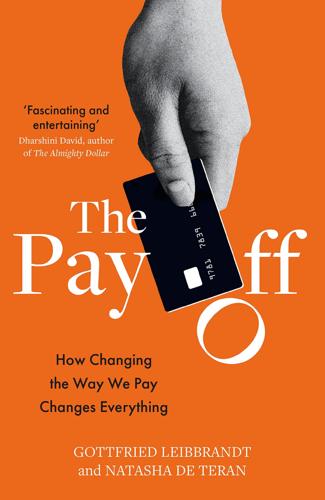
The Pay Off: How Changing the Way We Pay Changes Everything
by
Gottfried Leibbrandt
and
Natasha de Teran
Published 14 Jul 2021
Social media offers scope for precision, for example by checking on Facebook or LinkedIn when the CEO will be on a long flight, when senior executives are all attending conferences or when newly arrived employees, who are less likely to query instructions, can be targeted. This happened to Ubiquity Networks, a Silicon Valley start-up, in 2015. The Chief Accounting Officer, who had been in the job for only a month, received emails purporting to come from the founder and CEO, as well as from a lawyer at a London law firm. The emails explained that Ubiquity was conducting a confidential acquisition and instructed the CAO to send wire transfers to accounts at banks abroad.

Life After Google: The Fall of Big Data and the Rise of the Blockchain Economy
by
George Gilder
Published 16 Jul 2018
Established to build and extend Ethereum-based standards and architectures, this alliance attests to the broad interest in Ethereum blockchain technology at the highest levels of finance and industry. At the end of September of the same year, Toyota, the world’s largest automobile company, announced to the surprise of the experts that it would obtain lidar systems, a key component for its self-driving cars, from Luminar, an unknown Silicon Valley startup funded by 1517 (see Chapter 9). In choosing Luminar, Toyota followed three other leading automobile companies, and Luminar was on its way to taking over the world’s lidar business. While Google was building out its giant data centers around the world for Google Brain, 1517 funded Stephen Balaban’s efforts to build compact, cheaper centers that could perform the same functions inside corporations.
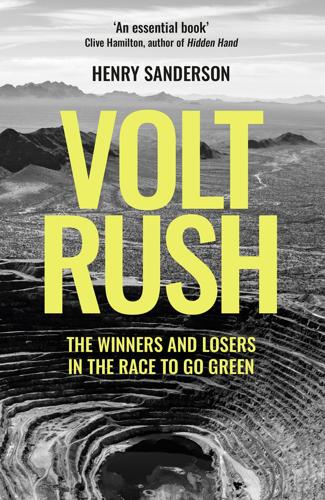
Volt Rush: The Winners and Losers in the Race to Go Green
by
Henry Sanderson
Published 12 Sep 2022
At its current valuation each Tesla car they sat in was worth around $1 million. It was a remarkable turnaround from the last few years, when Tesla had come close to bankruptcy as it struggled to increase production of its Model 3 electric vehicle. Tesla, which had started life as a fast-moving Silicon Valley start-up that made cars for the rich, had become a proper automotive manufacturer in one of the most cut-throat and low-margin businesses in the world. It had succeeded in breaking the logjam that had held electric vehicles up for over a century by creating a product that people actually wanted to buy.
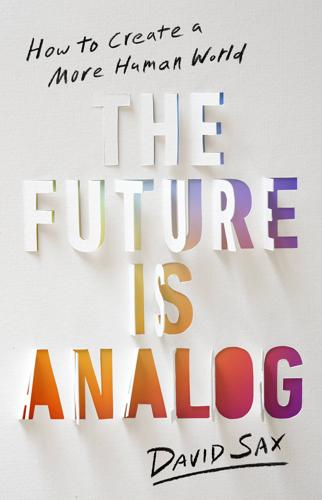
The Future Is Analog: How to Create a More Human World
by
David Sax
Published 15 Jan 2022
What if digital technology could actually support the stores and restaurants that form the backbone of analog commerce rather than try to run them out of business? My pandemic experience began just weeks before my latest book, The Soul of an Entrepreneur, was supposed to come out. The book focused on the reality of entrepreneurship beyond the myth of the heroic Silicon Valley start-up, and it profiled the everyday small-business entrepreneurs who make our economy tick: New York café owners and California cowboys, New Orleans hairdressers and Syrian refugee baklava slingers. I’d planned to market the book through independent bookstores, but as the world retreated into lockdown, my options kept shrinking.
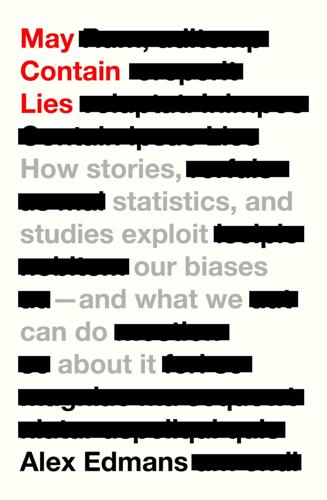
May Contain Lies: How Stories, Statistics, and Studies Exploit Our Biases—And What We Can Do About It
by
Alex Edmans
Published 13 May 2024
. ## The claim is valid if a specific metric is given, such as citations. 1 Covey, Stephen R. (1989): The 7 Habits of Highly Effective People, Free Press. 2 Securities and Exchange Commission 17 CFR Parts 229 and 249 (Release Nos. 33-9877; 34-75610; File No. S7-07-13). 3 Ioannidis, John P. A. (2015): ‘Stealth research: is biomedical innovation happening outside the peer-reviewed literature?’, Journal of the American Medical Association, 313, 663–4. 4 Carreyrou, John (2018): Bad Blood: Secrets and Lies in a Silicon Valley Startup, Penguin Random House. 5 Emerson, Gwendolyn B. et al. (2010): ‘Testing for the presence of positive-outcome bias in peer review: a randomized controlled trial’, Archives of Internal Medicine 170, 1934–9. 6 Carney, Dana R., Amy J. C. Cuddy and Andy J. Yap (2010): ‘Power posing: brief nonverbal displays affect neuroendocrine levels and risk tolerance’, Psychological Science 21, 1363–8. 7 Ranehill, Eva et al. (2015): ‘Assessing the robustness of power posing: no effect on hormones and risk tolerance in a large sample of men and women’, Psychological Science 26, 652–6. 8 Wakefield, A. et al. (1998): ‘Ileal-lymphoid-nodular hyperplasia, non-specific colitis, and pervasive developmental disorder in children’, Lancet 351 (9103): 637–41. 9 National Health and Medical Research Council (2015): ‘NHMRC information paper: evidence on the effectiveness of homeopathy for treating health conditions’, March 2015. 10 Grant Thornton (2019): ‘Corporate governance and company performance: a proven link between effective corporate governance and value creation’. 11 Fabo, Brian et al. (2021): ‘Fifty shades of QE: comparing findings of central bankers and academics’, Journal of Monetary Economics 120, 1–20. 12 Allen, David (2001): Getting Things Done, Penguin. 13 Keegan, Paul (2007): ‘How David Allen mastered getting things done’, Business 2.0 Magazine, 21 June 2007. 14 Hatmaker, Taylor (2010): ‘Twitter plans to bring prompts to “read before you retweet” to all users’, TechCrunch, 24 September 2020. 15 Pennycook, Gordon et al. (2021): ‘Shifting attention to accuracy can reduce misinformation online’, Nature 592, 590–95. 10.

The Rationalist's Guide to the Galaxy: Superintelligent AI and the Geeks Who Are Trying to Save Humanity's Future
by
Tom Chivers
Published 12 Jun 2019
Most start-ups fail, a fact of which the Rationalists are extremely aware; one of the biases discussed in the Sequences is the tendency to overestimate our own likelihood of success. Taking the ‘inside view’, most people think their business will succeed, but taking the ‘outside view’, about half of new businesses fail in their first five years; that figure is higher for Silicon Valley start-ups, with their whole ‘fail-fast’ ethos, at between 60 per cent and 90 per cent, depending on which study you read. So there’s absolutely no shame in two of the four Rationalist-led start-ups I am aware of failing in their first few years, and even though I do think it’s interesting that they did so in (what seemed to me) quite predictable ways, Yudkowsky would no doubt point out that, with hindsight bias, everything seems obvious once it’s happened.
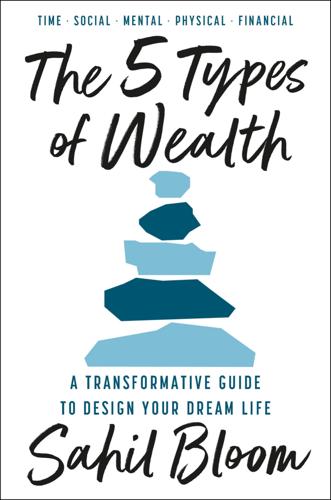
The 5 Types of Wealth: A Transformative Guide to Design Your Dream Life
by
Sahil Bloom
Published 4 Feb 2025
He and his wife, Aubrie, had welcomed their first child, a daughter they named Romy, two years earlier. She had filled their world with a joy they had never experienced, a sensation that her arrival had completed their lives. In his daughter’s first years of life, Erik was head down, working crazy hours as chief operating officer at a Silicon Valley start-up. In February 2023, he decided it was time to start something for himself and left the company to figure out what he should do next. But tragically, fate had other plans. After months of feeling exhausted and having her symptoms shrugged off by doctors who told her it was just part of being a new mother, Aubrie had finally gotten extensive blood work done.
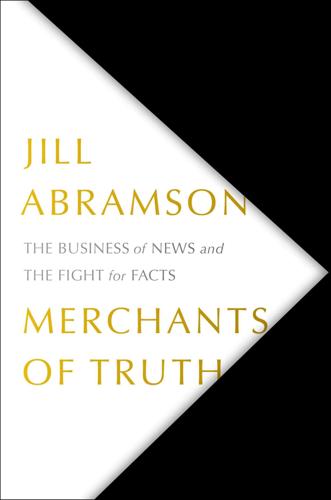
Merchants of Truth: The Business of News and the Fight for Facts
by
Jill Abramson
Published 5 Feb 2019
The people who worked there had little or no idea what everyone else working around them was doing. There was almost no training. Smith hated that Vice had a reputation for being cheap and that no one gave him credit for making several hundred of Vice’s early employees millionaires, at least on paper, by giving them chunks of stock, like a Silicon Valley start-up. Gawker’s Hamilton Nolan frequently reported on the low salaries, bad working conditions, and other flaps inside the company. Many salaries hovered at $28,000 annually, until a vote to unionize pulled most of the news staff closer to $40,000, still low by industry standards. Smith attempted to impose some order by hiring Alyssa Mastromonaco as chief operating officer, but she left for A&E after two years, dashing the hopes of the women she left behind that she would tone down the bro culture and protect them from blatant workplace harassment.
…
The print paper, with its older readership, had more sedate headlines on the same stories that were showcased with clickbait banners on the app. The differences were most noticeable on a product designed for the young digerati, “The Post Most,” which was chock-full of BuzzFeed-like headlines. Soon online readership doubled. The new headquarters that symbolized the paper’s rebirth under Bezos looked like a Silicon Valley start-up. At the opening celebration in January 2016 Bezos was exultant, proudly showing off the entirely new newsroom design, where technologists sat alongside journalists. Wearing a windowpane suit for the occasion instead of his uniform of open collars and khakis, Bezos greeted luminaries, including Arthur Sulzberger Jr., and joyfully listened to everyone congratulating him for restoring the Post to full strength.

On the Edge: The Art of Risking Everything
by
Nate Silver
Published 12 Aug 2024
Ethereum contains a “built-in fully fledged Turing-complete programming language,” so the possibilities are almost unlimited. You could, for example, write an options contract—I have a right to buy one hundred ETH from you if the price rises above $2,500—and the blockchain would work to execute the contract automatically. In some ways, the origin story of Ethereum resembled that of a typical Silicon Valley startup, springing to life from a bright young immigrant founder willing to make a long-shot bet. Unlike Nakamoto, Buterin hadn’t had an ideological objection to the central banking system. Instead, he is more of a polymath—an award-winning programmer who was also the cofounder of Bitcoin Magazine, and who was just nineteen when he began laying the foundations for Ethereum.
…
“And, like, we’re all part of Team Cryptocurrency and we’re in this together. But I was very surprised when the response was a lot of maximalism and hostility.” Some of this is because of the origins of the respective blockchains and the cultural baggage they carry with them: Ethereum was a quasi–Silicon Valley startup, while Bitcoin was a cyberlibertarian alternative to fiat currency. “Ethereum is an ecosystem for venture capitalists to make bets on the future of computing and, like, Web3 and DeFi and gaming and NFTs and all that shit,” said Levine. “Bitcoin is a place to make bets on future institutional adoption of an economic asset class.”
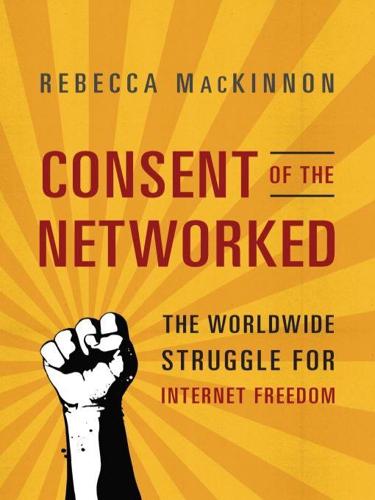
Consent of the Networked: The Worldwide Struggle for Internet Freedom
by
Rebecca MacKinnon
Published 31 Jan 2012
His book The Net Delusion offers a scathing condemnation of the “cyber-utopian” and “Internet-centric” worldviews he believes to be epidemic among American academics (including Shirky and Zuckerman), alongside many activists, foundations, journalists, politicians, and investors. He mocks what he calls the “Google Doctrine—the enthusiastic belief in the liberating power of technology accompanied by the irresistible urge to enlist Silicon Valley start-ups in the global fight for freedom.” Cyber-utopianism, he argues, is dangerous because it fails to recognize that the Internet “penetrates and reshapes all walks of political life, not just the ones conducive to democratization.” The Internet, he points out, empowers dictators, demagogues, and terrorists as much as it empowers democrats.

Reinventing Discovery: The New Era of Networked Science
by
Michael Nielsen
Published 2 Oct 2011
I’ve enjouyed doing it, and somebody might enjoy looking at it and even modifying it for their own needs. It is still small enough to understand, use and modify, and I’m looking forward to any comments you might have. Torvalds was an unknown, a student working in relative isolation at the University of Helsinki, not part of some hip Silicon Valley startup company. Still, what he’d announced was interesting to many hackers. The operating system is the nerve center of a computer, the piece that makes the rest of it tick. Handing a hardcore hacker the code for an operating system is like giving an artist the keys to the Sistine Chapel and asking them to redecorate.
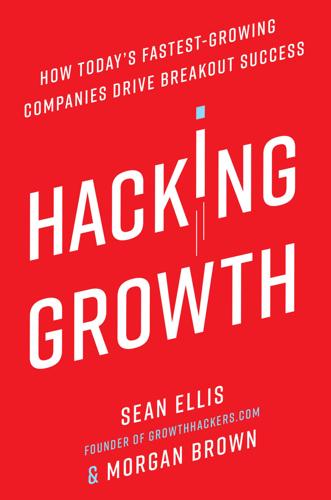
Hacking Growth: How Today's Fastest-Growing Companies Drive Breakout Success
by
Sean Ellis
and
Morgan Brown
Published 24 Apr 2017
When the turf isn’t yet claimed, there are fewer complaints against redistributing responsibility and headcount to a growth team. That said, it’s not impossible to introduce independent growth teams in established, larger companies. One approach is that taken by Walmart, which created its stand-alone growth operation in 2011 by acquiring an innovation center in the well-regarded Silicon Valley start-up Kosmix, which became @WalmartLabs.10 Run as an independent division focused on e-commerce, this team focuses on digital innovation initiatives for Walmart websites and mobile applications, like the successful Savings Catcher app we described in the introduction. It also leads the acquisition of promising digital start-ups, such as mobile fashion search app Stylr, and social recipe aggregator Yumprint, and works to integrate their technology and talent into Walmart’s digital offerings.

The Inmates Are Running the Asylum
by
Alan Cooper
Published 24 Feb 2004
All of Jane's documents were stored in little folders, which were stored in other little folders. Jane didn't understand this or see the advantage to storing things that way. Actually, Jane didn't give it a lot of thought but merely took the path of least resistance. Jane had just finished drafting the new PR contract for a Silicon Valley startup company. She selected Close from the File menu. Instead of simply doing as she directed and closing the document, Word popped up a dialog box. It was, of course, the all-too-familiar Do You Want to Save the Changes? confirmation box. She responded—as always—by pressing the Enter key. She responded this way so consistently and often that she no longer even looked at the dialog box.

Losing the Signal: The Spectacular Rise and Fall of BlackBerry
by
Jacquie McNish
and
Sean Silcoff
Published 6 Apr 2015
The South Lawn of the White House was dotted with colorful tents that sagged under a heavy midday sun. It was July 22, 1993. Representatives from technology companies were gathered to show off the latest in mobile communications. President Bill Clinton led an entourage through the tents. Stopping at one, he examined a thick glass tablet and black electronic pen created by Eo Inc., a Silicon Valley start-up. Push the stylus across the surface of the EO Personal Communicator, Clinton was urged, your handwriting will automatically convert into a digital text message, poised to fly across radio waves to the person of your choice. Reflecting on dozens of American victims claimed by recent flooding in Illinois and nearby states, the president moved the stylus across the tablet: “Al, stop the rain in the Midwest.

Messy: The Power of Disorder to Transform Our Lives
by
Tim Harford
Published 3 Oct 2016
.* The Basel Accord was simply an international agreement that banks wouldn’t borrow too much—or wouldn’t become too highly “leveraged.”* While Basel I was celebrated as a first step toward financial stability, it was a crude rule because it did not do justice to the fact that different banks take very different risks. For example, a bank that lends $100 million to a Silicon Valley start-up is taking much more risk than a bank that lends $100 million to the U.S. government. It seems rash to have capital rules that are designed to safeguard against risks but which ignore what the risks might be. Basel I did allow for five different categories of risk, and the capital requirement varied according to how much business the bank was doing in each of these five areas.
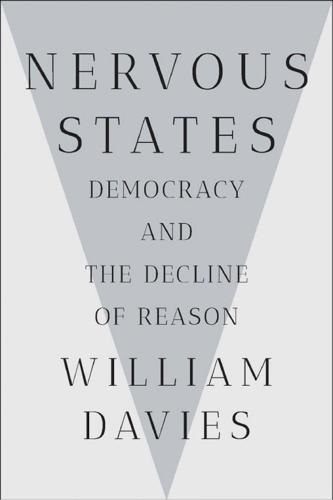
Nervous States: Democracy and the Decline of Reason
by
William Davies
Published 26 Feb 2019
The secrecy of world-changing entrepreneurship potentially becomes enmeshed with that of the intelligence agency. In his occasional philosophical musings, Thiel has expressed a deep dislike for pacifism, with a particular disgust for Thomas Hobbes whom he accuses of valuing “cowardly life” over “heroic but meaningless death.”4 Thiel’s celebration of “disruption,” the guiding ethos of all Silicon Valley start-ups, thus takes on a more threatening geopolitical quality. Thiel represents a certain extreme of libertarian business thinking. However, his ideas and success pose some unavoidable questions about the status of knowledge and expertise in society: what kind of knowledge do we value, and why do we value it?
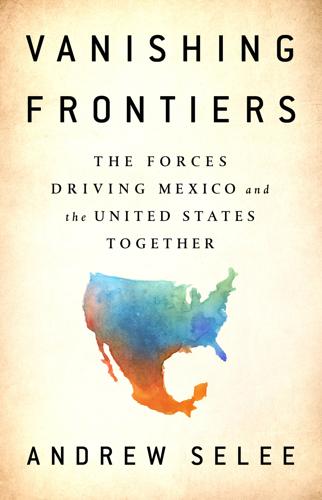
Vanishing Frontiers: The Forces Driving Mexico and the United States Together
by
Andrew Selee
Published 4 Jun 2018
Getting them work visas is easy, something that is becoming harder north of the border, and they love the quality of life in a city that is far less expensive than Silicon Valley but still has great cultural and recreational options. Lepe is so convinced by Guadalajara that he started a nonprofit, Startup GDL, to promote the city as a tech hub to other Silicon Valley start-ups. It currently has a long pipeline of US-based small and medium-sized tech companies looking at putting part or all of their operations in Guadalajara. Bismarck Lepe has no illusions that everything in Mexico is perfect. He knows that corruption and the lack of upward mobility, some of the issues that drove his parents to leave, are still a major problem.
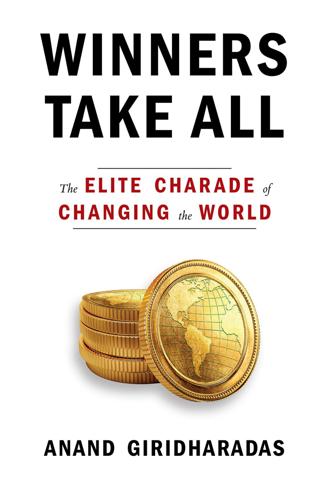
Winners Take All: The Elite Charade of Changing the World
by
Anand Giridharadas
Published 27 Aug 2018
There was Paul, who also worked in private equity, in addition to lecturing at an Ivy League management school. He was a former investment banker and management consultant. There was Aurelien, who led a boutique advisory firm that counseled corporations on strategy amid turbulent market conditions, was a venture partner in several Silicon Valley start-ups, and had earlier been a McKinsey partner. There was Albert, the head of brand and communications for Rio Tinto. There were a pair of World Bank/International Finance Corporation types who had professional knowledge of the topics at hand: One of them, Charlise, had stuck with such work; the other, Juan Pablo, had subsequently put in time with Cisco and the Boston Consulting Group.

The Big Nine: How the Tech Titans and Their Thinking Machines Could Warp Humanity
by
Amy Webb
Published 5 Mar 2019
In the digital space, investors have grown accustomed to quick wins and windfalls. Dropbox, a file-sharing platform, reached a $10 billion valuation just six years after it launched. Silicon Valley venture capital firm Sequoia Capital owned a 20% stake when Dropbox filed its IPO, making its shares worth $1.7 billion.71 In Silicon Valley, startups that are valued over $1 billion are called “unicorns,” and with a valuation ten times that amount, Dropbox is what’s known as a “decacorn.” By 2018, there were enough unicorns and decacorns to fill a Silicon Valley zoo, and several of them were partners with the G-MAFIA, including SpaceX, Coinbase, Peloton, Credit Karma, Airbnb, Palantir, and Uber.

Falter: Has the Human Game Begun to Play Itself Out?
by
Bill McKibben
Published 15 Apr 2019
One tech journal said that he was paying forty thousand dollars every three months for the blood of eighteen-year-olds, but he told another reporter that he hadn’t “quite quite quite started yet.”3 But, intrigued? For sure. “I’m looking into parabiosis stuff, which I think is really interesting,” Thiel said. “This is where they put the young blood into older mice and they found that had a massive rejuvenating effect.” A Silicon Valley start-up called Ambrosia has at least one hundred clients who will pay eight grand a pop for the blood of young’uns.4 Thiel’s Breakout Labs invests in many other start-ups trying to conquer aging—and why not, given that he believes that “probably the most extreme form of inequality is between people who are alive and people who are dead”?
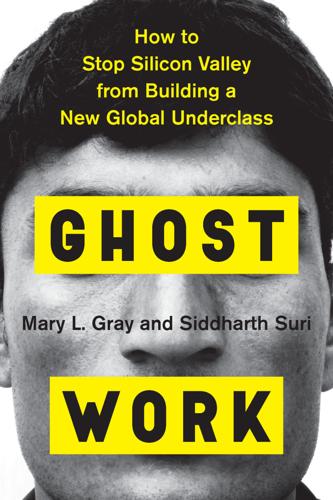
Ghost Work: How to Stop Silicon Valley From Building a New Global Underclass
by
Mary L. Gray
and
Siddharth Suri
Published 6 May 2019
But as the permatemp case illustrated, it is not uncommon for companies to swell their temporary staffing budgets within weeks of layoffs. They “buy back” the labor of former employees through temporary staffing agencies to make it easier to close out both projects and labor costs at the same time. And younger companies, including numerous Silicon Valley startups, used to relying on contractors for everything from beta testing to viral marketing, could maintain their “lean” look on paper while employing the services of an equal number of staffing-agency-contracted temp workers to do what they do. Relying on outsourcing and contracting workers through staffing agencies as the “employers of record” primed the so-called platform economy.

Billion Dollar Loser: The Epic Rise and Spectacular Fall of Adam Neumann and WeWork
by
Reeves Wiedeman
Published 19 Oct 2020
When the first white-collar workspaces emerged in the twentieth century, they resembled an assembly line. In 1939, Frank Lloyd Wright’s Johnson Wax Headquarters introduced brighter lighting and more humanity. Cubicles took off in the 1980s alongside the desktop computer, giving workers a bit more individual privacy and dominating the work landscape until Silicon Valley start-ups set about knocking down walls and recruiting laptop-enabled workers with beanbag chairs and foosball tables. The emergence of “coworking” was an offshoot of that movement. Brad Neuberg, a software engineer in San Francisco, coined the term in 2005. He was trying to find a happy medium between the drudgery of office life and the solitude of freelancing.
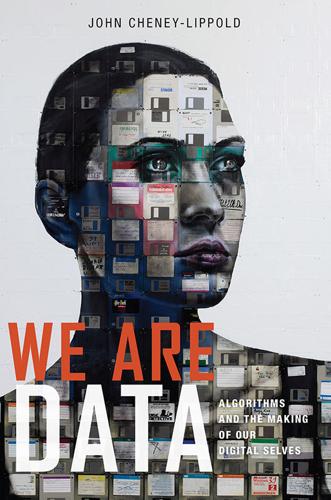
We Are Data: Algorithms and the Making of Our Digital Selves
by
John Cheney-Lippold
Published 1 May 2017
We are losing control and knowledge of the consequences of our actions. . . . We no longer control access to anything we disclose.”78 Gibberish and Obfuscation A prophetic anecdote begins Wired’s first-ever story on Internet privacy. It was early in 1993, and technology journalist Steven Levy had just arrived at the office of a Silicon Valley start-up. He was on assignment to observe a “cypherpunk” meeting, a group whose members used mathematically complex cryptography, or secret coding, to make their digital data turn to gibberish. His description of the meeting was a “time warp to the days when hackers ran free”: fifteen “techie-cum-civil libertarians” randomly lay on the floor or wandered around cubicles, only to eventually collect themselves, hours after the scheduled time, in order to share their crypto secrets.

Calling Bullshit: The Art of Scepticism in a Data-Driven World
by
Jevin D. West
and
Carl T. Bergstrom
Published 3 Aug 2020
Bachman, adapted for ebook Cover design: Pete Garceau ep_prh_5.5.0_c0_r0 Contents Cover Title Page Copyright Preface Chapter 1: Bullshit Everywhere Chapter 2: Medium, Message, and Misinformation Chapter 3: The Nature of Bullshit Chapter 4: Causality Chapter 5: Numbers and Nonsense Chapter 6: Selection Bias Chapter 7: Data Visualization Chapter 8: Calling Bullshit on Big Data Chapter 9: The Susceptibility of Science Chapter 10: Spotting Bullshit Chapter 11: Refuting Bullshit Dedication Acknowledgments Bibliography By Carl T. Bergstrom and Jevin D. West About the Authors PREFACE THE WORLD IS AWASH WITH bullshit, and we’re drowning in it. Politicians are unconstrained by facts. Science is conducted by press release. Silicon Valley startups elevate bullshit to high art. Colleges and universities reward bullshit over analytic thought. The majority of administrative activity seems to be little more than a sophisticated exercise in the combinatorial reassembly of bullshit. Advertisers wink conspiratorially and invite us to join them in seeing through all the bullshit.

Mine!: How the Hidden Rules of Ownership Control Our Lives
by
Michael A. Heller
and
James Salzman
Published 2 Mar 2021
“We have essentially no patents”: Chris Anderson, “Elon Musk’s Mission to Mars,” Wired, October 21, 2012. “a sublicensable, worldwide”: AncestryDNA Terms and Conditions, accessed June 5, 2020. These terms change without notice—and that’s part of our point. “The average customer who”: Erin Brodwin, “DNA-testing Companies Like 23andMe Sell Your Genetic Data to Drugmakers and Other Silicon Valley Startups,” Business Insider, August 3, 2018. “You can’t go to them later”: Molly Wood, “Who Owns the Results of Genetic Testing?,” Marketplace, October 16, 2018. As Ancestry.com says in its terms and conditions: “You understand that by providing any DNA to us, you acquire no rights in any research or commercial products that may be developed.”

Ghost Road: Beyond the Driverless Car
by
Anthony M. Townsend
Published 15 Jun 2020
Burns, Reinventing the Automobile: Personal Urban Mobility for the 21st Century (Cambridge, MA: MIT Press, 2010), 24. 56“up to four bags of groceries”: “Marble’s Delivery Robots Hit the Ground to Map Out Arlington, Texas,” AUVSI, August 21, 2018, https://www.auvsi.org/industry-news/marbles-delivery-robots-hit-ground-map-out-arlington-texas. 57a global web of design and engineering, manufacturing: “Starship Technologies,” Crunchbase, accessed February 11, 2019, https://www.crunchbase.com/organization/starship-technologies#section-investors. 57the city’s Board of Supervisors to enact a temporary ban: Adam Brinklow, “San Francisco Ready to Permit Robots on City Sidewalks,” Curbed SF, March 14, 2018, https://sf.curbed.com/2018/3/14/17120628/san-francisco-robot-ban-fees-yee-tech. 57“intricate sidewalk ballet”: Jane Jacobs, The Death and Life of Great American Cities (New York: Random House, 1961), 92. 57a conveyor with enough sense to learn our unwritten rules: Jennifer Chu, “New Robot Rolls with Rules of Pedestrian Conduct,” MIT News, Massachusetts Institute of Technology, August 29, 2017, http://news.mit.edu/2017/new-robot-rolls-rules-pedestrian-conduct-0830. 57“students held a candlelight vigil for it”: Carolyn Said, “Kiwibots Win Fans at UC Berkeley as They Deliver Fast Food at Slow Speeds,” San Francisco Chronicle, May 26, 2019, https://www.sfchronicle.com/business/article/Kiwibots-win-fans-at-UC-Berkeley-as-they-deliver-13895867.php. 58capping a sudden surge of venture-capital investment: Leslie Hook and Tim Bradshaw, “Silicon Valley Start-Ups Race to Win in Driverless Delivery Market,” Financial Times, January 30, 2018, https://www.ft.com/content/decb36d8-056b-11e8-9650-9c0ad2d7c5b5. 58Ford plans to launch one based on a pickup truck chassis: Joann Muller, “One Big Thing: Ford CEO Says AV Progress Isn’t All about Technology,” Axios, October 12, 2018, https://www.axios.com/newsletters/axios-autonomous-vehicles-d682a456-7a3d-4e62-bcf0-5b322f82df48.html. 585.14-meter-long vehicle can carry 12 passengers: “Vision Urbanetic: On Demand, Efficient and Sustainable: Vision Urbanetic Answers the Question of Future Urban Mobility,” Daimler, September 10, 2018, https://media. daimler.com/marsMediaSite/en/instance/ko.xhtml?
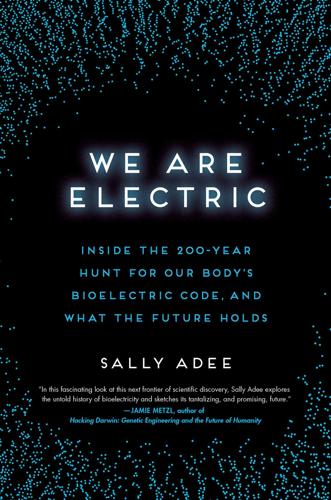
We Are Electric: Inside the 200-Year Hunt for Our Body's Bioelectric Code, and What the Future Holds
by
Sally Adee
Published 27 Feb 2023
Many are now convinced that, with these descendants of Waller’s early contraption, we are mere steps from reading the electrical activity of thoughts—and perhaps unlocking the secrets of consciousness itself. CHAPTER 5 Artificial memories and sensory implants: The hunt for the neural code In 2016, a Silicon Valley start-up called Kernel emerged from “stealth mode” to publicly announce that they were building a prosthetic memory—a brain-implantable microchip that would not only help people with traumatic brain injuries regain their ability to recall information but also eventually help the rest of us become more intelligent.
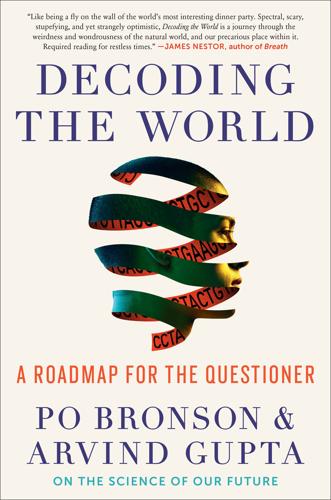
Decoding the World: A Roadmap for the Questioner
by
Po Bronson
Published 14 Jul 2020
The sympathetic system is activated by fast breathing and breath holds. The parasympathetic by slow, deep breathing. The physiological target in slow, deep breathing is the vagal nerve, a kind of octopus-like tangle inside us all. We’re learning a lot more about the power of vagal nerve stimulation through Silicon Valley startups, which are using medical devices to tap the vagal nerve near the ear. By firing the vagus for a solid minute to four minutes, they’re seeing miraculous effects. They are turning these brain gadgets into treatments for depression, addiction, epilepsy, and chronic inflammation. I am Po’s vagal nerve.

Chaos Monkeys: Obscene Fortune and Random Failure in Silicon Valley
by
Antonio Garcia Martinez
Published 27 Jun 2016
Such canine reflections were on my mind one day while reading the New York Times during a lull at the trading desk. To an active market participant, the New York Times’ business section is so dated and slow to respond, it may as well be a history book. Which is why it was very random indeed that I noticed something on recently funded Silicon Valley startups. Given the pestilential news from the Street, an upbeat headline must have shone like a blinking fluorescent sign. Almost in passing, the article quoted the CEO of a company called Adchemy, which had just raised its third round of financing. The one-line description was something about using mathematics for advertising.
…
Somerset, 200 Mayer, Marissa, 78 Mayfield Capital, 154, 156, 159, 162–63 McAfee, 382 McCorvie, Ryan, 16–17 McDonald’s, 82, 450 McEachen, Matthew (“MRM”), 41, 46, 62–63 call to, 123 CEO position, 249 chaos monkey suggestion, 103 codebase and, 66, 73, 184, 234 coding, 146 comrade-in-arms, 91 as daredevil, 136–37 deal details and, 251–52 earnestness, 68 Facebook and, 223, 225 family, 135, 205 getting to know, 88 irritation, 102–3 lost with, 109 paying off mortgage, 494 as resourceful savior, 100–101 as steadfast, 67 McGarraugh, Charlie, 14–15 McLean, Malcom, 447 media publishers, 387 MediaMath, 390 Menlo Park, 84 bedroom community, 338 conferences, 119 headquarters, 469 moving to, 337 schools, 306 meritocracy, 74 Merkle, 384 mesothelioma, 81 Miami drug trade, 304 Michelangelo, 334 Microsoft Adchemy and, 153–54, 161–62 Atlas, 383, 453–55 calendar, 340 dogfooding, 43 monopolist, 286 program managers, 272 middle managers, 359 Miller, Arthur, 104 Miller, Frank, 434 Milton, John, 475 minimum viable product (MVP), 434 miracles, 51 misleading, offensive, or sexually inappropriate (MOSI), 310 Mixpanel, 62 mobile commerce, 484–89 mobile data, 382, 477, 484, 486 Mobile Marketing Association (MMA), 448 monetary value, 317–19 monetization bet, 4 data-per-pixel, 274 digital, 184 Facebook, 5, 209, 275, 278, 298, 318, 425, 444 folly, 361–72 Google, 186 growth, 141 influences, 9 savvy, 486–89 tug-of-war, 379 Twitter, 190 zero-sum game, 319 money fuck-you money, 102, 415–16 investors, 74 outside, 155 pre-money valuation, 212 seed, 96 of VCs, 174 Moore’s law, 25 MoPub, 476–77, 479–81 morality, 226, 256, 284 Morgenstern, Jared, 218 Morishige, Sara, 183 Morris, Robert Tappan, 60–61 Mortal Kombat 3, 178 Moscone, George, 181 Moskovitz, Dustin, 284 Motwani, Rajeev, 138 Museum of Natural History, 366 My Life as a Quant (Derman), 16 MySpace, 283–84 N00b, 269 Nanigans, 480–81 Narasin, Ben, 128–31, 143–44 NASDAQ, 405, 410 National Socialism, 356 native ad formats, 448–49 Neko, 482 Netflix, 83, 103, 328 Netscape Navigator, 286 Neustar, 384, 386 New Rich, 357 New York Times, 448, 486 New Zealand, 318 News Feed addictive, 482 ads, 482–84, 488, 492 click-through rates, 487 content, 309 creation, 2 distribution, 364 as magic real estate, 362 spamming users, 372 versions, 444 newspaper advertising, 36–37 Nielsen, 385 1984 (Orwell), 433 noncash valuation, 212 no-shop contract, 201 Nukala, Murthy crossing paths, 167–68 ego, 42–43 greed, 44 hazing by, 71 immigrant worker, 72 lecture from, 65–66 manipulative rage, 136 pep rally, 36 saying good-bye to, 73 self-preservation and, 162–63 tantrums, 45 as tyrant, 158 vindictiveness, 134 wooing by, 154 Obama, Barack, 299–300 obscenity, 268 OkCupid, 54 Olivan, Javier, 410 Omnicom, 437, 443 on-boarding, 260–67, 271 one shot, one kill motto, 298 one-on-one, 434, 457, 469 online dating, 54–55 Opel, John, 148 Open Graph, 280, 364 optimization, 276, 302 Oracle investors, 111 job at, 193 logo, 124 product shindigs, 181 recruiting, 70 Orkut, 379 Orrick, Herrington & Sutcliffe, 193, 203, 253 Orwell, George, 433 outside money, 155 Ovid, 316 Oxford English Dictionary, 80 Page, Larry, 112, 428, 431 Pahl, Sebastien, 119 Palantir, 272 Palihapitiya, Chamath, 265–66 Palo Alto bosom of, 116 climate, 123 downtown, 333, 338 East, 404 hub, 109 old, 112, 158 posh, 84 shuttles, 289, 339 Stanford grads, 63 Pamplona running of bulls, 106–7 Pan-Arabism, 356 Pansari, Ambar, 210 Paper, 283 Parse, 155 Patel, Satya, 249–50 Patton, 369 Payne, Jim, 476 PayPal, 78, 124 personal wealth, 415 personally identifiable information (PII), 395 photo sharing, 286, 490–91, 493 photo-comparison software, 310 Pickens, Slim, 102 Piepgrass, Brian, 374 pings, 188, 327, 422 PMMess, 347–51, 407, 409 poker playing, 396–97 polyandry, 483 Polybius, 172, 316, 336 Pong, 150 Ponzi scheme, 16 pornography, 167, 262, 268, 312, 314, 315 post-valuation, 212 pregnancy, 58–59 pre-money valuation, 212 La Presse, 37 privacy Facebook and, 316–29 Irish Data Privacy Audit, 278, 320–23 PRIZM Segments, 385 product development, 47, 94, 191, 220, 334, 370, 389 product managers (PMs) as Afghan warlords, 273 earning money, 302 everyday work, 294 Facebook, 4, 6–7, 10, 91, 97, 202, 210, 271–79 Google, 192 habitat, 341 high-value, 246 ideal, 219 information and, 295 internal and external forces and, 316–17 last on buck-passing chain, 327 managing, 276 stupidity, 313 tech companies, 272 tiebreaker role, 292 product marketing manager (PMM), 277, 366 product navigators, 272 production, 94 product-market fit, 175 programmatic media-buying technology, 38 Project Chorizo, 296 pseudorandomness, 75 publishers, 37, 39 Putnam, Chris, 284 Qualcomm, 70 quants, 16–18, 24, 29, 141, 207 Quick and Dirty Operating System (QDOS), 149 Rabkin, Mark, 3, 312, 389, 398, 435 Rajaram, Gokul, 8, 10 accepting offer from, 248 banter with, 472–73 as boss, 3 bribery, 471 FBX and, 435 go big or go home ethos, 300 in great debate, 459 influence, 202 insubordination toward, 465 interview with, 221–22 leadership, 309 loss of trust, 468 lot with, 373 management of, 434 middle manager, 463–64 one-on-one and, 469 as product leader, 276–77 riding by, 346 stripping of duties, 452 word of, 252 Ralston, Geoff, 93 Rapportive, 96–97, 106 real-time bidding (RTB), 40–41 real-time data synchronization, 38 Red Rock Coffee, 84 RedLaser, 51 Reesman, Ben, 308, 389, 399–400, 475, 477 relativity, 25 replicating portfolio, 247–48 retargeting, 9, 381, 395, 438, 461 return of advertising spend (ROAS), 81 revenue dashboards, 274–75, 295–96 Right Media, 37–38 The Road Warrior, 134 Roetter, Alex, 185, 190, 493–94 romantic liaisons, 55–56 Romper Stomper, 202 Rosenblum, Rich, 21–22 Rosenn, Itamar, 368 Rosenthal, Brian, 389, 390 Ross, Blake, 444 Rossetti, Dante Gabriel, 303 rounds, 156 routing system, 324 Rubinstein, Dan, 312–13 Ruby on Rails, 155 Russia, 375–76 Sacca, Chris, 128, 141, 143 acquisition advice, 187–88, 212–13, 245–47 on deals, 205–7 ignoring inquiries, 201 pseudoangel, 113, 117–19 wisdom, 202 Safari, 484 safe sex, 58 safeguarding role, 315 sailboat living, 307, 332, 337–38 salaries, 358 San Francisco Museum of Modern Art (SFMOMA), 181 Sandberg, Sheryl, 2, 10 data joining and, 465 gatekeeper, 4–5 intimates, 3–4 leadership, 410 managerial prowess, 311–13 meetings, 371, 382, 459 PowerPoint and, 7 recommendations to, 462 schmoozing, 367 wiles of, 408 Sarna, Chander, 67–68, 71, 72 sausage grinder, 296 scale, 300 Scalps@Facebook, 314 scavenging foray, 116 schadenfreude, 16–17 Schopenhauer, Arthur, 282 Schrage, Elliot, 3–4, 410 Schreier, Bryan, 123–25 Schrock, Nick, 400 Schroepfer, Mike, 2 Schultz, Alex, 374 scientific racism, 122 Scoble, Robert, 100 Scott, George C., 24, 369 security, 314–15 seed money, 96 Sequoia, 122–25, 130, 159 severance package, 470–71 severity-level-one bug (SEV1), 323 sexual molestation, 17 Shaffer, Justin, 219–21, 444 Shakespeare, William, 120, 427, 456 Shapiro, Scott, 378, 459 Shelly, Percy Bysshe, 337 Shockley, William, 122 shuttles, 289, 339 Siegelman, Russell, 146, 201, 213, 397 angel investor, 110–13 commitment, 141–43 negotiations, 116–17 Silicon Valley. See also startups; tech companies acquisitions, 155 attitude, 232 capitalism, 74 ecosystem, 100, 137 engineering-first culture, 262, 283 getting paid in, 346–47 ghetto, 121 go-big-or-go-home strategy, 206 hustling, 193 immigrant workers, 69 job offers, 252 network, 130 personage, 111 sanity and, 122 startups, 28 success, 489 technology development, 294 Wall Street paralleling, 27 Simo, Fidji, 348, 483 single-trigger acceleration, 254 skulduggery, 69, 229 small-to-medium-sized businesses (SMBs), 85–86 Smith, Adam, 11 SMS, 490–91 Social Influence in Social Advertising: Evidence from Field Experiments (Bakshy, Eckles, Yan, Rosenn), 368 social mediation, 496 social mission, 257 social plugins, 6–9 The Social Network, 282, 288, 333 software ad-blocking, 325 Adchemy, 43 analytics, 448 building, 47, 155 bundling, 149–50 chaos monkey, 103 conversion-tracking, 222 development, 455 enterprise, 153 Mom and Pop, 85 photo-comparison, 310 stacked, 439 Southwest Airlines, 14 spam, 262, 315, 372, 490 Spear, Leeds & Kellogg (SLK), 24–25, 40–41 speed eating, 21 Sponsored Stories, 280, 365, 367, 369–70, 444 Spotify, 362, 364–65 SQL write command, 323 Square, 464 stack, 439 Stanford, Leland, 121 Stanford Linear Accelerator Center (SLAC), 121–22 Star Wars, 29 Starbucks, 362, 372 start date, 284–85 startups.
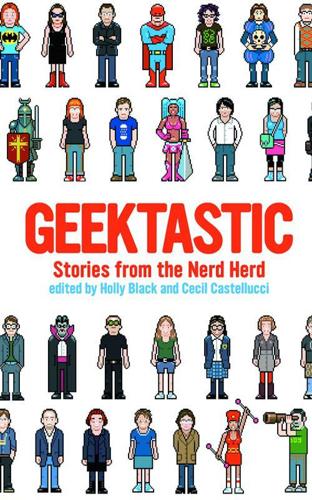
Geektastic: Stories From the Nerd Herd
by
Holly Black
and
Cecil Castellucci
Published 1 Aug 2009
From now on, the earth would tremble in my wake. And I knew. I knew what the dinosaurs sounded like. They sounded like me…. Barry Lyga was a geek long before it was cool to be a geek, back when being a geek meant getting beat up on a regular basis, as opposed to selling that cool new Web app you wrote to a Silicon Valley start-up and retiring at twenty-five. In his time, he’s been a comic-book geek, a role-playing geek, a computer geek, and a sci-fi geek, though never a Trekkie, Trekker, or a Whovian, because he has his limits. Barry is the author of The Astonishing Adventures of Fanboy and Goth Girl (called a “love letter and a suicide note to comic books”), Boy Toy, and Hero-Type.

Augmented: Life in the Smart Lane
by
Brett King
Published 5 May 2016
Think about pretty much any condition you might need to be tested for today—high cholesterol, diabetes, kidney or liver problems, iron deficiency, heart problems, sexually transmitted infections, anaemia, hepatitis, HIV and various viruses—and they are typically tested for either via blood being drawn or via urinalysis. With blood tests, it typically involves drawing a significant amount of blood to get accurate tests. Here is where technology advancements will dramatically change these tests. While facing some controversy recently, the Silicon Valley start-up Theranos was one of the first to really tackle this problem. Theranos has developed blood tests that can help detect dozens of medical conditions based on just a drop or two of blood drawn with a pinprick from your finger. At Walgreens pharmacies across the United States, you simply show a pharmacist your ID and a doctor’s note, and you can have your blood drawn right there.

Adapt: Why Success Always Starts With Failure
by
Tim Harford
Published 1 Jun 2011
Far more centralised supermarkets such as Wal-Mart in the US and Tesco in the UK are clearly very profitable – they still experiment but have managed to centralise and automate that experimentation. Yet Whole Foods demonstrates that even in this most regimented of industries it is possible to succeed with a radical, employee-led management model that would not seem out of place in a utopian Silicon Valley start-up. Whole Foods isn’t unique, either. Almost every management innovation described above applies equally to one of the UK’s least glamorous brands, Timpson. Timpson has several hundred small branches which adorn many British high streets, offering a bric-a-brac of services such as key-cutting, shoe and watch repairs, and engraving.

Coding Freedom: The Ethics and Aesthetics of Hacking
by
E. Gabriella Coleman
Published 25 Nov 2012
Technology entrepreneurs were amassing millions in stock options from inflated initial public offerings fueled in part by techno-utopic articles in Wired and the New York Times.18 Internet companies like DoubleClick, Star Media, and Ivillage, all fledgling star Silicon Valley firms, were awash in venture capital funding and feverish stock market investments. In the context of one of Silicon Valley’s most pronounced tech booms, geeks continued to install free software servers and other applications in universities and, more than ever, companies, including many Silicon Valley start-ups. Thus by 1997, the grassroots enthusiasm of free software had grown material roots in the corporate sphere. Multiple Linux distributions—most famously Slackware, Debian, and Red Hat—were under vigorous development, and newer software applications, like Apache, were gaining significant visibility and being used by high-profile dot-coms like Amazon.
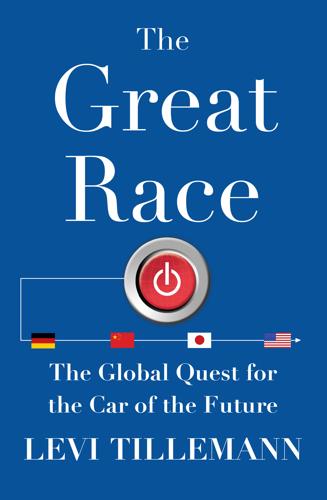
The Great Race: The Global Quest for the Car of the Future
by
Levi Tillemann
Published 20 Jan 2015
And Tesla was not alone. 12 Challenging the Big Green Monster FOR BOB Lutz, Tesla was a symbol of everything wrong with America. It’s not that there was anything fundamentally wrong with Tesla’s business model. Nor were there any fundamental flaws with the technology—at least not that he could ascertain. The problem, as far as Lutz was concerned, was that the electric supercar was being pursued by a Silicon Valley startup and not Detroit—more specifically, not General Motors. In the Great Race for technology, GM was losing. In so many ways, Lutz was not your typical American auto executive. The distinctions started early. Born in Zurich, Switzerland, in 1932, Lutz came to the United States when he was only seven years old.

Creativity, Inc.: Overcoming the Unseen Forces That Stand in the Way of True Inspiration
by
Ed Catmull
and
Amy Wallace
Published 23 Jul 2009
CHAPTER 3 A DEFINING GOAL There is nothing quite like ignorance combined with a driving need to succeed to force rapid learning. I know this from firsthand experience. In 1986, I became the president of a new hardware company whose main business was selling the Pixar Image Computer. The only problem was, I had no idea what I was doing. From the outside, Pixar probably looked like your typical Silicon Valley startup. On the inside, however, we were anything but. Steve Jobs had never manufactured or marketed a high-end machine before, so he had neither the experience nor the intuition about how to do so. We had no sales people and no marketing people and no idea where to find them. Steve, Alvy Ray Smith, John Lasseter, me—none of us knew the first thing about how to run the kind of business we had just started.

Joel on Software
by
Joel Spolsky
Published 1 Aug 2004
You should be starting to get some ideas about how to break the chicken-and-egg problem: Provide a backward-compatibility mode that either delivers a truckload of chickens, or a truckload of eggs, depending on how you look at it, and sit back and rake in the bucks. Ah. Now back to bill presentment. Remember bill presentment? The chicken-and-egg problem is that you can only get your Con Ed bills, so you won't use the service. How can you solve it? Microsoft couldn't figure it out. PayMyBills.com (and a half-dozen other Silicon Valley startups) all figured it out at the same time. You provide a backward-compatibility mode: If the merchant won't support the system, just get the merchant to mail their damn paper bills to University Avenue, in Palo Alto, where a bunch of actual human beings will open them and scan them in. Now you can get all your bills on their website.
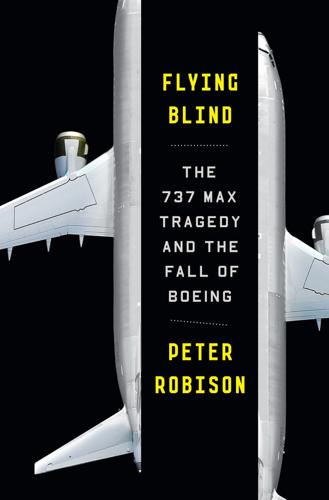
Flying Blind: The 737 MAX Tragedy and the Fall of Boeing
by
Peter Robison
Published 29 Nov 2021
It was hard to imagine that a low-fare airline had mobilized such a well-coordinated legal response just a few days after the crash; solving the puzzle of who did became a consuming passion for Rini and the lawyers she eventually hired. Michael Indrajana, an Indonesian American lawyer living in northern California, had started hearing about the crash from family and friends as soon as it happened. Indrajana, then thirty-five, was an intellectual property attorney and litigator who represented Silicon Valley startups. Born in San Francisco, his family had moved back to Indonesia when he was a baby and he’d lived there until his teens. After high school in Davis, California, he studied applied computational physics at the University of California’s Davis campus and earned a law degree from the University of the Pacific’s McGeorge School of Law.
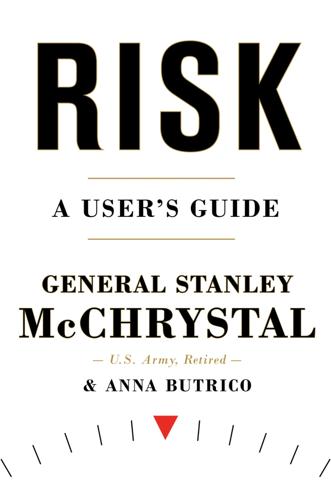
Risk: A User's Guide
by
Stanley McChrystal
and
Anna Butrico
Published 4 Oct 2021
Deutsche Bank didn’t place me on its board to red team or to intentionally function as the bank’s devil’s advocate, but my background—and, humorously, my ignorance—helped me function in that capacity. While I’m fascinated by boards at large and have sat on a number of them, the board of Theranos—a Silicon Valley start-up that aimed to revolutionize blood testing—caught my attention for its time in the spotlight. Using lessons learned about bank diversity to examine Theranos, Tilcsik and Clearfield argue that the board’s fundamental lack of diversity played a crucial role in allowing the company’s fraud to go as far as it did.

The Deep Learning Revolution (The MIT Press)
by
Terrence J. Sejnowski
Published 27 Sep 2018
products that its operating systems control, hoping to repeat its successful foray into the cell phone market. Seeing a business that had not changed for 100 years transformed before their eyes, automobile manufacturers are following in their tracks. General Motors paid $1 billion for Cruise Automation, a Silicon Valley start-up that is developing driverless technology, and invested an additional $600 million in 2017 in research and development.2 In 2017, Intel purchased Mobileye, a company that specializes in sensors and computer vision for self-driving cars, for $15.3 billion dollars. The stakes are high in the multitrillion-dollar transportation sector of the economy.
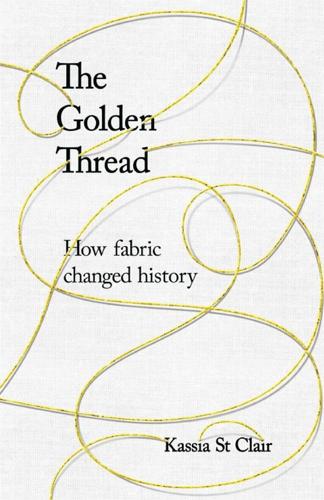
The Golden Thread: How Fabric Changed History
by
Kassia St Clair
Published 3 Oct 2018
This crop – and the textiles made from it – was arguably the first global commodity.2 While we no longer pay as much attention to the sourcing and quality of the individual pieces of cloth that we interact with on a daily basis, they remain deeply personal. We use clothing, for example, to signal to those we meet who we are and how we want to be perceived. Distinct uniforms exist for those working in City hedge funds, Silicon Valley start-ups and media companies, for example, even though most of these people will actually spend the majority of their days in offices and behind desks. Subordinates often adopt the sartorial preferences of their bosses, and trends spread like wildfire within the confines of small institutions. (There was an inexplicable vogue for sleeveless sweaters in one office where I once worked; and the same professors who earnestly explained how futile it was to find meaning in the clothing choices of eighteenth-century ladies and gentlemen were usually clad in identikit tweed jackets and cord trousers, perhaps leavened with brightly coloured socks if they fancied themselves rebels.)
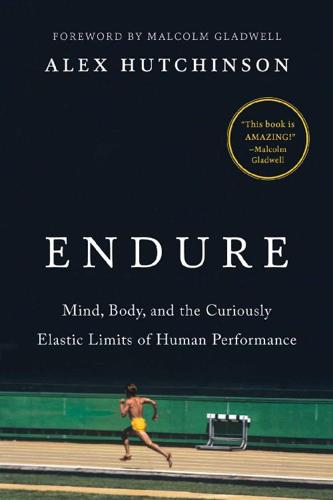
Endure: Mind, Body, and the Curiously Elastic Limits of Human Performance
by
Alex Hutchinson
Published 6 Feb 2018
In March 2016, James Michael McAdoo, a power forward for the Golden State Warriors, tweeted out a photo of himself in the training room, sporting a pair of slick over-the-ear headphones.12 Though you couldn’t tell from the picture, these particular headphones incorporated a miniature fakir’s bed of soft plastic spikes above each ear, pressing gently into the skull and delivering pulses of electric current to the brain. Made by a Silicon Valley start-up called Halo Neuroscience, the headphones promised to “accelerate gains in strength, explosiveness, and dexterity” through a proprietary technique called neuropriming—a slightly modified version of tDCS. “Thanks to @HaloNeuro for letting me and my teammates try these out!” McAdoo tweeted. “Looking forward to seeing the results!”

That Will Never Work: The Birth of Netflix and the Amazing Life of an Idea
by
Marc Randolph
Published 16 Sep 2019
That meant growth. That meant more space—a lot of it. I didn’t particularly want to leave our Scotts Valley home. I’d grown to love its money-green carpet, its humid stench of Diet Coke and Zanotto’s takeout containers. And I was deeply invested in Netflix being a “Santa Cruz company.” I’d been on the Silicon Valley startup roller coaster, and I wanted us to be different, set apart. I wanted something of Santa Cruz’s laid-back ethos to seep into our office culture. Santa Cruz felt like a respite from the boom-and-bust cycle in San Jose. I wanted to keep a mountain range between my company and the prying eyes of the VCs keeping it afloat.

Don't Be Evil: How Big Tech Betrayed Its Founding Principles--And All of US
by
Rana Foroohar
Published 5 Nov 2019
Subsequent early stage investors would include some Silicon Valley legends, including Amazon founder Jeff Bezos, who put in $250,000 in 1998. “There was no business plan,” said Bezos to journalist Ken Auletta in a New Yorker article. “I just fell in love with Larry and Sergey.”18 And so Google, the company, was born. That first year, they embodied the caricature of a young Silicon Valley start-up, complete with pilgrimages to Burning Man, fancy perks to lure top talent, and plenty of hanky-panky. “Sergey was the Google playboy,” remembers Charlie Ayers, the first company chef, whom Page and Brin hired when the company had only twelve employees.19 “He was known for getting his fingers caught in the cookie jar with employees that worked for the company, in the masseuse room.

Pure Invention: How Japan's Pop Culture Conquered the World
by
Matt Alt
Published 14 Apr 2020
It is no coincidence that it debuted at precisely the moment Japanese creators were perfecting another form of electronic escape: the video game. The Americans had invented this new form of leisure. The first hit arcade game, Pong, debuted in a shabby Sunnyvale, California, bar in September of 1972. It was created by Al Alcorn, an engineer at a Silicon Valley start-up called Atari, a company that took its name from the Japanese word for cornering an opponent in the game of Go. Even by the technical standards of the day, Pong was primitive. The gameplay consisted of a glowing pair of oblong “racquets” and a square “ball” bouncing across the inky depths of a black TV screen; the only rules provided were the words INSERT COIN and a Zen koan–like AVOID MISSING BALL FOR HIGH SCORE.

Invention: A Life
by
James Dyson
Published 6 Sep 2021
You have to do it, believe in it, and trust in a successful outcome. I was very lucky that Deirdre understood and gave me the reins to plunge us into the unknown, a world of debt, risk, and potential penury. Back then there were no incentives to start a business of your own while venture capital was nonexistent. This was long before before Silicon Valley start-ups. It was quite the opposite, with investors earning big money from interest on their capital and unwilling to risk it in manufacturing. Against the grain, though, I was going to be a manufacturer. I was also going to be something else key to successful invention: I was going to be an entrepreneur.
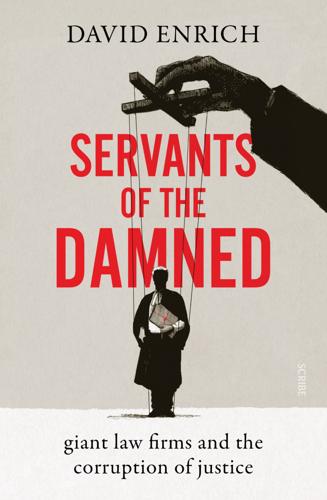
Servants of the Damned: Giant Law Firms and the Corruption of Justice
by
David Enrich
Published 5 Oct 2022
• That is what happened: David Enrich, The Spider Network: The Wild Story of a Math Genius, a Gang of Backstabbing Bankers, and One of the Greatest Scams in Financial History, 2017, 316–19. • hired private investigators: Ronan Farrow, “Harvey Weinstein’s Army of Spies,” New Yorker, 11/6/2017. • surveilled the company’s critics: John Carreyrou, Bad Blood: Secrets and Lies in a Silicon Valley Startup, 2018, 135. • kept tabs on Carreyrou’s reporting: Barry Meier, Spooked: The Trump Dossier, Black Cube, and the Rise of Private Spies, 2021, 92–93. • more than $100 million a year: Casey Sullivan, “Inside Paul Weiss’ Relationship With Apollo Global Management,” Insider, 6/30/2021. • turned out to be true: Matthew Goldstein and Katherine Rosman, “Apollo C.E.O. to Step Down After Firm Finds More Payments to Jeffrey Epstein,” New York Times, 1/25/2021

House of Huawei: The Secret History of China's Most Powerful Company
by
Eva Dou
Published 14 Jan 2025
“He told it with great passion and enthusiasm, and we listened with such excitement our blood was practically boiling,” a Huawei executive recalled in an essay.[11] * * * — Starting in Huawei’s early days, Ren asked employees to purchase shares in the company. He badly needed the cash to fund Huawei’s budding R&D projects, and he believed that the shares would make employees feel invested in the company’s success, encouraging them to work harder—similar to the reasoning behind the stock options offered by Silicon Valley startups to founding executives. Accounts of Huawei employees buying shares date back to at least 1989. According to early finance manager Zheng Aizhu, she and her husband gave Ren their life savings—eight thousand yuan—when they joined Huawei in February 1989. Ren gifted them seven thousand yuan worth of shares on top of that.
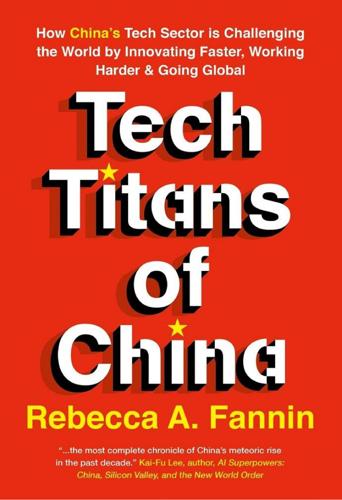
Tech Titans of China: How China's Tech Sector Is Challenging the World by Innovating Faster, Working Harder, and Going Global
by
Rebecca Fannin
Published 2 Sep 2019
. $1.5 billion digital mapping 2014 * Note–Inv. is investment; Co-inv. is co-investment; Acq. is acquisition; Lead Inv. is lead investment; Lead Co-inv. is lead co-investment; Und. is undisclosed Sources: Silicon Dragon research, S&P Global Intelligence, annual reports, news releases In the United States, Alibaba has had a mixed record of M&A deals. A $100 million acquisition of eye scan security startup EyeVerify in Kansas City was well planned and executed. EyeVerify became the global center of Alipay for mobile biometrics or eye scans to verify IDs for banking, mobile payments, and security. But a series of Silicon Valley–style startup deals that Alibaba made in the run-up to its IPO in 2014 ultimately failed either because of product fit mismatches with the China market or missed milestones: TangoME in mobile messaging, Kabam in gaming, and Quixey in mobile search. The big blow to Alibaba’s US ambitions was the block on its Ant Financial deal to buy money transfer firm MoneyGram.
…
“China’s emerging innovations and the scale of its venture capital markets are driving China’s competitiveness on the world stage,” says Gary Rieschel, founding managing partner of leading US-Chinese venture capital firm Qiming Venture Partners. Powerful indicators point to the center of gravity shifting from longtime leader Silicon Valley toward China’s startup ecosystem. Consider: •China venture spending almost reached the US level in 2018, soaring 56 percent to $105 billion compared to a 42 percent gain to $111 billion for the US.6 In the first half of 2018, China expenditures surpassed the US.7 •China VC spending was a mere $5.6 billion in 2010, overshadowed by the United States at $35.3 billion.
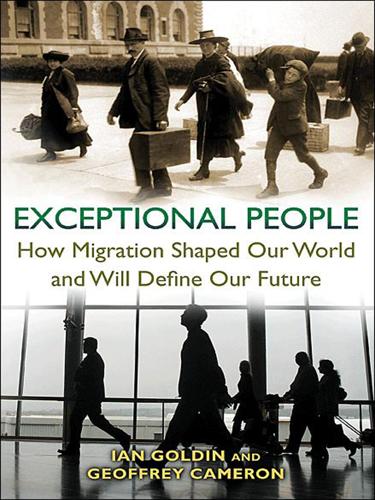
Exceptional People: How Migration Shaped Our World and Will Define Our Future
by
Ian Goldin
,
Geoffrey Cameron
and
Meera Balarajan
Published 20 Dec 2010
They find that higher rates of temporary high-skilled admissions “substantially increased” rates of invention.32 By 2000, migrants accounted for 47 percent of the U.S. workforce with a science or an engineering doctorate, and they constituted 67 percent of the growth in the U.S. science and engineering workforce between 1995 and 2006.33 In 2005, a migrant was at the helm of 52 percent of Silicon Valley start-ups, and a quarter of all U.S. technology and engineering firms founded between 1995 and 2005 had a migrant founder. In 2006, foreign nationals living in the United States were inventors or coinventors in 40 percent of all international patent applications filed by the U.S. government.34 Migrants file the majority of patents by leading science firms: 72 percent of the total at Qualcomm, 65 percent at Merck, 64 percent at General Electric, and 60 percent at Cisco.35 Higher rates of immigration also have second-order effects on innovation.

Radicals Chasing Utopia: Inside the Rogue Movements Trying to Change the World
by
Jamie Bartlett
Published 12 Jun 2017
One of Liberland’s largest donors is thirty-seven-year-old multimillionaire Roger Ver. Like Vit, Roger considers himself an anarcho-capitalist. He left the United States and renounced his citizenship a decade ago after being convicted of selling firecrackers on eBay, and subsequently made money in Silicon Valley start-up companies, and then became a very early investor in the cryptocurrency bitcoin. (Roger plans to be cryonically frozen by Alcor when he dies, like Zoltan.) He now lives in Tokyo running a bitcoin-based business and donates $10,000 a month to Liberland.13 ‘I know it’s a long shot,’ Roger told me via Skype, ‘but the minute I’m assured the Croatian police aren’t going to destroy any investment I make there, yeah, sign me up!
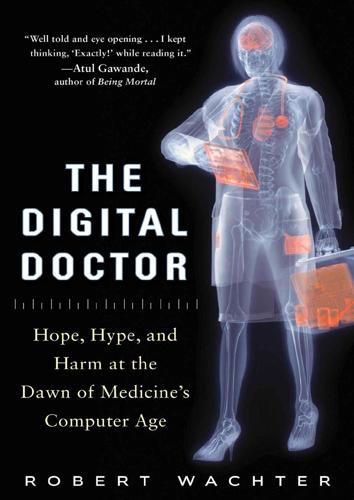
The Digital Doctor: Hope, Hype, and Harm at the Dawn of Medicine’s Computer Age
by
Robert Wachter
Published 7 Apr 2015
The juice bar is a busy congregational space, as are the small glasswalled rectangular conference rooms, in which one twentysomething, seated on a couch, is listening to another map out a company’s can’t-miss strategy on a dry-erase board. If one half expects to see a horse-drawn carriage from the window of David Blumenthal’s Fifth Avenue office in Manhattan, one half expects to see a self-driving car outside the offices of these Silicon Valley start-ups. The sense of limitless possibilities is palpable when you enter this world, but the hype can border on the farcical. In the “Health 2.0” office near San Francisco’s CalTrain station, a London-born healthcare impresario named Matthew Holt and his staff spend their days analyzing healthcare IT start-ups for a series of publications and conferences that they produce.

Digital Wars: Apple, Google, Microsoft and the Battle for the Internet
by
Charles Arthur
Published 3 Mar 2012
As an example of the latter, Page and Brin pointed in the second paper to the results of a search for ‘Bill Clinton’, the then US president: one search engine returned ‘Bill Clinton Joke of the Day’ as the top result. (The PageRank patent is owned by Stanford University, where it was developed; Google is the exclusive licensee.) They became a classic Silicon Valley start-up in summer 1998, maxing out their credit cards to buy equipment, spending almost nothing on office furniture (the tables in their first offices at 232 Santa Margarita Avenue, Menlo Park were doors balanced on carpenters’ timber-sawing stands), and operating in what is commonly known as ‘stealth mode’.

Together
by
Vivek H. Murthy, M.D.
Published 5 Mar 2020
The exterior walls of many of the buildings I drove past on the cold and rainy day of my visit were covered in red, blue, and black graffiti with words and images artfully etched onto peeling plaster. I was thus unprepared for the newly constructed building that houses ARC. With its light-filled open plan and hardwood floors, ARC’s offices feel more like a Silicon Valley start-up than a nonprofit social services operation. The glass-partitioned conference rooms are continuously filled with meetings. The place buzzes with energy as ARC members, interns, policy researchers, therapists, and volunteers stride through the halls and gather in groups, talking, laughing, and problem solving.
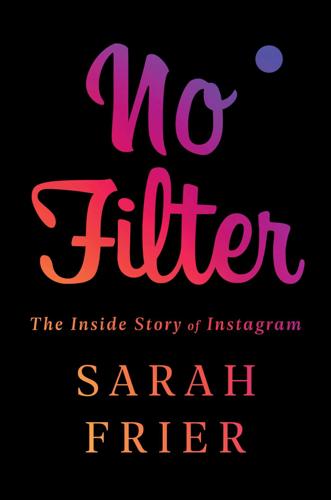
No Filter: The Inside Story of Instagram
by
Sarah Frier
Published 13 Apr 2020
Instagram’s early popularity was less about the technology and more about the psychology—about how it made people feel. The filters made reality look like art. And then, in cataloging that art, people would start to think about their lives differently, and themselves differently, and their place in society differently. Most Silicon Valley startups—more than 90 percent of them—died. But what if Instagram didn’t? If the founders were very lucky, if they outnavigated all the competition, supported the new users, and got as big as Facebook one day, they would indeed change the world. Or at least how people saw the world, the way linear perspective changed painting and architecture in the Renaissance.
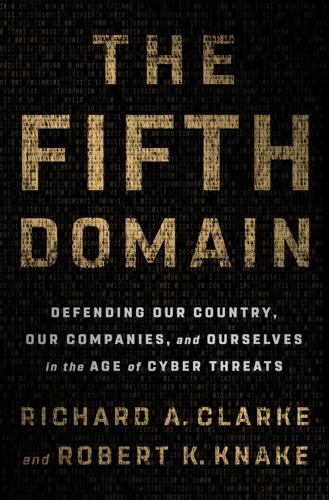
The Fifth Domain: Defending Our Country, Our Companies, and Ourselves in the Age of Cyber Threats
by
Richard A. Clarke
and
Robert K. Knake
Published 15 Jul 2019
As with the internet itself, the cloud has turned out to be a neutral medium, a mirror that reflects the intentions, good or bad, of those who are using it. So, like email or the World Wide Web, the cloud quickly has become vital to both legitimate businesses and the cyber-criminal underworld. Like every Silicon Valley start-up, criminals are making the most of cheap or free computing power. While the cloud has made it easier and cheaper for cyber criminals to do what they do, it has also made it immeasurably easier for companies that do not have thousands of people and security budgets with nine digits to implement best-of-breed protections online.
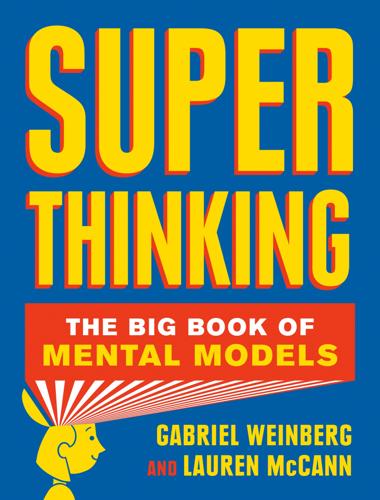
Super Thinking: The Big Book of Mental Models
by
Gabriel Weinberg
and
Lauren McCann
Published 17 Jun 2019
Knowing something that is important yet mostly unknown or not yet widely believed is what investor Peter Thiel calls a secret. This has the same meaning as its colloquial use, just applied to innovation. As Thiel wrote in his 2014 book, Zero to One: Great companies can be built on open but unsuspected secrets about how the world works. Consider the Silicon Valley startups that have harnessed the spare capacity that is all around us but often ignored. Before Airbnb, travelers had little choice but to pay high prices for a hotel room, and property owners couldn’t easily and reliably rent out their unoccupied space. Airbnb saw untapped supply and unaddressed demand where others saw nothing at all.
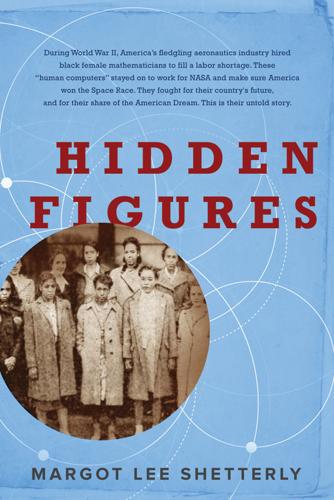
Hidden Figures
by
Margot Lee Shetterly
Published 11 Aug 2016
Mercury Boulevard no longer conjures images of the eponymous mission that shot the first Americans beyond the atmosphere, and each day the memory of Virgil Grissom fades away from the bridge that bears his name. A downsized space program and decades of government cutbacks have hit the region hard; today, an ambitious college grad with a knack for numbers might set her sights on a gig at a Silicon Valley startup or make for one of the many technology firms that are conquering the NASDAQ from the Virginia suburbs outside of Washington, DC. But before a computer became an inanimate object, and before Mission Control landed in Houston; before Sputnik changed the course of history, and before the NACA became NASA; before the Supreme Court case Brown v.
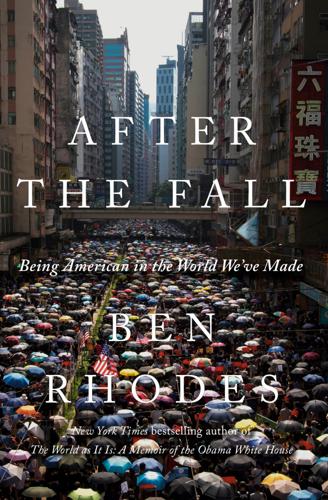
After the Fall: Being American in the World We've Made
by
Ben Rhodes
Published 1 Jun 2021
The glass towers in New York went up, the old apartment buildings came down. With so much money funneled into the economy, there was excess capital—money that had to go somewhere because it made no sense for it to sit still. A lot of new technologies and platforms became a natural destination for this excess capital, whether that money was pumped into Silicon Valley start-ups or China’s burgeoning tech sector. New economies were developed to service those with means in ever-changing ways, from Uber to Amazon Prime. Unburdened by antitrust laws that had been gutted, the monopolistic technology companies swallowed up their competition and in-person retailers. This helped tech companies grow faster than our understanding of what their technologies would do.

On the Clock: What Low-Wage Work Did to Me and How It Drives America Insane
by
Emily Guendelsberger
Published 15 Jul 2019
I do not know quite why, for my impression is that there were no speed-limit laws in those days. Anyway, I had to get a special permit from the mayor. My Life and Work can feel surprisingly modern for a book written almost a century ago. Ford reads like an old-timey Travis Kalanick, invoking a lot of the same mythology as Silicon Valley startups—disruption, government red tape holding back progress, the greedy fat cats of organized labor, a pathological devotion to work. Ford’s biggest contribution to the history of industry was not the car, but the assembly line. He didn’t exactly invent it, but he was the first person to really demonstrate how insanely profitable standardized large-scale mass production could be.

American Foundations: An Investigative History
by
Mark Dowie
Published 3 Oct 2009
Mayfield general partner Gib Myers, who helped start Compaq Computers and Silicon Graphics, keeps a close watch on Roberts-not as a competitor in the capital markets but as a pioneering philanthropist. Myers is founder of the Entrepreneurs' Foundation, itself an exemplar of imaginative philanthropy. Myers's idea was to ask fledgling Silicon Valley start-ups to donate stock certificates, stock options, and warrants to the foundation before they go public. Participating companies generally donate between .25 and .75 percent of their stock, which, if it has any value at all, is illiquid and often worthless. Myers hopes that when the firms go public and their stock price appreciates in the aftermarket, Entrepreneurs' Foundation will grow as fast as everything else in the high-tech securities market and put him in a position to make charitable contributions to the community programs that would otherwise be approaching the new ventures for support.

Why Machines Learn: The Elegant Math Behind Modern AI
by
Anil Ananthaswamy
Published 15 Jul 2024
So, I sat down and started doing some algebra and said, ‘Goddamn, this thing is an unbiased estimate.’ ” He was able to show that the LMS algorithm, if you took extremely small steps, got you to the answer: the optimal value for the weights of either the neuron or the adaptive filter. “By making the steps small, having a lot of them, we are getting an averaging effect that takes you down to the bottom of the bowl,” Widrow said. Hoff finished his Ph.D. with Widrow and was doing his postdoctoral studies when a small Silicon Valley start-up came calling. Widrow told him to take the job. It was sound advice: The start-up was Intel. Hoff went on to become one of the key people behind the development of the company’s first general-purpose microprocessor, the Intel 4004. Widrow continued using the LMS algorithm to build adaptive filters—for noise cancelation and for antennas that adapt to remove noise and interference.
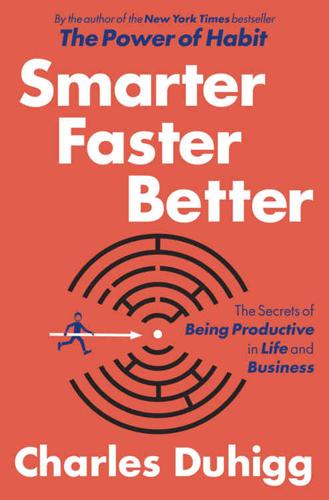
Smarter Faster Better: The Secrets of Being Productive in Life and Business
by
Charles Duhigg
Published 8 Mar 2016
Venture capitalists loved star model companies because giving money to the A-Team, conventional wisdom held, was always the safest bet. The second category was the “engineering” model. Inside firms with engineering cultures, there weren’t many individual stars, but engineers, as a group, held the most sway. An engineering mindset prevailed in solving problems or approaching hiring decisions. “This is your stereotypical Silicon Valley start-up, with a bunch of anonymous programmers drinking Mountain Dew at their computers,” said Baron. “They’re young and hungry and might be the next generation of stars once they prove themselves, but right now, they’re focused on solving technical problems.” Engineering-focused cultures are powerful because they allow firms to grow quickly.
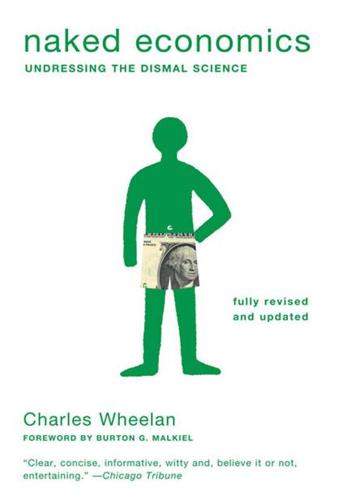
Naked Economics: Undressing the Dismal Science (Fully Revised and Updated)
by
Charles Wheelan
Published 18 Apr 2010
The CIA needs to be on the cutting edge of technology, yet it cannot provide the same incentives to innovate as the private sector can. Someone who makes a breakthrough discovery at the CIA will not find himself or herself worth hundreds of millions of dollars six months later, as might happen at a Silicon Valley startup. So the CIA decided to use the private sector for its own ends by using money appropriated by Congress to open its own venture capital firm, named In-Q-It (in a sly reference to Q, the technology guru who develops gadgets for James Bond).1 An In-Q-It executive explained that the purpose of the venture was to “move information technology to the agency more quickly than traditional Government procurement processes allow.”
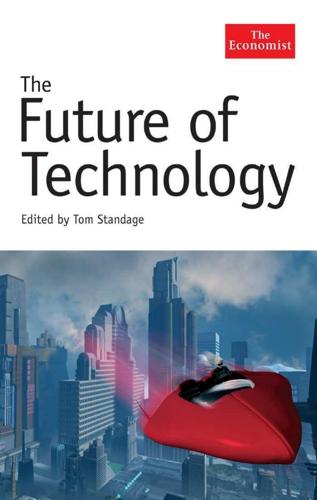
The Future of Technology
by
Tom Standage
Published 31 Aug 2005
Amazon.com, the leading online shopping mall, for instance, managed to cut its quarterly technology spending by almost $20m (see Chart 1.3). The most interesting feature of Google’s data centre, however, is that its servers are not powered by high-end chips, and probably will not have Itanium, Intel’s most powerful processor, inside for some time yet, if ever. This sets Google apart among hot Silicon Valley start-ups, whose business plans are mostly based on taking full advantage of the exponential increase in computing power and similar growth in demand for technology. “Forget Moore’s law,” blared the headline of an article about Google in Red Herring, a now-defunct technology magazine. That is surely overblown, but Google’s decision to give Itanium a miss for now suggests that microprocessors themselves are increasingly in “overshoot”, even for servers – and that the industry’s 30-year race for ever more powerful chips with smaller and smaller transistors is coming to an end.

Samsung Rising: The Inside Story of the South Korean Giant That Set Out to Beat Apple and Conquer Tech
by
Geoffrey Cain
Published 15 Mar 2020
” * * * — I’D BEEN STUDYING THIS company for years and saw few real changes in the country famously known as the Republic of Samsung. The winners in this Korean drama of dalliances were easily sorted from the losers, it seemed to me. The victors had played a Machiavellian game of power, embracing methods more akin to Game of Thrones than to a Silicon Valley start-up. Many assumed Jay would likely get a presidential pardon—as his father had twice before. The chairman’s cousin Miky Lee (who’d tried to secure a deal for Samsung with DreamWorks back in 1995, before securing the DreamWorks deal for herself) left for California, citing health concerns.
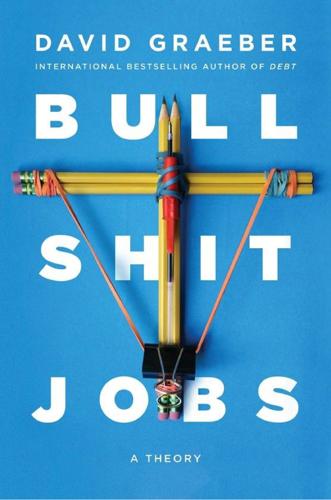
Bullshit Jobs: A Theory
by
David Graeber
Published 14 May 2018
Much of this argument and several of the examples are taken from the first chapter of Graeber, Utopia of Rules, 3–44. 27. Of course, this is not the way things are represented, and, naturally, in any branch of industry defined as “creative,” whether software development or graphic design, production is typically outsourced to small groups (the celebrated Silicon Valley start-ups) or individuals (casualized independent contractors) who do work autonomously. But such people are often largely uncompensated. For a good recent critical history of managerialism, see Hanlon, 2016. 28. Definitions of feudalism vary, from any economic system based on tribute-taking, to the specific system prevalent in Northern Europe during the High Middle Ages, in which land was granted in exchange for military service in ostensibly voluntary relations of vassalage—a system which outside Europe is documented mainly in Japan.
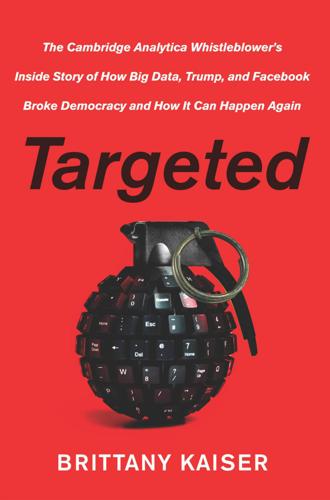
Targeted: The Cambridge Analytica Whistleblower's Inside Story of How Big Data, Trump, and Facebook Broke Democracy and How It Can Happen Again
by
Brittany Kaiser
Published 21 Oct 2019
All had already amassed impressive experience working in the for-profit and nonprofit worlds, in everything from banking to high-tech to the oil and gas industry to running humanitarian programs across Africa. They had come to the company because it offered them the unique opportunity to work at a place in Europe that had the feel of a Silicon Valley start-up. They were supremely hardworking and serious. Their tone was subdued and professional, with an undercurrent of urgency that, though quiet, seemed more characteristically New York than London. They worked long hours and gave 200 percent of themselves. Some had been embedded in the recent American election campaigns and had just returned to the London office to a hero’s welcome.

American Kleptocracy: How the U.S. Created the World's Greatest Money Laundering Scheme in History
by
Casey Michel
Published 23 Nov 2021
These funds “are doing the same thing as the Swiss banks: anonymizing money on an industrial scale,” wrote investigative journalist Tom Burgis.23 Already we’ve seen substantial sums from Chinese, Russian, and Saudi sources circling among these private, unregulated investment firms. One Wall Street Journal investigation, for instance, found that “the Saudi government has been the largest Silicon Valley startup funder since mid-2016, investing at least $11 billion.”24 But thanks to the Treasury Department’s “temporary” exemption, Bloomberg wrote, the U.S. knows “shockingly little” about the sources of foreign finance flowing through hedge funds and private equity—or about just how much of those industries is propped up by dirty money.25 “With no requirement to disclose even the names of investors or non-voting owners, [private equity] firms are perfect vehicles for money laundering,” anticorruption expert Sarah Chayes wrote in 2020.
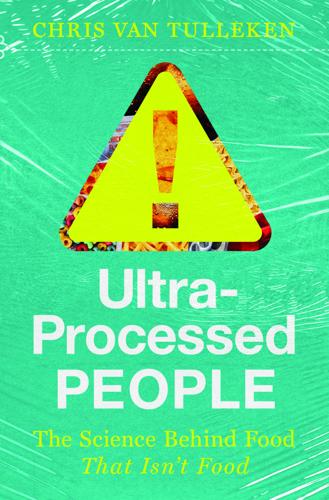
Ultra-Processed People: The Science Behind Food That Isn't Food
by
Chris van Tulleken
Published 26 Jun 2023
The study was supported by a grant from the Alliance for Potato Research and Education (APRE). This is from the conclusion: ‘Results do not support a causal relationship between increased French-fried potato consumption and the negative health outcomes studied.’ † Those experiments ultimately gave rise to a number of Silicon Valley start-ups that tried – unsuccessfully – to extend the lives of ageing billionaires by giving them the blood of young people.11, 12 ‡ Before you even start to eat, your stomach secretes a hormone called ghrelin – the ‘hunger hormone’ – which flows in the blood to a part of the brain called the hypothalamus and tells it to start eating.

The Relentless Revolution: A History of Capitalism
by
Joyce Appleby
Published 22 Dec 2009
Ingenuous people had found a new way to exploit the electromagnetism of our planet. This technological newcomer “creatively destroyed” the vacuum tube that had started off wireless technology. The relentless revolution continued without the benefit of a forward-looking name for the dawning era, though the United States acquired a new place-name, Silicon Valley, where things called start-ups and initial public offerings were creating a new crop of millionaires. CAPITALISM IN NEW SETTINGS IN THE EARLY 1970S the unexpected rise in oil prices forced people to give some attention to other negative indicators in the industrial world: the slowing growth rate, intractable inflation, rising unemployment, the plunging dollar, and fluctuating exchange rates.
…
An autonomous nation, Iceland, verged on bankruptcy, leaving institutions that had invested in high-interest-yielding Icelandic bonds the poorer. Bankers, whose caution in the nineteenth-century world of J. P. Morgan had mediated market development, became as risk happy as promoters of the latest Silicon Valley start-up. Enticed by the possibility of greatly increasing earnings, bankers began competing with one another on the basis of service fees. Unlike their predecessors who financed railroad construction in the nineteenth century, they invested in the securities they created for their customers, throwing caution to the wind in order to make loans with fewer assets as ballast.

Valley of Genius: The Uncensored History of Silicon Valley (As Told by the Hackers, Founders, and Freaks Who Made It Boom)
by
Adam Fisher
Published 9 Jul 2018
We needed another order of magnitude. We needed another five years. We couldn’t do a movie for five years so what were we going to do for five years? We had a prototype called a Pixar Image Computer. Let’s make a business out of that! Ed Catmull: I thought, Okay, there is some basis for doing a Silicon Valley sort of start-up. Alvy Ray Smith: Now this is two complete nerds saying this, we had no idea how to do a hardware manufacturing company. So we call up Jim Clark and he says, “It’s easy, but it will take you about a year to get it.” Jim Clark: How do you tell a good friend: “Hey, you have got a shitty idea!”
…
Clive Thompson is a journalist specializing in science and technology. He is the author of Smarter Than You Think: How Technology Is Changing Our Minds for the Better. His next book will explore the distinctive thought processes of computer programmers. Aleks Totić was on the student team that built Mosaic at the University of Illinois. Then a Silicon Valley start-up called Netscape recruited him. Lars Ulrich is the cofounder of the American heavy metal band Metallica, for which he plays the drums. They were one of the biggest rock bands in the world when they discovered that an unfinished song they had been working on was being circulated on Napster.
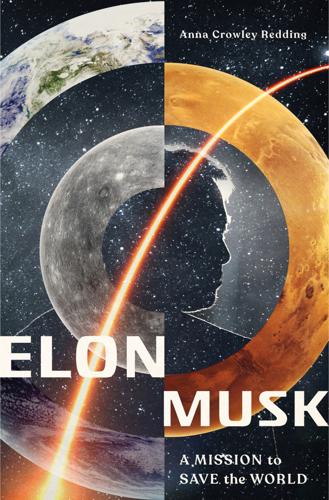
Elon Musk: A Mission to Save the World
by
Anna Crowley Redding
Published 1 Jul 2019
“The best thing I could find were plastic monkeys with coconuts—those ‘hear no evil, see no evil’ monkeys.”116 As the global economic crisis continued to unfold, both General Motors and Chrysler filed for bankruptcy in 2009 and the U.S. government spent nearly $80 billion to bail out the auto industry. But Tesla, the Silicon Valley automobile start-up that should never have gotten off the ground in the first place, survived the Great Recession. Car, Drive Me Home! Today, all new Teslas come with autopilot hardware. As the company puts it, “All Tesla vehicles produced in our factory, including Model 3, have the hardware needed for full self-driving capability at a safety level substantially greater than that of a human driver.”117 Tesla customers can buy, or their model may come way with, various levels of autopilot software.
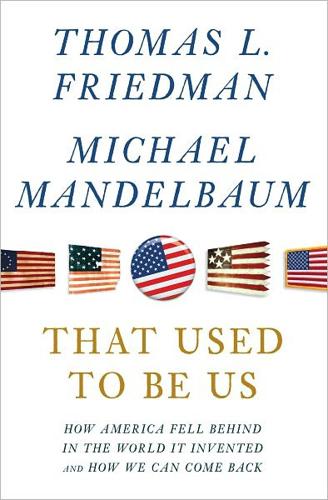
That Used to Be Us
by
Thomas L. Friedman
and
Michael Mandelbaum
Published 1 Sep 2011
Although he won’t cite exact numbers, Jassy claims “hundreds of thousands of customers” already use the service, and analysts at UBS estimate Amazon will do about $750 million of business on AWS this year. In fact, a whole generation of Internet companies couldn’t exist without it. Netflix’s movie-streaming empire runs on it; Zynga, the social gaming company, uses it to handle sudden spikes in usage. AWS has become such a fact of life for Silicon Valley startups that venture capitalists actually hand out Amazon gift cards to entrepreneurs. Keeping up with the demand requires frantic expansion: Each day, Jassy’s operation adds enough computing muscle to power one whole Amazon.com circa 2000, when it was a $2.8 billion business. The physical expansion of all that data takes place in Amazon’s huge, specially designed buildings—the biggest can reach 700,000 square feet, or the equivalent of roughly 16 football fields.

The Facebook Effect
by
David Kirkpatrick
Published 19 Nov 2010
Cohler had a degree in musicology with honors from Yale, so he fit in nicely with Thefacebook’s Harvard crowd. And he even had international experience, having lived in China while working for an Internet company there. But he was pretty happy at LinkedIn, which at the time was seen as one of the hottest and most promising of the Silicon Valley start-ups. Cohler talked to a bunch of friends trying to figure out if he should really consider Parker’s offer. He was almost twenty-eight—no longer a college kid—and had even spent time at the venerable McKinsey consulting firm. He wasn’t one to make rash moves. Cohler called his brother, an undergraduate at Princeton, to ask if he knew about this thing Thefacebook.
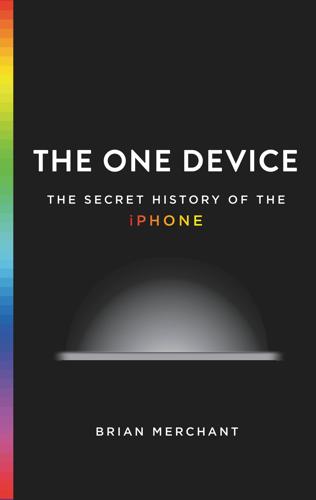
The One Device: The Secret History of the iPhone
by
Brian Merchant
Published 19 Jun 2017
, the Cloud request is canceled. If Siri needs to pull data from the web (“Is it going to rain tomorrow?”), to the Cloud it goes, and the request is analyzed by another array of models and tools. Before Siri was a core functionality of the iPhone, it was an app on the App Store launched by a well-funded Silicon Valley start-up. Before that, it was a research project at Stanford backed by the Defense Department with the aim of creating an artificially intelligent assistant. Before that, it was an idea that had bounced around the tech industry, pop culture, and the halls of academia for decades; Apple itself had an early concept of a voice-interfacing AI in the 1980s.

Destined for War: America, China, and Thucydides's Trap
by
Graham Allison
Published 29 May 2017
To bolster its case, the White House publishes two reports that the press calls economic bombshells. The first, from the Director of National Intelligence, details China’s strategy for dominating the semiconductor industry by a combination of purchases of American and international companies, licensing their technologies, investing in Silicon Valley start-ups, and establishing market relationships with key buyers. In each of these areas, China has found ways around the Committee on Foreign Investment in the United States, a secret multiagency panel that seeks to protect US national security from foreign economic intervention. The second is a Treasury Department report on China’s massive cybereconomic theft.
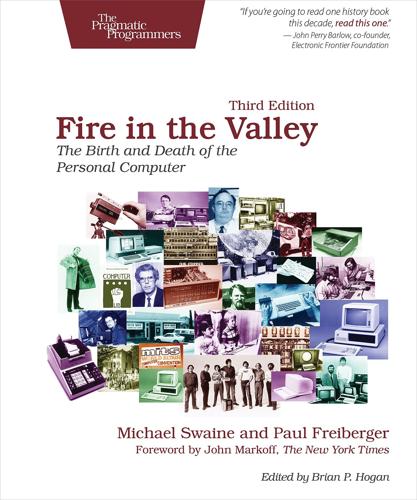
Fire in the Valley: The Birth and Death of the Personal Computer
by
Michael Swaine
and
Paul Freiberger
Published 19 Oct 2014
But while Commodore, TI, and other well-financed companies were getting into the game, in the early 1980s the toughest competition Tandy faced came from a Silicon Valley firm financed by the sale of two calculators and a Volkswagen bus. Copyright © 2014, The Pragmatic Bookshelf. Chapter 7 Apple I try to get people to see what I see. When you run a company, you have to get people to buy into your dreams. Steve Jobs It was the prototypical Silicon Valley start-up story: two smart boys with a driving passion and an angel investor, all three of them willing to risk it all for a chance at the gold ring. Conceived at a Homebrew meeting and launched on April Fool’s Day, Apple would grow to be the most valuable company in the world. But it started with two bored teenagers playing with scavenged electronics.

Science Fictions: How Fraud, Bias, Negligence, and Hype Undermine the Search for Truth
by
Stuart Ritchie
Published 20 Jul 2020
But the investors, who wanted to get in at the start of what might’ve been the next Facebook or Uber in terms of its transformative technological effect, managed to miss or ignore the obvious flaws. The story is told by the investigative journalist John Carreyrou in his unputdownable Bad Blood, John Carreyrou, Bad Blood: Secrets and Lies in a Silicon Valley Startup (New York: Alfred A. Knopf, 2018). 146. Another similar story can be found in: Alison McCook, ‘Two Researchers Challenged a Scientific Study About Violent Video Games – and Took a Hit for Being Right’, Vice, 25 July 2018; https://www.vice.com/en_us/article/8xb89b/two-researchers-challenged-a-scientific-study-about-violent-video-games-and-took-a-hit-for-being-right 147.

Super Pumped: The Battle for Uber
by
Mike Isaac
Published 2 Sep 2019
There, Michael cut his teeth in the dealmaking world, watching his co-workers buy and sell companies every day. They fought like gladiators, recapitalizing firms, flipping them, stripping them for parts. But it was the burgeoning technology group that whet his appetite for eventually landing inside a Silicon Valley startup. After Goldman, Michael began his nine-year run at Tellme, and then went to Washington to take a job as a White House fellow in the Obama administration, working as a special assistant to the secretary of defense. That rounded out his skill set; a deals guy with Washington contacts could go far in the private sector, where Michael felt most at home.

Surveillance Valley: The Rise of the Military-Digital Complex
by
Yasha Levine
Published 6 Feb 2018
See telecommunications technology Community Online Intelligence System (COINS), 91–93 computer technology artillery trajectory calculations, 39–40 Command and Control Research program, 47–49 computer and networking technology development for counterinsurgency, 51–59 cryptography research, 38 cybernetics, 42–51 ENIAC computer, 39–41, 117 SAGE, 41–42 ComputerWorld magazine, 134 Congress CIA investigation, 233 Consolidated Appropriations Act, 254 domestic surveillance hearings, 84–87 privatization of the Internet, 126–127 Tunney’s congressional investigation of ARPA, 90–93 Wired magazine and Internet infrastructure, 135 Consolidated Appropriations Act (2014), 254 containment policy, 231 CONUS Intel (Continental United States Intelligence), 76–80, 84–85, 87–88 Cooke, David, 91–93 corporate sector backing Internet Freedom policies, 234–236 Bay Area boom, 102–103 collaborative computer technology for civilian use, 57–59 database construction, 81–82 expansion of data mining, 169–173 interactive computing, 51 military involvement, 5–6 NSA PRISM program, 192–193 personal computers and Internet access, 124–126 predictive policing, 165–168 privatization of the Internet, 121–124, 126–127 profiting from weaponization of the Internet, 267–269 Silicon Valley start-ups, 145 Stanford Industrial Park, 145 Stewart Brand’s realignment with, 113–114 Tor Project support, 227 use of World War II camp labor, 272–274 See also Google Correa, Rafael, 221 counterculture, 107–109, 112–113 counterinsurgency Cambridge Project, 68–69 computer and networking technology development for, 51–59 congressional hearings on domestic surveillance, 86–87 CONUS Intel targeting domestic activists, 75–80 Godel’s anti-communist objectives, 22 Ithiel de Sola Pool’s research, 65–66 Nicaragua, 129–130 origins of networking technology, 7 predictive models and profiling individuals, 160–161 Project Agile in Vietnam, 24–25 Project Camelot, 67 psychological warfare, 27–33 spying on American protesters, 75–80 strategic elements, policy, and doctrine, 27–31 student protests targeting ARPANET, 63–64 technology during the Vietnam War, 13–14 US history of, 21 US psychological warfare, 20 See also domestic surveillance and counterinsurgency coups d’état, 67–68, 221 crime celebrating Tor’s role in, 209–210 predictive policing, 165–168 Silk Road, 201–205, 260–262 CrowdStrike, 181JigSaw181 The Crypto Anarchist Manifesto (May), 185(quote) crypto culture, 209–211.
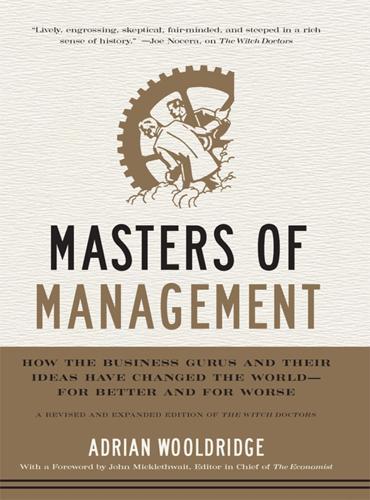
Masters of Management: How the Business Gurus and Their Ideas Have Changed the World—for Better and for Worse
by
Adrian Wooldridge
Published 29 Nov 2011
The Massachusetts Institute of Technology (MIT) has produced so many successful spin-offs that, if they were turned into a nation, they would have the 28th-largest GDP in the world. The third is a historically open immigration policy. Vivek Wadhwa, of the University of California, Berkeley, notes that 52 percent of Silicon Valley startups were founded by immigrants, up from 25 percent a few years ago, with Indian immigrants founding 26 percent of them. In all, one-quarter of America’s science and technology startups, generating $52 billion and employing 450,000 people, numbered somebody born abroad as either their CEO or their chief technology officer.
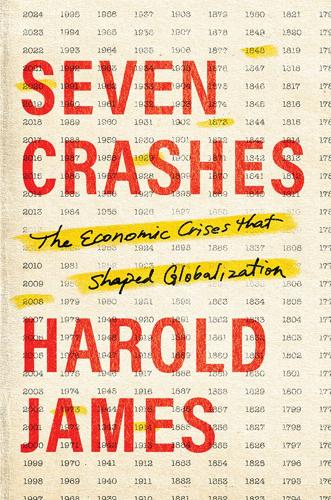
Seven Crashes: The Economic Crises That Shaped Globalization
by
Harold James
Published 15 Jan 2023
Summers, who as a committed deregulator drove policies that set the stage for the Great Recession, is the right person for a key regulatory position.”103 And in addition, there was Summers’s large-scale engagement in the private financial sector. He had worked for Citigroup and the hedge fund D. E. Shaw, and was on the board of two Silicon Valley startups that were claimed to be encouraging risky borrowing from online investors.104 In the aftermath of the Global Financial Crisis, and with a recovery that was more sluggish than from any prior postwar recession, Summers set out a startling diagnosis of how the world had changed. It self-consciously revived the approach and the terminology of Keynes and Keynesians from the 1930s, in particular the American Keynesian Alvin Hansen, who had coined the term “secular stagnation.”105 Hansen saw the phenomenon in the late 1930s as “sick recoveries which die in their infancy and depressions which feed on themselves and leave a hard and seemingly immovable core of unemployment.”106 Population growth was declining and would in the absence of technical progress produce a large fall in investment and hence growth.

Creative Intelligence: Harnessing the Power to Create, Connect, and Inspire
by
Bruce Nussbaum
Published 5 Mar 2013
But compare Singapore with New York in 2013 and the differences are vast. Over the past fifteen years in New York City, vast networks of entrepreneurs, incubators, venture capitalists, universities, media companies, and artists have arisen to generate a new wave of creativity and entrepreneurialism. For the first time, New York rivals Silicon Valley in start-ups, concentrating more on content and culture than technology. Dial the clock back to the seventies, and you’d have witnessed a different kind of creative congestion—an art scene was burgeoning in SoHo; rappers, break dancers, and beat boxers from all the boroughs were creating a new kind of music and culture—but it wouldn’t necessarily have been the ideal place for someone looking to start up a new media company that required a thriving network of graphic designers and social media experts.
…
Schumpeter, the father of “creative destruction,” saw a version of capitalism in which entrepreneurs were the central, disruptive energy sustaining economic growth. The process of creative destruction undermined established monopolies and toppled existing big businesses that made profits from older regulatory, organizational, technological, and ideological regimes. We see Schumpeter’s creative destruction thriving in Silicon Valley and among start-ups in general. Apple is pushing aside RIM and Nokia, Facebook is pressuring Google to move into social, online shopping is mauling the malls. But the brutality of the free market isn’t in operation in many industries where large corporations hold sway by virtue of their powerful connections, not their innovations.

The Code: Silicon Valley and the Remaking of America
by
Margaret O'Mara
Published 8 Jul 2019
Going after consumer markets for the very first time, the company launched television ads that fall. “Even though Hewlett-Packard’s technology has produced a number of firsts,” said one, “some of you don’t even know who we are. Maybe now you will.” With such humble messaging, it seemed that Silicon Valley’s original start-up hadn’t picked up the new generation’s storytelling talents.23 Companies that had never been in the computer business got in the game. The U.S. Government had just forced AT&T to break up its telecommunications monopoly, but the phone company still had more than $34 billion of assets to play with.
…
But such qualms quickly got lost amid the enthusiastic din of a market that was going wild for all things Internet.29 Soon it was hard to pass a newsstand without seeing magazine covers emblazoned with the smiling mugs of the newest generation of high-tech cowboys and cowgirls. Freshly-minted MBAs opted for jobs at tiny Silicon Valley dot-coms instead of the Fortune 500, willing to make the risky bet that stock options would be a path to fame and fortune. The Wall Street IPO became a rite of passage for nearly any Silicon Valley start-up, no matter how new or untested. “Why do they do IPOs?” parried one broker. “Why do rock stars marry models? In part, it’s because they can.” Wall Street was clamoring for all things Internet, Meeker observed. “These companies would be silly not to take access to capital.”30 CREATIVE ACCOUNTING The storming of Wall Street by new, mostly profitless dot-coms wasn’t embraced by everyone.

Startupland: How Three Guys Risked Everything to Turn an Idea Into a Global Business
by
Mikkel Svane
and
Carlye Adler
Published 13 Nov 2014
That was different from the way things were at the time: a customer could send an email with an inquiry but could not expect to hear back. 52 Page 52 Svane c02.tex V3 - 10/24/2014 8:23 P.M. The Salad Days We helped make companies all over the world more accessible and responsive. Soon the service made its way to Silicon Valley—the startup and software epicenter of the world. Scribd started using it. Twitter followed. At the time, Twitter had fewer than twenty employees. It was almost like a little family, which signed on because Crystal, an early Twitter employee, believed we had a shared design and brand philosophy and we thought similarly about how to build an application.

Computer: A History of the Information Machine
by
Martin Campbell-Kelly
and
Nathan Ensmenger
Published 29 Jul 2013
Noyce and Moore recruited away from Fairchild the best experts in planar process manufacturing, and within two years of its incorporation in the summer of 1968, Intel (a combination of the words integrated electronics) was profitably producing integrated-circuit memory chips for the computer industry. Within five years it was a $66 million company with more than 2,500 employees. In stark contrast to what they saw as slow-moving, overly bureaucratic East Coast electronics and computer firms, the new breed of Silicon Valley start-ups such as Intel prided themselves on being fast, flexible, and meritocratic. They kept their organizational structure “flat” by eliminating middle managers and encouraging (and empowering) engineers to be entrepreneurial. There were no dress codes, no hierarchies or protocols. At Intel, every employee had access to everyone, even top executives like Noyce and Moore.

The Content Trap: A Strategist's Guide to Digital Change
by
Bharat Anand
Published 17 Oct 2016
“Diary of a Wimpy Kid 2: Rodrick Rules Movie Clip ‘Mom Bucks’ Official (HD),’ ” video file, YouTube, posted by Clevver Movies, March 17, 2011. When it first introduced Rajiv Lal, “Harrah’s Entertainment, Inc.”, HBS No. 502-011 (Boston: Harvard Business Publishing, rev. June 14, 2004). nonredeemable tokens Alexis C. Madrigal, “Chuck E. Cheese’s, Silicon Valley Startup: The Origins of the Best Pizza Chain Ever,” Atlantic , July 17, 2013; David Wolman, The End of Money (Cambridge, MA: Da Capo Press, 2012). China’s Central Bank David Barboza, “In China, New Limits on Virtual Currency,” New York Times, June 30, 2009; Geoffrey Fowler and Juying Qin, “QQ: China’s New Coin of the Realm?
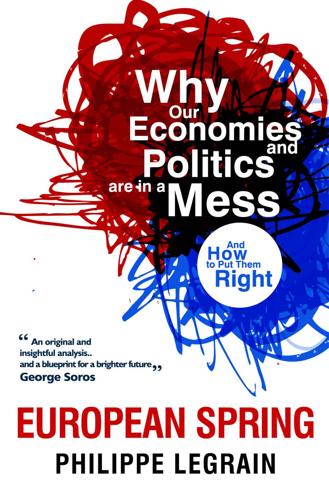
European Spring: Why Our Economies and Politics Are in a Mess - and How to Put Them Right
by
Philippe Legrain
Published 22 Apr 2014
Silicon Valley sparks off a diverse mix of dynamic people from around the world. More than half of start-ups founded there between 1995 and 2005 had a migrant as a chief executive or lead technologist.654 While a tightening of visa rules and the rise of China and India have reduced immigrants’ contribution somewhat, they still co-founded 43.9 per cent of Silicon Valley start-ups between 2006 and 2012.655 Companies co-founded by migrants – many of whom arrived as children, not through some pseudo-scientific government selection process – include stand-out successes such as Google, Yahoo, eBay, PayPal, YouTube, Hotmail, Sun Microsystems, Intel and WhatsApp. Steve Jobs, the co-founder of Apple, had a mixed heritage too: his biological father was Syrian-born, his biological mother Swiss American and his adoptive one Armenian American.

All the Money in the World
by
Peter W. Bernstein
Published 17 Dec 2008
In the semiconductor industry, a company needed to constantly innovate—or perish. Not only did high-tech visionaries such as Moore and Noyce invent technology that changed the world, they also played a role in reshaping the way companies were nurtured and financed. In the 1960s Wall Street bankers were not jumping on planes to visit Silicon Valley start-ups. But through contacts, the founders of Fairchild made their way to New York investment banker Arthur Rock (whose first appearance on the Forbes 400 was in 1983, with a net worth of $160 million) and convinced him to take a look at what they were doing. With his first investment, Rock hit pay dirt.

Connectography: Mapping the Future of Global Civilization
by
Parag Khanna
Published 18 Apr 2016
Farsighted countries create incentives for migrants to contribute in services what they cannot in wealth such as working in sanitation and infrastructure upkeep, while higher-skilled migrants work in health care and foreigner integration programs.*3 The blending will continue; the only question is whether cultural assimilation will succeed. For close to three centuries, America has been the most attractive destination for talented migrants and the greatest assimilation society. Immigrants have founded almost half of Silicon Valley start-ups, and immigrant children have been high achievers in the classroom and now fill the professional class. They are a reminder that an America of only Americans would be nothing like the America with non-Americans who have become Americans. But it is Australia that now leads the Organisation for Economic Co-operation and Development (OECD) by percentage of foreign-born residents at 27 percent, followed by Canada at 20 percent.

Capitalism in America: A History
by
Adrian Wooldridge
and
Alan Greenspan
Published 15 Oct 2018
Fully 18 percent of the Fortune 500 list as of 2010 were founded by immigrants (among them AT&T, DuPont, eBay, Google, Kraft, Heinz, and Procter & Gamble). Include the children of immigrants and the figure is 40 percent. In 2012, immigrants represented about 13 percent of the U.S. population but founded 52 percent of Silicon Valley start-ups, contributed to more than 25 percent of global patents, and make up 25 percent of science and engineering workers with bachelor’s degrees and 47 percent of those with PhDs. Yet the future supply of entrepreneurs and professionals is now being choked off by the country’s increasingly hostile attitude to immigration and growing opportunities elsewhere.

The Rise and Fall of the Neoliberal Order: America and the World in the Free Market Era
by
Gary Gerstle
Published 14 Oct 2022
Alan Greenspan, the neoliberal guru who had steered the elder Bush and Clinton administrations in financial matters, was still directing the Federal Reserve. Neither he nor the younger Bush was much troubled by a 2001 bursting of the speculative stock bubble that had brought down dozens of Silicon Valley startups, nor by the ensuing sharp falls in market indexes, especially those like NASDAQ that were heavily weighted toward high-tech stocks. The Greenspan-Bush confidence in the ability of markets to correct themselves seemed to be vindicated by the stock market’s recovery in 2003–2004 and a second run of sensational information technology (IT) startups that fueled another steep climb in stock values.
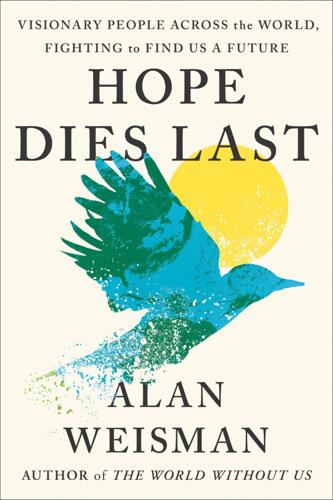
Hope Dies Last: Visionary People Across the World, Fighting to Find Us a Future
by
Alan Weisman
Published 21 Apr 2025
“Same,” said Lowa. “And then?” “Start with a low government job, then become a councilman, then a senator. Then I’ll try running for president.” “Yes!” During COVID, Eric and Gregg had plotted an idea for Ebeye. Periodically, Eric lectured at Singularity University, a non-degree-awarding Silicon Valley startup incubator. His audience was budding entrepreneurs with schemes to disrupt the world positively while enriching themselves. Pulling no punches, Eric would outline the stark political and climate realities of the world in which they hoped to make billions, then challenge them to turn existential problems into opportunities for making both money and a difference.
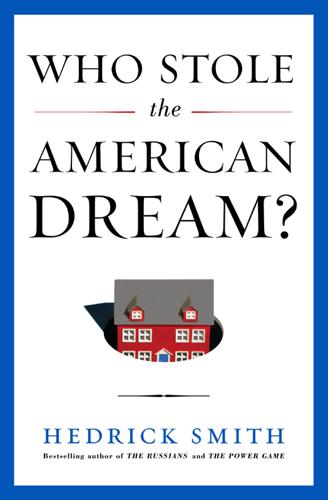
Who Stole the American Dream?
by
Hedrick Smith
Published 10 Sep 2012
And as the housing bubble rose and went bust, Angelo Mozilo, CEO of subprime lender Countrywide, pocketed $410 million in salary, bonuses, and stock option grants and then got another $112 million in his severance package when his company went bust. Options Cheating The options game had an even more sinister flaw. At several hundred major corporations, including Apple, UnitedHealth Group, and Silicon Valley start-ups such as Symbol Technologies and Mercury Interactive, CEOs cheated their shareholders by manipulating their stock options. When their company’s stock did not go up and deliver them easy profits, these CEOs persuaded their boards of directors to rig the game. The boards would backdate the CEO’s stock options to a lower strike price, or buying price, than originally granted, so that even if the company’s stock had gone down, the CEO and senior executives would still get a handsome payoff while shareholders lost money.
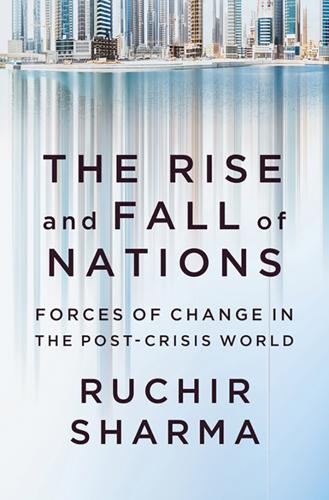
The Rise and Fall of Nations: Forces of Change in the Post-Crisis World
by
Ruchir Sharma
Published 5 Jun 2016
The scale of this boom is striking: In 2014, one-third of the investment made by large U.S. companies went into energy, hitting a share very similar to that reached by corporate investment in technology, media, and telecommunications before that bubble burst in 2000. The money that poured into Silicon Valley start-ups in the late 1990s was also a good investment binge, since it left behind productive companies like Google, but its unraveling led in the short term to the 2001 recession. Now, as oil prices collapse, U.S. energy investments are plummeting, drilling rigs have been silenced from Texas to North Dakota, shale jobs are drying up, and shale boomtowns are turning into ghost towns.

Likewar: The Weaponization of Social Media
by
Peter Warren Singer
and
Emerson T. Brooking
Published 15 Mar 2018
The IDF’s recruiting page invited young people to “join the international social media desk”; its web ads showed a handsome Israeli man in an olive-drab uniform, smiling as he gazed at an iMac. The form explained how young Israeli citizens could fulfill their two-year draft requirement by serving as content creators, graphic artists, and photographers. There was even a catchy tagline that seemed torn from a Silicon Valley startup’s recruiting manual: “Create. Engage. Influence.” But the IDF’s official military efforts constituted only one part of the new apparatus of online battle. “Hasbara war rooms” were organized at Israeli universities to build out online armies. Students could hang out and socialize in these designated computer labs as they fought for their nation on social media.

Class Warfare: Inside the Fight to Fix America's Schools
by
Steven Brill
Published 15 Aug 2011
A Shriek on Park Avenue January 16, 2010, an apartment on Park Avenue in New York City The person in charge of preparing New York State’s Race to the Top proposal was John King, the senior deputy commissioner of the state Education Department. King is not the kind of person one would expect to find in a high position in New York’s education department. It is a notoriously byzantine bureaucracy that made the place Joel Klein inherited at 110 Livingston Street look like a Silicon Valley start-up. Schooled in Brooklyn (his father was the first African-American principal of a Brooklyn school) and a graduate of Harvard College and Yale Law School, King was a founder of the Roxbury Preparatory Charter School in Massachusetts. He then became managing director of the highly regarded Uncommon Schools charter network, and was holding that position when, amid lots of competition, he impressed the crowd as one of the most compelling speakers at the DFER forum at the 2008 Democratic convention in Denver.
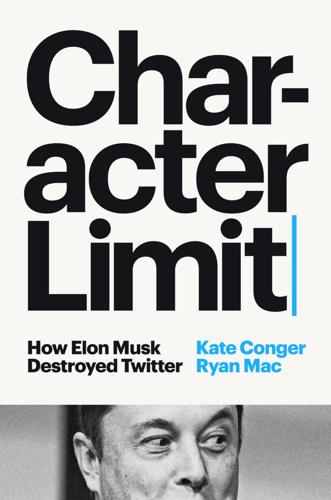
Character Limit: How Elon Musk Destroyed Twitter
by
Kate Conger
and
Ryan Mac
Published 17 Sep 2024
Within days, he invited a CEO candidate to Twitter’s offices for an interview—it was Emil Michael, an aggressive operations executive who had been Travis Kalanick’s right hand at Uber before he was fired in 2017. Since his defenestration, Michael had dabbled in investing, but he was open to returning to the cutthroat world of Silicon Valley start-ups. The meeting did not result in a job offer. * * * >>> Sheen Austin, the Tesla infrastructure leader, knew people who said no to Musk tended not to last for very long in his orbit. In fact, Austin knew he’d signed a death warrant by remaining at Twitter. He had seen others before him, like Nelson Abramson, the Twitter vice president who led infrastructure, lose their jobs for tiny transgressions.
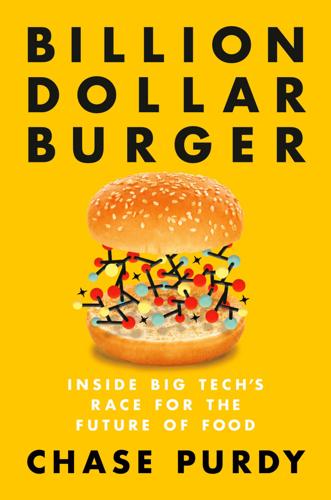
Billion Dollar Burger: Inside Big Tech's Race for the Future of Food
by
Chase Purdy
Published 15 Jun 2020
JUST had at least two products—duck chorizo and foie gras—ready for market at the end of 2017, and Memphis Meats was already hosting small-scale tastings of beef meatballs, but because the USDA and the FDA had not yet ironed out a regulatory pathway for those products to enter the marketplace, they were delayed. To work through those delays, Silicon Valley’s start-ups began hiring outside lobbyists to help them understand the capital’s byzantine policy apparatus. JUST turned to Stuart Pape, who works for a DC lobbying firm called Polsinelli, in which he represents clients who need to navigate regulations typically imposed by the FDA and USDA. Prior to Polsinelli, Pape had served in a few positions in the Office of the Chief of Counsel at the FDA, including as associate chief counsel for food.

Designing Your Life: How to Build a Well-Lived, Joyful Life
by
Bill Burnett
and
Dave Evans
Published 12 Sep 2016
Martha is a technology executive who was looking to try something more meaningful for the latter half of her life. She came up with three very different plans for her future, each a little more risky and innovative, but all involving some kind of community building. Her three plans were: doing her first Silicon Valley–style start-up, becoming the CEO of a nonprofit working with at-risk kids, and opening a fun and friendly neighborhood bar in the Haight-Ashbury district of San Francisco, where she lived. Note that each example has a six-word headline describing the plan, a four-gauge dashboard (we really like dashboards), and the three questions that this particular alternative plan is asking.

Aerotropolis
by
John D. Kasarda
and
Greg Lindsay
Published 2 Jan 2009
ASUSTeK split itself in two, the better to make and sell cell phones, Kindle killers, and video games under its own name—now simply ASUS—while honoring its old contracts. Foxconn intends to open ten thousand stores across China, where its products will share shelf space with Apple’s and other customers’. It’s even investing millions of dollars in Silicon Valley start-ups in search of an edge against its own clients. “What ASUSTeK proved is that the companies with real leverage are the ones that actually make desirable products,” Clive Thompson argued in Wired. “The Taiwanese laptop builders possess the atom-hacking smarts that once defined America but which have atrophied here along with our industrial base.”
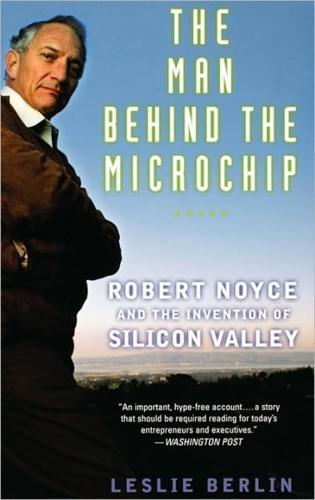
The Man Behind the Microchip: Robert Noyce and the Invention of Silicon Valley
by
Leslie Berlin
Published 9 Jun 2005
If Camera and Instrument waited more than three years but bought within seven years, the company would have to pay $5 million for Fairchild Semiconductor. It was, as one founder put it, “a very good deal for both sides.”22 Arthur Rock’s and Bud Coyle’s work in the establishment of Fairchild Semiconductor in many ways presaged the role of venture capitalists in future Silicon Valley startup operations, even though the term “venture capital” did not yet exist. The bankers helped the young technologists develop a business strategy, determine their funding requirements, and find investors. In return, Coyle’s and Rock’s firm took both a financial stake in the new company and a board seat from which they could influence the outcome of their investment.
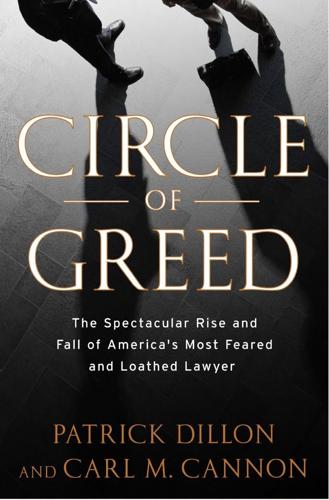
Circle of Greed: The Spectacular Rise and Fall of the Lawyer Who Brought Corporate America to Its Knees
by
Patrick Dillon
and
Carl M. Cannon
Published 2 Mar 2010
The following day the FHLBB seized Lincoln Savings and Loan. Leah Kane wondered if she needed a lawyer. She didn’t know it, but Bill Lerach was already representing her. HIGH ATOP SAN DIEGO, the expanding offices of Milberg, Weiss, Specthrie, Bershad & Lerach palpitated in a furious frenzy, emulating the atmosphere at so many Silicon Valley start-ups that Lerach and his colleagues would earn their fortunes suing. Printers whirred in continuous motion, telephones and teleconference speakers chorused voices, while lawyers and their assistants hurried through the hallways carrying documents from one office to another. The firm was now filing an average of twelve lawsuits a month.

The Price of Time: The Real Story of Interest
by
Edward Chancellor
Published 15 Aug 2022
, Forbes, 16 January 2016. 34. James Grant, ‘Standing on a Box’, Grant’s Interest Rate Observer, 37 (7), 5 April 2019. 35. Dan Lyons, Disrupted: My Misadventure in the Start-Up Bubble (New York, 2017), p. 24. 36. Details of the Theranos story from John Carreyrou, Bad Blood: Secrets and Lies in a Silicon Valley Startup (London, 2019). 37. Hubert Horan, ‘Uber’s Path of Destruction’, American Affairs, 3 (2), Summer 2019. Uber was not the only loss-making ride-hailing app. Competitor Lyft came to the market in March 2019 with the largest loss, at $911 million, ever registered by an American start-up in the 12 months prior to its IPO.

Empire of AI: Dreams and Nightmares in Sam Altman's OpenAI
by
Karen Hao
Published 19 May 2025
I Chapter 1 Divine Right Everyone else had arrived, but Elon Musk was late as usual. It was the summer of 2015, and a group of men had gathered for a private dinner at Sam Altman’s invitation to discuss the future of AI and humanity. Musk had met Altman, fourteen years his junior, a while earlier and had formed a good impression. President of the famed Silicon Valley startup accelerator Y Combinator, Altman’s reputation preceded him. After starting his first company at age nineteen, he had rapidly established himself within Silicon Valley as a brilliant strategist and dealmaker with grand ambitions, even for the land of big-thinking founders. Musk found him to be smart, driven, and, most important, someone who espoused like-minded views on the need to carefully develop and govern artificial intelligence.

The Innovators: How a Group of Inventors, Hackers, Geniuses and Geeks Created the Digital Revolution
by
Walter Isaacson
Published 6 Oct 2014
The economics were improved as well; the cost of each game was held to just over $300, but the sales price was raised to $1,200. The atmosphere was what you might expect from the fun-loving Bushnell and Alcorn, both still in their twenties, and it took to the next level the casual style of Silicon Valley startups. Every Friday there would be a beer bash and pot-smoking party, sometimes capped by skinny-dipping, especially if that week’s numbers had been made. “We found out our employees would respond to having a party for hitting quotas as much as having a bonus,” Bushnell said. Bushnell bought himself a nice house in the hills of nearby Los Gatos, where he sometimes held board meetings or staff parties in his hot tub.

The Age of Surveillance Capitalism
by
Shoshana Zuboff
Published 15 Jan 2019
Other research findings point to the consequences of the impatient money that flooded the valley as inflationary hype drew speculators and ratcheted up the volatility of venture funding.28 Studies of pre-bubble investment patterns showed a “big-score” mentality in which bad results tended to stimulate increased investing as funders chased the belief that some young company would suddenly discover the elusive business model destined to turn all their bets into rivers of gold.29 Startup mortality rates in Silicon Valley outstripped those for other venture capital centers such as Boston and Washington, DC, with impatient money producing a few big wins and many losses.30 Impatient money is also reflected in the size of Silicon Valley startups, which during this period were significantly smaller than in other regions, employing an average of 68 employees as compared to an average of 112 in the rest of the country.31 This reflects an interest in quick returns without spending much time on growing a business or deepening its talent base, let alone developing the institutional capabilities that Joseph Schumpeter would have advised.
…
See also Udayan Gupta, ed., Done Deals: Venture Capitalists Tell Their Stories (Boston: Harvard Business School Press, 2000), 170–71, 190. Junfu Zhang, “Access to Venture Capital and the Performance of Venture-Backed Startups in Silicon Valley,” Economic Development Quarterly 21, no. 2 (2007): 124–47. 30. Among the first generation of Silicon Valley venture-backed internet startups, 12.5 percent had completed IPOs by the end of 2001, compared to 7.3 percent in the rest of the country, while only 4.2 percent of valley startups attained profitability, a significantly lower proportion than in the rest of the country. 31. Zhang, 124–47. 32. Patricia Leigh Brown, “Teaching Johnny Values Where Money Is King,” New York Times, March 10, 2000, http://www.nytimes.com/2000/03/10/us/teaching-johnny-values-where-money-is-king.html. 33.

Gambling Man
by
Lionel Barber
Published 3 Oct 2024
The founders hesitated. Maybe $40m, said Yang, aware that this figure was way above the $3m value Sequoia had calculated a few months ago. Masa never skipped a beat. ‘It’s a deal,’ he said, beaming. Much to Moritz’s chagrin, Masa had gatecrashed the party and secured a minority stake in one of Silicon Valley’s hottest start-ups. Oh shit, Yang said to himself, I should have come in higher.10 Three months later, Masa invited Filo, Yang and Moritz to a second meeting. The venue was the Pebble Beach Pro-Am tournament, a gala event set up by Bing Crosby where professional golfers square off against amateurs on one of America’s most picturesque courses to raise money for charity.
…
/Softbank (2005), 174–7; Goldman Sachs exits, 171; managing of SoftBank’s stake in, 306, 307, 308, 309, 322; Masa’s deal (1999), 142–4, 147, 236, 262, 278; Masa’s investment in, 4, 144, 147, 169–71, 174–7, 262, 278, 296, 306–7, 314; Masa’s long-term faith in, 170–71, 176, 315; psychological impact on Masa, 147, 278; SoftBank as overly dependent on, 177, 321, 322; Taobao launched (May 2003), 169–71 Alta Vista, 101 Altman, Sam, 327, 330, 335 Amazon, 101, 132, 307, 312, 329 Ambani, Anil, 182 America Online (AOL), 2, 102 Anderson, James, 253 Anderson Mori & Tomotsune (law firm), 311, 314 Andreessen Horowitz, 282, 283 Ansett Airlines, 113 Apax (private equity firm), 241 Apple Computer, 35, 48, 56, 89, 178, 190, 307, 312; Apple II, 72, 73; and ARM chips, 244, 245, 247, 330; Foxconn manufactures iPhone, 268, 286; iPad, 192; iPhone, 4, 190–91, 192–3, 227–8, 268, 286; Jobs’ return to, 102–3, 190; Think Different advertising campaign (1997), 189; and Vision Fund, 266, 289 Aramco oil company, 260, 264 Argentina, 295 Ariburnu, Dalinc, 259 Arimori, Takashi, Net Bubble (2000), 163 ARM Holdings, 242, 244–55, 259, 265–6, 323, 329–31 Arora, Nikesh, 232, 233–5, 236–43, 259, 287, 288–9 artificial intelligence (AI): AGI (artificial generative intelligence), 328–32; and ARM Holdings, 265, 323, 329–31; ‘first wave’ of AI-related companies, 328–9; Masa’s current plans, 327–31, 334–5; Masa’s embrace of/optimism about, 203, 210, 211, 265, 319, 323, 327–35; Masa’s new chip-making venture, 329–30, 334–5; next generation of computer graphics chips, 304–5, 308, 323, 329–31, 334–5; and Nvidia, 304–5, 305*, 323, 330–31; and surveillance/security, 265–6; today’s dark debates about, 331, 332 Asahi Shimbun newspaper, 56, 64, 149–50 Asahi Weekly magazine, 56, 149 ASCII (Japanese computer magazine), 65 Asian Cup football tournament, 175 AstraZeneca, 248, 249 AT&T, 75, 165, 192, 224, 225–6, 227 BAE Systems, 249 Baillie Gifford, 253 Bain Capital, 288 Baker III, James A., 70 Bartz, Carol, 232, 233 baseball, 188, 196–7 Al-Bassam, Nizar, 259–60, 262, 263–4, 269 Bear Stearns, 193–4 Beijing, 142–3, 175–6, 226, 324 Bell Laboratories, 74, 75 Benchmark Capital (VC company), 283, 301 Berkeley, University of California, 27, 36–9, 40–43, 55–6, 101, 102 Berkshire Hathaway, 273–4, 296–7 Bezos, Jeff, 307 Bhanji, Nabeel, 296, 301 Bit Valley Association, 1, 3 BlackRock, 290 Blackstone, 167, 268, 288 Blair, Tony, 294 Blavatnik, Len, 239–40 Blodget, Henry, 132 Bonfield, Sir Peter, 156–7 Boston Dynamics, 275 Braun, Markus, 305–6 Brightstar, 227–8 Brin, Sergey, 232–3, 235 British Telecom (BT), 156–7, 172, 235 BSkyB, 112, 116, 117 Buffett, Warren, 84–5, 273–4, 296–7 Businessland, 83 Buzzfeed, 237–8 Cadbury, 248 California, 27–8, 33–4, 101–2, 108–9, 133, 174–5; academic-entrepreneur model on university campuses, 27–8, 37, 101–2; Berkeley, University of California, 27, 36–9, 40–43, 55–6, 101, 102; Fairmont Hotel, San Jose, 140, 148; Masa’s education in, 30–34, 35, 36–9, 40–47 see also Oakland, California; Silicon Valley, California Cameron, David, 250, 251, 294 Canon, 43 Carlson, Chuck, 41, 45 Casio, 43 Cayman Islands, 308 Centricus, 259–60 Cerberus, 185 Chambers, John, 162 Chambers, Stuart, 245–7, 249–50, 252 ChatGPT, 327, 328 Cheng Wei, 273 China: (B2C) consumer market in, 169–71, 174–7; ByteDance, 284, 321, 328; China Mobile, 225, 235; Communist party, 5–6, 144, 175, 314, 321–2; confrontation with Trump, 320; Deng Xiaoping’s reforms, 144; Didi Chuxing ride-hailing app, 273, 284, 321, 328; geopolitical impact of Xi Jinping, 314, 321–2, 324; and the internet, 4, 142–4, 145–6, 147, 158, 168–71, 174–7, 284, 328; iPhone manufactured in, 286; Japanese invasion of (1937), 11; Masa as largest foreign investor, 4–5; Masa as minor celebrity in, 142–3; Masa’s first visit to (1995), 144–5; relations with Japan, 175–6; SoftBank’s venture capital fund in, 142–3; stimulus programme (2009), 201; and Taiwan, 17; Tencent, 307; Tsinghua University in Beijing, 102*; UTStarcom, 145–6, 158; World Trade Organization entry, 147 Chudnofsky, Jason, 95 Cisco Japan, 89–90, 103, 162 Cisco Systems, 89–90, 137, 139, 143, 162 Claridge’s hotel, 261 Claure, Marcelo, 227–31, 240, 242, 287–8, 289, 316–17, 318, 323–4 Clearwire, 231 CNET, 164 Colao, Vittorio, 180 Collins, Tim, 171–4 Columbia Pictures, 80, 101, 119–20 Comcast, 240 Compuserve, 102 computer technology: AI-driven computer graphics chips, 304–5, 308, 323, 329–31, 334–5; Altair 8800 microprocessor, 33; ARM chip, 244–5, 247–8, 253, 265–6, 308, 323, 329–30; chips as scarce and most crucial resource, 331; Comdex (trade fair in Las Vegas), 72, 89, 93, 94–6, 97, 124, 189, 267–8; electronic speech translators, 37, 39–45, 48, 114, 171*; Fujita’s advice to Masa, 26; innovation in 1970s California, 27–8, 33–4, 37, 101–2; Intel 4004 chip, 35; Intel 8080 microprocessor, 33; ‘internet of things’, 244, 245, 246, 253, 254–5; invention of integrated circuit, 27; Masa at Berkeley, 36–9; memory board manufacturers, 108–11; Microsoft-Novell rivalry, 76–7; Mozer’s talking calculator, 37; networking hardware/software, 77, 89–90, 143; Novell’s ‘netware’, 76–7; personal computer revolution, 49, 51, 53–4, 74–5; Unix operating system, 75 see also artificial intelligence (AI); internet; mobile internet; software technology; telecoms Computer Weekly, 78 Confucian thought, 119, 146, 147 Costner, Kevin, 129–30 Cotsakos, Christos, 134 Coupang, 236, 319 Covid-19 pandemic, 298–302, 303, 306, 312, 314, 315, 320, 326*, 328 credit rating agencies, 184–5, 229, 306 Credit Suisse, 306, 319 Cringely, Robert X., Accidental Empires, 163 Dai-Ichi Kangyo Bank, 55, 61, 63, 98 Daoist thought, 146 DataNet (magazine publishing company), 69 Davos, World Economic Forum, 2, 147, 148, 167, 294 Deadwood, South Dakota, 129–30 Democratic Party of Japan, 220 Deng, Wendi, 120–21 Deng Xiaoping, 144 Deutsche Bank, 124, 181–4, 185, 235, 237, 259, 283, 304 Doko, Toshio, 119 Dolotta, Ted, 74–8, 91, 103 Domaine de la Romanee-Conti (DRC) wine, 239, 246, 333 DoorDash, 283, 328 dot-com bubble (1998-2000), 132–6, 138–41, 147–8, 190; AOL-Time Warner merger (2000), 2; bursting of, 4, 145, 148–51, 156, 284, 328; eVentures fund, 121; Masa’s investments during, 133–6, 138–41, 143–4, 148, 284, 328; Masa’s reinvention after crash, 4–5, 156, 201; SoftBank’s stock peaks (February 2000), 3–4; Velfarre disco event (February 2000), 1–3, 148 Dream-Works, 236 Drucker, Peter, 52 E-Access, 160, 225 EachNet, 168, 169 EADS (aerospace company), 249 East, Warren, 245 eBay, 168–9, 174, 176 economy, global: China as ‘last frontier’, 144; Covid disruption, 314; financial crisis (2008), 83, 193–6, 201; hyper-globalization, 4, 5; impact of Russo-Ukraine war, 324; inflation in post-Covid period, 320, 324; and Japan’s economic miracle, 21, 48, 178; Masa and the digital revolution, 1–5, 49, 121, 137–8, 157, 211, 244; new cold war protectionism, 5; Plaza Accord (22 September 1985), 69–70, 80; second oil price shock (1979), 48–9; World Economic Forum (Davos), 2, 147, 148, 167, 294 see also dot-com bubble (1998-2000) Edison, Thomas, 158 Eisner, Michael, 107* Elliott Management (Hedge fund), 295–8, 299–301, 302, 308, 313 Ellison, Larry, 140, 189–90, 235 entrepreneurship: of Sheldon Adelson, 93–5; emerging Chinese class, 142–3; of Den Fujita, 24–6, 33; Japanese resistance to change, 48, 83–4; Masa’s early money-making ventures in USA, 33, 36–7, 39–47, 171*; Masa’s limitless attitude to risk, 5, 54–5, 57, 133–4, 140–41, 159–61, 210–11, 273, 309–13, 331; of Mitsunori, 18–19, 20, 21–4, 54–5; as not consistent with perfection, 6; Sasaki as Silicon Valley mentor, 35; start-up ecosystem in Silicon Valley, 101–7, 127; story of Steve Jobs, 190; ‘term sheet’ convention in Silicon Valley, 284–5; and US universities in 1970s, 27–8, 37, 101–2 see also venture capital (VC) Ericsson, 188 Esrey, William, 172–4 E-trade, 134–5, 138, 139, 162, 164 E-Trade Japan, 138, 164 Excite, 101, 105 EY (accountants), 305, 306 Ezersky, Peter, 91, 93 Facebook (Meta), 236, 259, 297, 303, 307, 329 Fairchild Semiconductor, 101–2 Al-Falih, Khalid, 264 Feld, Brad, 133 Fentress, Chad, 314 film industry, 107*, 119, 129–30, 235, 236; Columbia Pictures, 80, 101, 119–20 Filo, David, 101, 102, 103–4, 105 financial/business sector: Black Monday stock market crash (1987), 108; Buffett on leverage, 297; buy-backs, 296, 297, 298–9, 300–301, 302; call options, 312; collapse of Lehman Brothers (15 September 2008), 194, 196, 197, 235; ‘conglomerate discount’, 295, 296, 308; Covid-19 emergency measures by central banks, 301–2, 312, 316; Dai-Ichi Kangyo loan, 55, 61; financial instruments, 181, 184, 235, 282, 312; hyper-globalization, 4, 5; IRR metrics, 127–8, 308–9; Japanese banks, 61, 80–85, 92, 95–6, 97–9, 136–7, 138–9, 300, 334; Japan’s ‘Little Bang’ (1993), 97–8; Japan’s ultra-low-to-negative interest rate policy, 98–9, 100; Jasdaq over-the-counter market, 76, 85, 90, 131; leveraged buy-outs, 127–8, 184–5, 191, 196, 240, 247, 274, 275, 300; “Man’s pride” (trust) in Japan, 87, 170–71, 195–6, 273; Masa’s use of opaque corporate structures, 123, 125–6, 127–9, 130, 296; Nasdaq stock market, New York, 2, 4, 138, 148, 149; old-school culture in Japan, 64, 82, 89–90, 119, 158, 195–6; preferred equity, 282; private equity, 5, 92, 134–5, 167, 171–4, 180, 185, 241, 288; related-party-transactions/off-balance-sheet dealings, 122–3, 125–6, 127–9, 130, 138, 139; securitization, 181, 185, 187, 193–4, 306; Tokyo Stock Exchange (TSE), 64, 76, 85, 90, 128, 131; Wall Street banks, 91, 92, 159, 193–4, 205, 248; ‘whole company securitization’, 185 see also dot-com bubble (1998-2000); venture capital (VC) Fink, Larry, 290, 291 Fisher, Ron, 103, 108–9, 129, 140–41, 219, 276; and Arora, 234, 235–6; at Interactive Systems, 75, 77–8; joins Softbank, 87, 99–100; leaves SoftBank, 317–18; loyalty to Masa, 133–4, 325; on Masa-Jobs relationship, 193; on Masa’s 30-Year Vision speech, 211–12; and Northstar, 309, 311; and sales of SoftBank assets, 158, 162 Flowers, J.

The Rise of the Network Society
by
Manuel Castells
Published 31 Aug 1996
For good accounts of the origins of genetic engineering, see Elkington (1985) and Russell (1988). For an authoritative history of computing, see Ceruzzi (1998). For the history of the Internet, see Abbate (1999) and Naughton (1999). 40 An accepted “law” in the electronics industry, originated by Gordon Moore, chairman of Intel, the legendary Silicon Valley start-up company, today the world’s largest and one of the most profitable firms in micro-electronics. 41 The information reported in this chapter is widely available in newspapers and magazines. I extracted much of it from my reading of Business Week, The Economist, Wired, Scientific American, the New York Times, El Pais and the San Francisco Chronicle, which constitute my daily/weekly information staple.

Women Leaders at Work: Untold Tales of Women Achieving Their Ambitions
by
Elizabeth Ghaffari
Published 5 Dec 2011
Her firm specializes in marketing funds to private investors, including high-net-worth individuals, family offices, foundations, endowments, and independent financial advisors. Ms. Roden holds Series 7, 66, and 79 licenses to sell securities and provide investment advisory services. Previously, Ms. Roden was managing director of The Angels’ Forum, a leading association of individual and corporate early-stage investors, and was president and CEO of the Silicon Valley Association of Startup Entrepreneurs (SVASE), the largest nonprofit in Northern California dedicated to helping technology entrepreneurs. At both entities, she was responsible for dramatic increases in membership, deal flow, events, volunteers, sponsorship, and service offerings. During this period, she was also a lecturer in the Department of Accounting and Finance at the College of Business at San Jose State University (2001–2004).
…
Was it embedded technology or was it content development? Roden: It was an operating system embedded in set-top boxes. PowerTV was sold to Scientific Atlanta, which was later acquired by Cisco. I was the CFO and VP of finance and administration. After we sold PowerTV, I made a commitment to Silicon Valley Association of Startup Entrepreneurs to run that organization for a year. At the same time, I started doing some teaching—just for fun—as a lecturer in the finance and accounting department of the business college at San Jose State University. I ended up doing both of those for about four and a half years.

Alpha Girls: The Women Upstarts Who Took on Silicon Valley's Male Culture and Made the Deals of a Lifetime
by
Julian Guthrie
Published 15 Nov 2019
“We had enough good hits that I feel encouraged,” Shlomo said after the meetings. He thanked Theresia for suggesting they visit the banks. Shlomo had co-founded his original company, Check Point, in his grandmother’s sweltering Tel Aviv apartment. He liked to say that Check Point was the “Jewish grandmother version of the Silicon Valley garage start-up.” He and his partners tested the software for Check Point on two borrowed Sun workstations that they named Monk and Dylan (for Thelonious and Bob). Check Point wasn’t the first firewall security company, but it was embraced as the first firewall security company that was easy to use. Shlomo had had no idea when he co-founded Check Point that it would grow into an industry leader.

No Shortcuts: Organizing for Power in the New Gilded Age
by
Jane F. McAlevey
Published 14 Apr 2016
He and Stern sound indistinguishable when they speak of their shared belief that unions are a twentieth-century concept (and you hardly ever hear either of them talk about actual workers). Harold Meyerson, writing in TheAmerican Prospect in 2014,11 links Stern and Rolf throughout his article: Rolf studied how Silicon Valley incubated start-ups. With Stern, he paid a call on former Intel CEO Andy Grove, that rare Silicon Valley guru who’d written critically about American business’s abandonment of American workers. ‘Grove told us he didn’t know enough about the subject to offer specific advice,’ Rolf says. ‘But he did say to think about outcomes and treat everything else—laws, strategies, structures—as secondary.

The End of Nice: How to Be Human in a World Run by Robots (Kindle Single)
by
Richard Newton
Published 11 Apr 2015
The downside of pursuing the unusual, eccentric, creative and innovative things looms large if you’re already at the top. It’s one of the reasons that innovators don’t tend to come from the top of society. In fact they regularly come from nowhere near the top. Take one of the most creative social groups: immigrants. Over 50% of Silicon Valley engineering and technology start-ups were founded by immigrants, and immigrants are almost 30% more likely to launch a business than non-immigrants. (A 2008 study by Robert W Fairlie at the University of California at Santa Cruz on behalf of the US Small Business Administration found that immigrants are almost 30% more likely to launch a business than non-immigrants.

Rationality: From AI to Zombies
by
Eliezer Yudkowsky
Published 11 Mar 2015
* 120 Cultish Countercultishness In the modern world, joining a cult is probably one of the worse things that can happen to you. The best-case scenario is that you’ll end up in a group of sincere but deluded people, making an honest mistake but otherwise well-behaved, and you’ll spend a lot of time and money but end up with nothing to show. Actually, that could describe any failed Silicon Valley startup. Which is supposed to be a hell of a harrowing experience, come to think. So yes, very scary. Real cults are vastly worse. “Love bombing” as a recruitment technique, targeted at people going through a personal crisis. Sleep deprivation. Induced fatigue from hard labor. Distant communes to isolate the recruit from friends and family.
…
But any group with a goal seen in a positive light is at risk for the halo effect, and will have to pump against entropy to avoid an affective death spiral. This is true even for ordinary institutions like political parties—people who think that “liberal values” or “conservative values” can cure cancer, etc. It is true for Silicon Valley startups, both failed and successful. It is true of Mac users and of Linux users. The halo effect doesn’t become okay just because everyone does it; if everyone walks off a cliff, you wouldn’t too. The error in reasoning is to be fought, not tolerated. But if you’re too nervous about “Are you sure this isn’t a cult?”

The Bin Ladens: An Arabian Family in the American Century
by
Steve Coll
Published 29 Mar 2009
IN EXILE THE OFFICES of Fame Advertising are on the second floor of a strip mall in downtown Jeddah, on Palestine Street. The shopping center also houses a Starbucks, a Java Lounge, a Vertigo Music Café, and a Body Master, a massage and health club. Inside the Fame Advertising suite, the ambience suggests a Silicon Valley startup company. There is a juice bar with tall bar stools, and on the wall hangs a large black-and-white photograph of cable cars on an undulating San Francisco street. Impressionist paintings of European café scenes grace other rooms. The furniture is chrome, black leather, and cherry wood; the computers sport the labels of International Business Machines.1 This is the realm of Osama Bin Laden’s eldest son, Abdullah, who started Fame as an outlet for his entrepreneurial ambitions after he returned to Saudi Arabia, following his separation from his father in Sudan.

Supremacy: AI, ChatGPT, and the Race That Will Change the World
by
Parmy Olson
Human faces often looked freakishly malformed, but you couldn’t deny that these images were more exquisitely detailed than anything a computer had created before. Suddenly OpenAI was dominating the news cycle because for the first time, the public was getting a taste of what it could do. While Google had chosen to keep innovations like this under wraps, Altman wanted as many people as possible to try OpenAI’s new creation. As Silicon Valley’s start-up sage, he’d been advising entrepreneurs to throw their products out into the world for years. Technologists sometimes refer to this as a “ship it” strategy, or releasing a “minimum viable product,” but the idea is the same: get software into the hands of users as quickly as possible so you can create a feedback loop between yourself and them, essentially using the public as your guinea pigs.
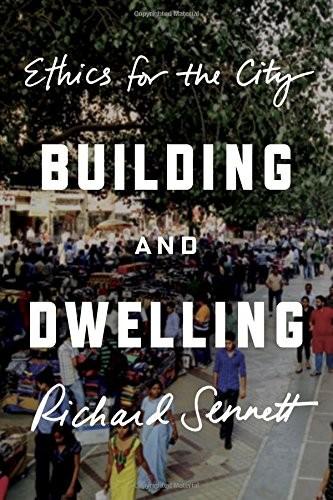
Building and Dwelling: Ethics for the City
by
Richard Sennett
Published 9 Apr 2018
The government’s planning agency therefore allowed the derelict area which was the original Nehru Place to develop. Original plans show the plaza above the parking garage as empty, and lined with low, four-storey buildings meant for office start-ups rather than shops. Today, there remain traces of that intention. The boxy buildings lining the sides of Nehru Place form a downmarket version of Silicon Valley; here, tech start-ups occupy cramped rooms next to computer repair shops and cut-rate travel agents. The open-air plateau, however, has filled up with retail stalls. Here, people sell smartphones, laptops and pre-owned motherboards, also saris and Bollywood CDs, sometimes all out of the same boxes. Crowds surge with shopper energy, and they are mixed.
…
Twenty years before my New York Googleplex lookaround, I had interviewed youngsters in Silicon Valley for a book on high-tech work in the new economy. In that primal age, tech start-ups had a certain odour, a smell amalgamating stale pepperoni pizza, Diet Coke and sweaty socks; this fragrance was chilled but not dispelled in air-conditioned rooms in which nobody bothered to open the windows. There are no teeming streets in Silicon Valley, but the tech start-ups were small and, as in Nehru Place, the aspiring geniuses spent a lot of time with people in other firms, looking at what the competition was doing, occasionally cooperating and conspiring. Start-up failures spurred the need to look around and outside. Then, as now, the rates of failure were high; only about 7 per cent of tech start-ups last for more than two years in America.
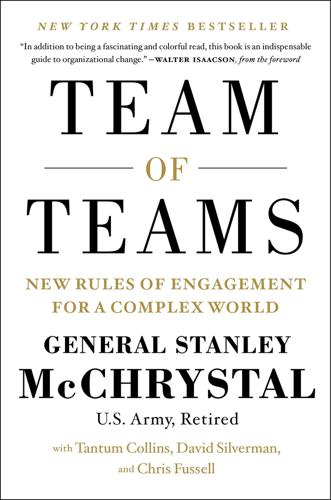
Team of Teams: New Rules of Engagement for a Complex World
by
General Stanley McChrystal
,
Tantum Collins
,
David Silverman
and
Chris Fussell
Published 11 May 2015
They were tough, flexible, and resilient, but more often than not they were poorly trained and underresourced. They were also dogmatic and offensively extreme in their conduct and views. Their strengths and capabilities were multiplied by a convergence of twenty-first-century factors, of which AQI was simply the lucky beneficiary. Much like a Silicon Valley garage start-up that rides an idea or product that is well timed rather than uniquely brilliant to an absurd level of wealth, AQI happened to step onto an elevator that was headed up. Second, and most critically, these factors were not unique to Iraq, or to warfare. They are affecting almost all of us in our lives and organizations every day.
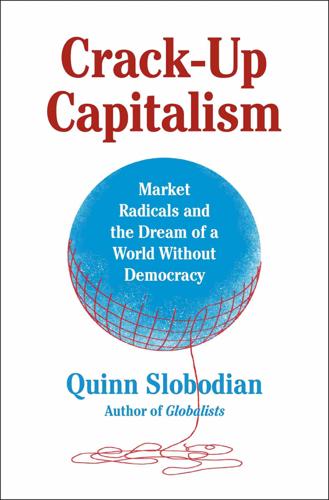
Crack-Up Capitalism: Market Radicals and the Dream of a World Without Democracy
by
Quinn Slobodian
Published 4 Apr 2023
His proposal: repurpose offshore oil rig technology and set up settlements beyond the jurisdiction of terrestrial states, homesteading the high seas.3 Beyond the “exclusive economic zone” that stretches two hundred miles out from every country’s shore, the open ocean was free for private exploitation and political experimentation. “Seasteads” would escape the taxing and regulating state, declare independence, and spark what he dubbed a “Cambrian Explosion in government.”4 In the jargon of Silicon Valley, these would be start-up nations. The man onstage was Patri Friedman. He had a famous grandfather, perhaps the century’s most notorious economist, both lionized and reviled for his role in offering intellectual scaffolding for ever more radical forms of capitalism and for his sideline in advising dictators: Milton Friedman.
…
The shortcut to Hong Kong that Romer offered was called the charter city. The formula: persuade poor nations to surrender patches of uninhabited territory to be managed by richer ones. Pollinate the empty land with rules known to make capitalism work and watch it grow. This would be colonialism by consent, occupation by invitation. Using the jargon of Silicon Valley, he called them “start-up political jurisdictions.”2 Charter cities could happen anywhere. Displaying a nighttime map of Africa unlit by artificial light, he pointed out the “enormous amount of land on earth that’s very underutilized.”3 Leaders only had to face the fact that sovereignty under conditions of globalization was already moot.

The Participation Revolution: How to Ride the Waves of Change in a Terrifyingly Turbulent World
by
Neil Gibb
Published 15 Feb 2018
It was not that these companies were simply out to do good – Silicon Valley is in many ways capitalism at its most raw – but that they were being led by their social mission to make and do something useful and good, rather than the single-minded pursuit of shareholder value and profit. In October 2013, Merck & Co announced it would be cutting 8,500 jobs and $1.5 billion off its costs. At the same time over in Silicon Valley, high-tech start-ups and giants like Google, Facebook, and Apple were drawing in talent and investment in the same way that Merck had when he opened his labs in 1929. Just as Kodak fell under the misapprehension that it was in the business of selling film, and the music industry thought it was in the business of flogging disks, so too had Merck & Co fallen under the misapprehension that it was in the business of selling drugs. 8.

Machines of Loving Grace: The Quest for Common Ground Between Humans and Robots
by
John Markoff
Published 24 Aug 2015
Certainly AI and robotics technologies will destroy a vast number of jobs, but they can also be used to extend humanity. Which path is taken will be determined entirely by individual human designers. Tandy Trower is a software engineer who once oversaw armies of software engineers at Microsoft Corporation, but now works from a cramped office in South Seattle. The four-room shop might be any Silicon Valley garage start-up. There are circuit boards and computers strewn in every direction, and there are robots. Many of them are toys, but several look suspiciously like extras from the movie Robot & Frank. The idea of developing a robot to act as a human caregiver speaks directly to the tensions between AI and IA approaches to robotics.
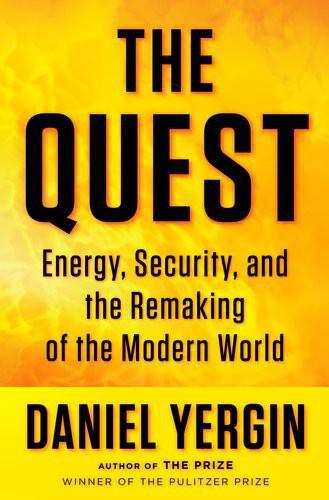
The Quest: Energy, Security, and the Remaking of the Modern World
by
Daniel Yergin
Published 14 May 2011
One of the first venture capital firms that shaped the Silicon Valley system was Kleiner Perkins (later Kleiner Perkins Caufield & Byers), which was founded in 1972. The original partners were Eugene Kleiner, who had fled Vienna with his family to escape the Nazis and later joined an early Silicon Valley start-up, and Tom Perkins, an MIT engineering and Harvard Business School graduate and a Hewlett-Packard veteran, who had been a student in Georges Doriot’s Manufacturing class at the Harvard Business School. Kleiner Perkins set out to further refine the VC business model into something different from traditional finance, and also different from traditional R&D.
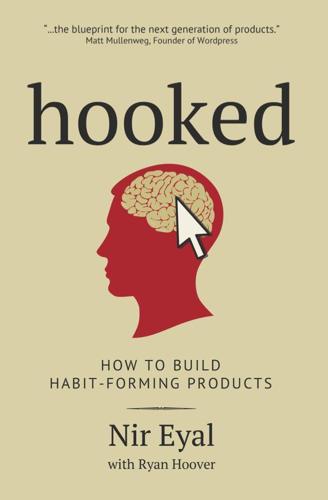
Hooked: How to Build Habit-Forming Products
by
Nir Eyal
Published 26 Dec 2013
Although every business had its unique flavor, I sought to identify the commonalities behind the winners and understand what was missing among the losers. I looked for insights from academia, drawing upon consumer psychology, human-computer interaction, and behavioral economics research. In 2011 I began sharing what I learned and started working as a consultant to a host of Silicon Valley companies, from small start-ups to Fortune 500 enterprises. Each client provided an opportunity to test my theories, draw new insights, and refine my thinking. I began blogging about what I learned at NirAndFar.com, and my essays were syndicated to other sites. Readers soon began writing in with their own observations and examples.

Moral Ambition: Stop Wasting Your Talent and Start Making a Difference
by
Bregman, Rutger
Published 9 Mar 2025
From 1807 to 1867, the British put an astronomical amount of money into enforcing the ban: nearly 2 per cent of the national income, or four times the UK’s current foreign aid budget. The researchers speak of the ‘most costly international moral action in modern history’.20 Now back to Peter Thiel and his PayPal cult. It’s debatable, of course, whether those guys have made the world a better place. Silicon Valley has countless startup incubators who measure success not in terms of beauty, wisdom, or justice, but in dollars, dollars, and dollars.21 And Thiel today may well be one of the most dangerous men in America, given his massive influence, deep pockets, and deeply authoritarian views.22 But that doesn’t mean he’s wrong about the power of cults.
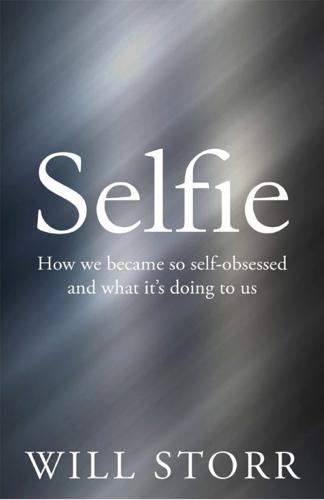
Selfie: How We Became So Self-Obsessed and What It's Doing to Us
by
Will Storr
Published 14 Jun 2017
One, the Negev, had been reported: ‘SRO tenants’ tales tell scary story’, Jessica Kwong, San Francisco Examiner, 21 November 2014. Meanwhile, Chez JJ, in the Castro: ‘An SF Hacker Hostel Faces the Real World and Loses’, Davey Alba, Wired, 22 August 2015. The Startup Castle, a Tudor-style mansion: ‘Silicon Valley’s “Startup Castle” is looking for roommates, and the requirements are completely bonkers’, Kevin Roose, Fusion.net, 13 May 2015. They cite surveys that suggest . . . etc.: Generation Me, Jean Twenge (Atria, 2006), p. 99. One 2006 poll of British children placed . . . Over in the US: The Narcissism Epidemic, Jean M.
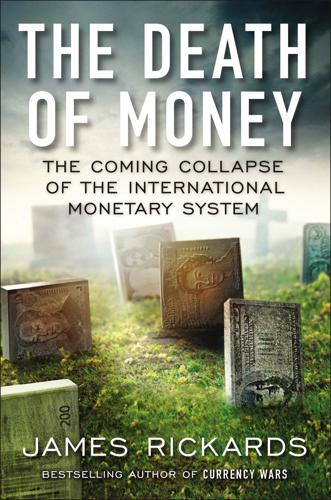
The Death of Money: The Coming Collapse of the International Monetary System
by
James Rickards
Published 7 Apr 2014
A hedge fund might not care about the origin of the hidden information—it can just piggyback on the trade. For the CIA, the observation became a clue. And the stakes were higher. Like any development project, Prophesy had its geek squad of programmers and systems administrators to design protocols for security, interconnectivity, and the user interface. The team combined the joy of a Silicon Valley garage start-up with the can-do culture of the CIA in a unique effort to preempt terrorism using the same information that viewers see every day on Bloomberg TV. The climax of Project Prophesy was a red team exercise in September 2003. Red teaming is a classic way of testing hypotheses and models by recruiting a group of experts as the “enemy,” then asking them to role-play scenarios designed to expose flaws in the original assumptions.
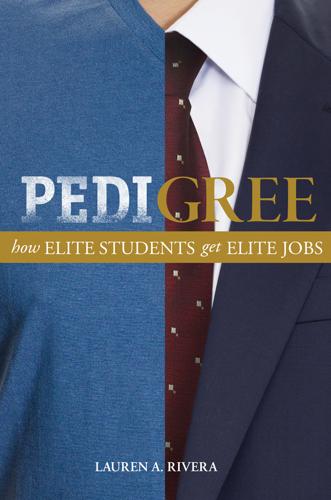
Pedigree: How Elite Students Get Elite Jobs
by
Lauren A. Rivera
Published 3 May 2015
Obedience to authority figures, for example, is an asset in many blue-collar jobs; demonstrating independence and self-expression is valued in upper-middle-class, managerial jobs.20 There is variation in norms even between types of professional positions: wearing colorful socks and a slim tie to a job interview at a Silicon Valley tech start-up might be seen as a sign of creativity and insider status; donning the same outfit for an interview at a Wall Street law firm might be interpreted as showing disrespect. It is not surprising, then, that across firm types, evaluators readily acknowledged that assessing polish was a subjective undertaking.
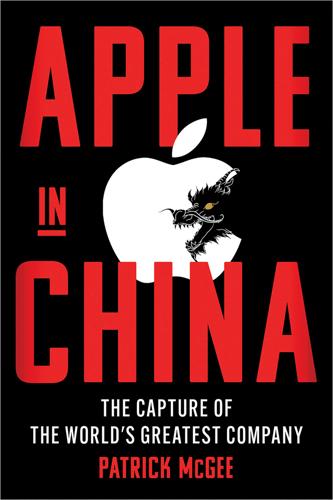
Apple in China: The Capture of the World's Greatest Company
by
Patrick McGee
Published 13 May 2025
Rubén was just seven years old when his family found asylum in Quebec. There he became fluent in French and studied electrical engineering. Then he spent thirteen years with the Canadian Air Force, learning English in his mid-twenties while serving as an aerospace engineer. In 2001, he joined a Silicon Valley chip start-up, Tropian, specializing in antennas and developing a system engineering team that worked on testing prototypes. The trio was a small team with a big task, reflecting Steve Jobs’s desire to build the phone the way a start-up would, disconnected from the rest of Apple. Jobs had become upset with the Mac team, feeling it was too bureaucratic.
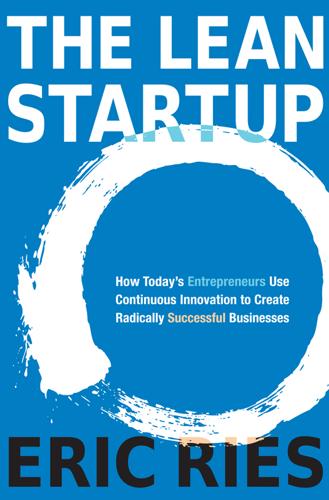
The Lean Startup: How Today’s Entrepreneurs Use Continuous Innovation to Create Radically Successful Businesses
by
Eric Ries
Published 13 Sep 2011
With his initial traction, he was able to raise money from some of the most prestigious investors in Silicon Valley. When I first met Farb, his company was already on the fast track to success. They had raised venture capital from well-regarded investors, had built an awesome team, and were fresh off an impressive debut at one of Silicon Valley’s famous startup competitions. They were extremely process-oriented and disciplined. Their product development followed a rigorous version of the agile development methodology known as Extreme Programming (described below), thanks to their partnership with a San Francisco–based company called Pivotal Labs.
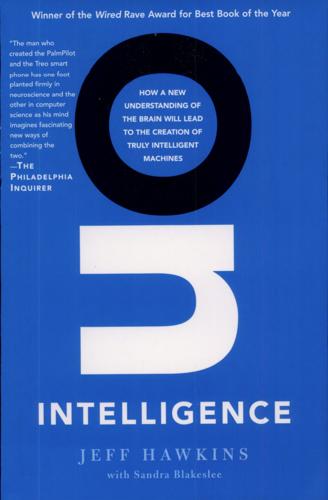
On Intelligence
by
Jeff Hawkins
and
Sandra Blakeslee
Published 1 Jan 2004
When you don't know how to proceed, often the best strategy is to make no changes until your options become clear. So I just kept working in the computer field. I was content to stay in Boston, but in 1982 my wife wanted to move to California, so we did (it was, again, the path of least friction). I landed a job in Silicon Valley, at a start-up called Grid Systems. Grid invented the laptop computer, a beautiful machine that became the first computer in the collection at the Museum of Modern Art in New York. Working first in marketing and then in engineering, I eventually created a high-level programming language called GridTask.
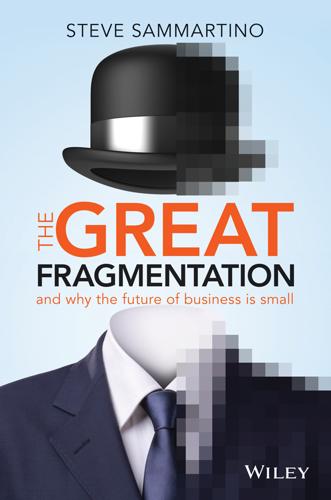
The Great Fragmentation: And Why the Future of All Business Is Small
by
Steve Sammartino
Published 25 Jun 2014
If we qualify in the awesomeness stakes, then our audience will do the talking for us. The old model of under-investing in the product we sell so we could afford the distribution and media costs is now being reversed. If the product is amazing, is advertising really needed? Just ask Elon Musk of Tesla Motors. Tesla Motors is a Silicon Valley–based auto startup that makes all-electric vehicles. Tesla has no advertising, no agency and no chief marketing officer and it has no plans to run television advertisements any time soon. For 2012 and 2013 all of its production vehicles were presold. (Compare this to the $25 million in media Nissan spent on their ‘leaf’ electric vehicle.)

Ghost Fleet: A Novel of the Next World War
by
P. W. Singer
and
August Cole
Published 28 Jun 2015
The space was cavernous, 1,140 feet by 308 feet, to be exact, the size of three Superdomes. But the smell filled even that void. To someone from outside the valley, it was the tangy funk of old pizza and people who’d gone too long without a shower. But to anyone local, it smelled like money. Fame. Power. Success. So much had changed in Silicon Valley’s startup scene during the past few decades, but there was one constant. This smell. And the fact that it now filled Hangar One made it all the more appropriate. In 1931, the city fathers of Sunnyvale, California, had come up with a unique plan for economic development. They’d raised $480,000 to buy nearly a thousand acres of farmland and then sold off the land to the U.S. government for one dollar.

The Passenger
by
AA.VV.
Published 23 May 2022
ANNA WIENER grew up in Brooklyn and moved to San Francisco in 2013 to work in the tech sector. Her experiences in that world, and her disillusion with it, led to her writing a memoir, Uncanny Valley (MCD, 2020, USA / Fourth Estate, 2020, UK), which was an international success. She is a contributing editor to The New Yorker focusing mainly on Silicon Valley, the world of startups and technology, and has written for n+1, The Atlantic and The New Republic. CORIANDER / CILANTRO One crop that has expanded hugely in recent years, although still remaining far less important than alfalfa, is coriander/cilantro (depending where you come from): in 2019 over 42,000 tonnes were produced, almost double the figure of 25,000 in 2006.

No Ordinary Disruption: The Four Global Forces Breaking All the Trends
by
Richard Dobbs
and
James Manyika
Published 12 May 2015
Those positioned in hubs that are already global capitals—New York for finance, Houston for energy, Los Angeles for entertainment—are particularly well situated to do so. The impact of foreign entrepreneurs in Silicon Valley, for instance, has been significant. One-third to one-half of Silicon Valley high-tech start-ups have foreign-born founders. Foreign-born residents represent 36 percent of Silicon Valley’s population, almost triple the national average of 13 percent. Among all adults in Silicon Valley, 46 percent have at least a bachelor’s degree, compared with the national average of 29 percent.

Disrupted: My Misadventure in the Start-Up Bubble
by
Dan Lyons
Published 4 Apr 2016
Think of Rodney Dangerfield’s character in Caddyshack—big and loud, throwing money around—and you get the idea of how Andreessen has elbowed his way into the clubby world of venture capital: by paying more than everyone else and drawing a lot of attention to himself. In 2009 Andreessen was just another guy with a new venture fund, albeit a guy with a famous name. Six years later he is probably the best known and arguably the most influential investor in Silicon Valley. “Guys running start-ups love him. They all want to meet him,” one Boston-based venture capitalist says. “Every time I meet with a start-up, the first question they ask me is, ‘Do you know Marc Andreessen? Can you introduce us to him?’ He’s like a rock star.” Says another venture capitalist: “If you take money from Andreessen Horowitz, your valuation doubles or triples just because they’re involved.
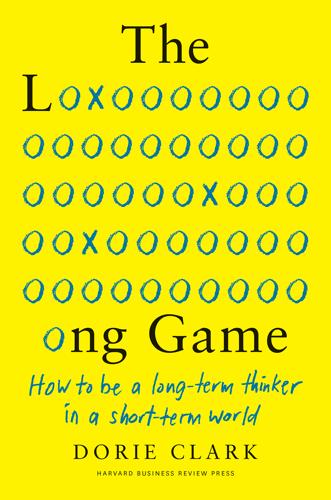
Long Game: How Long-Term Thinker Shorthb
by
Dorie Clark
Published 14 Oct 2021
“It’s not quite ready yet,” they’ll say, or “I’m still making a few tweaks,” or “It needs a little more time.” That’s fine up to a point; you don’t want to release something into the world that’s awful, or so rough that it’s unintelligible. But after a while, this kind of thinking becomes an excuse that can hold us back. The lesson we can learn from Silicon Valley and the lean startup methodology is that we should, in the early days, treat everything as an experiment. Failure is upsetting to so many of us because it implies finality: you tried to accomplish something, and it didn’t happen. But an experiment, which you recognize from the beginning has an uncertain outcome, can hardly be called a failure.
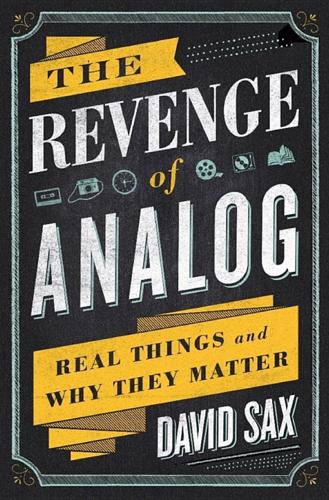
The Revenge of Analog: Real Things and Why They Matter
by
David Sax
Published 8 Nov 2016
The Revenge of Analog not only questions our assumptions about digital’s inevitability, but the very certainty at the heart of the digital economy. This is a powerful current to swim against. The notion that nondigital goods and ideas have become more valuable would seem to cut against the narrative of disruption-worshipping techno-utopianism coming out of Silicon Valley and other startup hubs, but, in fact, it simply shows that technological evolution isn’t absolute. We may eagerly adopt new solutions, but, in the long run, these endure only if they truly provide us with a better experience—if they can compete with digital technology on a cold, rational level. This is where the Revenge of Analog matters even more.

The Corruption of Capitalism: Why Rentiers Thrive and Work Does Not Pay
by
Guy Standing
Published 13 Jul 2016
Faraday’s invention of the electric motor followed inventions of the electromagnet (Sturgeon) and the battery (Volta). Moreover, many inventions involve no investment, no cost and no risk, and may even arise by accident. President John Kennedy’s pledge to put a man on the moon led to spin-offs including memory foam, improved radial tyres, freeze-dried food and cochlear implants. Silicon Valley’s early start-ups benefited from public spending on research in universities and for defence (including invention of the internet itself, a freely available, publicly funded technology). The research that led to touch-screen displays, GPS and smartphone voice control all had government backing.6 In effect, government has socialised the risks but not the rewards.

Smart Cities, Digital Nations
by
Caspar Herzberg
Published 13 Apr 2017
As the startup world demonstrates on a regular basis, it is much easier for lean organizations with smaller balance sheets and fewer investors to create new, innovative approaches to work that can attract fresh talent. Yet Cisco and other multinationals cannot cede initiative to smaller concerns. The Bangalore campus is an aggressive bid to attract young talent with the same sort of work approach and environment that might be found in a Silicon Valley or New York startup. As of 2015, the bid seemed to pay dividends. Bangalore’s workforce of 8,500 is young indeed, the single greatest concentration of Generation Y and Millennials in the global company. The “seamless” experience of IT applies here in a quality of work/life balance. The campus is open; workstations can be assigned by an employee’s preference for a particular day (as well as monitored for light, temperature, and other features) via personal devices and QR codes.
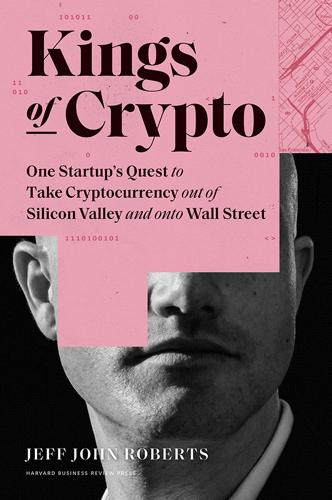
Kings of Crypto: One Startup's Quest to Take Cryptocurrency Out of Silicon Valley and Onto Wall Street
by
Jeff John Roberts
Published 15 Dec 2020
“Balaji was Coinbase’s first brilliant jerk,” she recalls, “and it changed the culture of our leadership. That’s why I left. The heart and soul of what I built is gone.” The departures of longtime fixtures like Adam and Nathalie did not trouble Asiff, who regarded employee churn as ordinary. In Silicon Valley, he says, every startup outgrows its early managers, and the executive team will turn over four or five times if a company is scaling up fast. Besides, amid all the drama, he and Balaji were doing a lot to fix Coinbase’s earlier problems. In April, the company hired a banking veteran, Alesia Haas, as CFO.
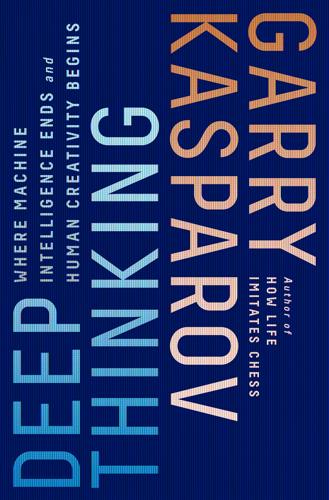
Deep Thinking: Where Machine Intelligence Ends and Human Creativity Begins
by
Garry Kasparov
Published 1 May 2017
Not every great singer writes her own songs, however, and Apple’s shareholders and consumers clearly believe that their design and brand add a lot of value to their products. But if everyone imitates, soon there will be nothing new to imitate. Demand can be stimulated by incremental product diversification for only so long. The entrepreneur and venture capitalist Max Levchin used a good expression for this effect referring to Silicon Valley and tech start-ups, and I like it for just about everything. While we were working on a book project together a few years ago, he called it “innovating at the margins.” That is, looking for small efficiencies instead of taking on more substantial risks in the main area of business. Levchin has been interested in online payment and alternative currencies since cofounding PayPal in 1998, and he described how most of these services are trying to squeeze nickels out of the 2 to 3 percent banking fees while leaving the principle risk to the big banks.

The 4-Hour Workweek: Escape 9-5, Live Anywhere, and Join the New Rich
by
Timothy Ferriss
Published 1 Jan 2007
—DAN PARTLAND, Emmy Award–winning producer of American High and Welcome to the Dollhouse “The 4-Hour Workweek is an absolute necessity for those adventurous souls who want to live life to its fullest. Buy it and read it before you sacrifice any more!” —JOHN LUSK, group product manager at Microsoft World Headquarters “If you want to live your dreams now, and not in 20 or 30 years, buy this book!” —LAURA RODEN, chairman of the Silicon Valley Association of Startup Entrepreneurs and a lecturer in Corporate Finance at San Jose State University “With this kind of time management and focus on the important things in life, people should be able to get 15 times as much done in a normal workweek.” —TIM DRAPER, founder of Draper Fisher Jurvetson, financiers to innovators including Hotmail, Skype, and Overture.com “Tim has done what most people only dream of doing.
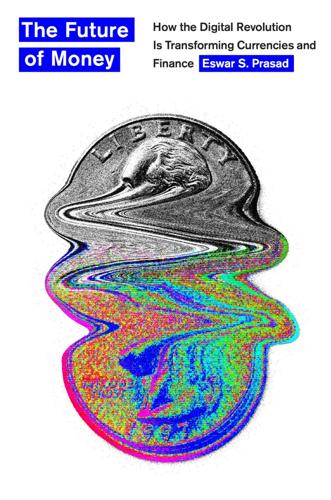
The Future of Money: How the Digital Revolution Is Transforming Currencies and Finance
by
Eswar S. Prasad
Published 27 Sep 2021
It then uses data from actual borrowers and their repayment patterns to refine its credit scoring algorithms. Since its launch in London in 2015 (through December 2020), JUMO has helped to disburse over $2.5 billion in funds to seventeen million people and small businesses, a sizable amount of funding in a low-income country context. Branch International, a Silicon Valley–based start-up launched in 2015, offers loans to first-time borrowers and customers without bank accounts in Africa (Kenya, Tanzania, and Nigeria), India, and Mexico. Because so many borrowers in EMEs lack credit histories or savings, Branch uses alternative data gathered from users’ smartphones—geolocation, call and text logs, contact lists, handset details—and some traditional banking information, such as repayment history, to assess creditworthiness.

Makers
by
Chris Anderson
Published 1 Oct 2012
Although the revenues and profits outgrew the category of “small business,” employment did not. Because these companies are built along Web lines, they tend to be lean. But they also tend to be numerous, since the barriers to entry are so low. And with that many small manufacturers and companies, the odds that some of them will get big increase. The Silicon Valley model—that all startups are created with the hope of becoming the next Facebook—is what’s really the engine of economic growth. Even though almost all of them will fail to reach those highs, if a few do they can create multibillion-dollar industries and tens of thousands of jobs. And companies built on the Web-driven Maker model can do that.
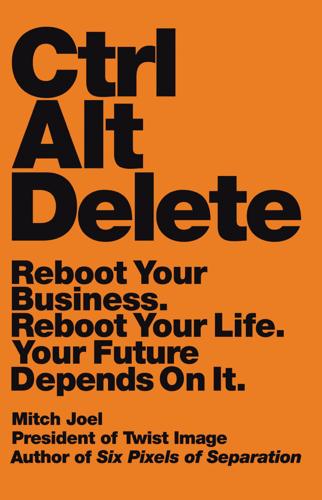
Ctrl Alt Delete: Reboot Your Business. Reboot Your Life. Your Future Depends on It.
by
Mitch Joel
Published 20 May 2013
The reality is that some of the biggest organizations in the marketplace today are actually hiring fewer and fewer people because they simply need less people to generate the same kinds of revenue. There is no doubt that the fastest-growing sector in the North American economy is being driven by anything and everything that touches Silicon Valley—the hotbed for startups. The challenge is that the biggest and brightest in this industry (Google, Facebook, Twitter, Kickstarter, LinkedIn…) simply do not employ a lot of people in relation to their valuations. Yes, the majority of these companies have many job openings, but they are for technical and engineering posts.

Pivot: The Only Move That Matters Is Your Next One
by
Jenny Blake
Published 14 Jul 2016
She also says one of the biggest lessons for younger impacters is balancing their desire for stretch projects and meaningful work with rolling up their sleeves and getting things done. If impacters want to create a growth culture, they should also take the lead in helping others. “For every opportunity you get, help open a door for someone else.” Laura Grose, HR business partner at one of Silicon Valley’s fastest-growing start-ups, advocates that impacters keep a realistic and patient view of what roles may be available. She found that many impacters who enjoy the building phase may feel limited when their roles require more process and maintenance. “In high-growth start-ups, it’s common for early employees to wear many hats.
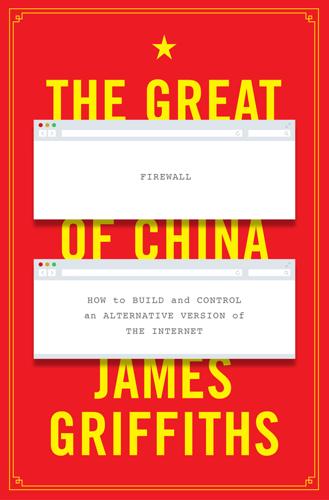
The Great Firewall of China
by
James Griffiths;
Published 15 Jan 2018
In 2004, Yahoo provided user records that helped lead to the arrest of journalist Shi Tao, who was later sentenced to ten years in prison.2 The following year, Microsoft had deleted the blog of dissident author Michael Anti after the authorities complained, censoring him not only in China but around the world.3 This sparked instant outrage and criticism, but a Microsoft spokesperson defended the move on the grounds that it was the cost of doing business in China: “While this is a complex and difficult issue, we remain convinced it is better for Microsoft and other multinational companies to be in these markets with our services and communications tools, as opposed to not being there.” This was a view shared by Google’s top management, particularly co-founders Sergey Brin and Larry Page, who had an evangelical view of their product. In this they were forerunners of what would become a Silicon Valley stereotype: the start-up founder who thinks they’re going to save the world. All Google’s executives understood that going into China would mean acquiescing to government censorship, which would seem to contradict the company’s much vaunted founding principles. From their headquarters in Mountain View, however, it did not seem that clear-cut.
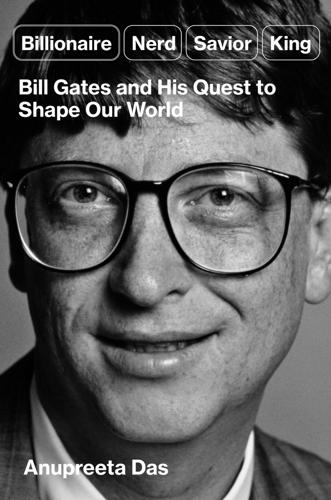
Billionaire, Nerd, Savior, King: Bill Gates and His Quest to Shape Our World
by
Anupreeta Das
Published 12 Aug 2024
Seen this way, Silicon Valley is a hermetically sealed libertarian utopia that fuses the countercultural values inherited from the original nerds and computer bums of the 1970s with hard-nosed, no-holds-barred capitalism. “Silicon Valley is a mindset, not a location,” LinkedIn’s Hoffman once told the Financial Times newspaper.33 Midsize cities around America have taken the message; there are dozens of mayors pushing to revamp disused downtown business districts into slick mini–Silicon Valleys, wooing young start-ups with lower rents and tech giants with tax breaks. One reason why the Valley can be exclusionary is because it is so wedded to “disruption”—the idea that success comes to those who move fast and break things, and shake up business models, often without regard for consequences. “They have big ideas, but often they have very few ethics,” said Rosanne Siino, the former Netscape executive who now advises start-ups and teaches a class at Stanford about organizational dynamics.

Dogfight: How Apple and Google Went to War and Started a Revolution
by
Fred Vogelstein
Published 12 Nov 2013
They want you to understand what the iPhone and Android projects were like at the beginning—and so that is where this book will start. 1 The Moon Mission The fifty-five miles from Campbell to San Francisco is one of the nicest commutes anywhere. The journey mostly zips along the Junipero Serra Freeway, a grand and remarkably empty highway that abuts the east side of the Santa Cruz Mountains. Known as 280 to locals, it is one of the best places in Silicon Valley to spot a start-up tycoon speed-testing his Ferrari and one of the worst places for cell phone reception. For Andy Grignon in his Porsche Carrera, therefore, it was the perfect place for him to be alone with his thoughts early on January 8, 2007. This wasn’t Grignon’s typical route to work. He was a senior engineer at Apple in Cupertino, the town just west of Campbell.
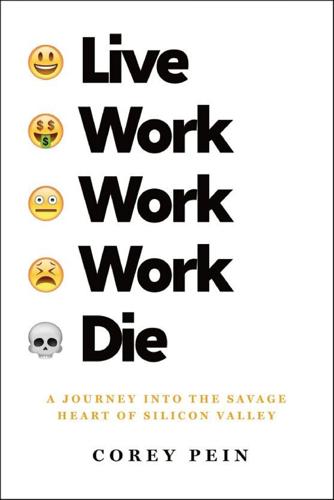
Live Work Work Work Die: A Journey Into the Savage Heart of Silicon Valley
by
Corey Pein
Published 23 Apr 2018
The destruction of social welfare, public education, and organized labor has created what might be called the 50 Cent economy, a system structured to offer only two options: “Get rich or die trying.” President George W. Bush called it the “ownership society.” Obama, smitten with his Silicon Valley donors, gave us “Startup America.” And Donald Trump, history’s luckiest winner, reigned over a nation of “losers.” Under the latest iteration of the American Dream, if you aren’t a billionaire yet, you haven’t tried hard enough. * * * There was no place more appropriate to begin my conquest of the new gig economy than in the proverbial basement—from there, after all, I had nowhere to go but up.

Off the Edge: Flat Earthers, Conspiracy Culture, and Why People Will Believe Anything
by
Kelly Weill
Published 22 Feb 2022
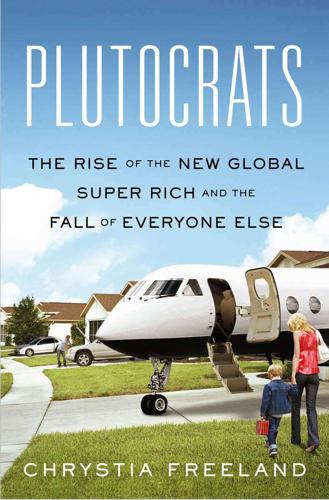
Plutocrats: The Rise of the New Global Super-Rich and the Fall of Everyone Else
by
Chrystia Freeland
Published 11 Oct 2012
Meanwhile, the oligarchs who prosper in extractive emerging market regimes don’t need to worry too much that repression at home is cutting them off from the innovation that democracies are better at nurturing. Communist Chinese princelings can import technology from the West; Russian oligarchs can invest directly in Silicon Valley’s hottest start-ups. And all of them can buy second homes in Manhattan and Kensington and villas on the Côte d’Azur and send their children to British boarding schools and American Ivy League universities. — There’s another way that globalization and its twin economic force, the technology revolution, are reducing the pressure on the plutocrats to make their societies more inclusive, or to keep them that way.
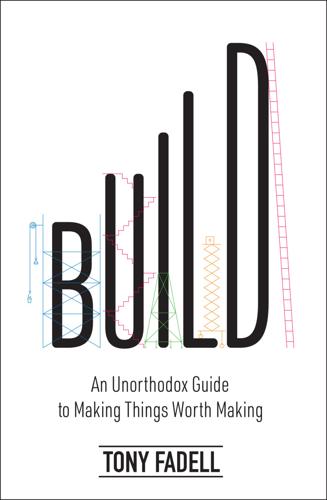
Build: An Unorthodox Guide to Making Things Worth Making
by
Tony Fadell
Published 2 May 2022
See also General Magic; iPhone; iPod; Nest Labs; Nest Learning Thermostat; Nest Protect; Philips Nino; Philips Strategy and Ventures Group; Philips Velo at Apple, xviii, 19, 55, 69, 78, 80, 81, 82, 84–86, 91, 93, 96, 117, 136, 163, 237, 303, 320, 374 Apple computer of, xv–xvi biography of, xiv–xix, 294 career of, xiv–xix failures of, xix, 3–4, 181 family of, 163, 175, 176 at Future Shape, xix as mentor, xi–xiv, xix–xx mentors of, xi, xii, 164 passion of, 68–69 at Philips, xvii, 18, 36–37, 45–46, 58, 61, 77, 81, 88, 89, 96, 125, 129–30, 209, 374 programming experience in school, xiv–xv at Quality Computers, xv startups of, xiv, xv–xix, 2, 6, 7, 46, 164, 181, 199 failure analysis of, 135 learning from, 5–6, 7, 9, 10, 13, 19, 119, 223, 253, 264, 329 startups and, 199 finance acquisitions and, 315, 316, 318, 353 product management and, 281, 285, 287 role of, 48 startups and, 182, 210 financial products, 202 Flint, Peter, 107n Free, 199 Frog, 283 Fuse Systems, xviii, 88–92, 89, 208 Future Shape, xix, 365, 374 GAP, 341 Gelsinger, Pat, 321–22 General Magic Bill Atkinson and, 2–3, 12, 27, 165 culture of, 46 Tony Fadell as engineer at, xvi–xvii, 2–3, 6, 7, 10–11, 13, 21, 24, 27, 35, 96, 129–30, 208, 327, 374 failure of, 3, 13, 18, 24, 37, 58, 90, 373 Andy Hertzfeld and, 2–3, 12, 27 launch of, 11–12 Magic CAP, 15 Pierre Omidyar and, 188 Philips as partner and investor in, 36, 37 Pocket Crystal, 1, 2, 12 private network system of, 12 problems with products of, 15 smartphone of, 130 Sony Magic Link, 12–13, 12, 15, 24, 31, 35–36, 58, 139–40 structure of, 10–11, 13 target customer of, 35–36, 58, 130 technology focus of, 15 TeleScript, 15 time constraints for, 139–40 General Magic Movie, 2n Glengarry Glen Ross (film), 296 goals of meetings, 255 moving forward with, 7, 19, 33 product development and, 128 team’s goals powering company goals, 237 Google Ads, 314, 346 all-hands meetings of, 255, 360 Alphabet created by, xix, 314 Android acquisition, 328 culture of, 313, 346, 349, 351–52, 359 disruption and, 123 individual contributors recognized by, 47 job applications with, 23 Nest acquisition of, xix, 304, 310–17, 338, 345–52, 354–55, 359–61, 371 Nest reabsorbed by, 319–20 Nest sold by, 317–19, 367 perks at, 358–59, 362 product managers and, 284 profitability of, 160 project rhythms of, 146 restructuring of, 314 review cycles of, 51 Search, 284, 314, 346 target customer of, 205 Google Facilities, 315 Google Fiber, 314 Google Glass, 16, 119 Google Nest, 55, 80, 278, 313, 314–17, 354–55 Google Store, 312, 317 Google Ventures (GV), 314, 349 Google X, 314 Grove, Andy, 322 Guenette, Isabel, 230 Gurley, Bill, 21 habituation, 262, 262n heroes, connections with, 20–25, 27 Hertzfeld, Andy, 2–3, 12, 20, 27 Hodge, Andy, 92 Hololens, 124 Home Depot, 160, 202 home stereo systems, 87 home theaters, 88, 90 honesty, in management, 44, 51 Honeywell, 117, 124–25, 164, 303–4 human resources (HR) breakpoints and, 255–56 dealing with assholes and, 72–73, 74 hiring and, 29, 215–17, 229–41 interviews and, 21, 258 legal team and, 302, 305 meetings of, 254 quitting and, 76, 81, 85, 86 startups and, 89, 182, 184, 210 team meetings and, 240, 241 team size and, 247 HVAC technicians, 124–25, 166 IBM, 121, 148 ideas chasing process, 171, 172, 173–77, 179, 373 elements of, 171 as painkillers, not vitamins, 172 problems solved by, 171, 172 research on, 171–72, 173, 174, 178 spotting great ideas, 124, 171–79, 180, 182, 327, 328 storytelling and, 172, 174, 177–78 vision for, 178 IDEO, 261, 283 IKEA, 106, 288 imposter syndrome, 37, 50 individual contributors (ICs) crisis and, 220 leadership of, 47 management contrasted with, 43 as managers, 238, 248, 251–53 perspective of, 26–27, 28, 29, 30, 31–33, 48, 58, 331 reverting to, 366 as stars, 47 trajectory in organizations, 47, 251–53 information gathering, 21 Instagram, 156, 205 Intel, 148, 189, 322 intellectual property (IP), 305, 306 internal customers, 30, 32, 233, 325 Inventec, 92 investors and investment angel investors, 173, 189–90, 192, 198–99, 200 board members and, 335, 337, 340–41 cyclical nature of, 90, 190–91 in Nest Labs, 164, 165–66, 177, 178 relationships and, 189–90, 192, 193–98, 199, 200 in Silicon Valley, 90, 192 startups and, 169, 181, 184, 189–200 storytelling and, 111, 178 iPad, 163 iPhone development of, xiv, xviii, 1, 15, 93, 122, 128, 132–33, 140–42, 142, 156, 163, 169, 175, 176, 283, 327–29, 343 glass front face of, 110, 329 launch of, 108–10, 117, 203 profitability of, 156 size of, 130, 131, 132 team of, 234 time constraints on, 140–41 touchscreen keyboard for, 110, 128–33 value of, 156, 176 iPod customer personas for, 287 defining feature of, 120, 140 design of, 263, 267–68 development of, xiv, xviii, 19, 24, 54, 55, 91–92, 91, 119–21, 133–35, 163, 165, 167, 169, 187, 202, 208–9, 268–69, 286, 347 full battery of, 269 iPod-phone model, 141 launch of, 84, 92–93, 92, 96, 108, 117, 133–34, 213 profitability of, 155 tagline “1000 songs in your pocket,” 87, 92, 112–13, 286–87 team of, 234 iPod Nano, 286–87 iPod Touch, 163 Isaacson, Walter, Steve Jobs, 84 iTunes, 119–20, 303 Ive, Jony, 267 Jobs, Steve on analogies, 112–13 on battery life, 121, 287 board of directors meetings and, 334, 339 design thinking and, 267 iPhone development, 15, 128–29, 130, 132, 133, 156 iPhone launch, 108–9 iPod development, 92, 120, 133–35, 187, 208–9, 268–69, 347 on lawsuits, 303 leadership style of, xii, 79, 82, 85, 203, 348, 358 level of detail expected by, 49 on MacWorld conferences, 147–48 on management consulting, 17 on marketing, 271, 277 Not Invented Here Syndrome, 327 as parent CEO, 329 passion of, 69, 70 on processors, 148 respect for, 329–30 Andy Rubin and, 327–28 Wendell Sander and, 24 on “staying a beginner,” 268 storytelling of, 177, 286 vacations of, 207–8 walking of, 214 Joswiak, Greg, 286–87 JPMorgan Chase, 321 Kahneman, Daniel, 171 Kare, Susan, 12 Kelley, David, 261, 283 Kickstarter, 158 Kindle, 118 Kleiner Perkins, 164 Kodak, 122–23, 327 Komisar, Randy, 164, 339–40 lawsuits, 117–18, 300, 302, 303–4 leadership characteristics of, 14, 326–27 crisis and, 221–22 decisions and, 61, 62–63 of individual contributors, 47 of Steve Jobs, xii, 79, 82, 85, 203, 348, 358 mentors and, 257 micromanagement contrasted with, 45 percentage of psychopathic traits in, 65 perspective of, 32 sitting on your idea, 63 for startups, 183 style of, 53 of teams, 37–41, 45, 46, 247 trust of, 62, 64, 330 vision for, 18 legal team contracts and, 300, 302, 305 lawsuits and, 117–18, 300, 302, 303–4 marketing and, 276, 306 outside law firms and, 300–302, 305 product management and, 287, 288, 306 role of, 24, 302–8 sales and, 295 startups and, 227 Le Guen, Sophie, 289 Letterman, David, 311 life, as process of elimination, 238, 253 limited partners (LPs), 189, 192, 198 Linux servers, 201 Lovinsky, Dina, xx Lowe’s, 160 Lutton, Chip, 117, 303, 306, 308 Macintosh, 3, 91, 108, 121, 133–34, 148, 208 McKinsey, 17 MacWorld conferences, 147 MagicBus, 24 Magic CAP, 15 Magic Leap, 16 management.

The Long History of the Future: Why Tomorrow's Technology Still Isn't Here
by
Nicole Kobie
Published 3 Jul 2024
Yet, here we are: driving licences for road-bound cars in our pockets, domestic chores still done by our own meaty hands, our thinking limited by our brains rather than extended by machines. Our failure to build these future technologies has nothing to do with a lack of effort. The brightest minds of multiple generations have spent lifetimes developing these ideas at top universities, famous labs, Silicon Valley campuses and startup garages – not to mention the eccentric inventors who go it on their own. And we’ve had success. Neural networks aren’t new; they’ve been in the works since the 1940s. Though our commutes aren’t airborne, the first flying cars were licensed to fly in the 1950s. The first augmented reality headset was plonked on a student’s head in the 1960s.

The Age of Cryptocurrency: How Bitcoin and Digital Money Are Challenging the Global Economic Order
by
Paul Vigna
and
Michael J. Casey
Published 27 Jan 2015
But as we’ve seen, that cumbersome system, as it is currently designed, is tightly interwoven into the traditional banking system, which always demands its cut. * * * As the calendar progressed through 2013 a vanguard of retail businesses began to spot the advantages of cryptocurrency’s lower-cost, faster payment system and started signing up for payment-processing services offered by Silicon Valley–funded bitcoin start-ups such as BitPay, Coinbase, and GoCoin. These firms touted a new model to break the paradigm of merchants’ dependence on the bank-centric payment system described above. These services charged monthly fees that amounted to significantly lower transaction costs for merchants than those charged in credit-card transactions and delivered swift, efficient payments online or on-site.
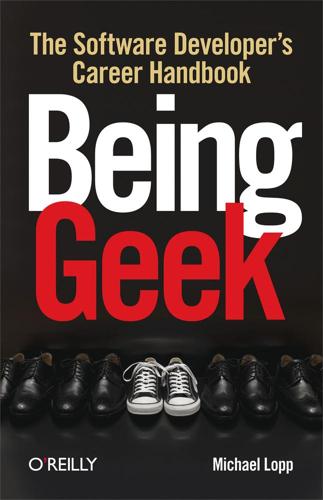
Being Geek: The Software Developer's Career Handbook
by
Michael Lopp
Published 20 Jul 2010
Enemy, The Enemy engagement at work, Early Warning Signs of Doom engineers, That Damned Triangle, That Damned Triangle, The Reveal, The Curse of the Silicon Valley bits, features, and truth exercise, That Damned Triangle constructing a demo, The Reveal management, where they come from, The Curse of the Silicon Valley established companies vs. startups, Three Choices Evening Scrub of the to-do list, Practice Productivity Minimalism, The Trickle Process excuses, On Excuses exodus from the company, This Sucks experience, The Issue with the Doof, Established, Established, Bad News About Your Bright Future acquiring, at established companies, Established value of, The Issue with the Doof vs. confidence, Bad News About Your Bright Future F failure, Delivery, Do You Mean It?

Chokepoints: American Power in the Age of Economic Warfare
by
Edward Fishman
Published 25 Feb 2025
The new law required that any foreign investment involving critical technology first obtain approval from CFIUS, and it empowered the committee to block even minority investments. The law did not mention China by name. But as Senator John Cornyn, one of its main proponents, testified, “The context for this legislation is important and relatively straightforward, and it’s China.” Gone were the days when Beijing-backed firms could snatch up stakes in Silicon Valley tech startups as if they were just like any other VC fund on Sand Hill Road. In the months that followed, Trump also signed laws that strengthened export control authorities and created the U.S. International Development Finance Corporation, a new institution intended to enable the United States to make overseas investments in competition with China’s Belt and Road Initiative.
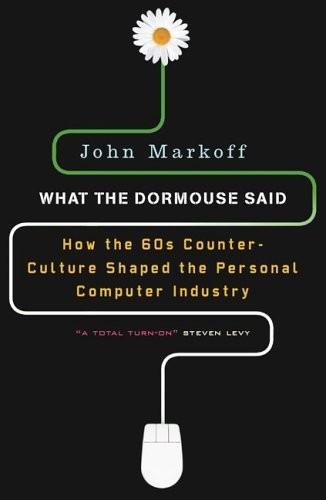
What the Dormouse Said: How the Sixties Counterculture Shaped the Personal Computer Industry
by
John Markoff
Published 1 Jan 2005
It seemed only logical to him that it was all about media coverage, and he was determined to become a top executive at CBS, which would enable him to make the changes from the inside. It didn’t work out that way, however, and two years later he was back at Stanford, where he received a graduate degree in economics. He coined the term “information economy,” went to work for Apple Computer, and later became the cofounder of General Magic, one of Silicon Valley’s ill-starred start-up companies. The West Coast counterculture acted like a magnet for thousands of young people around the country. Dorothy Bender picked the Summer of Love to leave Washington, D.C., and come to California. She was a rarity in the computer world of the 1960s: a woman and a programmer.

Women Talk Money: Breaking the Taboo
by
Rebecca Walker
Published 15 Mar 2022
But by the following fall there were signs that the business wasn’t growing at the rate that investors required to give us another round of funding, and we weren’t yet making enough revenue to support our operations. My inner world began to collapse. Just eighteen months after successfully pitching a room full of some of the world’s best tech investors and being named one of Silicon Valley’s top ten start-ups, our future was not looking so bright. We had arrived at what start-up investors and entrepreneurs often refer to as “the valley of death,” where start-ups who can’t get another round of funding go to die. Unable to apprehend or accept this, I personally began to deteriorate. My living room began to look like a scene from A Beautiful Mind, my walls smothered with multicolored Post-its, each with business ideas scribbled in Sharpies.

The 4-Hour Body: An Uncommon Guide to Rapid Fat-Loss, Incredible Sex, and Becoming Superhuman
by
Timothy Ferriss
Published 1 Dec 2010
—Dan Partland, Emmy Award–winning producer of American High and Welcome to the Dollhouse “The 4-Hour Workweek is an absolute necessity for those adventurous souls who want to live life to its fullest. Buy it and read it before you sacrifice any more!” —John Lusk, group product manager at Microsoft World Headquarters “If you want to live your dreams now, and not in 20 or 30 years, buy this book!” —Laura Roden, chairman of the Silicon Valley Association of Startup Entrepreneurs and a lecturer in Corporate Finance at San Jose State University “With this kind of time management and focus on the important things in life, people should be able to get 15 times as much done in a normal workweek.” —Tim Draper, founder of Draper Fisher Jurvetson, financiers to innovators including Hotmail, Skype, and Overture.com “Tim has done what most people only dream of doing.
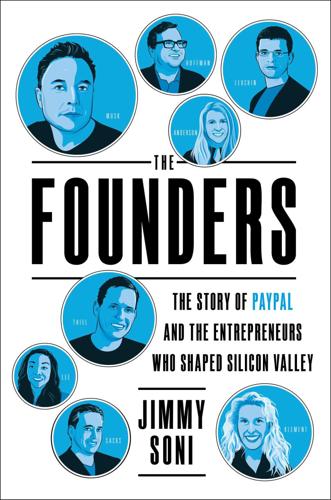
The Founders: The Story of Paypal and the Entrepreneurs Who Shaped Silicon Valley
by
Jimmy Soni
Published 22 Feb 2022
At one, he struck up a conversation with a partygoer who had a contact at Netscape, and before long, Nosek had earned himself a job in Netscape’s business development department. For this new job, he attended every conference and tech meet-up he could find. At one such get-together—a gathering of the Silicon Valley Association for Startup Entrepreneurs—Nosek’s friend Scott Banister sat on a panel about education reform. After the presentation, a fellow panelist mentioned that Banister and Nosek would enjoy meeting his college roommate, Peter Thiel. The four met at Hobee’s, a local fast-casual chain, the first get-together leading to more.

Dawn of the Code War: America's Battle Against Russia, China, and the Rising Global Cyber Threat
by
John P. Carlin
and
Garrett M. Graff
Published 15 Oct 2018
One study in 2005 by the Shanghai Academy of Social Sciences compared hackers to rock stars, finding that two out of five elementary school students in China “adored” hackers, and fully a third said they hoped to grow up to be one themselves.46 As one Chinese hacker explained in a 2005 Hong Kong Sunday Morning Post article, “Unlike our Western [hacker] counterparts, most of whom are individualists or anarchists, Chinese hackers tend to get more involved with politics because most of them are young, passionate, and patriotic.”47 Websites such as chinahacker.com and cnhacker.com offered courses for those who wanted new skills. On the surface, it wasn’t dissimilar to the cult of technologists we saw in American culture—as Silicon Valley entrepreneurs and start-ups were celebrated and feted in TV shows, movies, and websites—but these Chinese hackers were being turned, en masse, against our own economy, undermining American jobs and companies through skilled international thefts. A Hong Kong professor, Jack Linchuan Qiu, explained, “Chinese hackerism is not the American ‘hacktivism’ that wants social change.
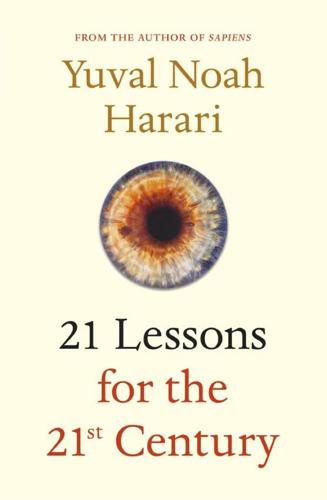
21 Lessons for the 21st Century
by
Yuval Noah Harari
Published 29 Aug 2018
I give meaning to the universe. This is my cosmic vocation. I have no fixed destiny or dharma. If I find myself in Simba’s or Arjuna’s shoes, I can choose to fight for the crown of a kingdom, but I don’t have to. I can just as well join a wandering circus, go to Broadway to sing in a musical, or move to Silicon Valley and launch a start-up. I am free to create my own dharma. Thus, like all other cosmic stories, the liberal story too starts with a creation narrative. It says that the creation occurs every moment, and I am the creator. What then is the aim of my life? To create meaning by feeling, by thinking, by desiring, and by inventing.
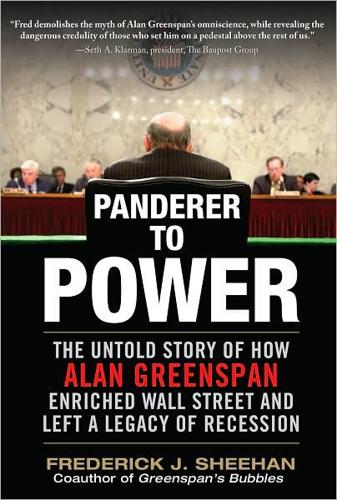
Panderer to Power
by
Frederick Sheehan
Published 21 Oct 2009
Wall Street,” he offered up-to-the-minute advice: “This is the new economy, and you can learn as much about Wall Street on the Internet in two years as you could in the 10 or 15 years it used to take others.”30 Strictly speaking, Hendrix was correct, given the advice that Wall Street firms were offering their clients and the public. Harvard Business School opened an office in Silicon Valley to develop Internet start-up case studies.31 A March 2000 KPMG International poll of college seniors found that 74 percent of the students expected to become millionaires.32 Instead of sounding like “Dr. Wall Street” himself, Greenspan might have dampened the future carnage. Among his other storied accomplishments was that of an economic advisor who made stock market predictions for more than 50 years.

The Innovation Illusion: How So Little Is Created by So Many Working So Hard
by
Fredrik Erixon
and
Bjorn Weigel
Published 3 Oct 2016
(i) Taleb, Nassim Nicholas, “Soviet–Harvard illusion” (The Black Swan) (i) tax havens (i) taxes and debt vs. equity financing (i), (ii) and labor (i) and policy uncertainty (i) in Sweden (i) taxi services and driverless cars debate (i) and regulation (i) tech entrepreneurs (i) tech incubators (i) technofeudal society (i) technological platforms, and regulation (i) technological singularity (i) technological unemployment (i), (ii) technology and capitalism (i) dystopian visions of (i) and economy (i), (ii), (iii) and employment (i) and French dirigisme (i) and innovation success (i), (ii), (iii), (iv) and “scientific civilization” thinking (i) technology angst vs. technology frustration (i) technology blitz theory (i), (ii), (iii), (iv) and vertical specialization (i) see also artificial intelligence; automation; diffusion; innovation; New Machine Age thesis; robotics/robots technostructure (i), (ii), (iii), (iv) telecommunications and deregulation (i) and globalization (i) and investment (i) see also Ericsson telephone (i), (ii) see also mobile phones/technology; smartphones Teles, Steven (i) Teller, Astro (i) 1066 and All That (Sellar and Yeatman) (i) Tesla (i) Texas, Special/Permanent School Fund (i) TFP (total factor productivity) growth (i), (ii), (iii) Thiel, Peter (i), (ii) Thomson, George (i) Tiberius (i) Time magazine, “The Committee to Save the World” (i) TNT, attempted acquisition of by UPS (i) total factor productivity (TFP) growth (i), (ii), (iii) Toynbee, Arnold (i), (ii) trade interfirm vs. intrafirm trade (i) see also global trade; mercantilism; protectionism transaction costs (i), (ii), (iii), (iv), (v), (vi) transmission costs (i), (ii), (iii) transparency Linaburg Maduell Transparency Index (LMTI) (i) and regulation (i), (ii) and sovereign wealth funds (i), (ii) Transparency International (i) “triple helix” models (i) “triple revolution” (i) trucking industry (US), shortages of drivers (i) Trump, Donald (i), (ii) Tufts Center for the Study of Drug Development (i), (ii) Tullock, Gordon (i) Twitter, and Nobel Peace Prize (i) Uber (i), (ii), (iii) unbundling of production first (i) second (i), (ii), (iii), (iv) uncertainty and compliance officers (i), (ii) and entrepreneurship (i) and financial regulation (i) and globalist worldview (i), (ii) market uncertainty (i), (ii) policy uncertainty (i), (ii) and probabilistic approach (i), (ii) and risk (i), (ii) and strategy (i) see also predictability; regulatory complexity/uncertainty; volatility unemployment and decoupling (productivity/wages) thesis (i) and Great Recession (i) and New Machine Age hype (i) and productivity (i) technological unemployment (i), (ii) see also labor unicorns (firms) (i) United Kingdom (UK) “boom and bust” and Gordon Brown (i) business investment: declining trend (i); as a proportion of GDP (i) corporate net lending (i), (ii) corporate profit margins (1948–2014) (i), (ii) dependence on larger enterprises (i) EU Leave campaign and older generation (i) exports to China (i) financialization of real economy (i) and globalization (i), (ii), (iii) income inequality and generations (i) “Independent Review of UK Economic Statistics” (Charles Bean) (i) London Stock Exchange and sovereign wealth funds (i) managerialism (i) Middle Ages economy (i) pension deficits (i) pensioners vs. working-age households incomes (i) productivity and incomes (i) productivity puzzle (i) R&D spending (i) retirement savings (i) United States (US) academia and speech codes (i) American Financial Stability Oversight Council (i) banks: and compliance officers (i); and financial regulations (i) Blue Ribbon Commission (i) Burning Man festival (Nevada) (i) capital expenditure (capex) (i)n39 car industry: driverless cars (i); and environment-related regulations (i); and lean production (i) Code of Federal Regulations (i) Consumer Protection Act (i) corporate cash hoarding (i) corporate net lending (i), (ii) corporate profit margins (1948–2014) (i), (ii) corporate renewal levels (i) corporate retained earnings figures (i) corporations’ decline (1980s) (i) debt vs. equity (i) diffusion of innovations (i) dockers and containerization (i) Dodd–Frank Act (i), (ii), (iii), (iv) Energy Policy and Conservation Act (EPCA) (i) Federal Register (i) Federal Reserve (i) financial governance (1990s) (i) financialization of real economy (i) firm entry-and-exit rates (i), (ii), (iii) Food and Drug Administration (FDA) (i), (ii), (iii) GDP figures (i), (ii) and globalization (i), (ii), (iii) high-tech sector (i) Inc 500 ranking (i) incomes: and benefits (i); inequality and generations (i); inequality and productivity (i); and productivity (i), (ii), (iii), (iv), (v) information and communications technology: hardware investment as share of GDP (i), (ii); intensity and productivity (i); sector (i), (ii) investment: business investment declining trend (i), (ii); corporate borrowing and low investment levels (i); corporate investment and shareholders (i), (ii); institutional investors (i); private investment (i) labor: ATMs and teller jobs (i); farming occupation statistics (i); job creation and destruction trends (i), (ii), (iii); labor market flexibility, low rates of (i); occupational licenses (i), (ii); staff turnover rates (i); truck drivers, shortages of (i) market concentration (1997–2012) (i), (ii) Memphis International Airport and FedEx hub (i) mergers and acquisitions (i) New York Stock Exchange (i), (ii), (iii), (iv), (v) North American Free Trade Agreement (i) Organization Man (i) pessimism and capitalist decline (i) policy uncertainty (i), (ii) productivity: downward trend (i), (ii), (iii); via foreign operations (i)n46; and ICT intensity (i); and income inequality (i); and incomes (i), (ii), (iii), (iv), (v); total factor productivity (TFP) growth (i), (ii)n11; and un/employment (i) profit margins (i) public debt (i) public pensions (i) R&D spending (i), (ii), (iii) regulation/deregulation: air cargo services deregulation (i); car industry and environment-related regulations (i); Code of Federal Regulations (i); compliance officers and Dodd–Frank rules (i); drone aircraft rules (i); green building codes (i); index of regulatory freedom (i), (ii); index of regulatory trade barriers (i), (ii); medical devices (i); taxi services (i), (ii) retirement savings (i) robots, fear of (i) Silicon Valley (i), (ii), (iii) start-ups and entrepreneurship (i), (ii) stock market crash and modern portfolio theory (i) subprime mortgage crisis (i) subsidies to firms (i) Texas Special/Permanent School Fund (i) trade: and big business (i); index of regulatory trade barriers (i), (ii) Wall Street (i), (ii), (iii), (iv) universities, and erosion of dissent (i) University of Chicago (i) University of Oxford, Future of Humanity Institute (i) UPS, attempted acquisition of TNT (i) urbanization, and diffusion of innovations (i) value vs. numbers (i) value innovation (i) value chains fragmentation of (i), (ii), (iii) and German corporations (i) globalization of (i), (ii) and market concentration (i) marketization of (i) and outsourcing of supply chains (i) “slicing up” of (i), (ii) and specialization (i), (ii) see also supply chains Van Reenen, John (i) Vanguard Group (i) Vernon, John A.

Imaginable: How to See the Future Coming and Feel Ready for Anything―Even Things That Seem Impossible Today
by
Jane McGonigal
Published 22 Mar 2022
Here Are 11 Last-Ditch Ways We Could Hack the Planet to Reverse That Trend,” Business Insider, April 20, 2019, https://www.businessinsider.com/geoengineering-how-to-reverse-climate-change-2019-4. 6 Jeff Tollefson, “US Urged to Invest in Sun-Dimming Studies as Climate Warms,” Nature, March 29, 2021, https://www.nature.com/articles/d41586-021-00822-5. 7 Solar Radiation Management Governance Initiative, accessed August 27, 2021, https://www.srmgi.org/. 8 Dana Varinsky, “Silicon Valley’s Largest Accelerator Is Looking for Carbon-Sucking Technologies—Including One That Could Become ‘the Largest Infrastructure Project Ever,’ ” Business Insider, October 27, 2018, https://www.businessinsider.com/silicon-valley-accelerator-y-combinator-startups-remove-co2-2018-10. 9 David Fork and Ross Koningstein, “Engineers: You Can Disrupt Climate Change,” IEEE Spectrum, June 28, 2021, https://spectrum.ieee.org/energy/renewables/engineers-you-can-disrupt-climate-change. 10 “Climate-Related Geoengineering and Biodiversity: Technical and Regulatory Matters on Geoengineering in Relation to the CBD; COP Decisions,” Convention on Biological Diversity, March 23, 2017, https://www.cbd.int/climate/geoengineering/. 11 Natalie L.
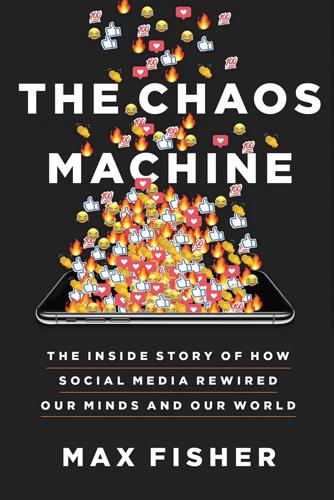
The Chaos Machine: The Inside Story of How Social Media Rewired Our Minds and Our World
by
Max Fisher
Published 5 Sep 2022
No one in her immediate circle had children, so she had joined online groups for new parents, looking for counsel on sleep training or teething. But the other users, though mostly friendly, she said, occasionally slipped into “flame wars” that were thousands of posts long, and all over a topic she’d rarely encountered off-line: vaccinations. It was 2014, and DiResta had only recently arrived in Silicon Valley, there to scout startups for an investment firm. She was still an analyst at heart, from her years both on Wall Street and, before that, at an intelligence agency she hints was the CIA. To keep her mind agile, she filled her downtime with elaborate research projects, the way others might do a crossword in bed.
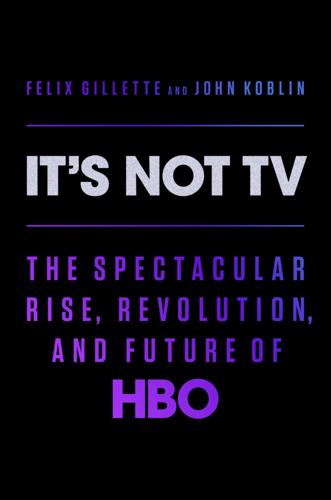
It's Not TV: The Spectacular Rise, Revolution, and Future of HBO
by
Felix Gillette
and
John Koblin
Published 1 Nov 2022
GO TO NOTE REFERENCE IN TEXT Just a few weeks later: Charlie Campbell, “HBO Go Crashes During Game of Thrones Season 4 Premiere,” Time, April 7, 2014. GO TO NOTE REFERENCE IN TEXT When asked by: Diane Brady, “Time Warner Makes Strides in Digital Media,” Bloomberg Businessweek, February 14, 2013. GO TO NOTE REFERENCE IN TEXT drew inspiration for the series: “ ‘Silicon Valley’ Asks: Is Your Startup Really Making the World Better?” Mike Judge interview by Dave Davies, Fresh Air, NPR, April 17, 2014. GO TO NOTE REFERENCE IN TEXT Judge reworked the humor: Lacey Rose, “ ‘Silicon Valley,’ Confronts a Darker Side of Tech Culture,” Hollywood Reporter, March 17, 2018.

Digital Empires: The Global Battle to Regulate Technology
by
Anu Bradford
Published 25 Sep 2023
A thriving venture capital (VC) industry, characterized by risk-seeking investors pursuing rare but, when successful, astronomical awards, have fueled these companies’ innovations.2 These VC investors, enthralled by audacious innovations and “lust for riches,” have channeled both capital and talented employees into countless tech startups, incubating a fertile tech industry and establishing California’s—and in particular Silicon Valley’s—preeminence in the global digital economy.3 Silicon Valley’s tech companies have benefited from unparalleled access to engineering talent, in no small part thanks to their proximity to the thriving research cluster built around Stanford University.4 Stanford has invested heavily in science and engineering research, and cultivated close contacts with the technology industry, including by building a large research park around its campus. Stanford itself has benefited from extensive federal research grants and military contracts, further amplifying its scale advantages. However, the techno-libertarian thinking that has emanated from California has not been shaped by the Silicon Valley engineers, the startup founders, the venture capitalists, or Stanford University alone. Instead, it stems from diverse communities knit together by their shared optimism about technology. Richard Barbrook and Andy Cameron have described the ethos behind the rise of the American internet economy as a reflection of a distinct “Californian ideology,” in that it combines the “freewheeling spirit of the hippies” and the “entrepreneurial zeal of the yuppies.”5 These different West Coast communities—writers, artists, hackers, community media activists, and capitalists—shared a profound faith in the “emancipatory potential” embedded in information technologies.6 Given its diverse foundation, the American market-driven model thus extends beyond traditional neoliberal thinking.
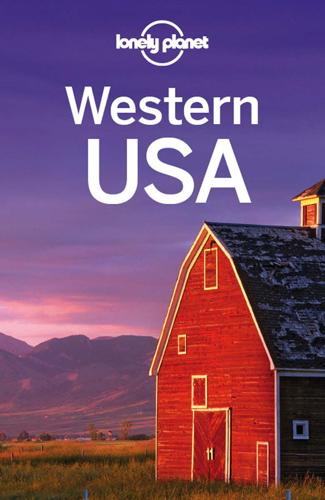
Western USA
by
Lonely Planet
GEEKING OUT When California’s Silicon Valley introduced the first personal computer in 1968, advertisements breathlessly gushed that Hewlett-Packard’s ‘light’ (40lb) machine could ‘take on roots of a fifth-degree polynomial, Bessel functions, elliptic integrals and regression analysis’ – all for just $4900 (about $29,000 today). Hoping to bring computer power to the people, 21-year-old Steve Jobs and Steve Wozniak introduced the Apple II at the 1977 West Coast Computer Faire with unfathomable memory (4KB of RAM) and microprocessor speed (1MHz). By the mid-1990s, an entire dot-com industry boomed in Silicon Valley with online start-ups, and suddenly people were getting their mail, news, politics, pet food and, yes, sex online. But when dot-com profits weren’t forthcoming, venture funding dried up, and fortunes in stock-options disappeared on one nasty Nasdaq-plummeting day: March 10, 2000. Overnight, 26-year-old vice-presidents and Bay Area service-sector employees alike found themselves jobless.
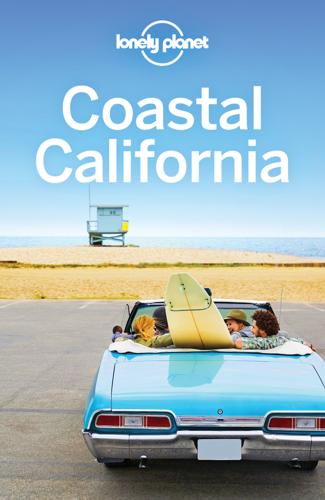
Coastal California Travel Guide
by
Lonely Planet
Hoping to bring computer power to the people, 21-year-old Steve Jobs and Steve Wozniak introduced the Apple II at the 1977 West Coast Computer Faire. Still, the question remained: what would ordinary people do with all that computing power? By the mid-1990s an entire dot-com industry boomed in Silicon Valley with online start-ups, and suddenly people were getting everything – their mail, news, politics, pet food and, yes, sex – online. But when dot-com profits weren’t forthcoming, venture-capital funding dried up and fortunes in stock options disappeared when the dot-com bubble burst and the Nasdaq Stock Market plummeted on March 10, 2000.

Northern California Travel Guide
by
Lonely Planet
Hoping to bring computer power to the people, Steve Jobs and Steve Wozniak, both in their 20s at the time, introduced the Apple II at the 1977 West Coast Computer Faire, with unfathomable memory (4KB of RAM) and microprocessor speed (1MHz). Still, the question remained: what would ordinary people do with all that computing power? By the mid-1990s an entire dot-com industry boomed in Silicon Valley with online start-ups, and suddenly people were getting everything – their mail, news, politics, pet food and, yes, sex – online. But when dot-com profits weren’t forthcoming, venture-capital funding dried up and fortunes in stock-options disappeared when the dot-com bubble burst and the Nasdaq plummeted on March 10, 2000.